Birds of Japan spotting and photographing wildlife Animal species across Japan, plus others. To date, over 600 bird species have been spotted and recorded in Japan. I update this page periodically when not in the field birding in Japan's wild nature, so please check back now and again to find new species listed. Thank you for visiting Happy Birding from Blain in Japan
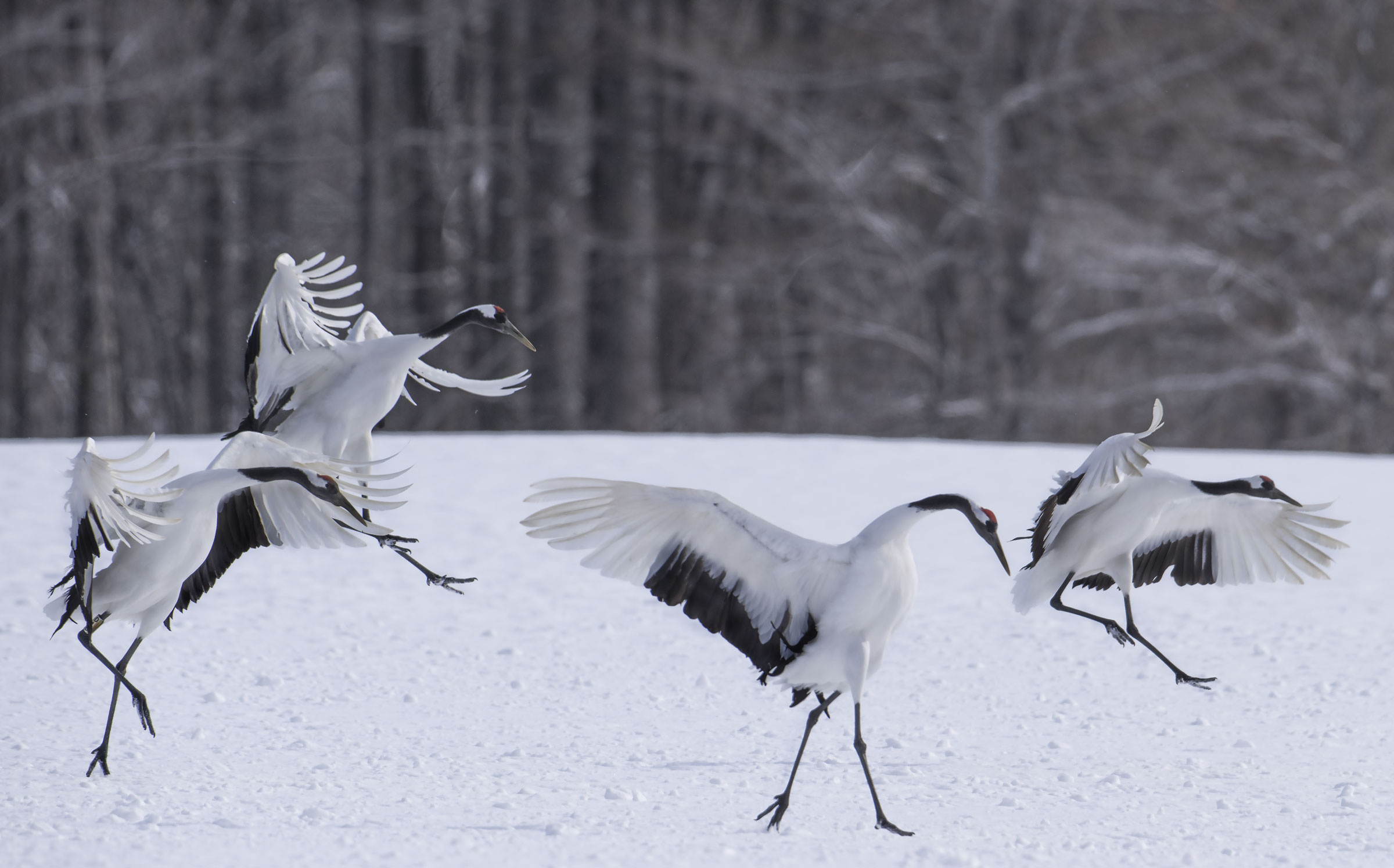 The Red-Crowned Crane (Grus japonensis) Tancho as it is known in Japanese, stands at 150 to158 cm (4ft to 5 ft) tall weighing 8 to 11 kg (17 to 25) pounds with a large wingspan measuring 200 to 260 cm (6.5 ft to 8.5 ft) and live more than 60 years, wow imagine their size and watching the ballet! The population is less than 3,000 birds worldwide, but over 1/3 of the entire Red-crowned Crane population is native to Hokkaido. I photographed these Red-Crowned Cranes in 2019 while leading my annual Hokkaido photography tour. Wikipedia
The Red-Crowned Crane (Grus japonensis) Tancho as it is known in Japanese, stands at 150 to158 cm (4ft to 5 ft) tall weighing 8 to 11 kg (17 to 25) pounds with a large wingspan measuring 200 to 260 cm (6.5 ft to 8.5 ft) and live more than 60 years, wow imagine their size and watching the ballet! The population is less than 3,000 birds worldwide, but over 1/3 of the entire Red-crowned Crane population is native to Hokkaido. I photographed these Red-Crowned Cranes in 2019 while leading my annual Hokkaido photography tour. Wikipedia
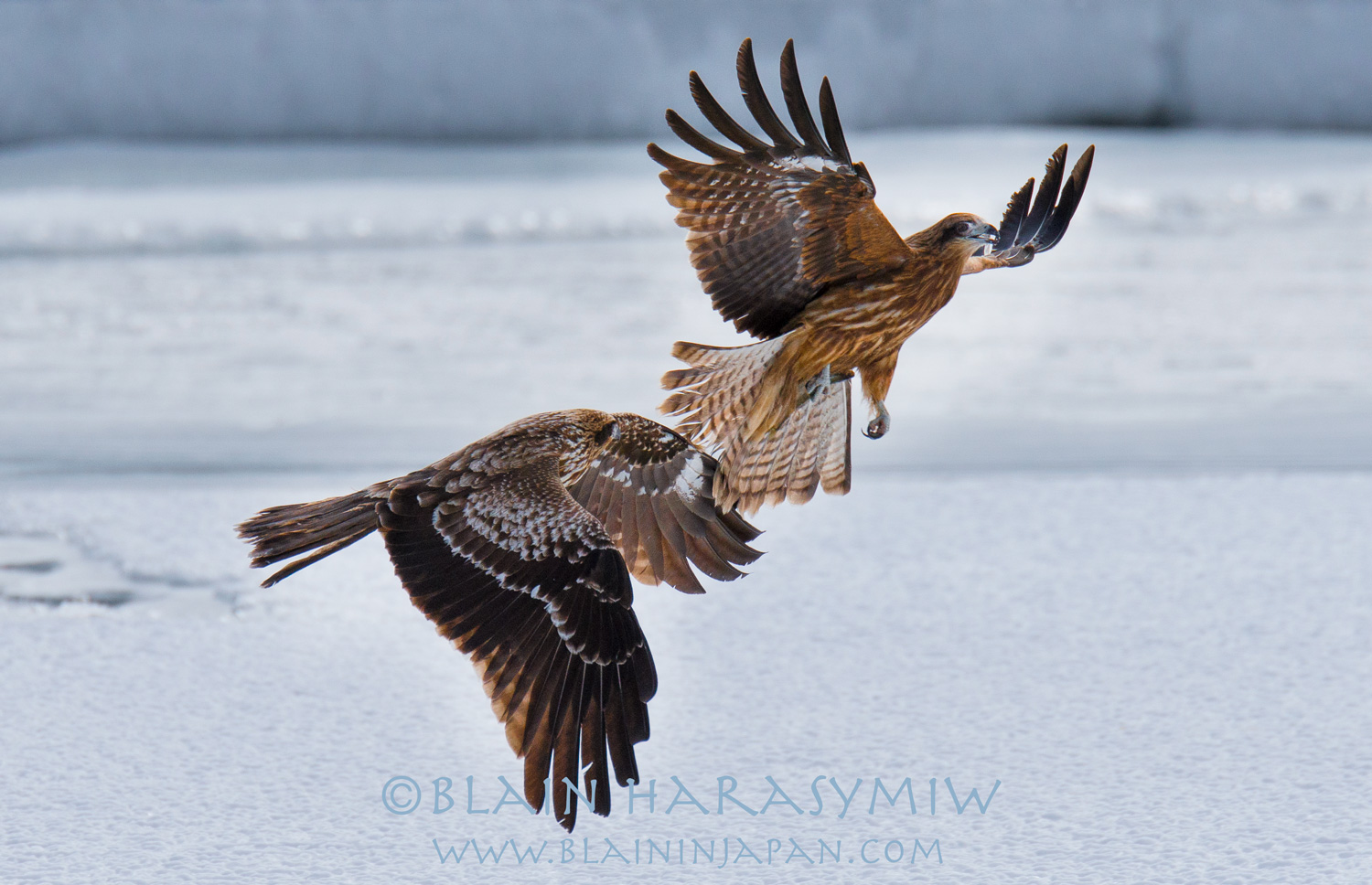 The black kite is a medium-sized bird of prey in the family Accipitridae, which also includes many other diurnal raptors. The black kite is said to be the most abundant species of Accipitridae and can be easily found throughout Japan. Currently, the global population is about 6 million. Black kites are opportunist hunters and a little more like scavengers; they spend much of their time soaring and gliding in search of food. I photographed these two beautiful black kites with sticking colors and unique markings while leading my annual Hokkaido photo tour 2018.Wikipedia
The black kite is a medium-sized bird of prey in the family Accipitridae, which also includes many other diurnal raptors. The black kite is said to be the most abundant species of Accipitridae and can be easily found throughout Japan. Currently, the global population is about 6 million. Black kites are opportunist hunters and a little more like scavengers; they spend much of their time soaring and gliding in search of food. I photographed these two beautiful black kites with sticking colors and unique markings while leading my annual Hokkaido photo tour 2018.Wikipedia
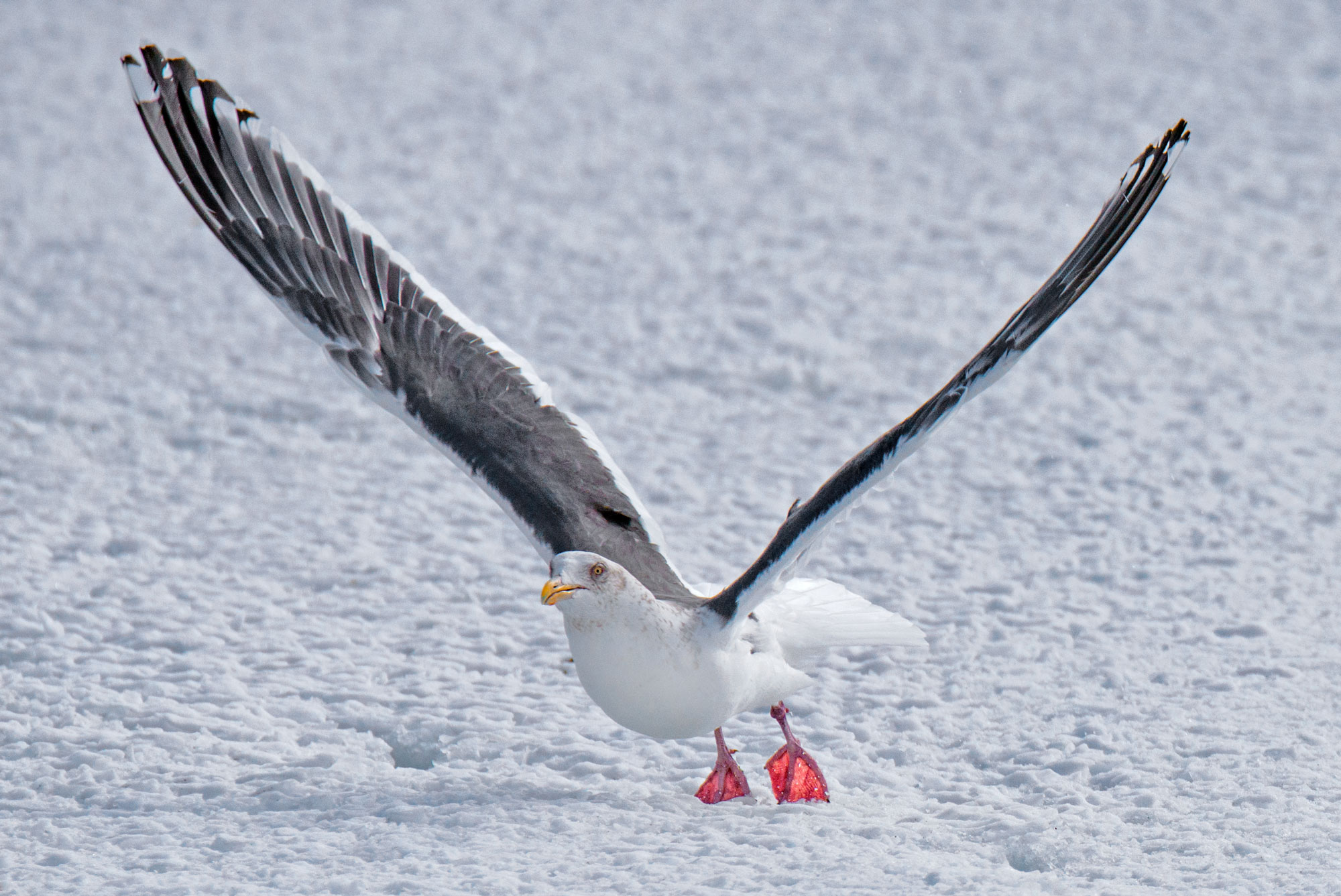 The glaucous gull (Larus hyperboreus) is the second largest gull in the world which breeds in Arctic regions of the Northern Hemisphere and winters South. This dominant gull is usually very pale in all plumages, and mostly with no black on either of the wings or the tail. Blain Photographed this Glaucous Gull while leading a Winter Hokkaido Photography Tour group of international birders.
The glaucous gull (Larus hyperboreus) is the second largest gull in the world which breeds in Arctic regions of the Northern Hemisphere and winters South. This dominant gull is usually very pale in all plumages, and mostly with no black on either of the wings or the tail. Blain Photographed this Glaucous Gull while leading a Winter Hokkaido Photography Tour group of international birders.
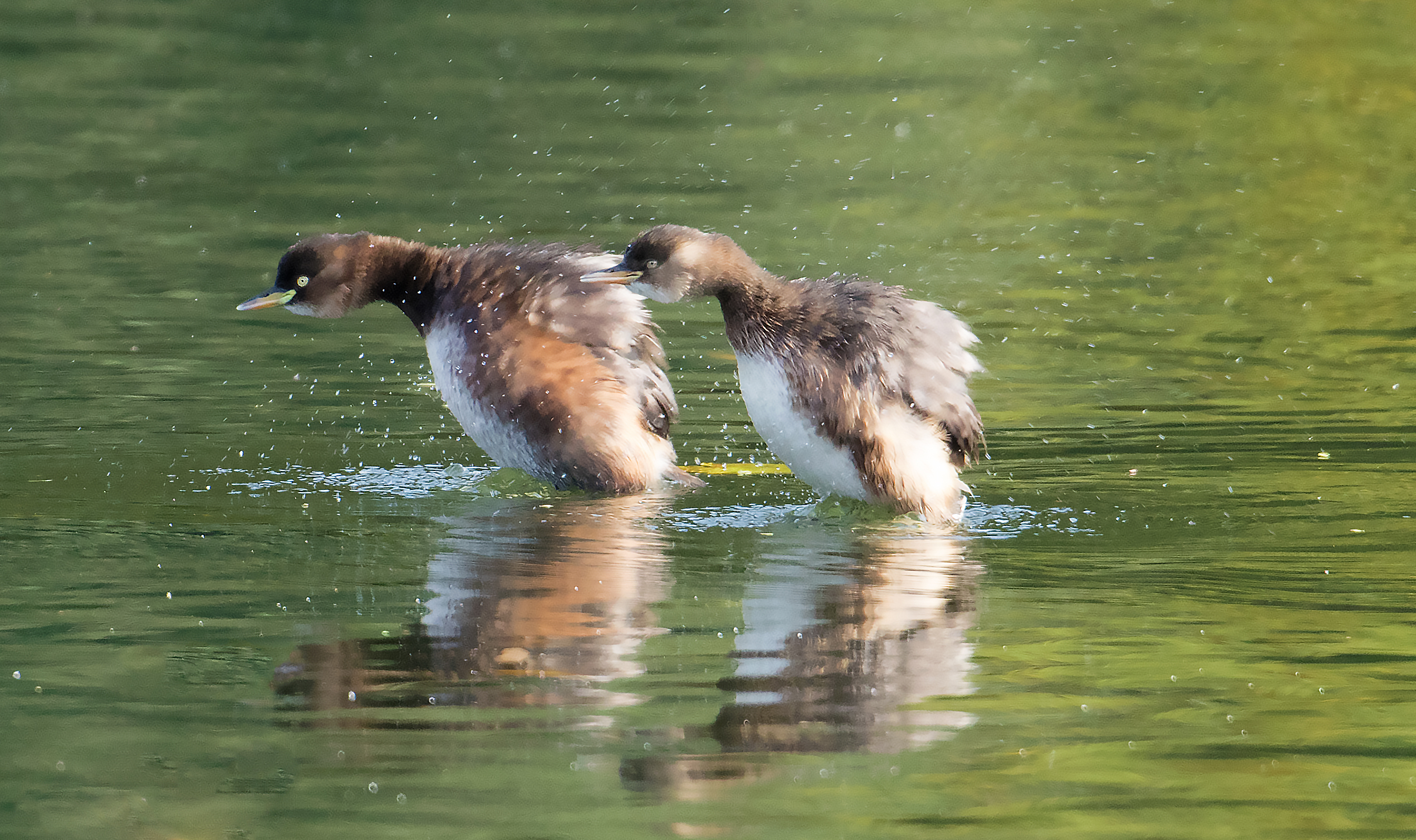 Little grebes ( Tachybaptus ruficollis) also known as dabchicks, are quite small and rather dumpy birds with blunt rear ends. They are dark brown, with a chestnut-brown throat and face. This chestnut color becomes richer and more shiny during the breeding season. Blain photographed this pair of little grebes during his annual autumn in Japan photography tour. The Japan Times
Little grebes ( Tachybaptus ruficollis) also known as dabchicks, are quite small and rather dumpy birds with blunt rear ends. They are dark brown, with a chestnut-brown throat and face. This chestnut color becomes richer and more shiny during the breeding season. Blain photographed this pair of little grebes during his annual autumn in Japan photography tour. The Japan Times
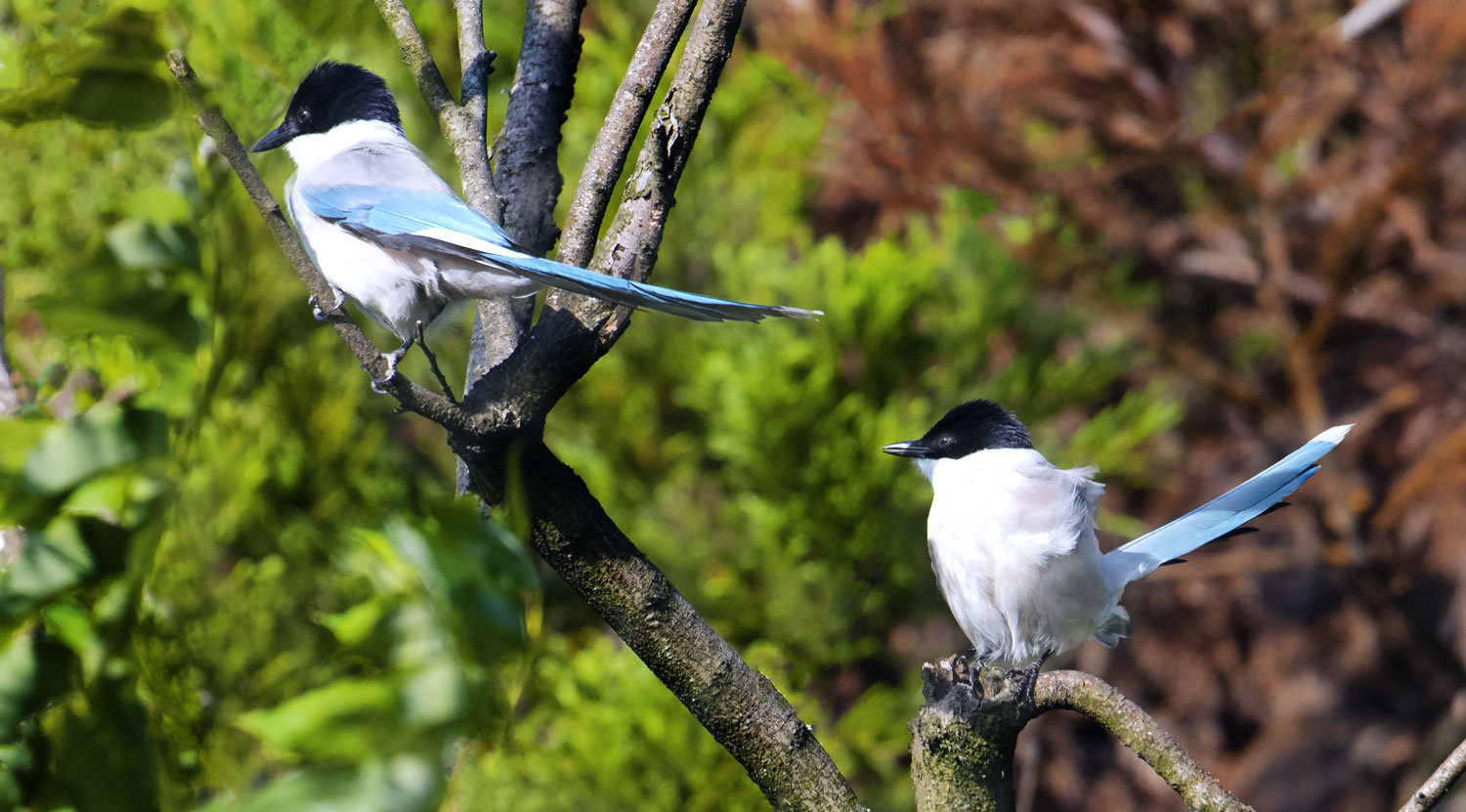 Onaga in English Azure-winged magpie (Cyanopica cyana) are from the Corvid family. And they are related to crows and jackdaws, but the Azure magpies are more elegant with beautiful light blue long tails and wings, raspy back, white throats, and black caps. They average 31- 36 cm long; the Japanese name Onaga means "long tail." These birds whistle and trill when in groups fired fast with a distinctive-sounding kwink-kwink-kwink followed by a single krarrah. They occur in large numbers in Japan and eastern Asia. These two I photographed in my backyard in Niigata in winter, but I also have, photographed them while leading a Hokkaido photo tour; I have seen them in flocks of up to 30, and some of my fellow birds have seen them in flocks of up to 80 in Japan. Wikipedia
Onaga in English Azure-winged magpie (Cyanopica cyana) are from the Corvid family. And they are related to crows and jackdaws, but the Azure magpies are more elegant with beautiful light blue long tails and wings, raspy back, white throats, and black caps. They average 31- 36 cm long; the Japanese name Onaga means "long tail." These birds whistle and trill when in groups fired fast with a distinctive-sounding kwink-kwink-kwink followed by a single krarrah. They occur in large numbers in Japan and eastern Asia. These two I photographed in my backyard in Niigata in winter, but I also have, photographed them while leading a Hokkaido photo tour; I have seen them in flocks of up to 30, and some of my fellow birds have seen them in flocks of up to 80 in Japan. Wikipedia
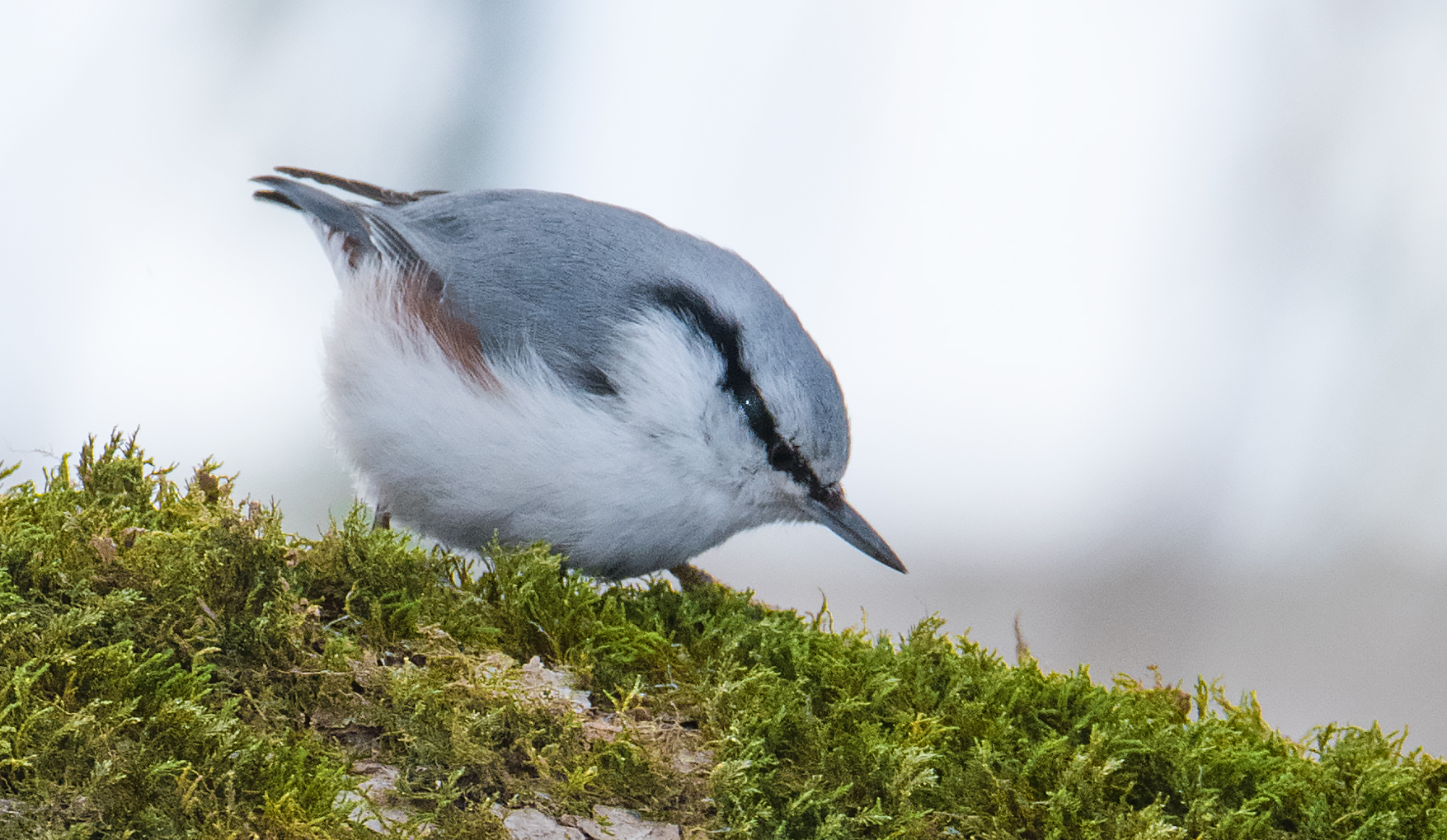 The Eurasian nuthatch (Sitta europaea) or wood nuthatch is a small passerine bird found throughout temperate Asia and in Europe, where its name is the nuthatch. Blain Harasymiw photographed this nuthatch while leading a Hokkaido wildlife winter photography tour workshop in northern Japan. Wikipedia
The Eurasian nuthatch (Sitta europaea) or wood nuthatch is a small passerine bird found throughout temperate Asia and in Europe, where its name is the nuthatch. Blain Harasymiw photographed this nuthatch while leading a Hokkaido wildlife winter photography tour workshop in northern Japan. Wikipedia
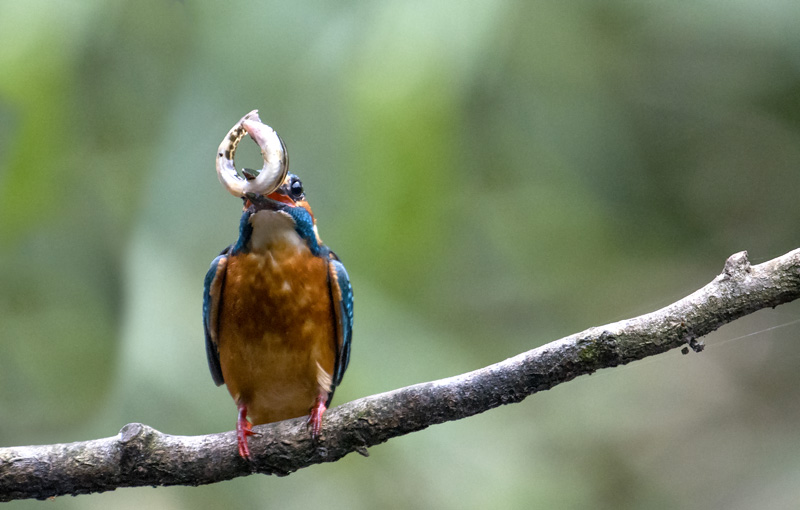
Kingfishers or Alcedinidae are a family of small to medium-sized, brightly colored birds in the order Coraciiformes. They have a cosmopolitan distribution, with most species found outside the Americas. This kingfisher Blain photographed while leading a Japan birding photography workshop tour in the Kanazawa region. Wikipedia
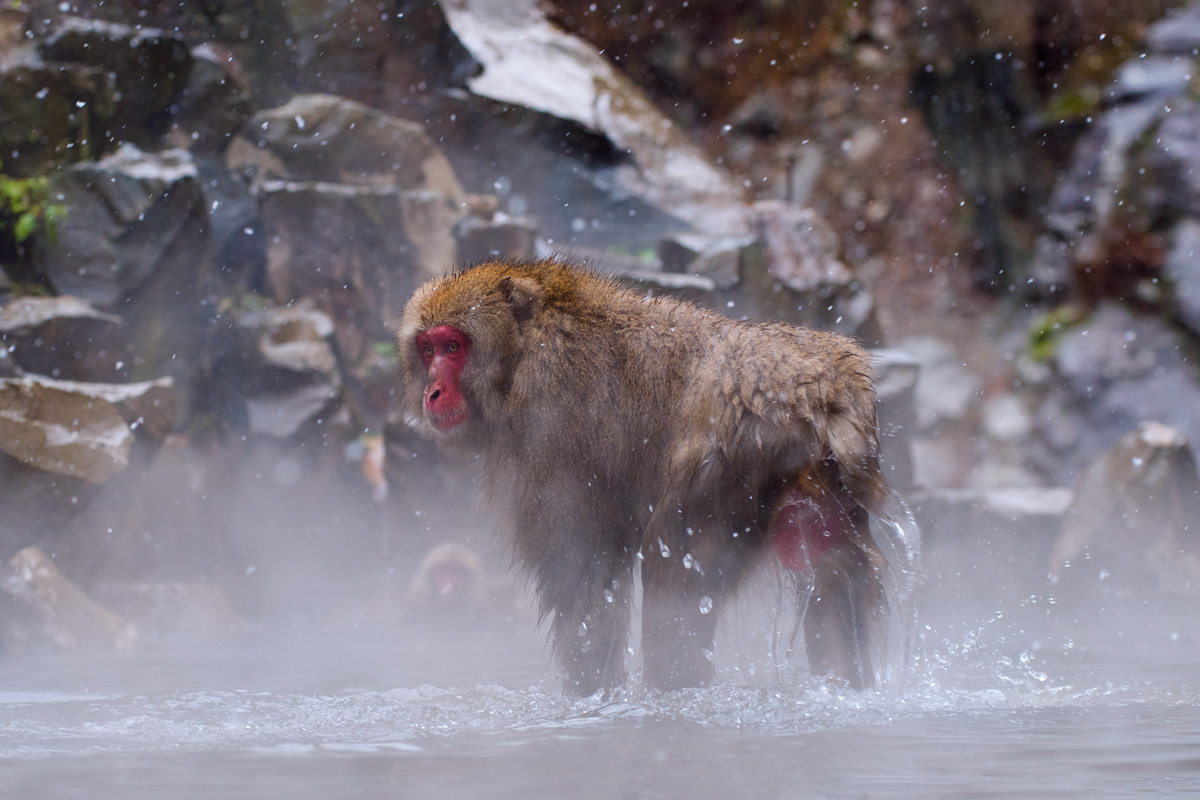 The Japanese macaque (Macaca fuscata) also known as the snow monkey, is a terrestrial Old World monkey species that is native to Japan. Blain in Japan photographed this Alpha male while leading his annual Hokkaido photo tour, including the snow monkeys, Mt Fuji and Matsumoto Castle. Wikipedia
The Japanese macaque (Macaca fuscata) also known as the snow monkey, is a terrestrial Old World monkey species that is native to Japan. Blain in Japan photographed this Alpha male while leading his annual Hokkaido photo tour, including the snow monkeys, Mt Fuji and Matsumoto Castle. Wikipedia
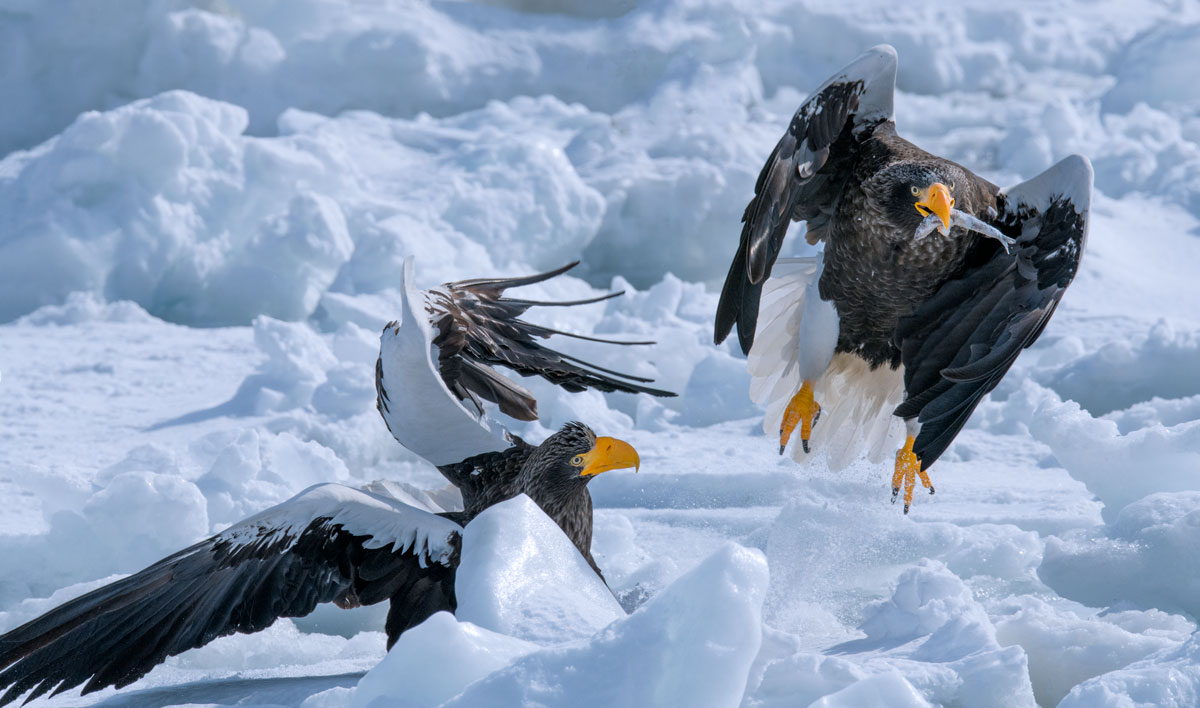 The Steller's sea eagle ( Haliaeetus pelagicus) is a large diurnal bird of prey in the family Accipitridae. It was originally described by Peter Simon Pallas in 1811. No subspecies are recognised. The Steller’ sea eagle is the champion of Raptors, glacial relics that have survived several ice ages. Somehow they seem immune to the passage of time. They are such extremely rare and formidable birds of prey that they have been around since the day of the dinosaurs, representing near evolutionary perfection, and with its deep piercing voice ra-ra-ra-raurau, those who have been in their presence “in the wild” have heard the echoes of the Steller’s dinosaur legacy. Their plumage is blackish brown-black all over except on the shoulders, rump, tail, thighs, and forehead, which are white. Their HUGE, hooked bill is yellow; when they feed, they do it with raw power. These Eagles are huge, on average, the heaviest raptor on our planet, weighing up to and over 10 kg (22 pounds). They are also tall, measuring up to 94 cm (3 ft) sometimes even taller, with a huge wingspan of up to 250 cm (8 - 9 ft). I have personally photographed a Steller’s Sea Eagle I swear had a wingspan eclipsing 10 ft that I witnessed from my chartered helicopter while I was on assignment capturing landscape shots between Hokkaido and Russia. But sorry the raptor would not stop for me to get out my measuring tape. Namaste, Blain in Japan
The Steller's sea eagle ( Haliaeetus pelagicus) is a large diurnal bird of prey in the family Accipitridae. It was originally described by Peter Simon Pallas in 1811. No subspecies are recognised. The Steller’ sea eagle is the champion of Raptors, glacial relics that have survived several ice ages. Somehow they seem immune to the passage of time. They are such extremely rare and formidable birds of prey that they have been around since the day of the dinosaurs, representing near evolutionary perfection, and with its deep piercing voice ra-ra-ra-raurau, those who have been in their presence “in the wild” have heard the echoes of the Steller’s dinosaur legacy. Their plumage is blackish brown-black all over except on the shoulders, rump, tail, thighs, and forehead, which are white. Their HUGE, hooked bill is yellow; when they feed, they do it with raw power. These Eagles are huge, on average, the heaviest raptor on our planet, weighing up to and over 10 kg (22 pounds). They are also tall, measuring up to 94 cm (3 ft) sometimes even taller, with a huge wingspan of up to 250 cm (8 - 9 ft). I have personally photographed a Steller’s Sea Eagle I swear had a wingspan eclipsing 10 ft that I witnessed from my chartered helicopter while I was on assignment capturing landscape shots between Hokkaido and Russia. But sorry the raptor would not stop for me to get out my measuring tape. Namaste, Blain in Japan
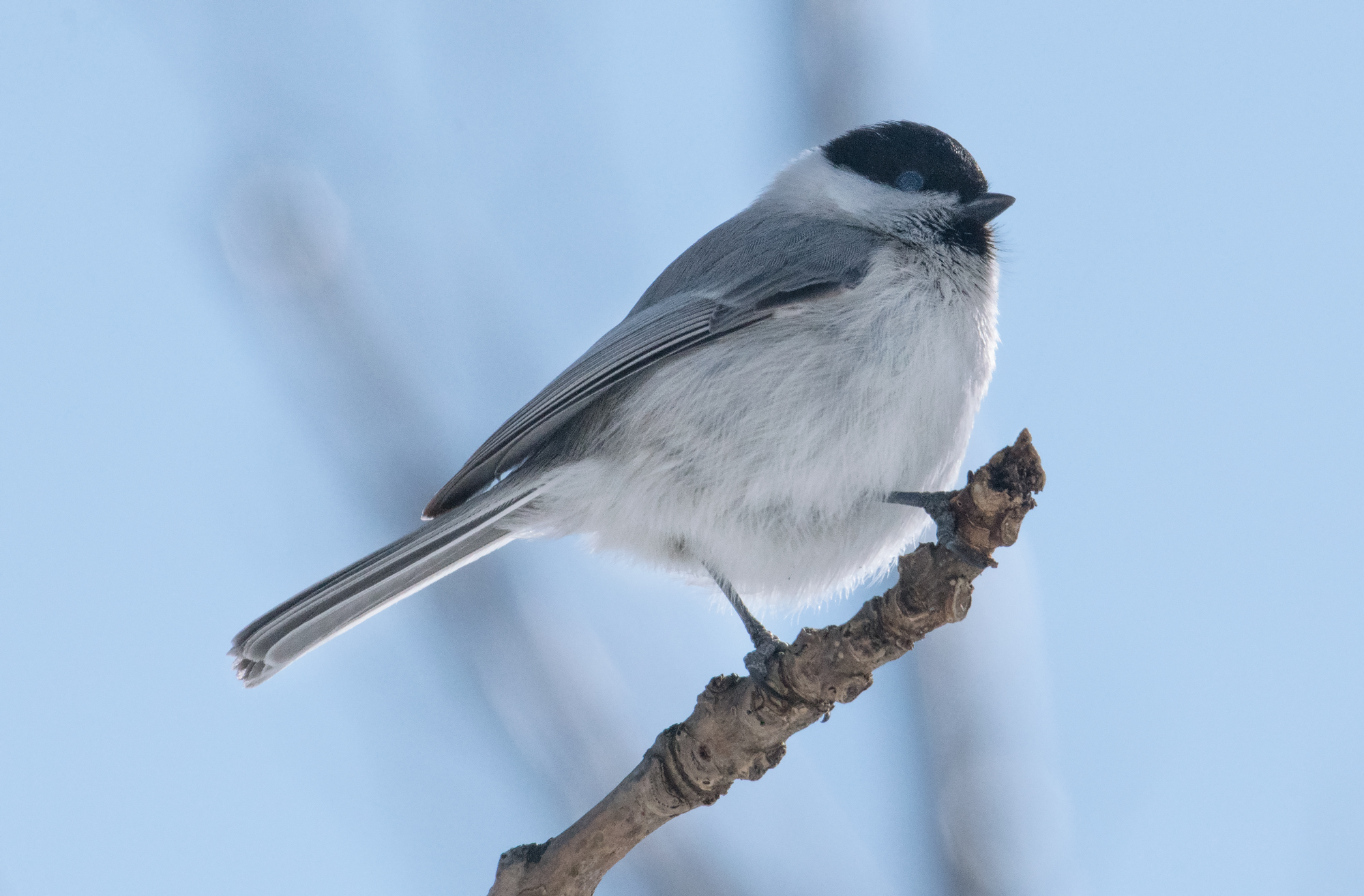
The Willow or March Tit Poecile (montanus or palustris) is often confused with the black-capped chickadee (Poecile atricapillus) or the Japanese tit (Parus Minor) and is also known as the Oriental tit. These birds are passerine birds of Japan and the far East of Russia. Until a few years ago, they were classified as a subspecies of the great tit (Paris Major), but studies have shown that the species coexist in Japan and the Russian Far East without intermingling or frequent hybridization. In my twenty-plus years photographing them in Hokkaido, Japan, I still sometimes refer to them as Black-capped Chickadees as they are similar to the North American species and are difficult to tell apart for the newbie birder, and can sometimes give the veteran birding pause to identify. I photographed this Willow Tit while leading my annual Hokkaido birding photo tour.
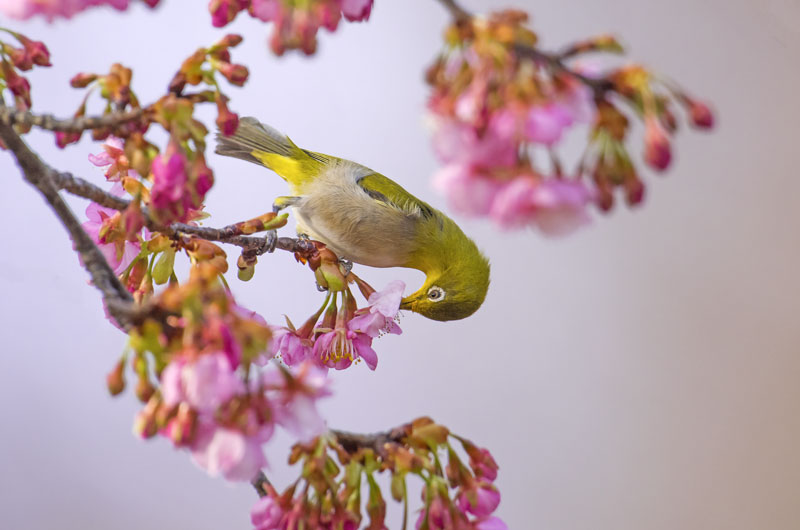
The Mejiro or Japanese White-Eye also, known as the warbling white-eye (Zosterops japonicus) is a very small and super fast passerine bird. Often the specific epithet is written japonica, but this is incorrect due to their species range and being native to Japan, East Asia, Russia, Indonesia, Korea, and the Philippines. They have also been introduced International as pest control with mixed results. When I took this shot of this Mejiro sucking the sweet nectar of the Kawazu Sakura Cherry Blossom that blooms in mid to late February, I had just returned from Hokkaido via Tokyo in the morning from my annual Hokkaido photo tour, and by noon I took the shot, I brought along all my Hokkaido photo tour participants to enjoy a rare opportunity to photograph Japans earliest blooming cherry blossom and the Mejiro, they certainly are a beautiful combination. The participants were genuinely amazed; not only did they get to photograph the Steller’s sea eagle, the red-crowned cranes, and other wildlife, they met the Ainu photograph minimalist winter scenes, enjoyed hot springs and Japans wild frontier. Just a few hours south, they got to enjoy cherry blossoms that most only dream of and believe they bloom in early spring March - April. Wikipedia
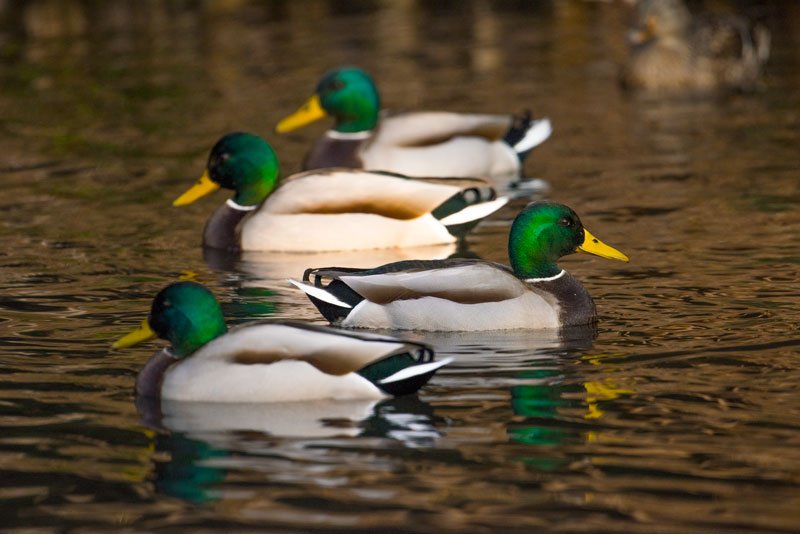
The mallard or wild duck ( Anas platyrhynchos) is a freshwater duck which usually feeds in shallow water by dabbling and upending. They Breed throughout the temperate and subtropical Asia Pacific regions of Japan, Eurasia, Americas, and North Africa and has been introduced to various other regions. The male drake ducks have a glossy green head and grey on the wings and belly. Both sexes have white bordered black, or iridescent blue feathers called a speculum on their wings. Blain Harasymiw photographed these mallard ducks while leading a Japan Guided Tour in Tokyo, Japan.
 The White-Tailed Eagle (Haliaeetus albicilla) is also known as the white-tailed sea eagle, gray eagle, Eurasian sea eagle, which is one of the giant birds of prey in the family Accipitridae which includes other raptors such as hawks, kites, and harriers. The White-Tailed can be photographed all year round in Hokkaido, Japan. During harsh winters in Hokkaido, they co-exist with their bigger cousin The Steller’s Sea Eagle, and they can often be photographed in severe aerial combat or on a land fights, sometimes it's 2or 3 stellers against one white-tailed eagle, fish and food is why they fight, when there is no food shortage, they sit side by side in relative peace. These beautiful majestic raptors are known as the fourth largest eagle in the world; they are the only species known to be more massive in bulk then the Steller’s Sea Eagle, the Harpy Eagle, and the Philippine Eagle. These eagles measure from 65-95cm in length with a wingspan of 170cm to 260cm or about 5ft 5 to 8ft 5 inches. It is said this raptor has the largest wingspan of any living eagle. The male and female are similar in coloring and appearance, the accurate way to tell them apart is by tarsus width and depth and bill depth, but this is next to impossible unless they are captive or captured then released with tracking devices on their legs. I usually tell them apart by their size in which females are generally about 30% heavier and about 15% greater in linear dimensions. I photographed this White Tailed Eagle while leading my annual Hokkaido Birding Tour Wikipedia
The White-Tailed Eagle (Haliaeetus albicilla) is also known as the white-tailed sea eagle, gray eagle, Eurasian sea eagle, which is one of the giant birds of prey in the family Accipitridae which includes other raptors such as hawks, kites, and harriers. The White-Tailed can be photographed all year round in Hokkaido, Japan. During harsh winters in Hokkaido, they co-exist with their bigger cousin The Steller’s Sea Eagle, and they can often be photographed in severe aerial combat or on a land fights, sometimes it's 2or 3 stellers against one white-tailed eagle, fish and food is why they fight, when there is no food shortage, they sit side by side in relative peace. These beautiful majestic raptors are known as the fourth largest eagle in the world; they are the only species known to be more massive in bulk then the Steller’s Sea Eagle, the Harpy Eagle, and the Philippine Eagle. These eagles measure from 65-95cm in length with a wingspan of 170cm to 260cm or about 5ft 5 to 8ft 5 inches. It is said this raptor has the largest wingspan of any living eagle. The male and female are similar in coloring and appearance, the accurate way to tell them apart is by tarsus width and depth and bill depth, but this is next to impossible unless they are captive or captured then released with tracking devices on their legs. I usually tell them apart by their size in which females are generally about 30% heavier and about 15% greater in linear dimensions. I photographed this White Tailed Eagle while leading my annual Hokkaido Birding Tour Wikipedia
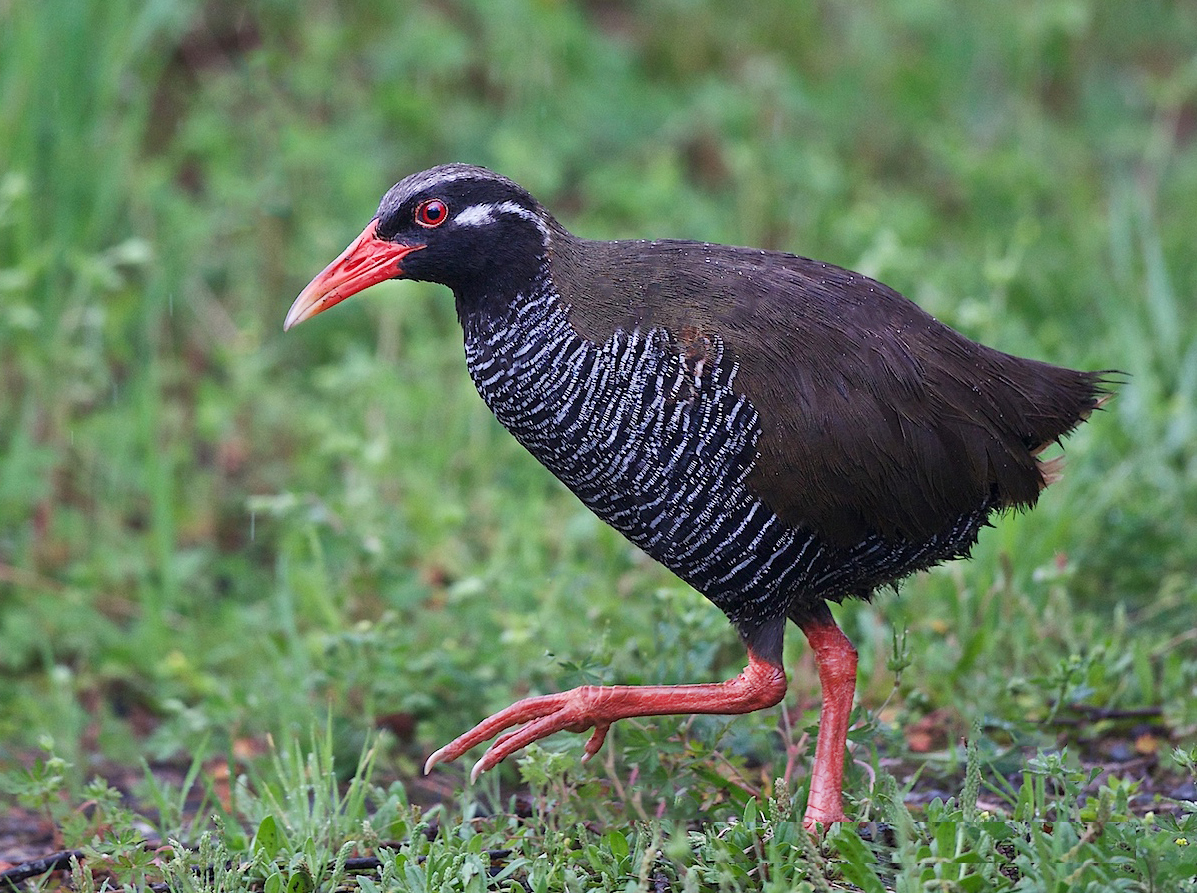 The Okinawa rail (Gallirallus Okinawae) belongs to the rail family, Rallidae. It is endemic to Okinawa Japan where it is known as the Yanaru Kuina, its existence was confirmed in 1978. It is a medium sized almost flightless rail with short wings and tail, olive and brown upperparts, black underparts with white bars and a red bill and legs. Blain photographs these rails while leading birding photo tours Okinawa Japan. Wikipedia
The Okinawa rail (Gallirallus Okinawae) belongs to the rail family, Rallidae. It is endemic to Okinawa Japan where it is known as the Yanaru Kuina, its existence was confirmed in 1978. It is a medium sized almost flightless rail with short wings and tail, olive and brown upperparts, black underparts with white bars and a red bill and legs. Blain photographs these rails while leading birding photo tours Okinawa Japan. Wikipedia
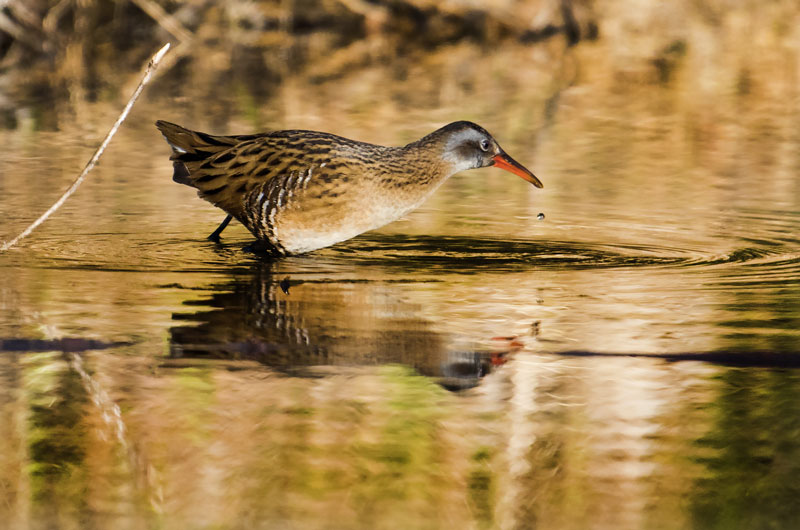
The brown-checked rail or eastern water rail (Rallus indicus) is a species of bird from the family Rallidae. They breed in Northern Japan, Korea, northeast China, and eastern Siberia; they winter over in southeast Asia and are common to spot during winter in Tokyo, Japan, and across southern Japan. They are mostly migratory. The eastern water rail is a small bird measuring 25 to 30 cm in length and weighing 70 to 190 grams. Their wingspan is 40 to 45 cm. Their body is well adapted for movement among reeds and ponds. The upperparts are brown, and the belly is blueish gray. There is black-brown barring on the flanks. The beak is long and reddish. The legs and toes are long, the tail is short, and the underside is a pale white. A broad brown eye stripe differentiates it from western water rail. Their call is a sharp "kyu" sound. They are omnivorous, feeding on small animals and plant matter. They breed from March to June, nesting on the ground in marches and streams in dense vegetation. I photographed this rail while leading my annual Japan Hokkaido birding tour. Wikipedia

The Ezo sika deer (Cervus Nippon yesoensis, in Japanese エゾシカ / 蝦夷鹿, in the first nations people language of Japan The Ainu “ユク yuk.” These deer are but one of the many subspecies of the sika deer. The sika deer that inhabit the island of Hokkaido are endemic, although it is not known whether they originated on Hokkaido or migrated from the main island of Japan. Hokkaido deer are the largest sika deer species, where stags can easily weigh over 440 pounds (200 kg,” they also have large antlers with lengths recorded well over 100 inches (254 cm). Annually, I lead international Japan touring photographers on my annual Hokkaido wildlife tour photo workshop, where we have dozens of up close and personal encounters with sika deer on Japan’s most northern island and where I have photographed the largest herd of Sika Deer on our planet on several occasions, numbering about a one thousand or more. Only a handful of photographers have ever photographed this large herd gathered in one location.
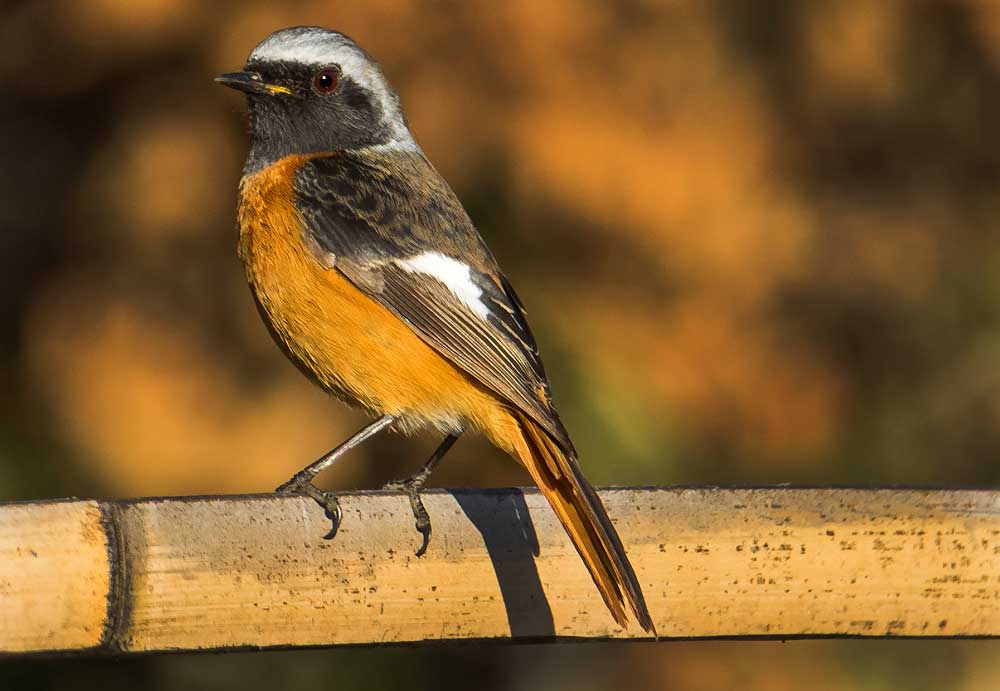
Daurian Redstart ( Phoenicurus auroreus) is a small passerine bird from temperate Asia. In Japan, it is known as Jobitaki. Breeding males have a grey crown and nape that is much lighter plus crown sides, face is black, flank belly chest are orange, tail is orange black. Male juveniles are similarly but duller in vibrance. Its length is 14 to 15 cm, and its weight is 11 to 20 g, females are of similar size. They were once classed as a member of the thrush family, but they are now known as an Old World Flycatcher (Muscicapidae). They are divided into two subspecies, the easter P.A. Auroreus and the western P.A. Leucopterus. The Redstart is close to the Eurasian clade, which also includes the black redstart (P. ochruros), Hodgson's redstart (P. hodgsoni), the white-winged redstart (P. erythrogastrus), which is believed to be closely related to P. auroreus, and the Ala Shan redstart (P. alaschanicus). They are migratory, and arrive in Japan earlier than other winter birds, usually they arrive in October. They generally leave Japan before cherry blossoms begin to flower, but they have been known to breed in Japan. A great deal of them breed in Far East Russia, and some in South China and the Korean Peninsula. They can also be found in Taiwan, Okinawa, and northeast India and various parts of Asia. Most small birds, songbirds form a flock every breeding season, but the Redstarts are solitary. They reason they do not form flocks is because of their eating habits, in autumn they generally feed on berries, but such Shrikes they feed on insects. Birds who feed on the abundance of seed, makes sense to form a flock which is advantageous for them to alert each other in case of danger. But for those birds who feed on insects and small animals, it is more advantageous to be solitary and avoid competing for food. The Durian Restart prefer open forests, forest edges and are commonly found in parks and gardens. They are not overly shy to humans, and are somewhat easy to spot and photograph. They breed in the summer, with a mated pair of the nominated subspecies. These birds are widespread and somewhat common, and not a threatened species according to the IUCN. I photographed this male Durian Restart while leading a Japan private birding photo tour during migration season on Sado Island in Japan.
Wikipedia
The Female The Daurian Redstart ( Phoenicurus auroreus) is a small passerine bird from temperate Asia. In Japan, it is known as Jobitaki. Females are light brown above and lighter below. They have an orange rump and tail sides, the sides of wing with patch is similar to males. The feet of males and females are both black. I took this image while leading my annual cross country cherry blossom photo tour Japan. - Japan Photography Birding Tour.
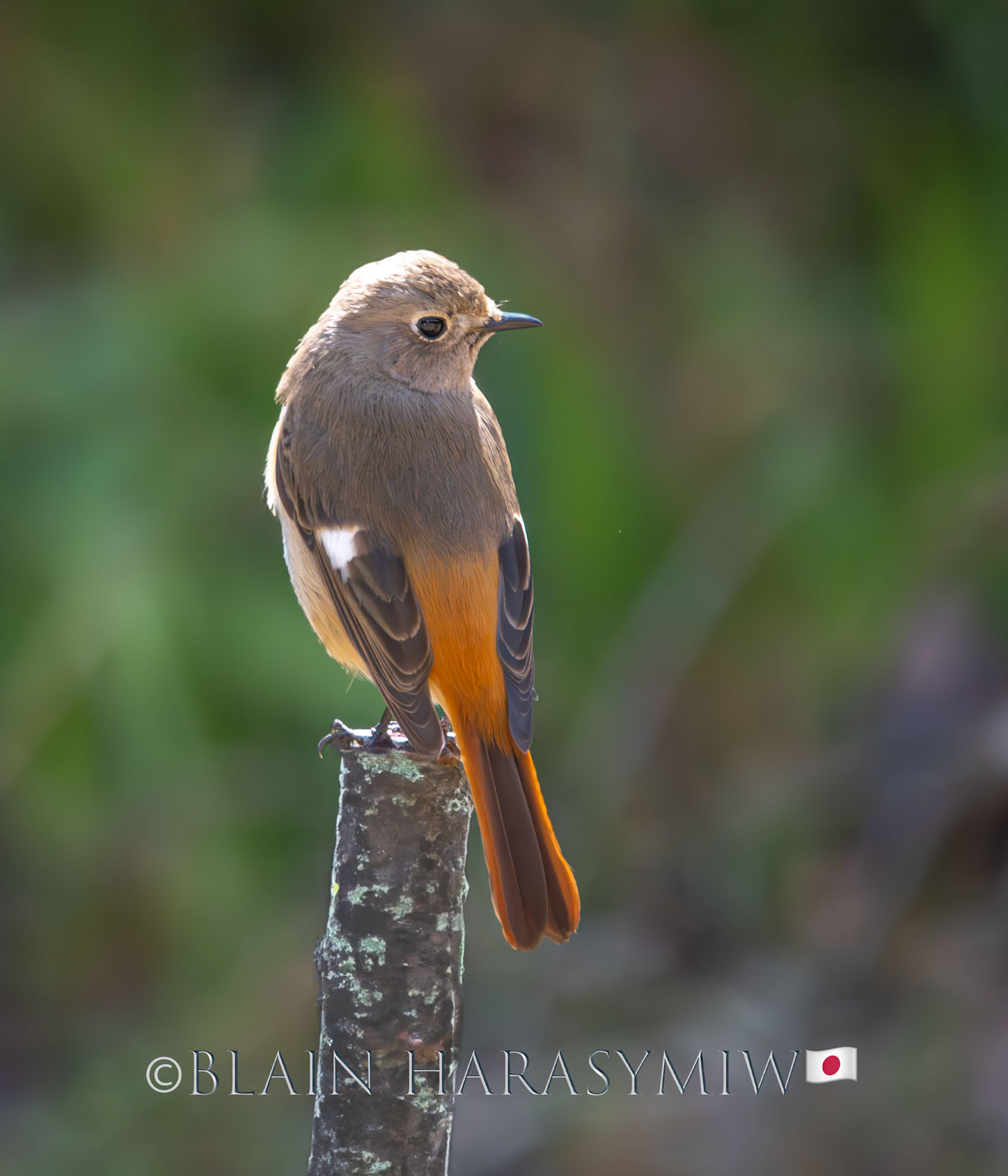
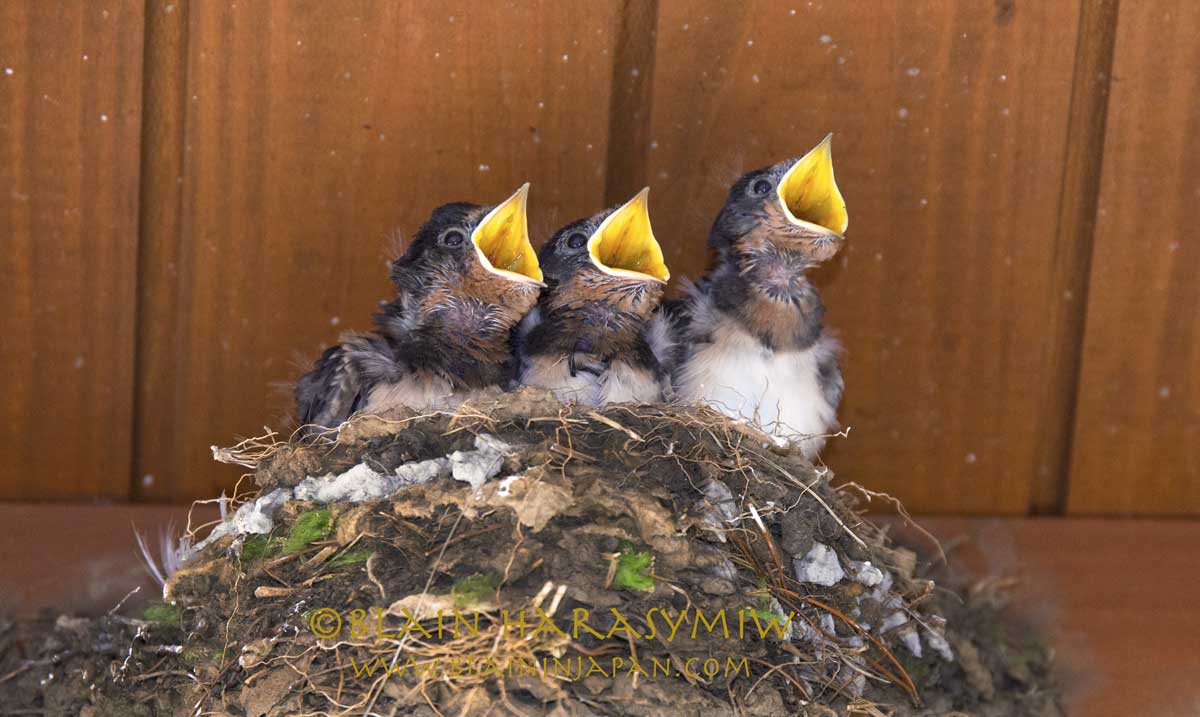 The swallows and martins, or Hirundinidae, are a family of passerine birds found around the world on all continents except Antarctica. Highly adapted to aerial feeding, they have a distinctive appearance. There are around 83 species in 19 genera, with the greatest diversity found in Africa, which is also thought to be where they evolved as hole-nesters. They also occur on a number of oceanic islands. A number of Japan's European and North American species are long-distance migrants; by contrast, the West and South African swallows are non-migratory. Blain photographed these three little swallows while leading a photography tour in Mt. Fuji Yamanashi, Japan. Wikipedia
The swallows and martins, or Hirundinidae, are a family of passerine birds found around the world on all continents except Antarctica. Highly adapted to aerial feeding, they have a distinctive appearance. There are around 83 species in 19 genera, with the greatest diversity found in Africa, which is also thought to be where they evolved as hole-nesters. They also occur on a number of oceanic islands. A number of Japan's European and North American species are long-distance migrants; by contrast, the West and South African swallows are non-migratory. Blain photographed these three little swallows while leading a photography tour in Mt. Fuji Yamanashi, Japan. Wikipedia
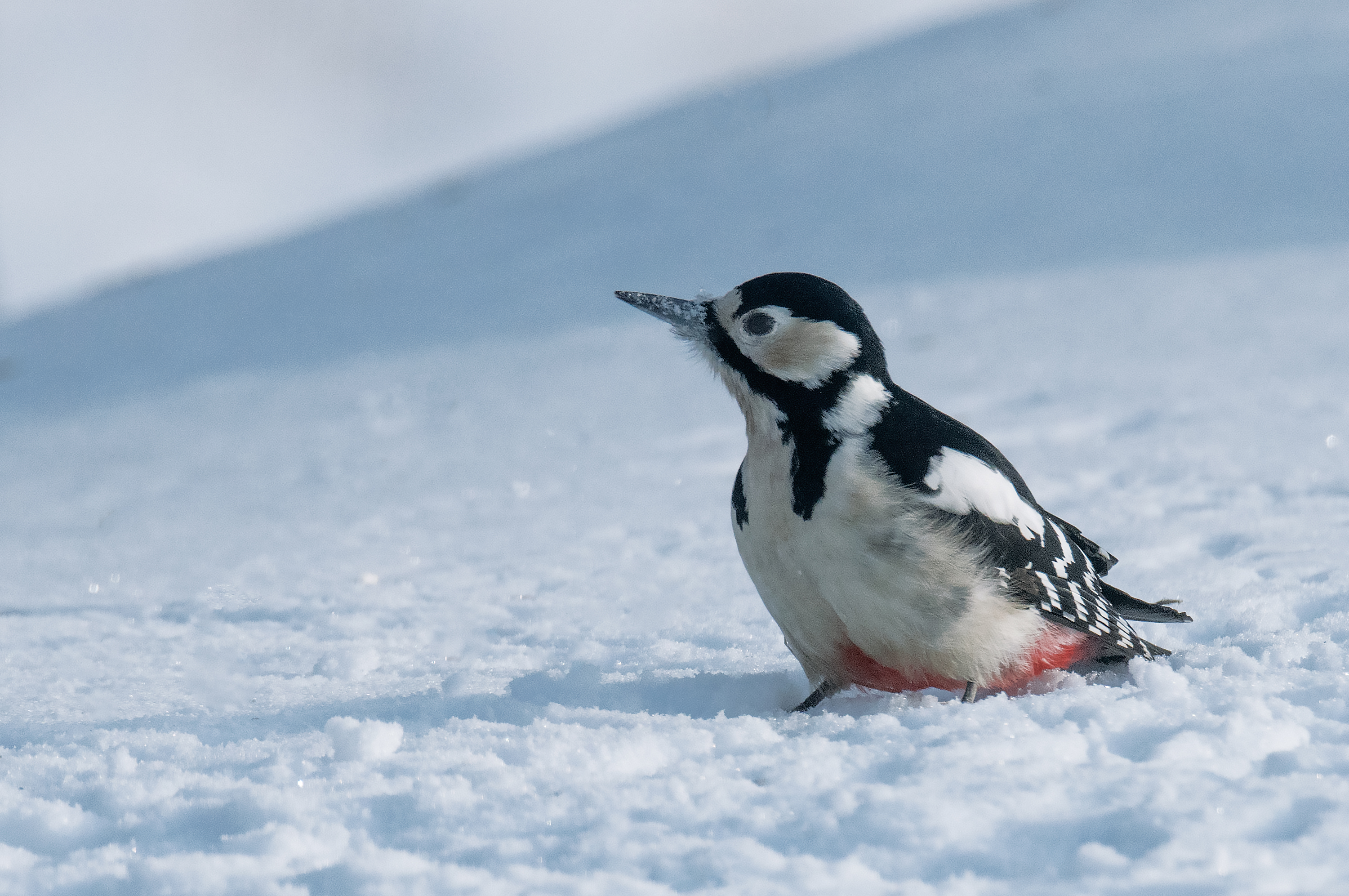 The great spotted woodpecker (Dendrocopos major) is a medium-sized woodpecker with pied black and white plumage and a red patch on the lower belly. This species is found across Eurasia and parts of North Africa. Photographed while leading a Hokkaido wildlife photo tour in northern Japan. Wikipedia
The great spotted woodpecker (Dendrocopos major) is a medium-sized woodpecker with pied black and white plumage and a red patch on the lower belly. This species is found across Eurasia and parts of North Africa. Photographed while leading a Hokkaido wildlife photo tour in northern Japan. Wikipedia
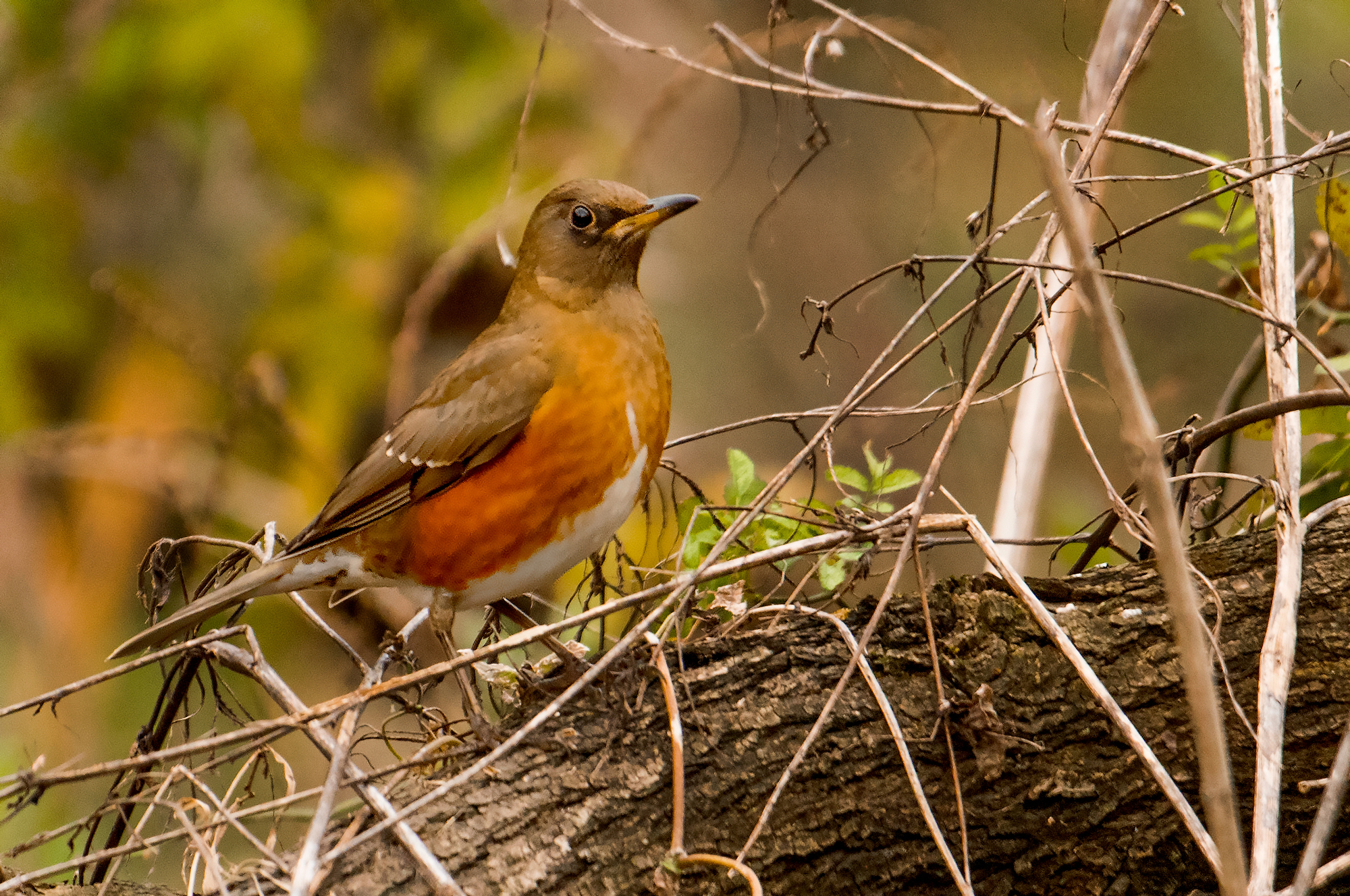 The brown-headed thrush (Turdus chrysolaus) sometimes known as the brown thrush, is a species of bird in the family Turdidae. Image taken while I was leading a birding photo tour Kyoto Japan. Wikipedia
The brown-headed thrush (Turdus chrysolaus) sometimes known as the brown thrush, is a species of bird in the family Turdidae. Image taken while I was leading a birding photo tour Kyoto Japan. Wikipedia
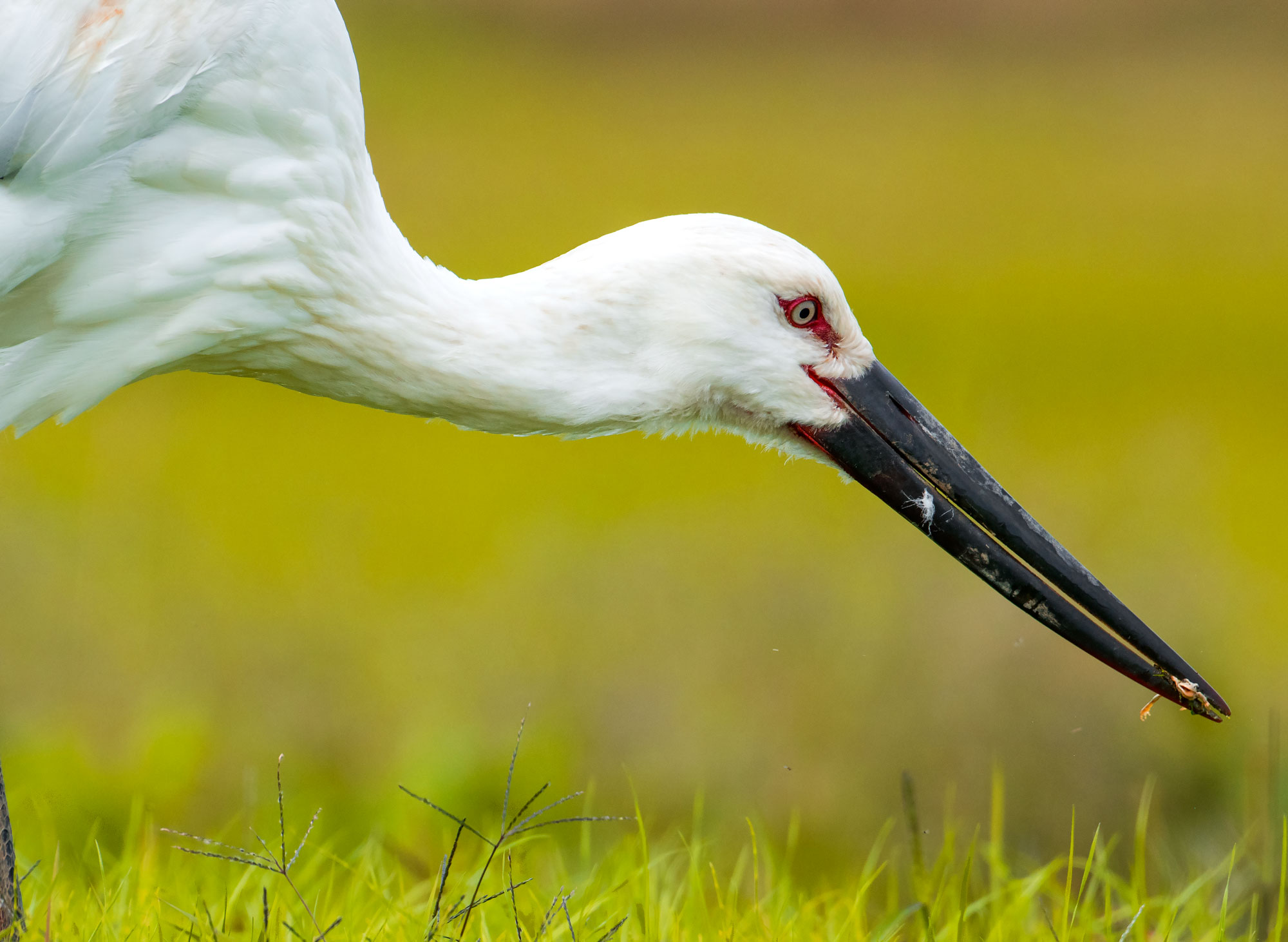 The Oriental stork (Ciconia boyciana) is a huge, white stork with black wing feathers and is in the stork family Ciconiidae.
The Oriental stork (Ciconia boyciana) is a huge, white stork with black wing feathers and is in the stork family Ciconiidae.
This Oriental stork is 100–129 cm (39.5–51 in) long, 110–150 cm (43–59 in) tall, a weight of 2.8–5.9 kg (6.2–13.0 lb), with a wingspan of 2.22 m (7.3 ft). This stork has red skin around its eye, with a whitish iris and black bill. Both sexes are similar. The female is slightly smaller than the male. The young are white with orange bills. At one time, the Oriental stork could be found in Japan, Manchuria, Korea, and Siberia. It is now extinct in Japan and the Korean peninsula. However, in May 2007, a hatchling was reported in Japan for the first time in 40 years in the wild. The Oriental stork is a solitary bird except during the breeding season. Its diet consists principally of fish, frogs, insects, small birds, and reptiles, as well as rodents. The Oriental stork is classified as endangered on the IUCN Red List of Threatened Species. I photographed this Oriental Stork in the wild in Niigata, Japan, while leading a private Japan birding workshop. . Wikipedia
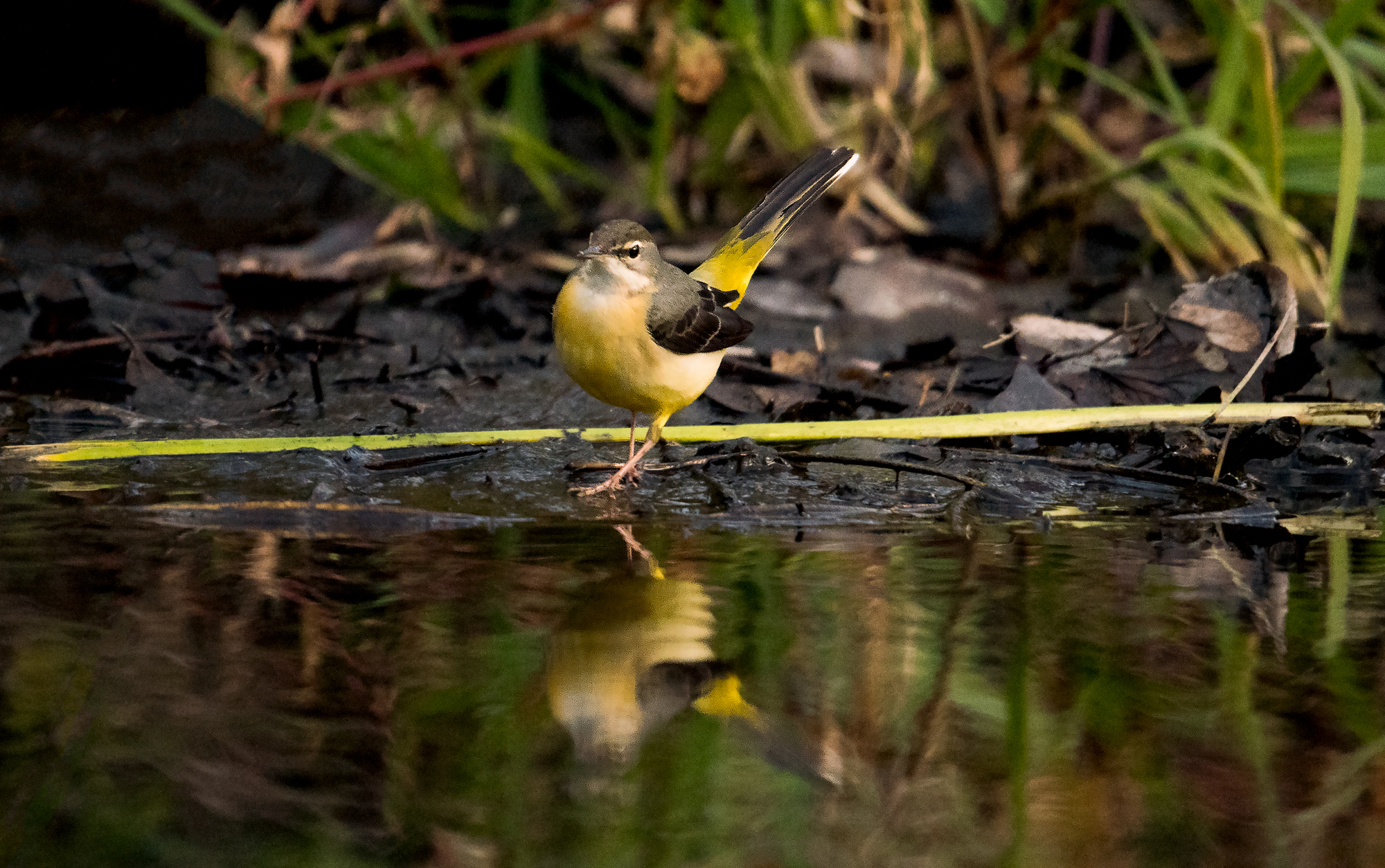 The grey wagtail is a member of the wagtail family, Motacillidae, measuring around 18–19 cm overall length. The species looks somewhat similar to the yellow wagtail but has the yellow on its underside restricted to the throat and vent. Breeding males have a black throat. The species is widely distributed, with several populations breeding in Europe and Asia and migrating to tropical regions in Asia and Africa. Blain Photographed this wagtail while leading another birding photo tour Tokyo Japan. Wikipedia
The grey wagtail is a member of the wagtail family, Motacillidae, measuring around 18–19 cm overall length. The species looks somewhat similar to the yellow wagtail but has the yellow on its underside restricted to the throat and vent. Breeding males have a black throat. The species is widely distributed, with several populations breeding in Europe and Asia and migrating to tropical regions in Asia and Africa. Blain Photographed this wagtail while leading another birding photo tour Tokyo Japan. Wikipedia
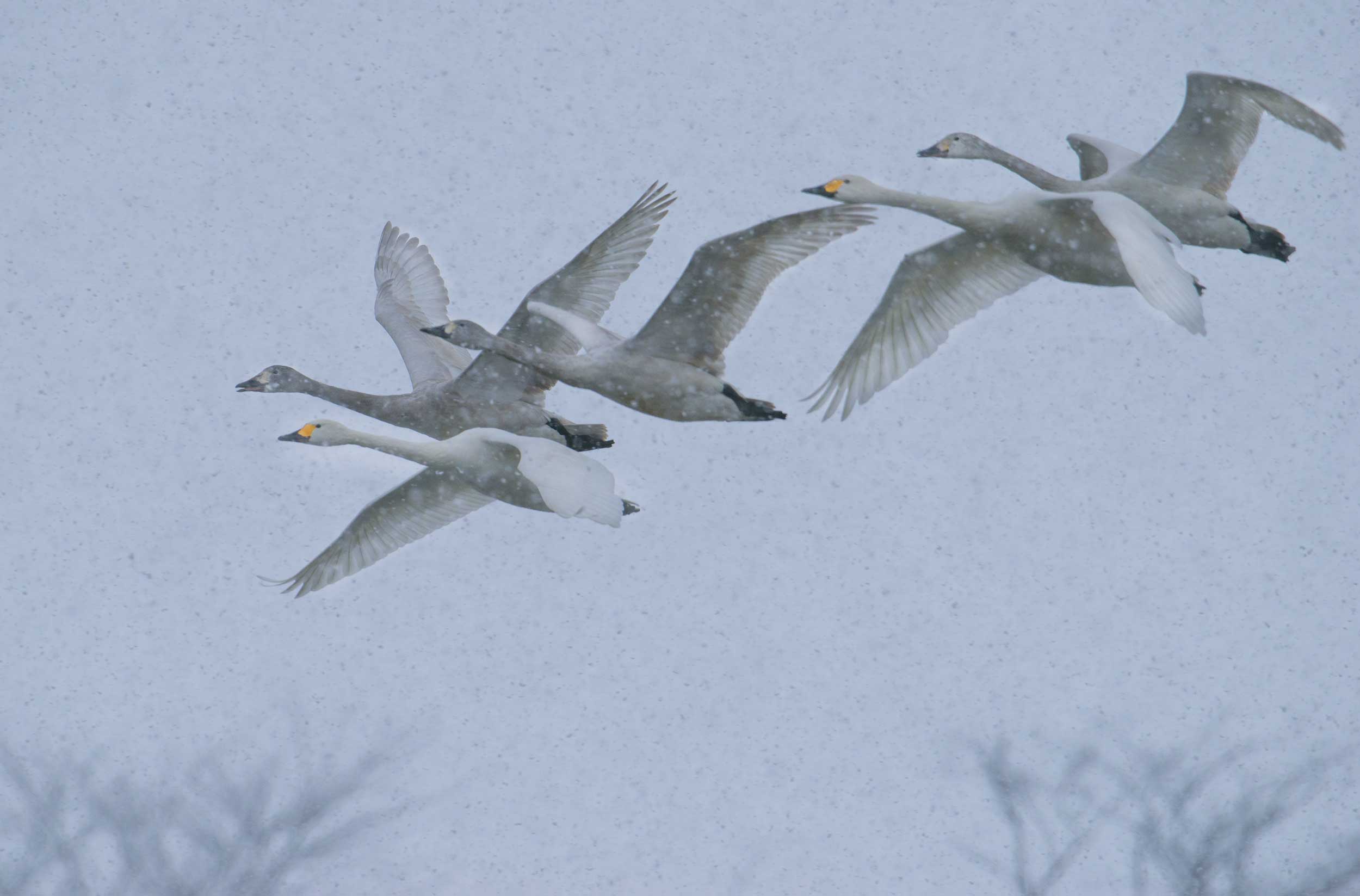 The Whooper Swan (Cygnus Cygnus) is a huge Northern Hemisphere Swan. These swans can be easily identified from other swans by the color of their bill, which has orangey yellow markings. Blain photographed these swans flying through a snowstorm while he was leading a birding wildlife photography workshop on Sado Island Niigata, Japan. Wikipedia
The Whooper Swan (Cygnus Cygnus) is a huge Northern Hemisphere Swan. These swans can be easily identified from other swans by the color of their bill, which has orangey yellow markings. Blain photographed these swans flying through a snowstorm while he was leading a birding wildlife photography workshop on Sado Island Niigata, Japan. Wikipedia
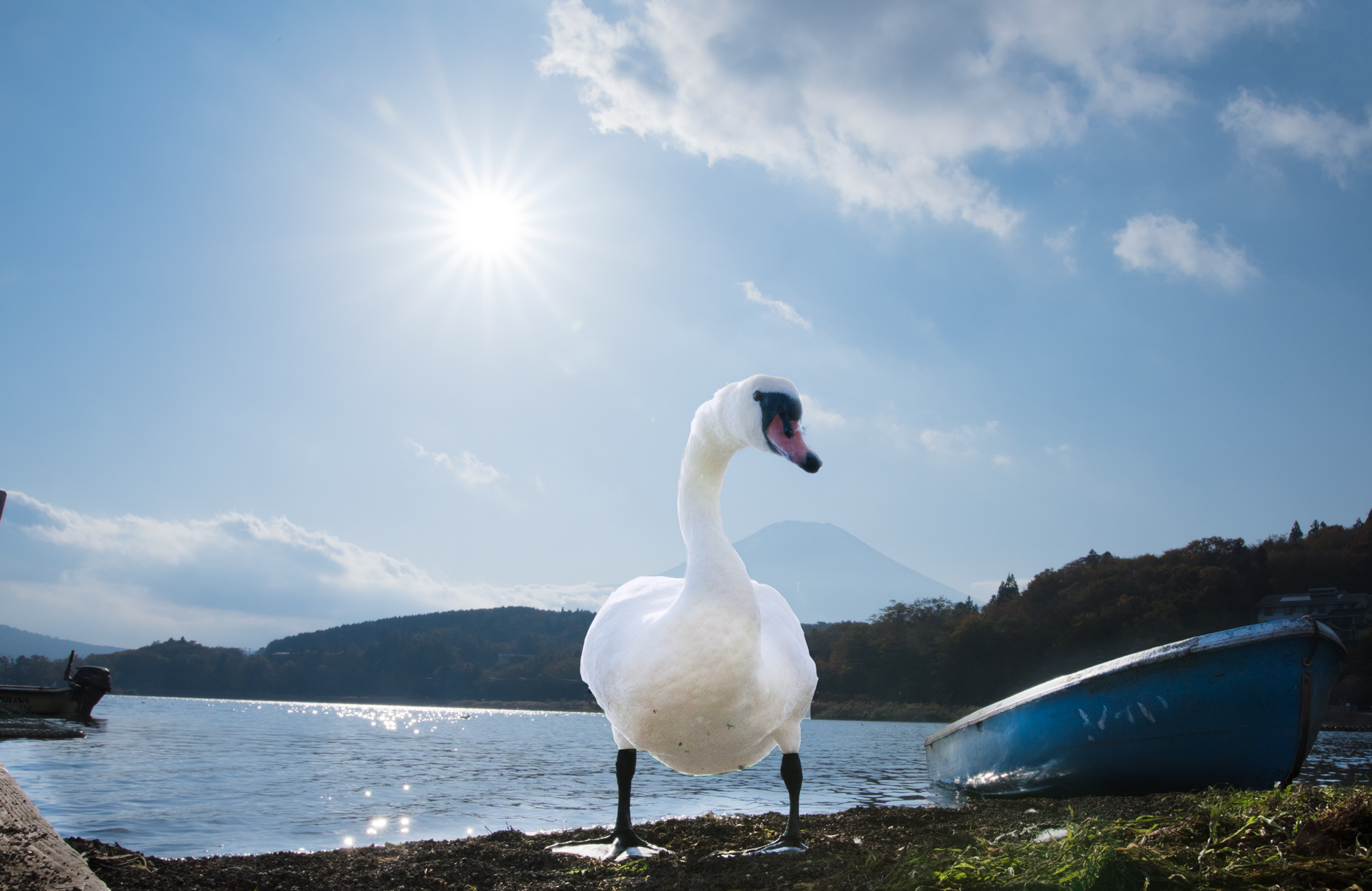 The mute swan (Cygnus olor) is a species of swan and a member of the waterfowl family Anatidae. It is native to much of North Asia, Central Asia, Eurasia, and the far north of Africa. It is an introduced species in North America, Australasia, and southern Africa. Blain Photographed this Mute Swan while leading another international birding Japan photography tour in the Mt. Fuji region. Wikipedia
The mute swan (Cygnus olor) is a species of swan and a member of the waterfowl family Anatidae. It is native to much of North Asia, Central Asia, Eurasia, and the far north of Africa. It is an introduced species in North America, Australasia, and southern Africa. Blain Photographed this Mute Swan while leading another international birding Japan photography tour in the Mt. Fuji region. Wikipedia
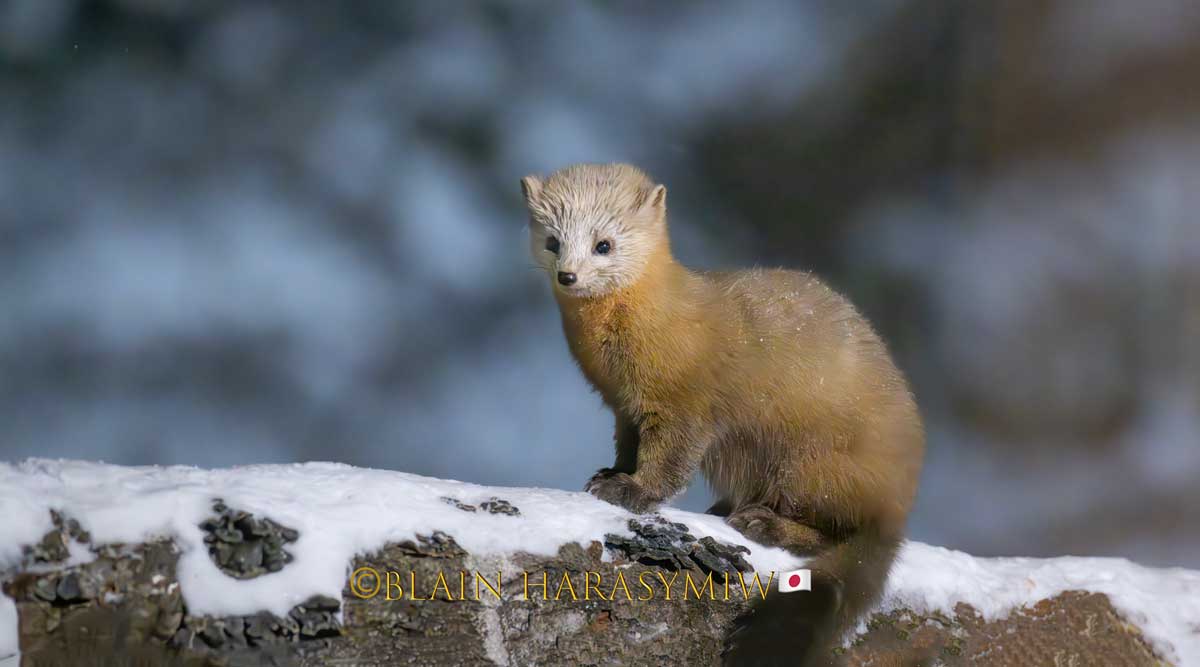
The Japanese Weasel (Mustela itatsi) is a carnivorous mammal belonging to the Mustelidae family. The Mustelidae is a family of carnivorous mammals, including weasels, badgers, otters, martens, mink, and wolverines, among others. Mustelids are diverse and the largest family in the order Carnivora. Blain’s team filmed this Japanse Weasel while on a Wildlife Winter Hokkaido Photography Tour Japan. Wikipedia
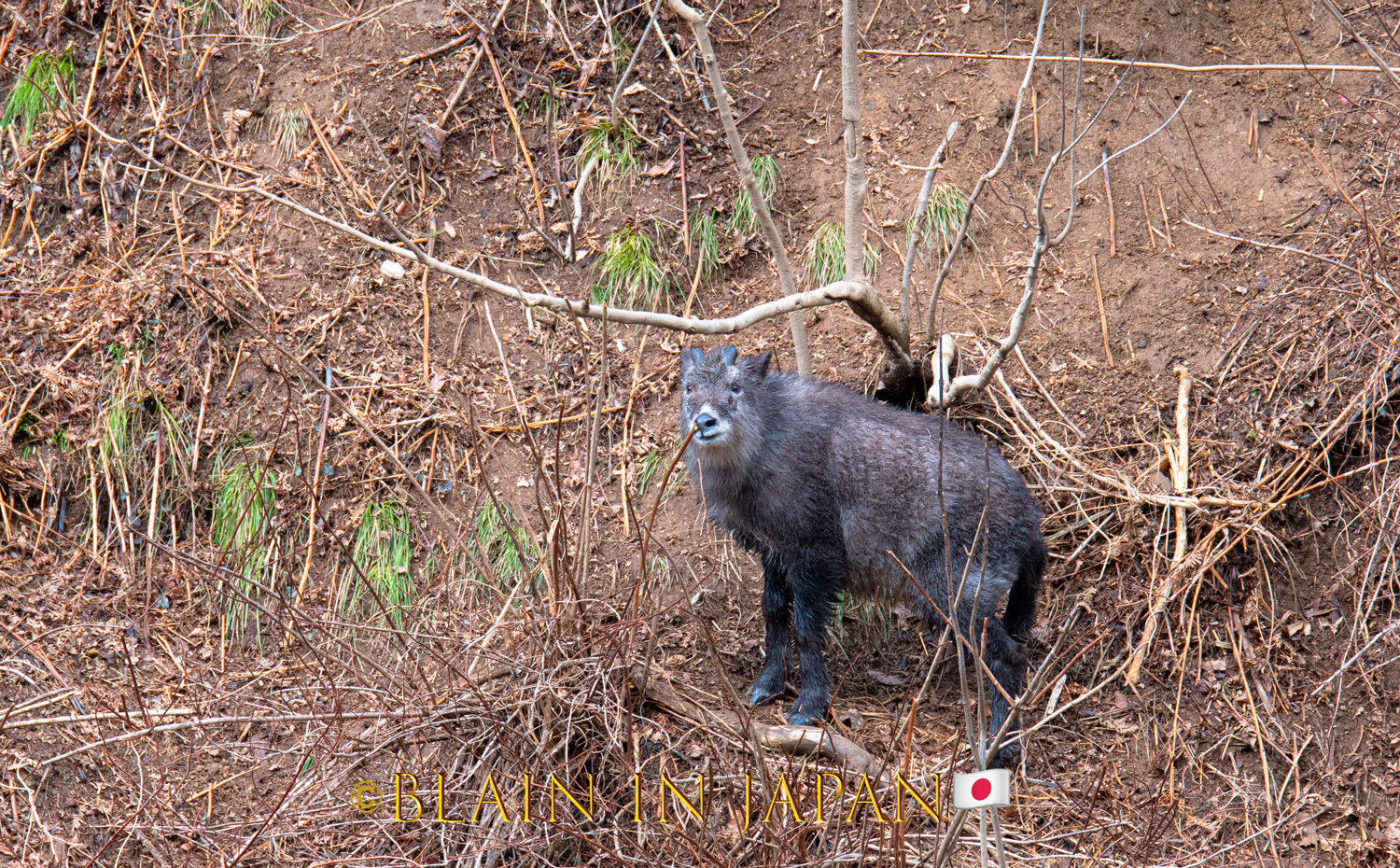 The Japanese serow (氈鹿, kamoshika, lit. "coarse pelt deer”) Capricornis crispus is a Japanese an antelope-goat. They are found in thick forests throughout norther and central Japan Honshu Japans main Island. Adult Japanese serows grow to around 91 centimetres (36 inches) tall and can weight up to 50 kilograms (110 pounds). Serows are black to a light color, doing summer their colouring lightens. Their fur is busy, and bot male and female have short backwards-curving horns. I often run into them while camping in the backcountry, they were once on the IUCN red list, but from protection of the species they are listed as “least concern”. I took this image of a Japanese Serow while leading my annual Hokkaido wildlife photo tour, while participants on my Japan photo tour were spotting and photographing snow monkeys in Snow Monkey Park (Jigokudani Yaen Koen) Nagano, Japan.
The Japanese serow (氈鹿, kamoshika, lit. "coarse pelt deer”) Capricornis crispus is a Japanese an antelope-goat. They are found in thick forests throughout norther and central Japan Honshu Japans main Island. Adult Japanese serows grow to around 91 centimetres (36 inches) tall and can weight up to 50 kilograms (110 pounds). Serows are black to a light color, doing summer their colouring lightens. Their fur is busy, and bot male and female have short backwards-curving horns. I often run into them while camping in the backcountry, they were once on the IUCN red list, but from protection of the species they are listed as “least concern”. I took this image of a Japanese Serow while leading my annual Hokkaido wildlife photo tour, while participants on my Japan photo tour were spotting and photographing snow monkeys in Snow Monkey Park (Jigokudani Yaen Koen) Nagano, Japan.
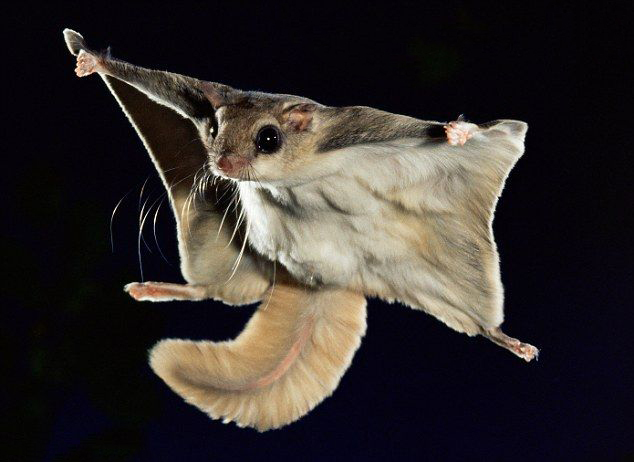
The Japanese dwarf flying squirrel is one of two species of the old world flying squirrels. Native to Japan they inhabit forests and boreal evergreen forests on Honshu and Kyushu islands. During the day these squirrels are comfortable in their den or hole mostly in the coniferous tree, emerging at night to feed. In 2019 - 2020 Blain will be once again leading Japan photography workshop vacation tours to photograph these amazing dwarf flying squirrels in the wild forests an hours drive from the middle of Tokyo.
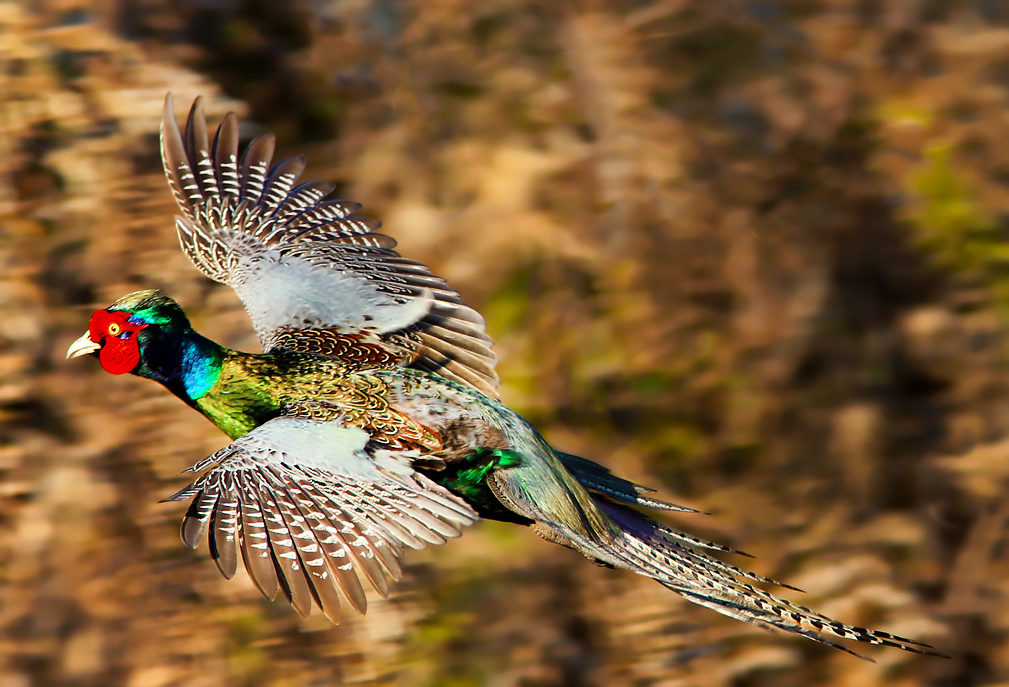
The green pheasant is the national bird of Japan. The Japanese green pheasant is unique, and it appears in Japanese folklore and is an indispensable part of the Japanese cultural landscape. The green pheasant is native to Japan to which it is endemic. Blain photographs the green pheasant while leading yet another Japanese exotic dreamscape birding photography tour, for international and Japanese photographers. Wikipedia
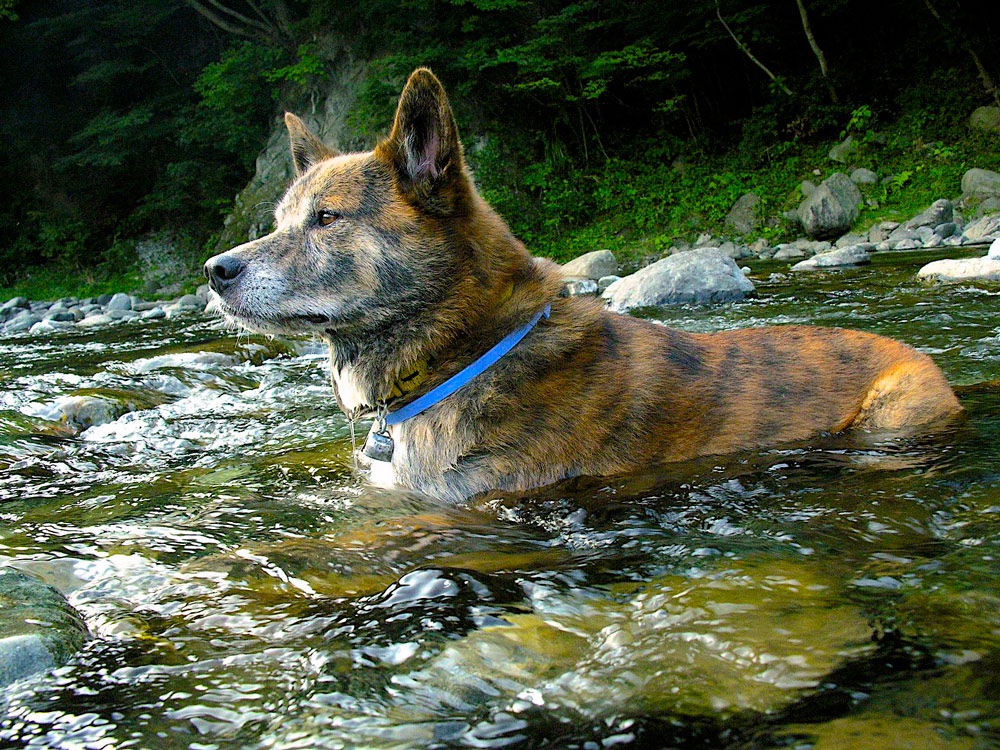
The Kai Ken is a breed of dog that hails from Japan where it is a national monument and has been bred for centuries. It is a rare dog even in its native land and is one of the six native Japanese dog breeds protected by the Nihon Ken Hozonkai. Hachi is this Kai Ken’s Name and is part of Blain’s family who often accompanies him while Blain and his Team of expert photographers and explorers explore new regions for upcoming new and exciting Japan photography vacation tours & workshops. Wikipedia
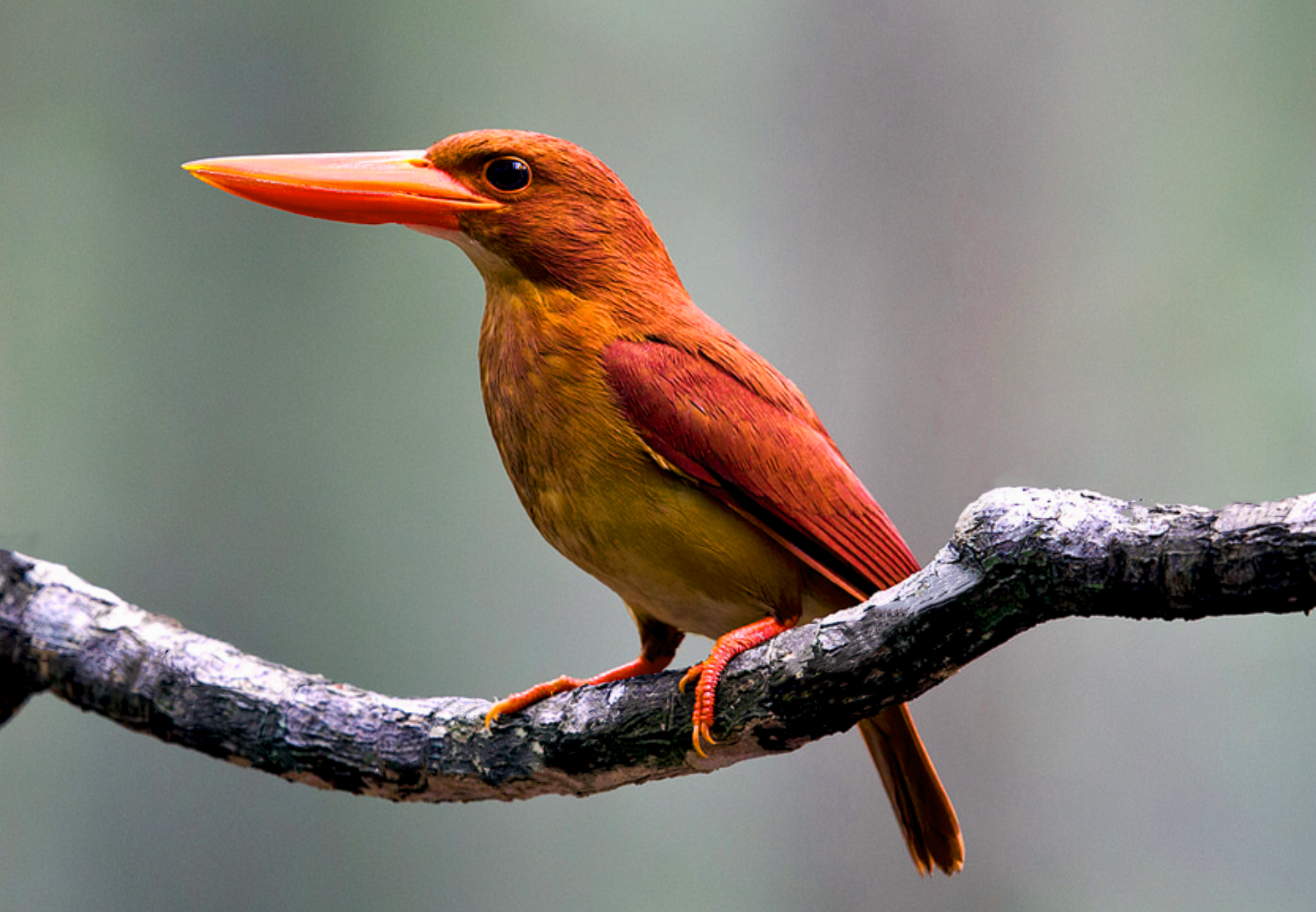
The ruddy kingfisher ranges from South Korea and Japan in the north, south through the Philippines to the Sunda Islands, and west to China and India. It is migratory, with birds in the northern part of the range migrating as far south as Borneo during winter. Locally common in southern parts of its range, the ruddy kingfisher is rare in Japan, where it is highly sought after by birders. Ruddy kingfishers inhabit forested areas from the temperate to tropical zones, often in thick jungles and rainforests. During hot years Blain leads birding Photography tours on the Southern Islands of Japan to photograph and film the Rudy Kingfisher. wikipedia
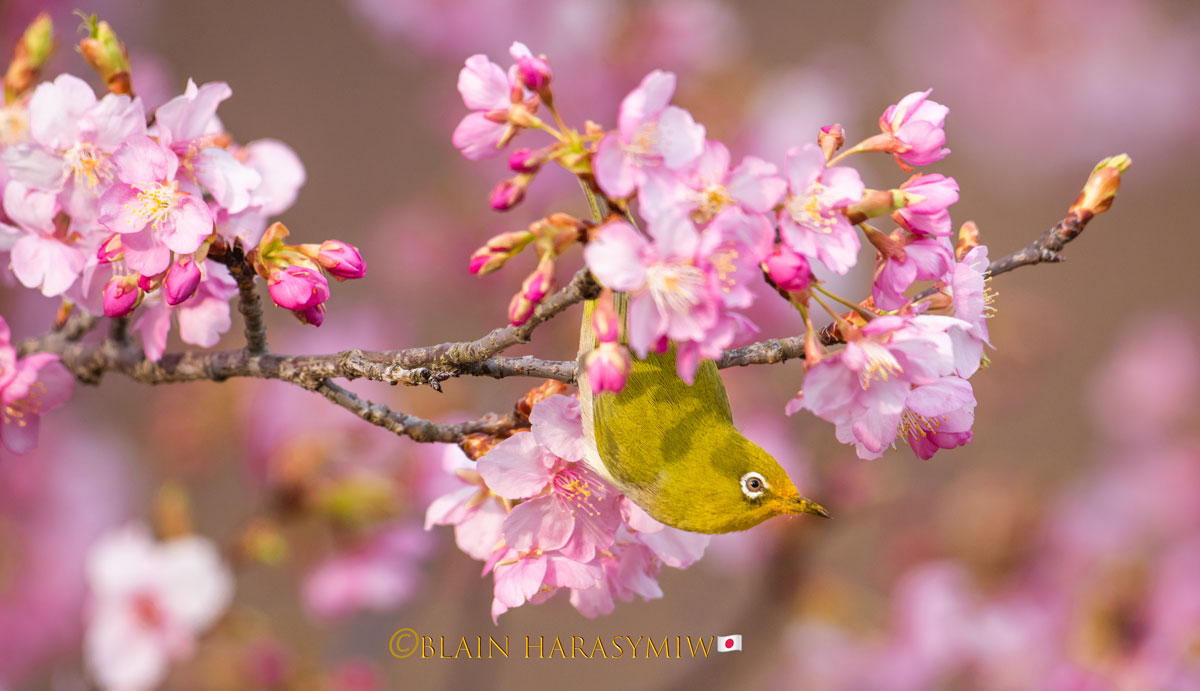
Kawazuzakura is the earliest blooming Sakura in Japan. The Kawazuzakura/Cherry Blossom tree is well known in the Izu Peninsula and blooms in February. This species of Cherry Blossoms with its beautiful vibrant pink cherry pebble flowers is a must see, "so don't forget to add it to your bucket list." Blain Harasymiw annually leads many Japan hanami photo tours to view these beautiful early bloomers. Blain also leads Japan birding photo tours to photograph the Japanese white-eye, Meijiro bird feasting on the sweet nectar of the Kawazuzakura Cheery Blossom Flower. The Kawazu Sakura cherry blossom can Blain also, leads Hokkaido photo tour to photograph them.

Hokkaido Photography Tour: The Popular is a deciduous tree that belongs to the family Salicaceae. There are over 35 species of the poplar trees, which are different in size and shape of the leaves, the color of the bark and the habitat they live. Poplar trees can be found throughout the Northern hemisphere (Asia, North Africa, North America and Europe). Blain Photographed these poplars while leading an autumn photo tour in Hokkaido Japan.
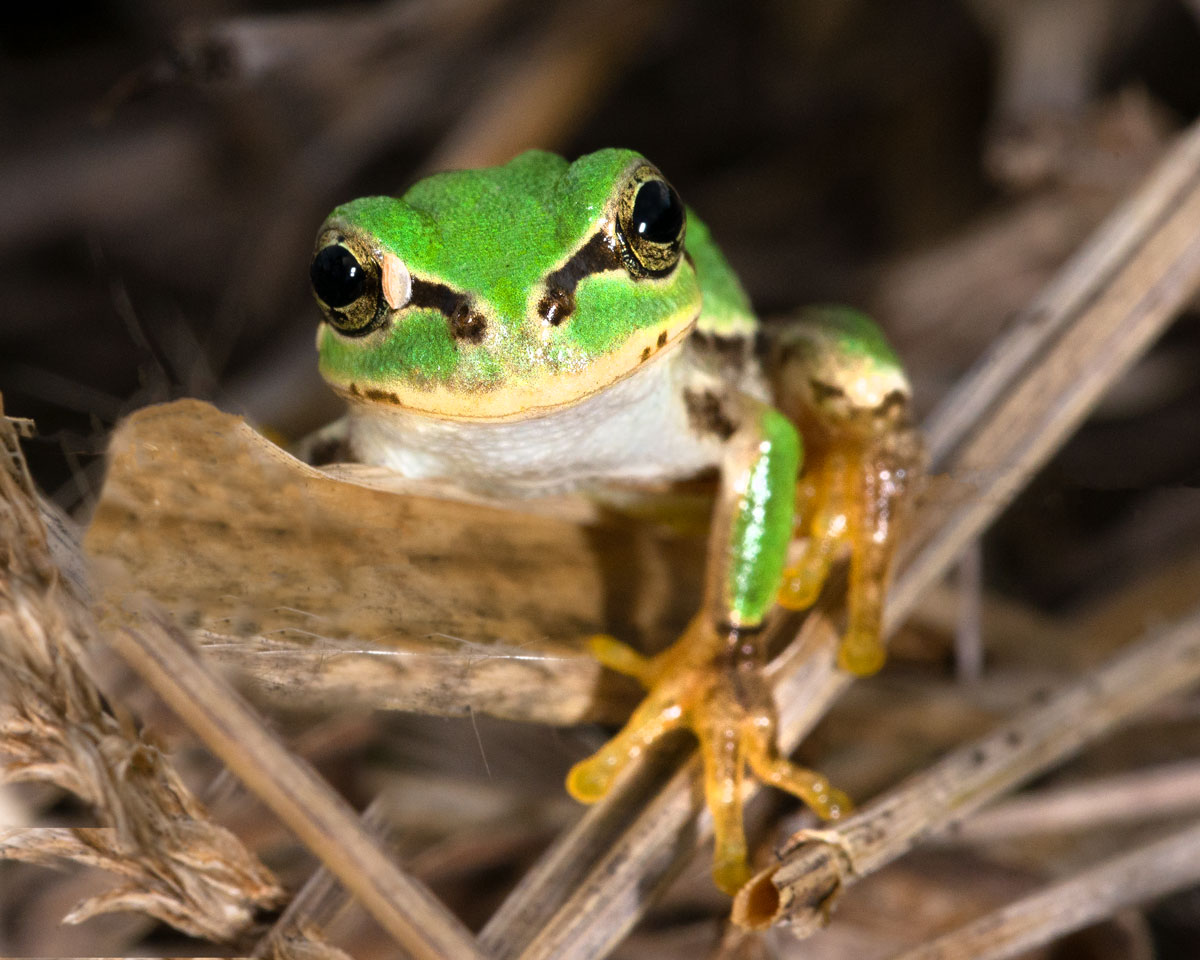
The Japanese Tree Frog (Hyla Japonica) is a species of tree frog found in Hokkaido to Yakushima Japan and Northeastern China, Korea, Mongolia and the Russian East. Tree frogs are commonly found in rice paddies, and during the day can be found on leaves and vegetation, during the evening they are most active and chase insect and are attracted to lights. Blain photographed this tree frog while leading another Hokkaido photo tour.
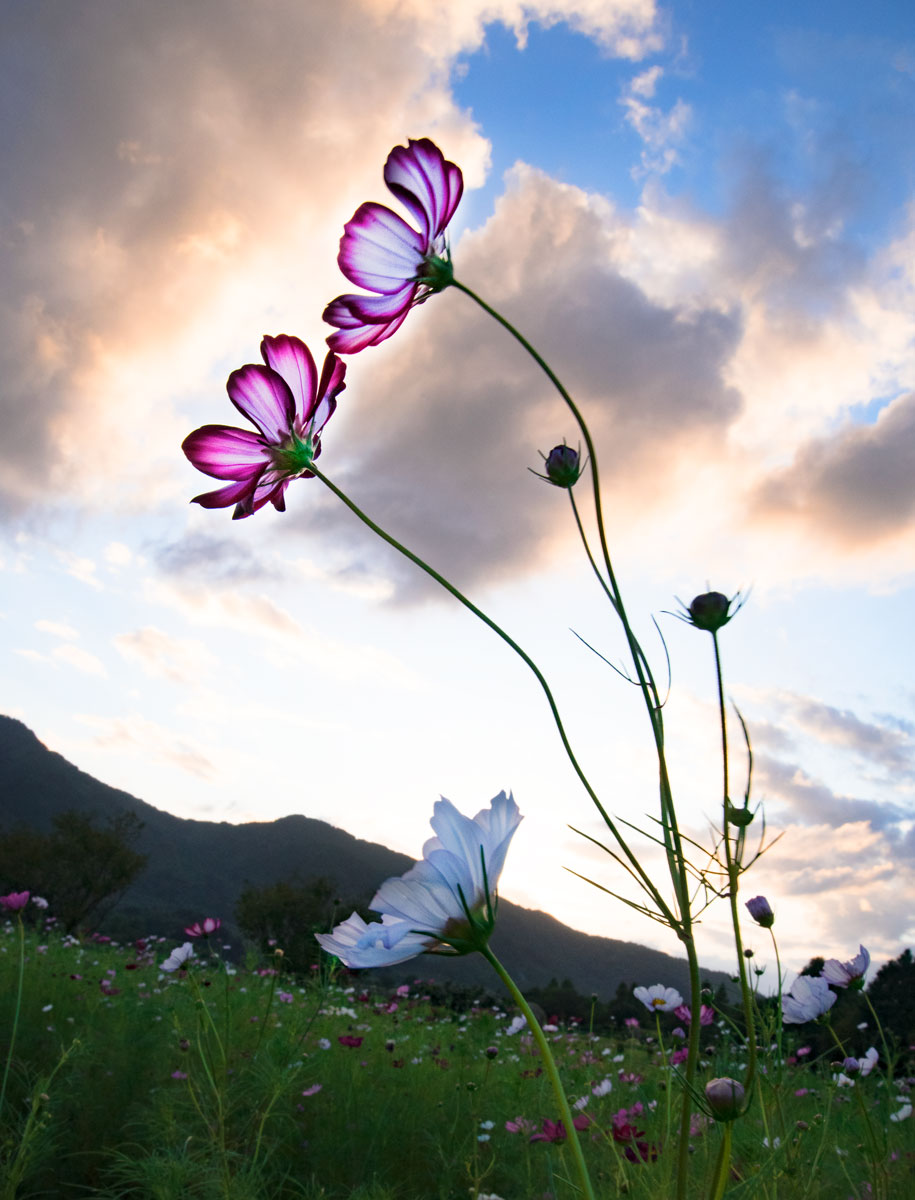
Cosmos flowers are also called the cherry blossoms of autumn and mainly bloom in autumn, but they have been known to bloom from mid-August. The flowers come in a variety of colors pink, white orange, purple almost every color under the sun. Blain Photographed these cosmos while leading a Hokkaido photo tour on Japans most northern Island.
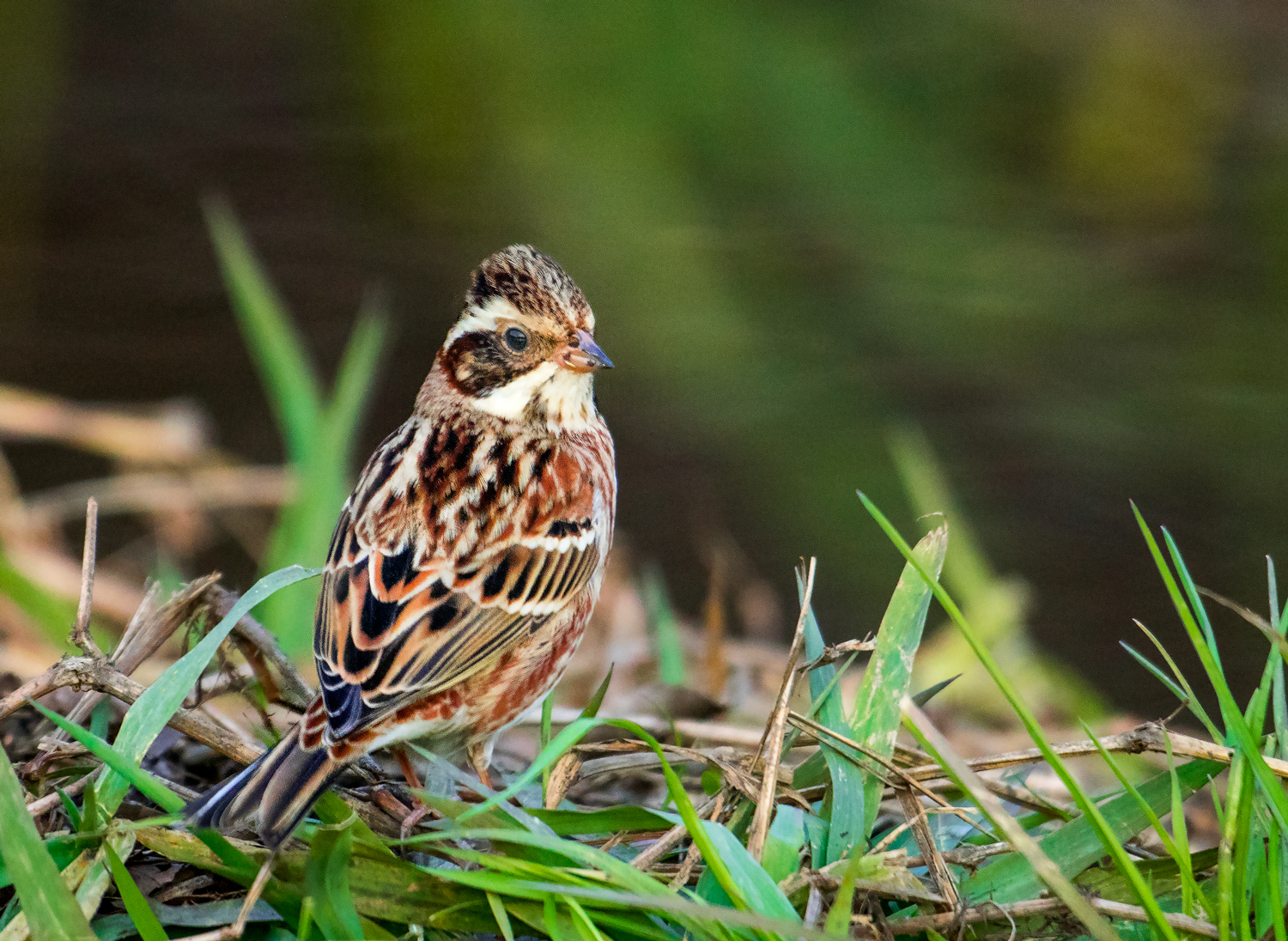
The rustic bunting (Emberiza rustica) is a passerine bird in the bunting family Emberizidae, a species now separated mostly from the finches (Fringillidae). They are a small bird at a length of 13-14.5 cm and a weight of 15-24 grams length of 13-14.5 cm and a weight of 15-24 grams The rustic buntings are a regular migrant of Japan and are a beautiful and fun bird to view and photograph, Blain loves these small passerine birds especially when they raise their hair as they perk their head and neck up. Blain photographed this rustic bunting while leading a private birding Hokkaido Photo Tour. Japan indeed is a birders' paradise with over 600 species of birds recorded in Japan.
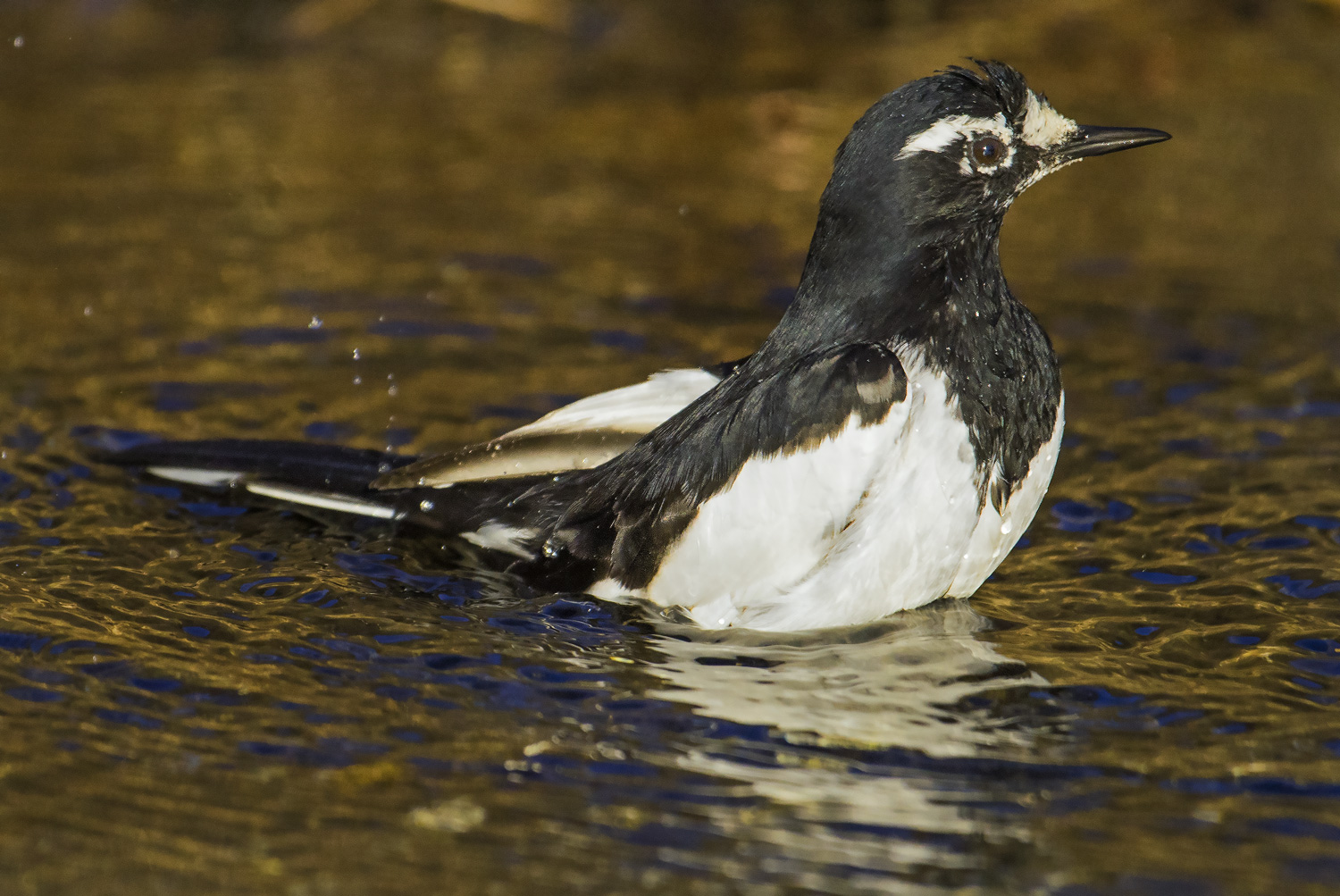
The Japanese Wagtail is a species of bird in the pipit and wagtail family Motacillidae. They are small passerine birds with medium to long tails. They breed in Japan and Korea, some birds have been recorded in Taiwan, Eastern China, and eastern Russia. In Japan they common from Kyushu to Tokyo, but uncommon in Hokkaido. Blain Photographed this Japnese wagtail while leading a Japan wildlife photo tour.
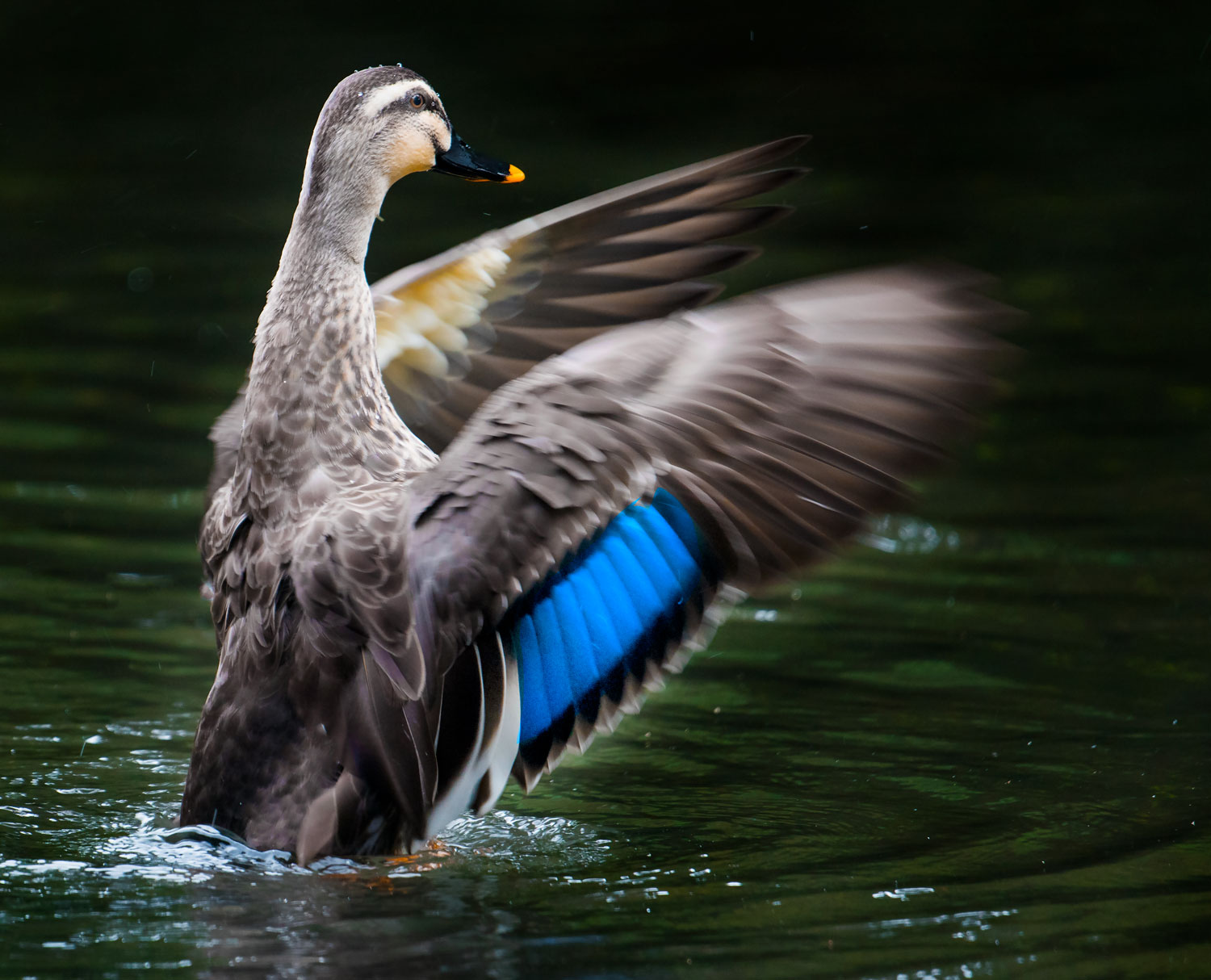
The Eastern Spot-Billed Duck looks and sounds similar to it's close relative the mallard duck. You can quickly tell them apart by their bill, the mallard's bill is completely yellow while the spot-billed bill has only a spot of yellow. Aside from the bill, the Spot-billed duck can be identified by the white crescent shape of its wings, and their distinctive blue speculum. Blain photographed this spot-billed duck while he was leading a Hokkaido wildlife-birding photo tour.

Alcea is a genus of about 60 species of flowering plants, commonly known as the Hollyhocks. Hollyhocks are native throughout Japan and other parts of Asia as well as Europe. The herbage normally has beautiful star-shaped hairs, and are usually over three cm wide and come in a variety of colors, such as pink, white, purple, yellow. Blain Photographed this Alcea while leading a private Japan Photo Tour.
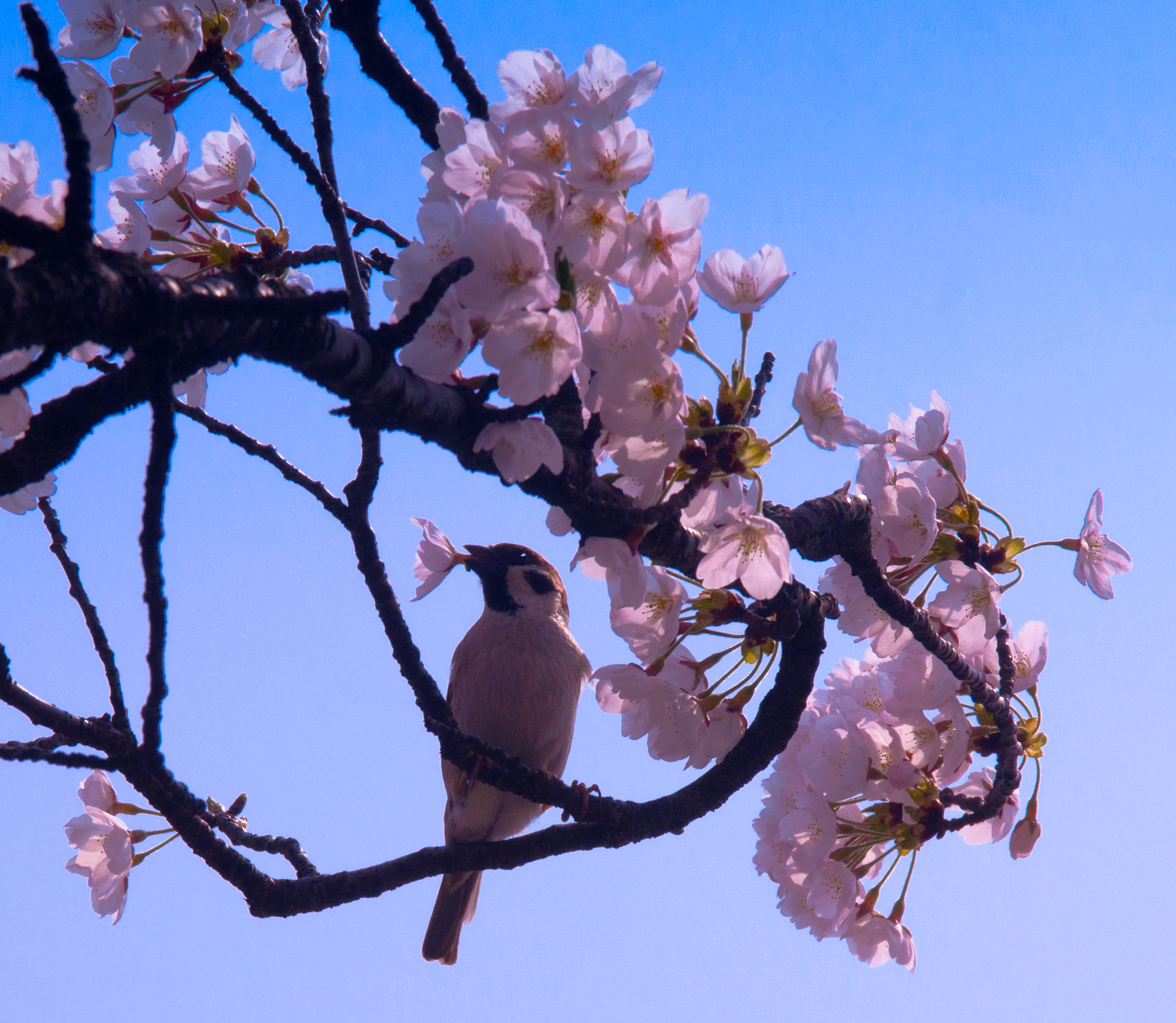
The Eurasian Tree Sparrow (Passer montanus), is a passerine bird in the sparrow family with rich chestnut crown and nape, with a black patch on each mostly pure shite cheek. Males and females have similarly plumaged, and younger birds are a duller version of the adult. The tree sparrow is not endangered globally, but globally there has been a drastic decline in their population due to human activities, and climate change. In many parts of the world, the tree sparrow is seen as a pest, although they are often seen and depicted in the oriental arts. These sparrows feed mainly on seeds and invertebrates, interestingly they have been documented by Blain Harasymiw & other plucking Cherry Blossom flowers and drinking the sweet nectar from the stem of the flower. Blain Photographed this tree sparrow drinking cherry blossom nectar while he was leading his annual group Cherry blossom photography tour in Tokyo, Mt. Fuji, Niigata and Hokkaido Japan. The tree sparrow is found throughout Japan, so participants on Blain's cherry blossom photo tour have plenty of opportunities to photograph these adorable birds collecting the sweet nectar of the cherry blossom.
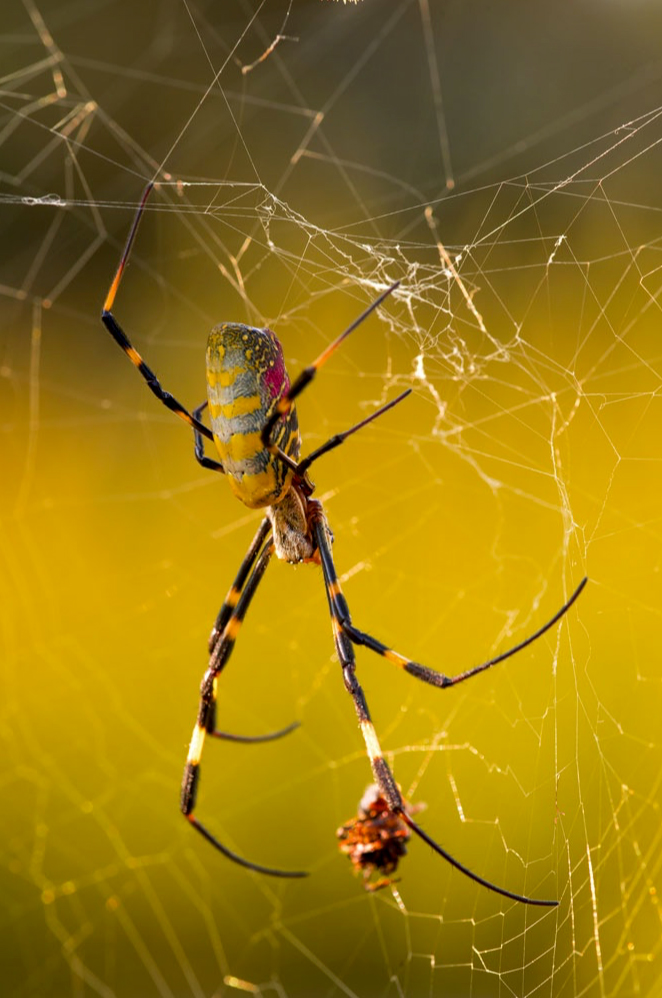
The Giant Wood Spider (Nephila) is one of the biggest spiders in the world and is a genus of araneomorph spiders noted for their impressive webs. They are found in Japan, Australia and warmer regions around the world. Blain photographed this giant wood spider while leading his annual autumn in Mt. Fuji photo tour.

The Japanese Robin or Komadori (Erithacus akahige) is a small passerine bird in the family Muscicapidae. Participants on Blain Harasymiw's Hokkaido wildlife photography tours, and photo tours north of Tokyo, Japan often view and photograph these beautiful Japanese Robin.

The Brown-eared bulbul (Hypsipetes amaurotis) is Native in Japan and found in most parts of Eastern Asia. Alternate names for the brown-eared bulbul include the Asian brown-eared bulbul, Chestnut-eared bulbul, and Eurasian brown-eared bulbul. In Japan, they can be seen sipping the sweet nectar of the earliest Cherry Blossoms that bloom in Japan, the Kawazu Sakura Cherry Tree that blooms like clockwork in February just outside of Tokyo, Japan.
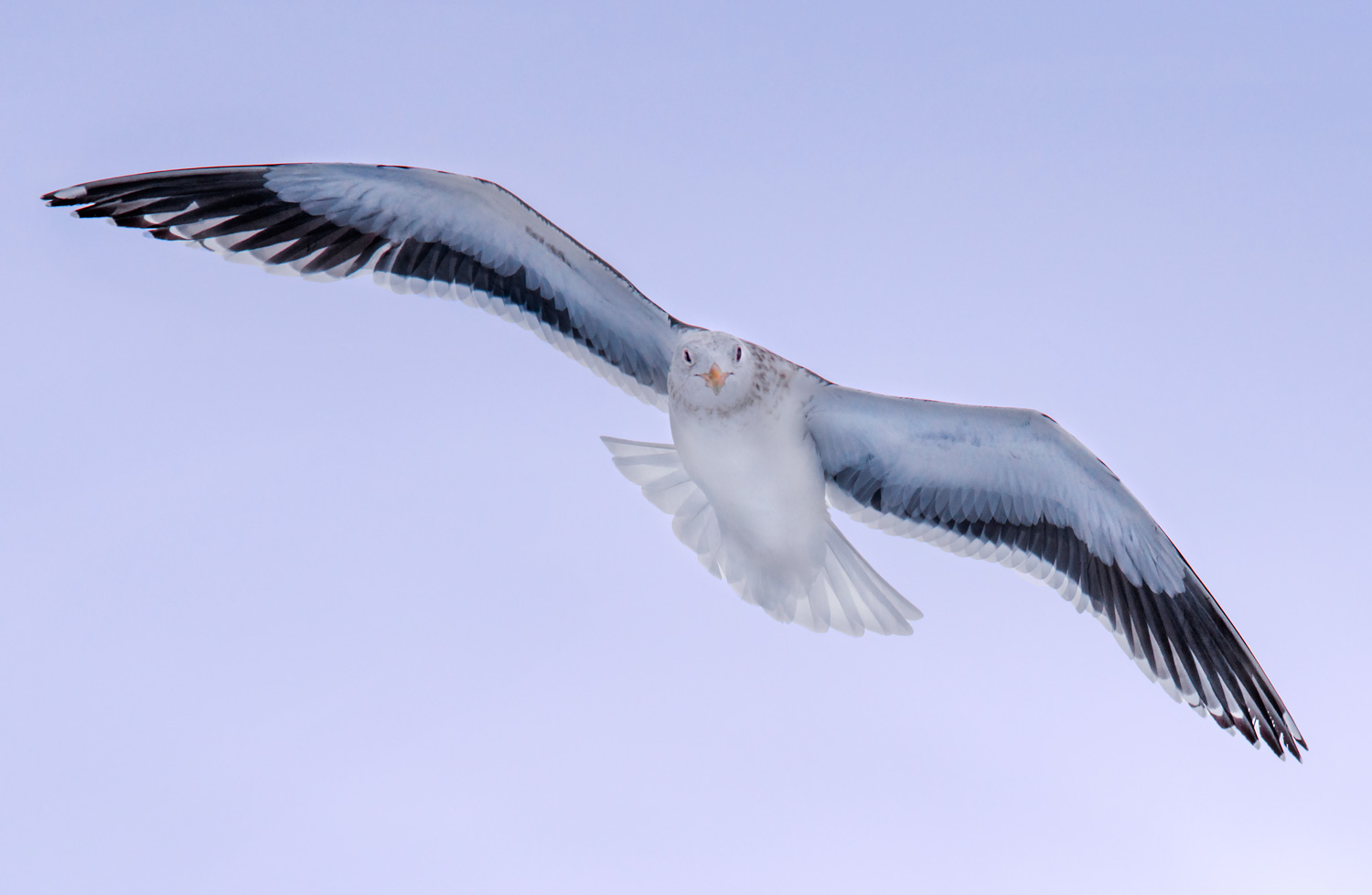
The Mongolian Gull Larus mongolicus which diversifies in color and is a beautiful bird. They are usually medium grey comparable to Birula's gull and can be much darker in color The head of the Mongolian gull is largely white all year round with just a touch of streaking. The legs are ordinarily pink, and their eyes are usually pale with a red orbital ring. I photographed this stunning gull while leading my annual winter wonderland Hokkaido winter photography tour.
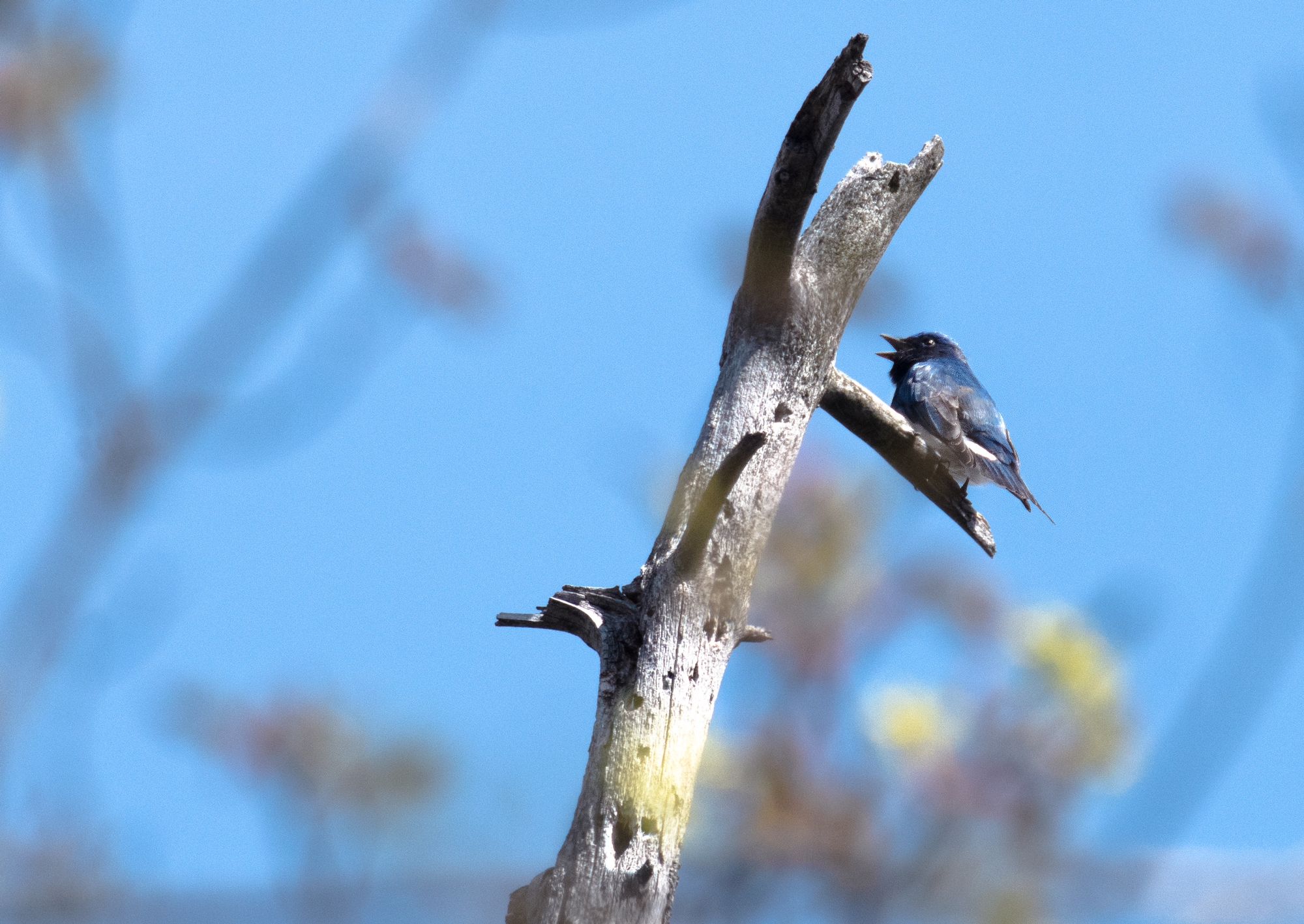
The Blue-and-white Flycatcher Cyanoptila cyanomelana is a handsome migratory songbird, about 17cm long, it the male has a vivid electric blue cap, back wings, and tail. The breast is white, and the face eyes bill is brown-black. The blue flycatcher s one of the three songbirds that are famous in Japan for their singing; their song is complex fluid, thrilling and energetic, in the breeding season, they emit a goo-goo sound. Blain Harasymiw photographed this blue and white flycatcher while leading a private cherry blossom photo tour in Fukushima, Japan.
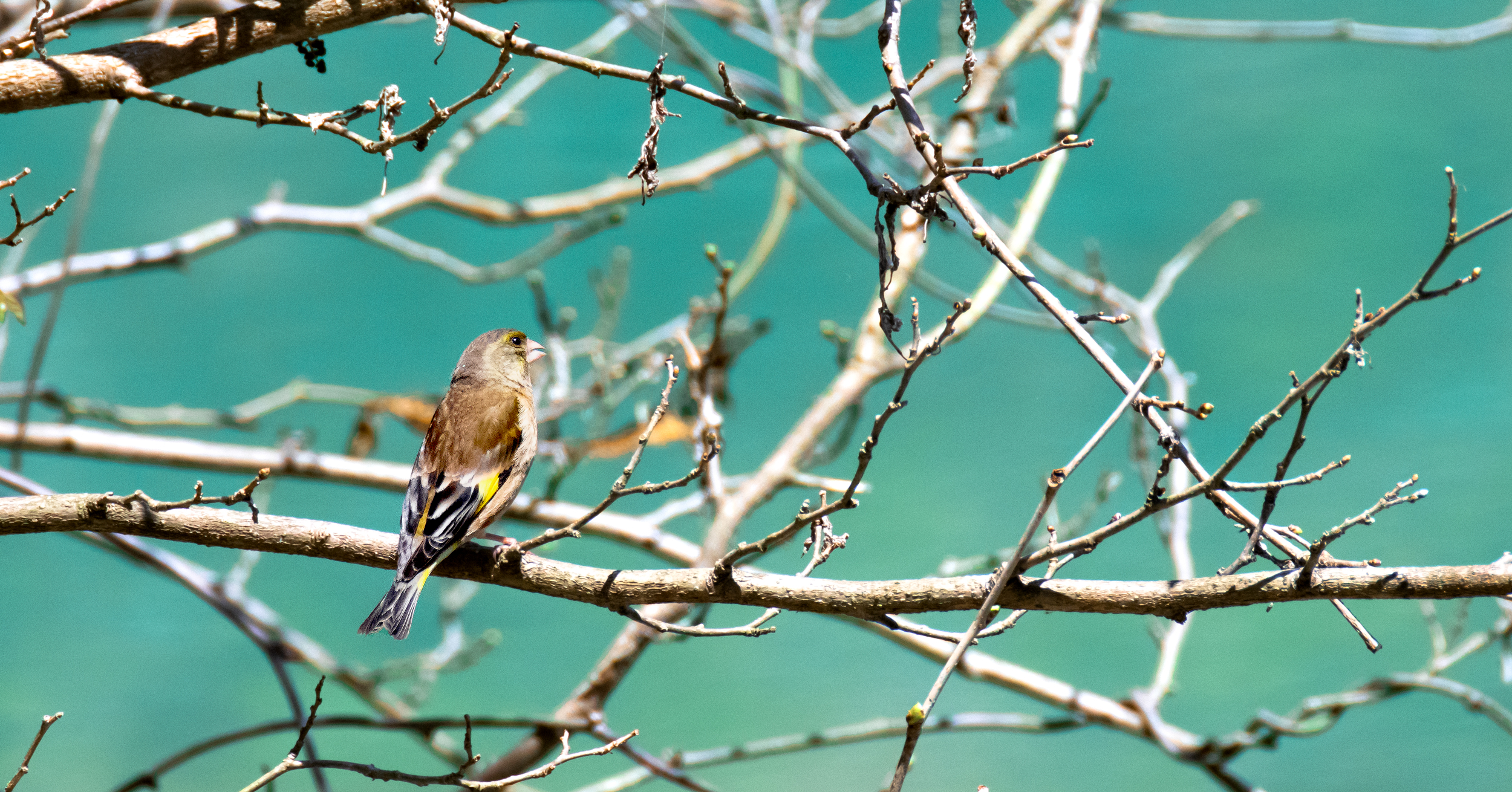 The grey-capped greenfinch or Oriental greenfinch (Chloris sinica) is a small passerine bird in the finch family Fringillidae that breeds in broadleaf and conifer woodlands of Japan and other parts of East Asia. The grey-capped greenfinch is a medium-sized finch 12.5 to 14 cm (4.9 to 5.5 in) in length, with a strong bill and a short slightly forked tail. It nests in trees or bushes, laying 3-5 eggs. Blain photographed this greenfinch while leading a private birding photo tour Japan.
The grey-capped greenfinch or Oriental greenfinch (Chloris sinica) is a small passerine bird in the finch family Fringillidae that breeds in broadleaf and conifer woodlands of Japan and other parts of East Asia. The grey-capped greenfinch is a medium-sized finch 12.5 to 14 cm (4.9 to 5.5 in) in length, with a strong bill and a short slightly forked tail. It nests in trees or bushes, laying 3-5 eggs. Blain photographed this greenfinch while leading a private birding photo tour Japan.
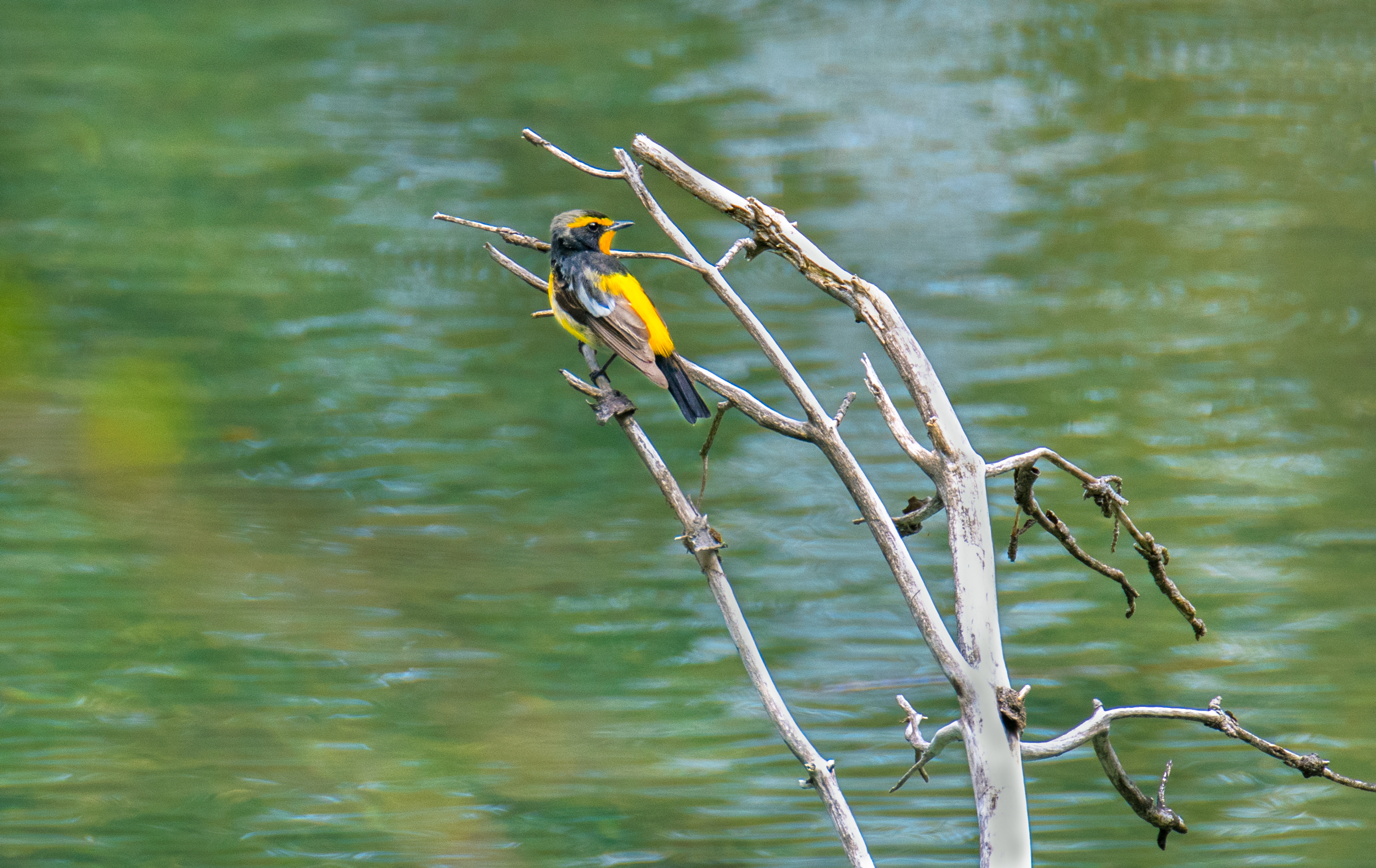 The Narcissus Flycatcher known in Japan species known as the Kibitaki is a passerine bird in the old world flycatcher family. They are native to Japan, and other parts of Asia. They are highly migratory and have been found as a vagrant from Australia to Alaska. Males are very distinctive in breeding plumage, black crown and mangle, bright orange throat with slightly paler chest and underparts, an orange, yellow eyebrow, black wings with white wing patch, an orange-yellow rump and a black tail. They feed mainly on insects and flourishes in woodlands. Blain photographed this flycatcher while leading a birding photography tour/workshops in Fukushima, Japan.
The Narcissus Flycatcher known in Japan species known as the Kibitaki is a passerine bird in the old world flycatcher family. They are native to Japan, and other parts of Asia. They are highly migratory and have been found as a vagrant from Australia to Alaska. Males are very distinctive in breeding plumage, black crown and mangle, bright orange throat with slightly paler chest and underparts, an orange, yellow eyebrow, black wings with white wing patch, an orange-yellow rump and a black tail. They feed mainly on insects and flourishes in woodlands. Blain photographed this flycatcher while leading a birding photography tour/workshops in Fukushima, Japan.

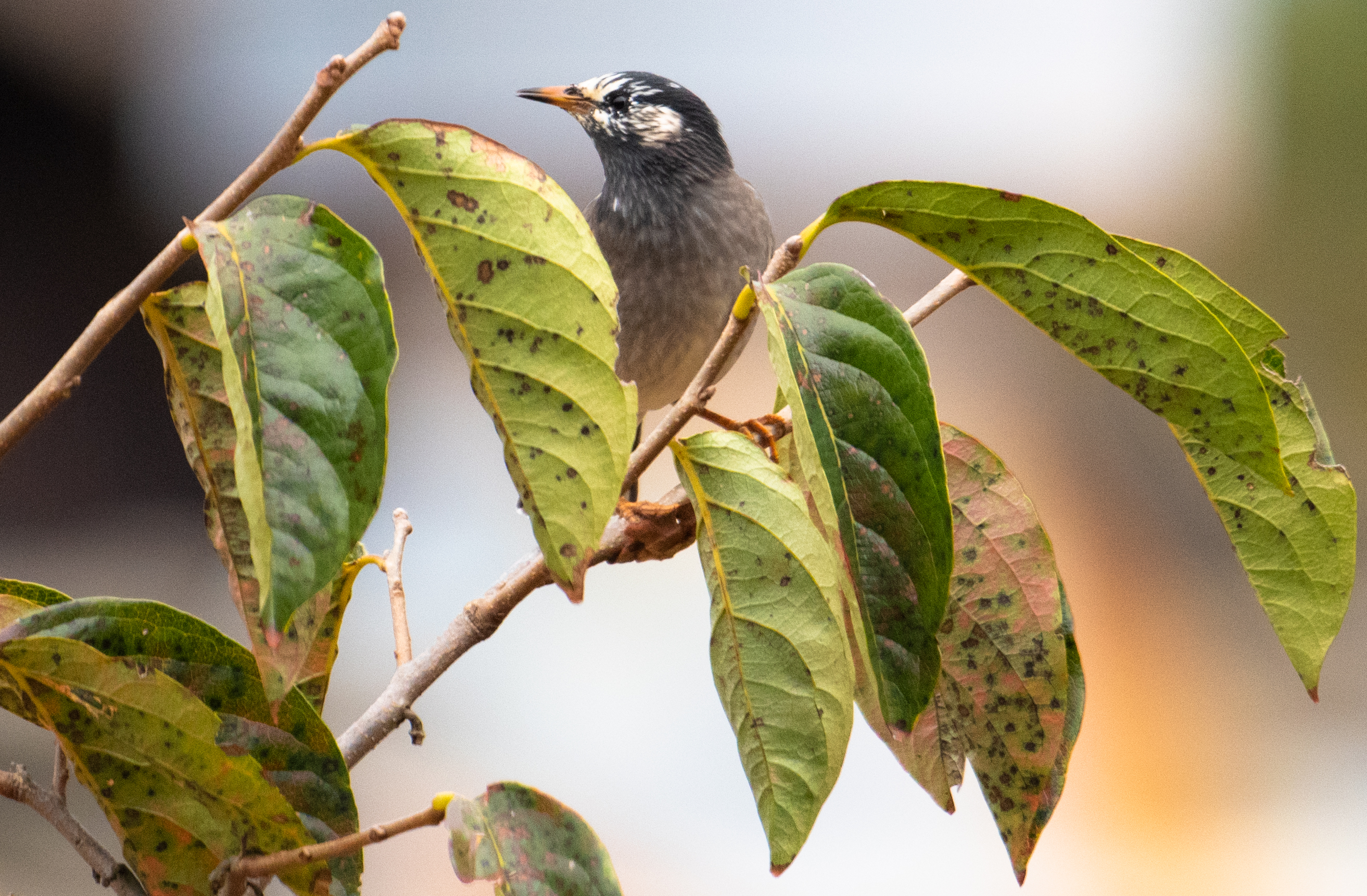
White cheeked Starling Japan (spodiopsar cineraceus) is a passerine bird of the starling family and common to Japan. They are native to Japan and multiple parts of Asia; there is even a record of one reaching Homer Alaska in 1998 believed to have arrived by ship. They love to eat fruits their favorite food is said to be the Muku tree Nut and various other nuts. The adult male is mainly dark grey-brown with a paler belly and whitish band across the rump. The head is blackish white whiteish cheeks and forehead. Adult females are similar to the males but paler and duller. Blain Harasymiw photographed these white-cheeked starlings while leading his annual Autumn maple leaves highland photography tour in Japan.
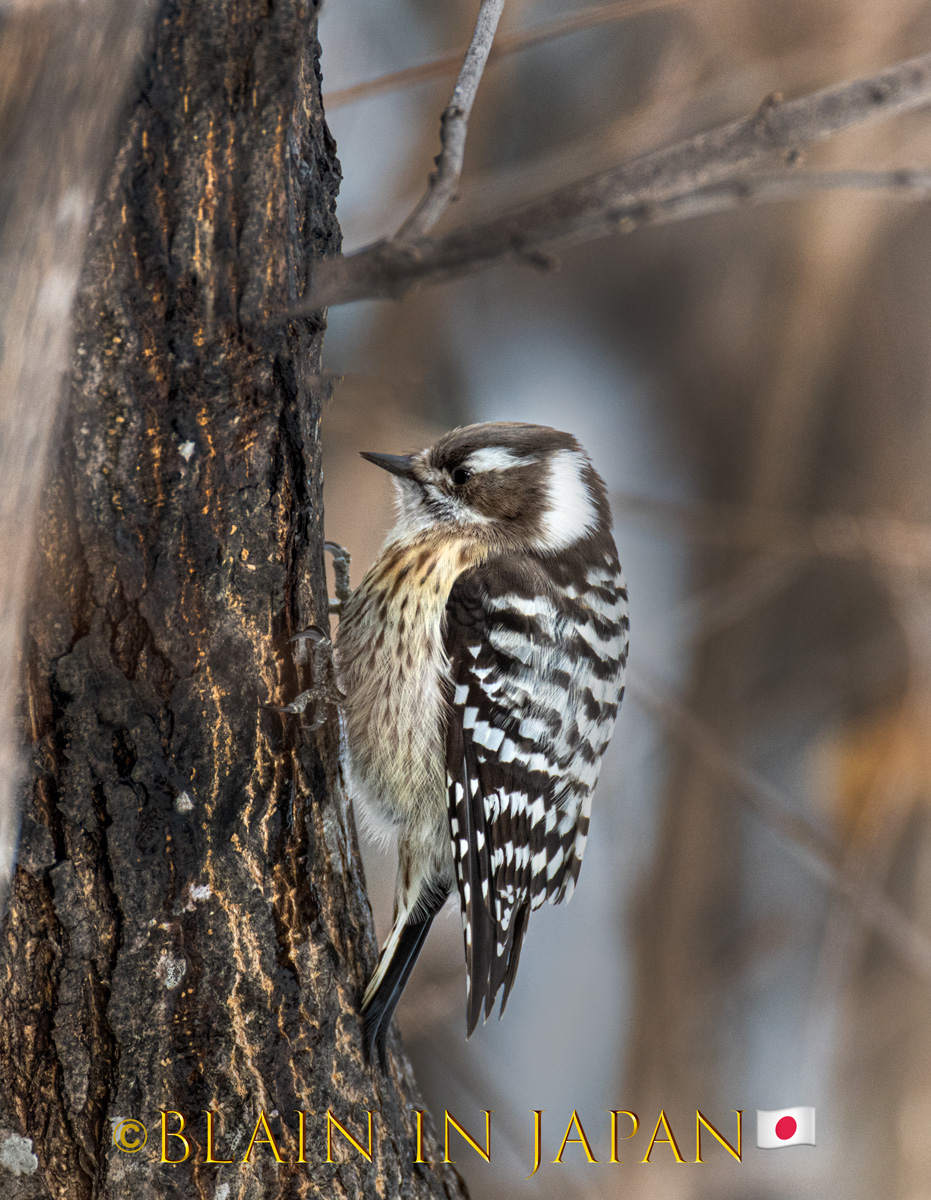 The Japanese Pygmy woodpecker or (Yungipicus kizuki) is a species of woodpecker, which is found in coniferous and deciduous forests in Japan and neighboring nations. This species has also been placed in the genus Dendrocopos or Picoides.
The Japanese Pygmy woodpecker or (Yungipicus kizuki) is a species of woodpecker, which is found in coniferous and deciduous forests in Japan and neighboring nations. This species has also been placed in the genus Dendrocopos or Picoides.
I photographed this Japanese Pygmy woodpecker while leading my annual winter wonderland Hokkaido Photography Workshop/Tour. I used a Nikon D850, lens Nikor 800mm; my setting were F/8, 1/2500s, ISO 800.
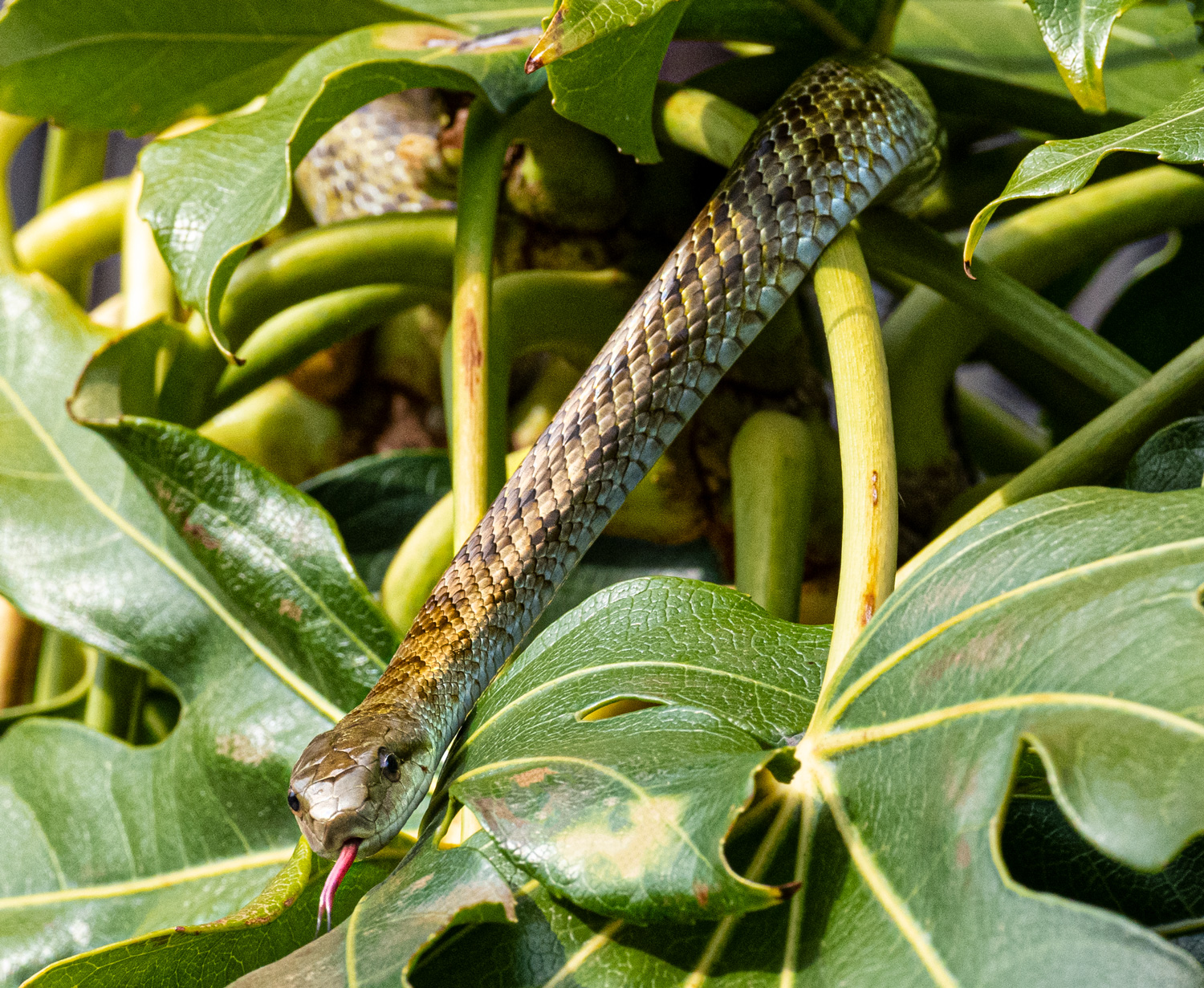 The Japanese Rat Snake is a medium-sized snake found in Japan. It is known as “Aodisho” and is a non-venomous snake and is a member of the colubrid family. Generally, they are blue, but colors vary from pale yellow-green to dark blue-green. This is a Juvenile rat snake, and the juvenile has a pattern of brown stripes, which sometimes can be mistaken at the venomous mamushi snake. Japanese rat snakes eat a variety of small animals, rodents, frogs, and lizards, they are good climbers, and they often raid birds nests. I photographed this snake at my Ocean countryside traditional Japanese home in Niigata, Japan.
The Japanese Rat Snake is a medium-sized snake found in Japan. It is known as “Aodisho” and is a non-venomous snake and is a member of the colubrid family. Generally, they are blue, but colors vary from pale yellow-green to dark blue-green. This is a Juvenile rat snake, and the juvenile has a pattern of brown stripes, which sometimes can be mistaken at the venomous mamushi snake. Japanese rat snakes eat a variety of small animals, rodents, frogs, and lizards, they are good climbers, and they often raid birds nests. I photographed this snake at my Ocean countryside traditional Japanese home in Niigata, Japan.
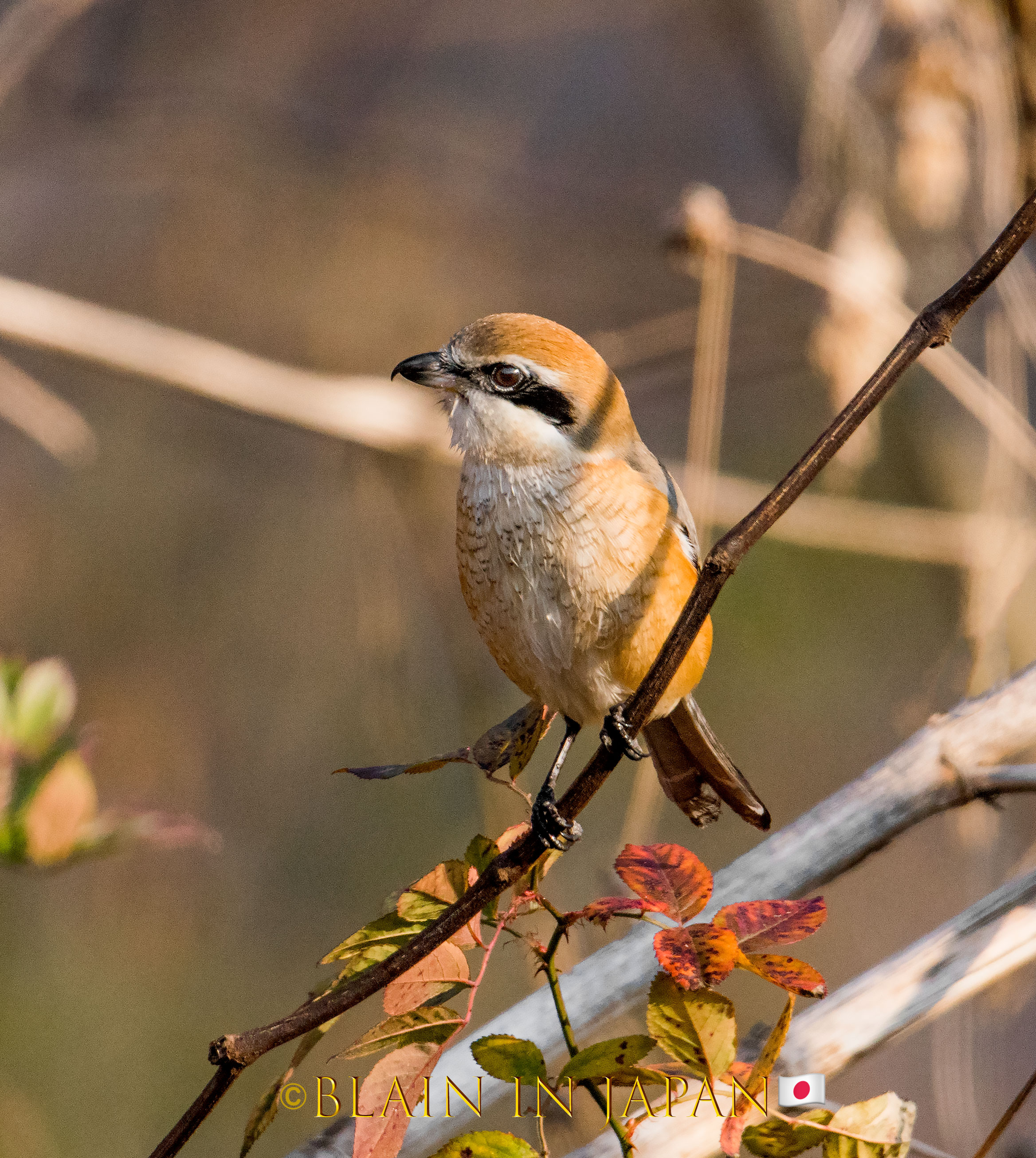
The Bull-Headed Shrike is a passerine bird of Japan and most of eastern Asia and belongs to the family Laniidae. Their call is rather a harsh grating and love catering calls; they are also masters at mimicking other bird calls and are territorial. The bull-headed shrike has a sharp beak and tears apart it's prey in pieces to more easily digest. They feed mainly on insects such as beetles and crickets, but they also enjoy eating lizards and crustaceans. In Japan, they usually build a nest in bamboo forests or close by and lay 2-6 eggs with hatch after about two weeks, and the young birds fledge about two weeks after hatching. The male Bull Headed Shrike is about 19-20cm long The male has a brown crown, white eyebrow, and black mask; the back is greyish brown while the wings are dark with a white patch. Females are similar, but a little duller and a slightly darker, but has no brown mask and no white patch on its wings. I photographed this bird while leading a private birding photo workshop in Mt. Fuji Yamanashi, Japan.
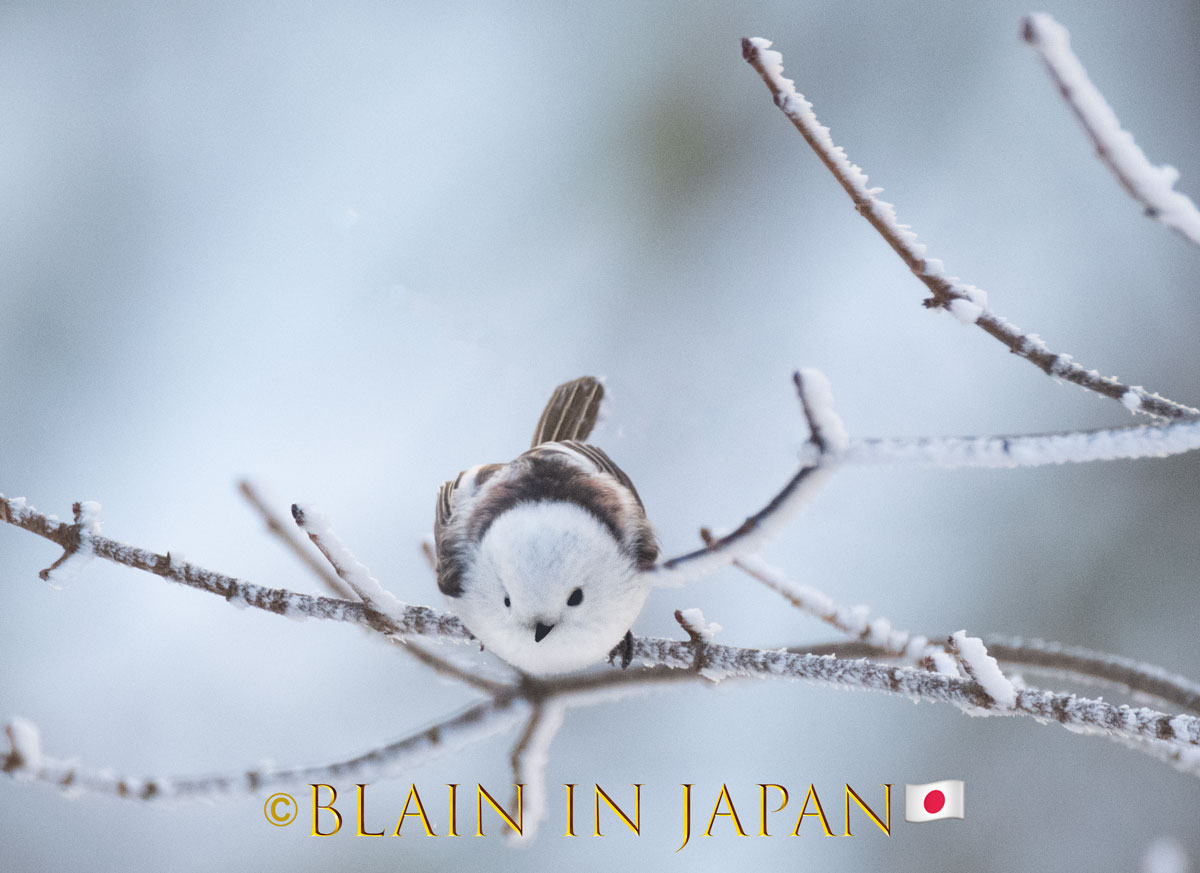 Shima Enaga (Aegithalos caudatus japonicus) has a uniquely all-white face and is a subspecies of the long-tailed bushtit. The Shima Enaga occur mostly in Japan. These tiny birds measure between 12 and 16 centimetres in length (about 5 and 6 inches). These tiny birds measure between 12 and 16 centimetres in length (about 5 and 6 inches). But they inhabit the entire Paleatrictic realm. The long-tailed tit is sometimes referred to as the silver-throated tit or silver-throated dasher. Aegithalos (long-tailed tits) are five species birds with a tail. Psaltriparus (North America Buishtit), monotypic. Psaltriparus (pygmy bushtit), monotypic. The long-tailed tit is insectivorous throughout the year. The Shima Enaga feed on predominantly arthropods and prefer the eggs of astronomically huge moths and butterflies, and sometimes eat vegetable matter. Outside of the breeding season, they live in flocks from about July to February, composed of half a dozen to two dozen members, including the family (parents and offspring) from the previous breeding season, together with extra adults that help raise the brood. The reason for the flocking behaviour is believed to be due to winter roosting, as they are susceptible to cold, and they huddle for warmth on cold nights. When the breeding season begins, the flock breaks up, and the birds attempt to breed monogamous pairs. Females tend to wander into neighbouring territories, while males remain within their winter territories. I photographed this Shima Enaga while leading my annual birding and landscape photography tour Hokkaido 2020.
Shima Enaga (Aegithalos caudatus japonicus) has a uniquely all-white face and is a subspecies of the long-tailed bushtit. The Shima Enaga occur mostly in Japan. These tiny birds measure between 12 and 16 centimetres in length (about 5 and 6 inches). These tiny birds measure between 12 and 16 centimetres in length (about 5 and 6 inches). But they inhabit the entire Paleatrictic realm. The long-tailed tit is sometimes referred to as the silver-throated tit or silver-throated dasher. Aegithalos (long-tailed tits) are five species birds with a tail. Psaltriparus (North America Buishtit), monotypic. Psaltriparus (pygmy bushtit), monotypic. The long-tailed tit is insectivorous throughout the year. The Shima Enaga feed on predominantly arthropods and prefer the eggs of astronomically huge moths and butterflies, and sometimes eat vegetable matter. Outside of the breeding season, they live in flocks from about July to February, composed of half a dozen to two dozen members, including the family (parents and offspring) from the previous breeding season, together with extra adults that help raise the brood. The reason for the flocking behaviour is believed to be due to winter roosting, as they are susceptible to cold, and they huddle for warmth on cold nights. When the breeding season begins, the flock breaks up, and the birds attempt to breed monogamous pairs. Females tend to wander into neighbouring territories, while males remain within their winter territories. I photographed this Shima Enaga while leading my annual birding and landscape photography tour Hokkaido 2020.
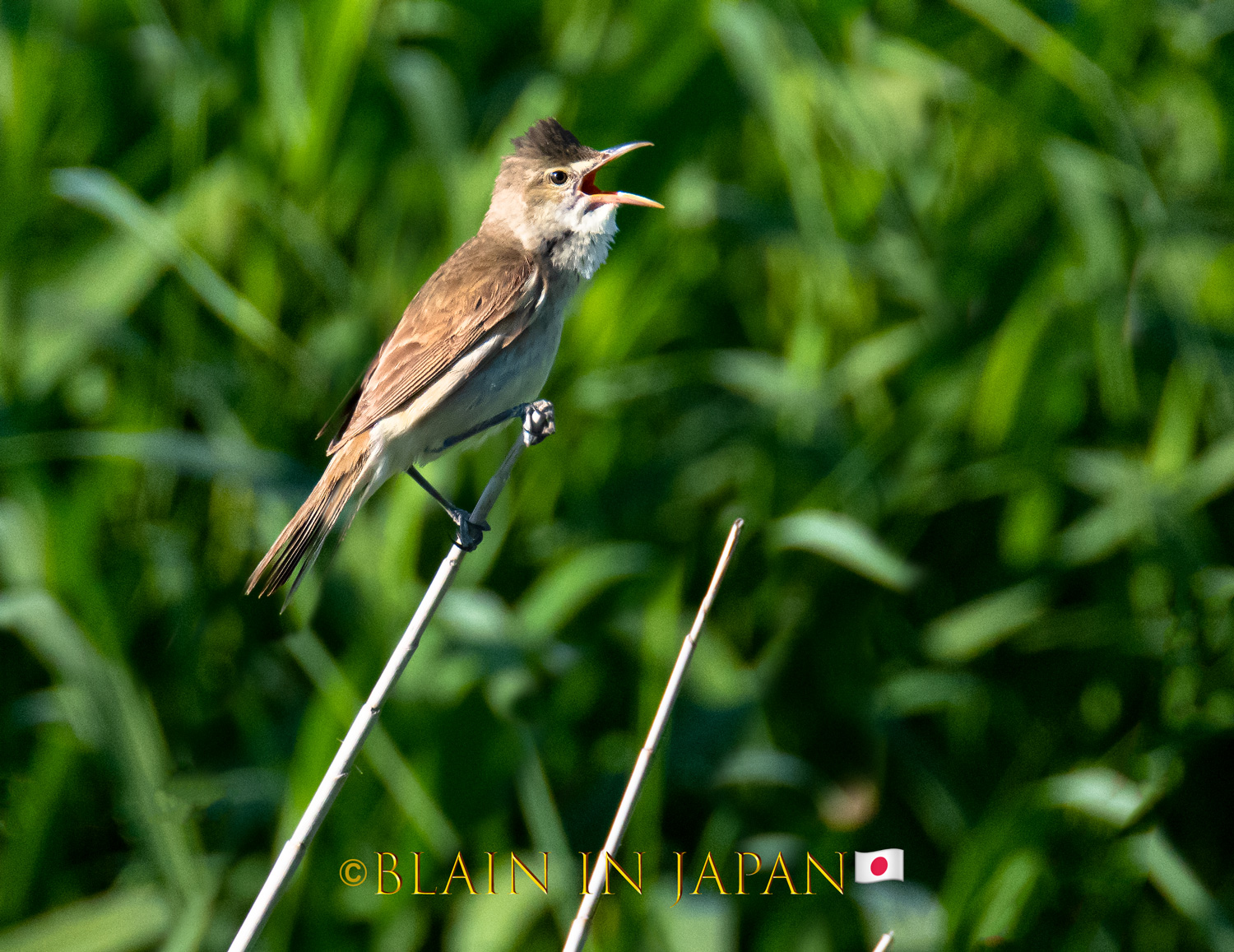 The Oriental Reed Warbler is a passerine bird of migration, they arrive in the spring in Japan and most of Mid-North East Asia and depart in the autumn. Our Reed Warblers in Japan winter over across South-East Asia and most likely Taiwan, Okinawa or Indonesia, and possibly the Philippines. They are a large warbler 18-20cm long with a wingspan of 23-26cm. Their plumage is brown above, with a paler rump and whitish tips. Their underparts are whitish below and browner on the flanks and under the tail. They have a narrow grayish streak on the treat and breast. They have a dark eyestripe and a slightly whitish stripe above the eye. Their feet are grey. Their bill is fairly long and brownish above it is pink below with a bright orange gape. What makes them such an exciting bird for me is in my region of Japan, about 2km from my beach home is a marshlands lake with tall grass and walking trails. And while walking the trails you hear all around you (kiruk kiruk kiruk, jee jee jee), (krak), (si-si-si-si) the warbler calling out, and they can be mere meters way but are challenging to spot due to the high grass and dense cover of natural Camouflage in marshlands. In Niigata, Japan, by my beach home, we have it all seabirds, mountains, and marshes. Yes, Japan is a birders paradise located in the Northwest Pacific Ocean, latitudinally long at over 3000km, with climates ranging from northern boreal to the sub-tropical. There are two distinct ecological lines dividing Japan's natural indigenous plant and animal life. “The Blakiston’s Line” and the “Watase’s Line.” Due to this uniquely rare ecological condition, Japan is avifauna abundantly rich. Over 600 species have been recorded, over 60% of these are migratory. Happy Birding: Namaste, Blain in Japan
The Oriental Reed Warbler is a passerine bird of migration, they arrive in the spring in Japan and most of Mid-North East Asia and depart in the autumn. Our Reed Warblers in Japan winter over across South-East Asia and most likely Taiwan, Okinawa or Indonesia, and possibly the Philippines. They are a large warbler 18-20cm long with a wingspan of 23-26cm. Their plumage is brown above, with a paler rump and whitish tips. Their underparts are whitish below and browner on the flanks and under the tail. They have a narrow grayish streak on the treat and breast. They have a dark eyestripe and a slightly whitish stripe above the eye. Their feet are grey. Their bill is fairly long and brownish above it is pink below with a bright orange gape. What makes them such an exciting bird for me is in my region of Japan, about 2km from my beach home is a marshlands lake with tall grass and walking trails. And while walking the trails you hear all around you (kiruk kiruk kiruk, jee jee jee), (krak), (si-si-si-si) the warbler calling out, and they can be mere meters way but are challenging to spot due to the high grass and dense cover of natural Camouflage in marshlands. In Niigata, Japan, by my beach home, we have it all seabirds, mountains, and marshes. Yes, Japan is a birders paradise located in the Northwest Pacific Ocean, latitudinally long at over 3000km, with climates ranging from northern boreal to the sub-tropical. There are two distinct ecological lines dividing Japan's natural indigenous plant and animal life. “The Blakiston’s Line” and the “Watase’s Line.” Due to this uniquely rare ecological condition, Japan is avifauna abundantly rich. Over 600 species have been recorded, over 60% of these are migratory. Happy Birding: Namaste, Blain in Japan
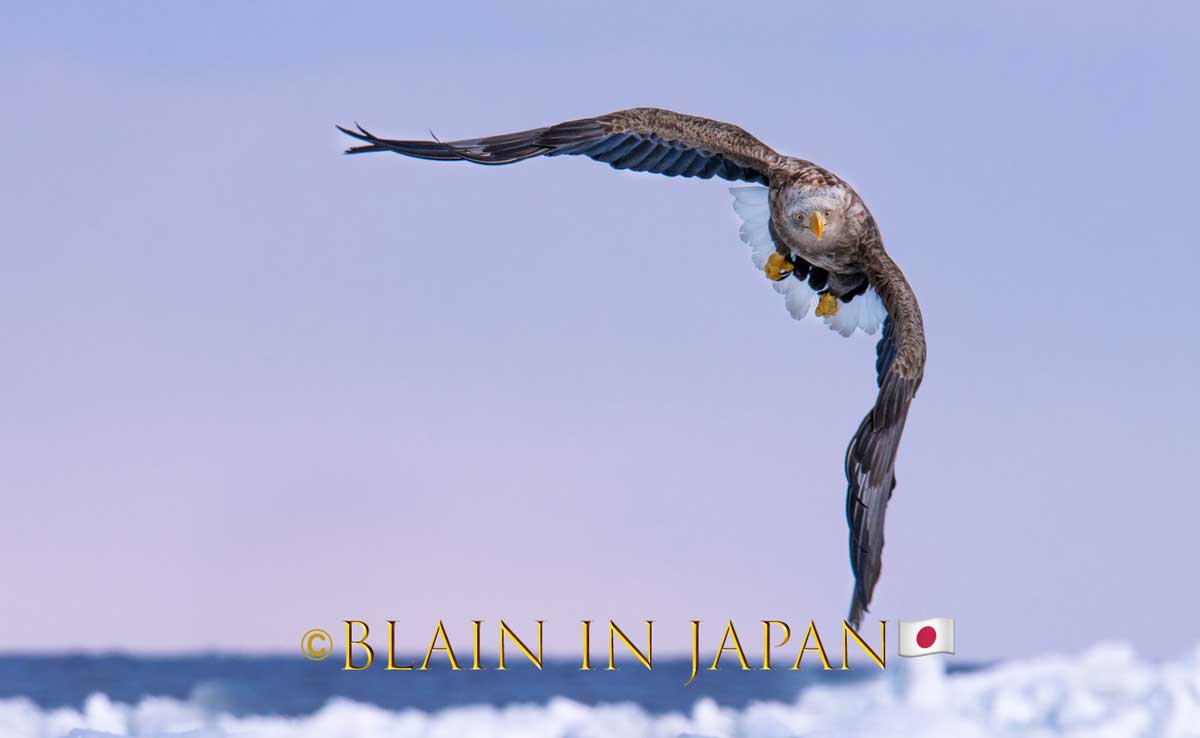 This mature white-tailed eagle, I photographed while leading my annual Hokkaido Photo Tour. The White-Tailed Eagle is also known as the white-tailed sea eagle, gray eagle, Eurasian sea eagle, which is one of the giant birds of prey in the family Accipitridae which includes other raptors such as hawks, kites, and harriers. The White-Tailed can be photographed all year round in Hokkaido, Japan. During harsh winters in Hokkaido, they co-exist with their bigger cousin The Steller’s Sea Eagle, and they can often be photographed in severe aerial combat or on a land fights, sometimes it's 2or 3 stellers against one white-tailed eagle, they especially rumble when fish is on the table. These beautiful majestic raptors are known as the fourth largest eagle in the world; they are the only species known to be more massive in bulk then the Steller’s Sea Eagle, the Harpy Eagle, and the Philippine Eagle. These eagles measure from 65-95cm in length with a wingspan of 170cm to 260cm or about 5ft 5 to 8ft 5 inches. It is said this raptor has the largest wingspan of any living eagle. The male and female are similar in coloring and appearance, the accurate way to tell them apart is by tarsus width and depth and bill depth, but this is next to impossible unless they are captive or captured then released with tracking devices on their legs. I usually tell them apart by their size in which females are generally about 30% heavier and about 15% greater in linear dimensions.
This mature white-tailed eagle, I photographed while leading my annual Hokkaido Photo Tour. The White-Tailed Eagle is also known as the white-tailed sea eagle, gray eagle, Eurasian sea eagle, which is one of the giant birds of prey in the family Accipitridae which includes other raptors such as hawks, kites, and harriers. The White-Tailed can be photographed all year round in Hokkaido, Japan. During harsh winters in Hokkaido, they co-exist with their bigger cousin The Steller’s Sea Eagle, and they can often be photographed in severe aerial combat or on a land fights, sometimes it's 2or 3 stellers against one white-tailed eagle, they especially rumble when fish is on the table. These beautiful majestic raptors are known as the fourth largest eagle in the world; they are the only species known to be more massive in bulk then the Steller’s Sea Eagle, the Harpy Eagle, and the Philippine Eagle. These eagles measure from 65-95cm in length with a wingspan of 170cm to 260cm or about 5ft 5 to 8ft 5 inches. It is said this raptor has the largest wingspan of any living eagle. The male and female are similar in coloring and appearance, the accurate way to tell them apart is by tarsus width and depth and bill depth, but this is next to impossible unless they are captive or captured then released with tracking devices on their legs. I usually tell them apart by their size in which females are generally about 30% heavier and about 15% greater in linear dimensions.
The adult white-tailed eagle is greyish mid-brown colored overall. The plumage is relatively uniform over most of the body and the wings, but the wing coverts are generally paler; the rest of their plumage is usually softer looking from the head, neck, and upper breast is often a desert dawn hue. But colors of the white-tailed eagle can easily range from bright, vibrant, beautiful colors to washed out and spotted. Their bill is massive and can be vibrant orange to dull in color, and it is razor-sharp to rip apart their prey in a hurry, and they are an aggressive bird. And when fishing is terrible, they have been known to prey on rodents, young deer even family pets, young children in Hokkaido are closely watched when outside in areas the birds are plentiful from my over 25 years experience in Japan from Nemuero to Rausu Hokkaido. Once in Hokkaido, during an annual birding festival just outside of Nemuro, myself and other photographers photographed a videographer being attacked, the bird was lifting him up by his shoulders with its talons lodged firmly into his skin, muscle and bone; he spent three days in the hospital, his wounds took months to heal. The males call is Kyi-Kyi-Kyi-Kli-Kliek-Yak with the head thrown back, and the last call normally ends with a lower Ko-Ko-Ko, the female has a similar call but deeper.
I photographed this White Tailed Sea Eagle in February 2019; we were in Zodiac boats, off the pacific coastline of Rausu Japan.
Namaste, Blain in Japan.
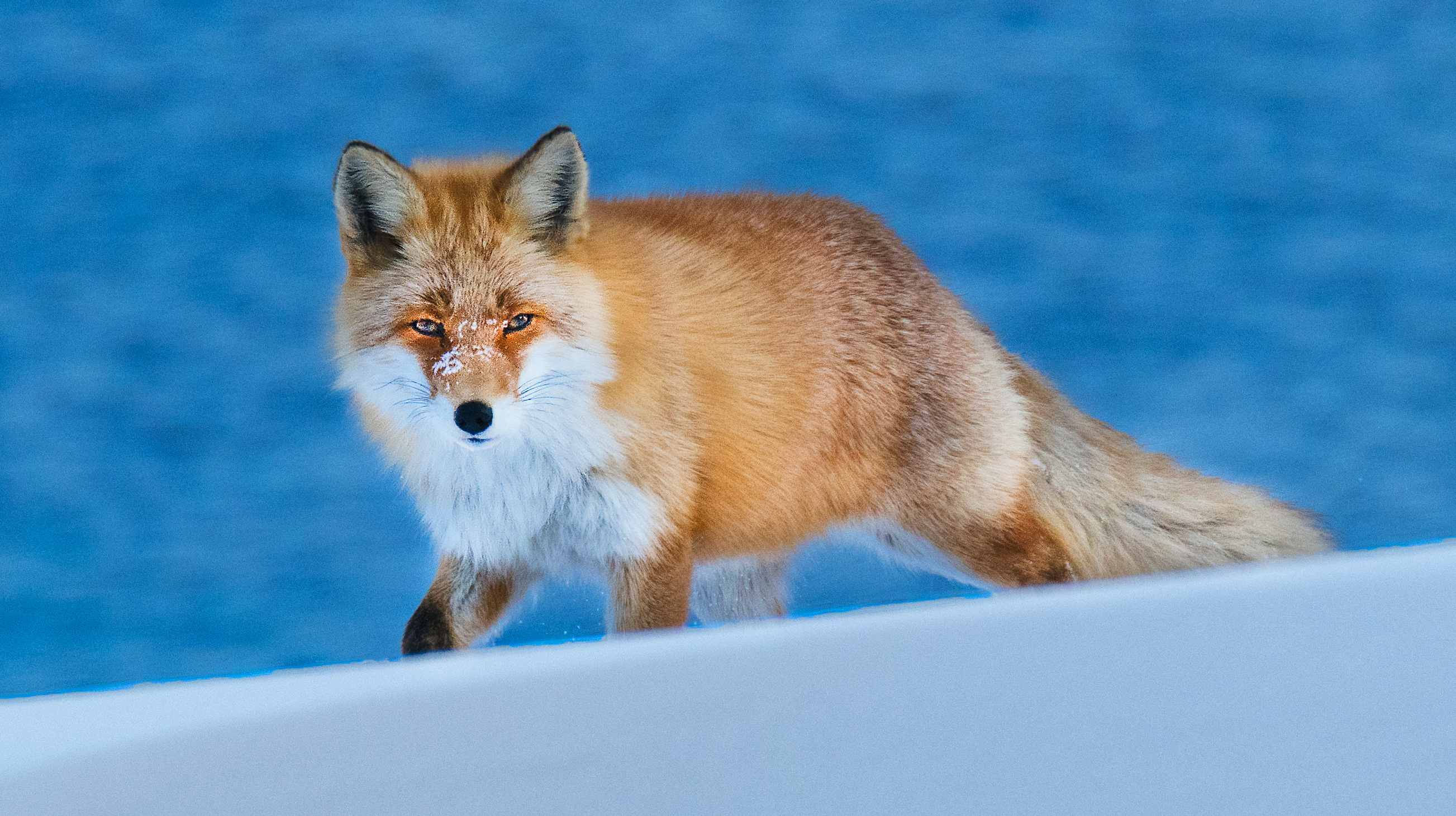 The Ezo Red Fox (Vulpes vulpes schrencki) is a subspecies of red fox that is spread throughout Hokkaido, Kuril Islands, Sakhalin, and the surrounding Islands. The ezo red fox is larger than the Japanese red fox that is found in the Honshu, Shikoku, and Kyushu. Also, there are slight differences in color, of the lines on the outer ears and limbs, but other than that, they are very similar. The ezo red foxes are a master hunter; they mainly feed on rats, mounting haires, birds, and insects, and in the autumn, they enjoy eating fruit and nuts. The mother foxes give birth to their kits in the early spring, so by autumn, there is potential to see young adults recently broken away from their mothers and hunting independently for the first season. If you see a young adult or a full-grown Ezo Red Fox, you will marvel at their lustrous coat and witness the contrast of their fur and the stark whites and blacks of their surroundings. Blain in Japan has spent over 20 years leading, Hokkaido photography tours and workshops, and understands the foxes are beautiful. Still, my team and I plead with you not to feed the wild animals when on a winter wonderland safari in Japan.
The Ezo Red Fox (Vulpes vulpes schrencki) is a subspecies of red fox that is spread throughout Hokkaido, Kuril Islands, Sakhalin, and the surrounding Islands. The ezo red fox is larger than the Japanese red fox that is found in the Honshu, Shikoku, and Kyushu. Also, there are slight differences in color, of the lines on the outer ears and limbs, but other than that, they are very similar. The ezo red foxes are a master hunter; they mainly feed on rats, mounting haires, birds, and insects, and in the autumn, they enjoy eating fruit and nuts. The mother foxes give birth to their kits in the early spring, so by autumn, there is potential to see young adults recently broken away from their mothers and hunting independently for the first season. If you see a young adult or a full-grown Ezo Red Fox, you will marvel at their lustrous coat and witness the contrast of their fur and the stark whites and blacks of their surroundings. Blain in Japan has spent over 20 years leading, Hokkaido photography tours and workshops, and understands the foxes are beautiful. Still, my team and I plead with you not to feed the wild animals when on a winter wonderland safari in Japan.
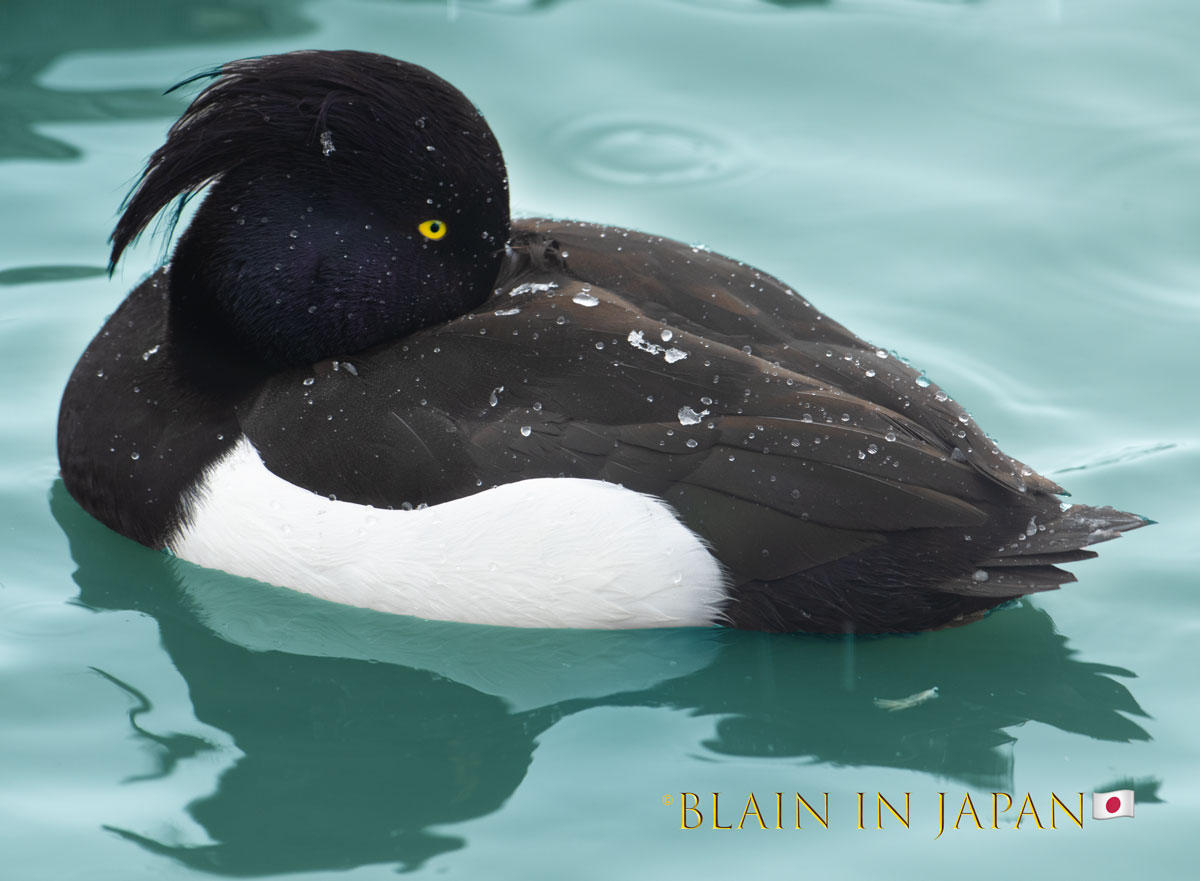 The tufted duck (Aythya Fuligula) is a smaller diving duck with hundreds of thousands found in Japan, and there over a million found across Eurasia. The adult male is all black except for its white flanks, and their blue-grey bill. An easy field marking for them is their long tuft feathers from the crown of the head, which is rather cool looking similar to a ponytail and, they have bright yellow eyes. The adult female is brown with paler flanks and easily confused with other ducks. The male tufted are mostly silent but call during courtship with a simple “wit-oo,” the female has a harsh call almost a growl “Karr” and mostly in flight. I Blain in Japan photographed this duck while leading a spring Hokkaido photo tour, the tufted duck is common on Hokkaido’s east coastline with the regions many lakes and marshlands, the duck's favorite food is freshwater mussels, and they are abundant in Hokkaido’s East coastline lakes and many marshes.
The tufted duck (Aythya Fuligula) is a smaller diving duck with hundreds of thousands found in Japan, and there over a million found across Eurasia. The adult male is all black except for its white flanks, and their blue-grey bill. An easy field marking for them is their long tuft feathers from the crown of the head, which is rather cool looking similar to a ponytail and, they have bright yellow eyes. The adult female is brown with paler flanks and easily confused with other ducks. The male tufted are mostly silent but call during courtship with a simple “wit-oo,” the female has a harsh call almost a growl “Karr” and mostly in flight. I Blain in Japan photographed this duck while leading a spring Hokkaido photo tour, the tufted duck is common on Hokkaido’s east coastline with the regions many lakes and marshlands, the duck's favorite food is freshwater mussels, and they are abundant in Hokkaido’s East coastline lakes and many marshes.
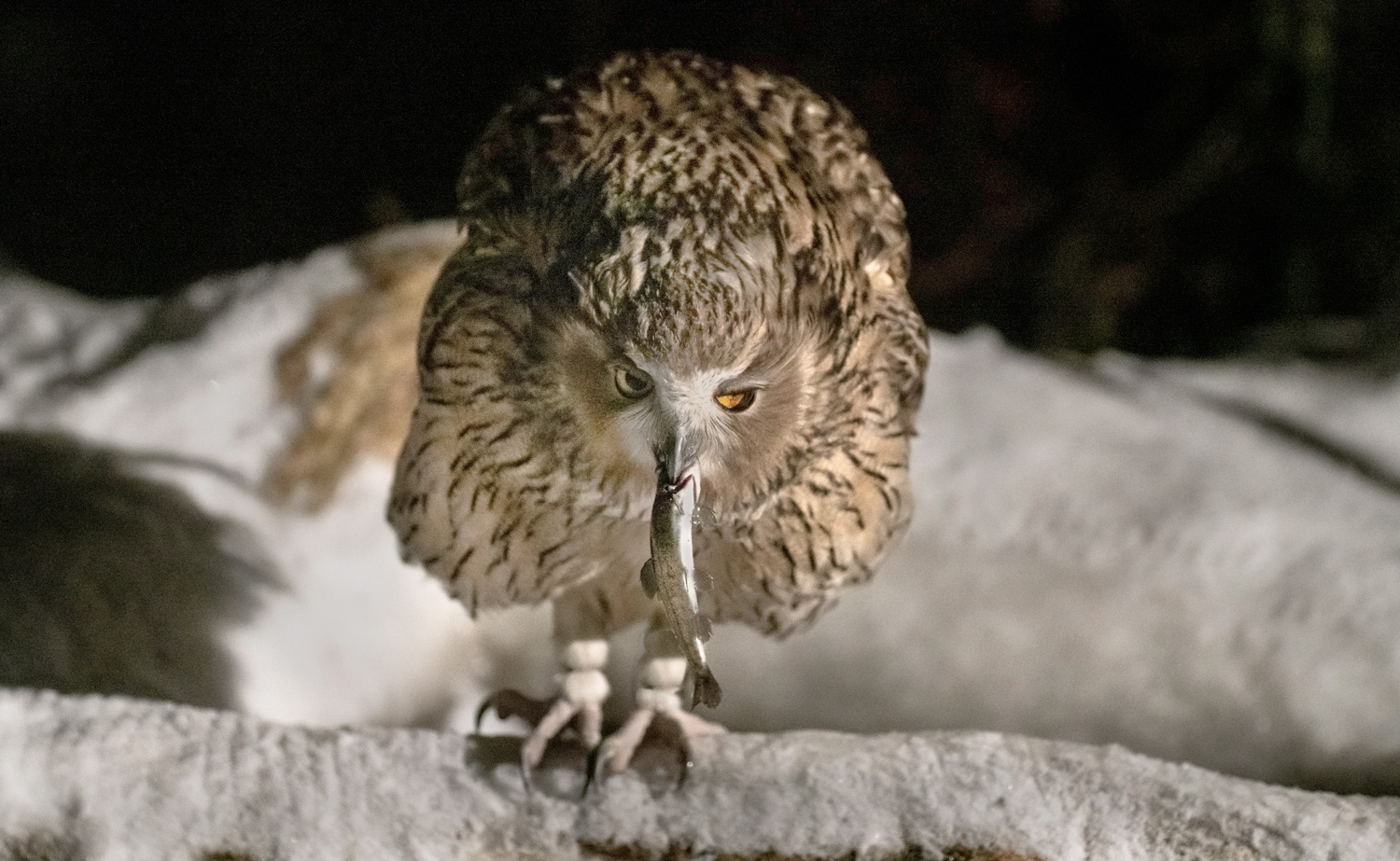 The Blakiston’s Fish Owl (Bubo blakistoni) s the largest species of owl on our planet, which is revered by the First Nations People of Japan, the Ainu. Males weigh from 2.95 to 3.6 kg (6.5 to 8 lb), while the female, weighs up to 2.95 to 4.6 kg (6.5 to 10.1 lb), and is about 25% larger. The Blakiston's fish owl measures 60 to 72 cm (24 to 28 in) in total length. The Eurasian eagle-owl is sometimes thought to be the largest owl species and is a close match in size to the Blakiston’s fish owl, but to date, all recoded measurements of the two put the Blakiston's Fish Owl as the overall largest species of owl. I photographed this Blakiston’s Fish Owl while leading my annual Hokkaido Photography Tour.
The Blakiston’s Fish Owl (Bubo blakistoni) s the largest species of owl on our planet, which is revered by the First Nations People of Japan, the Ainu. Males weigh from 2.95 to 3.6 kg (6.5 to 8 lb), while the female, weighs up to 2.95 to 4.6 kg (6.5 to 10.1 lb), and is about 25% larger. The Blakiston's fish owl measures 60 to 72 cm (24 to 28 in) in total length. The Eurasian eagle-owl is sometimes thought to be the largest owl species and is a close match in size to the Blakiston’s fish owl, but to date, all recoded measurements of the two put the Blakiston's Fish Owl as the overall largest species of owl. I photographed this Blakiston’s Fish Owl while leading my annual Hokkaido Photography Tour.
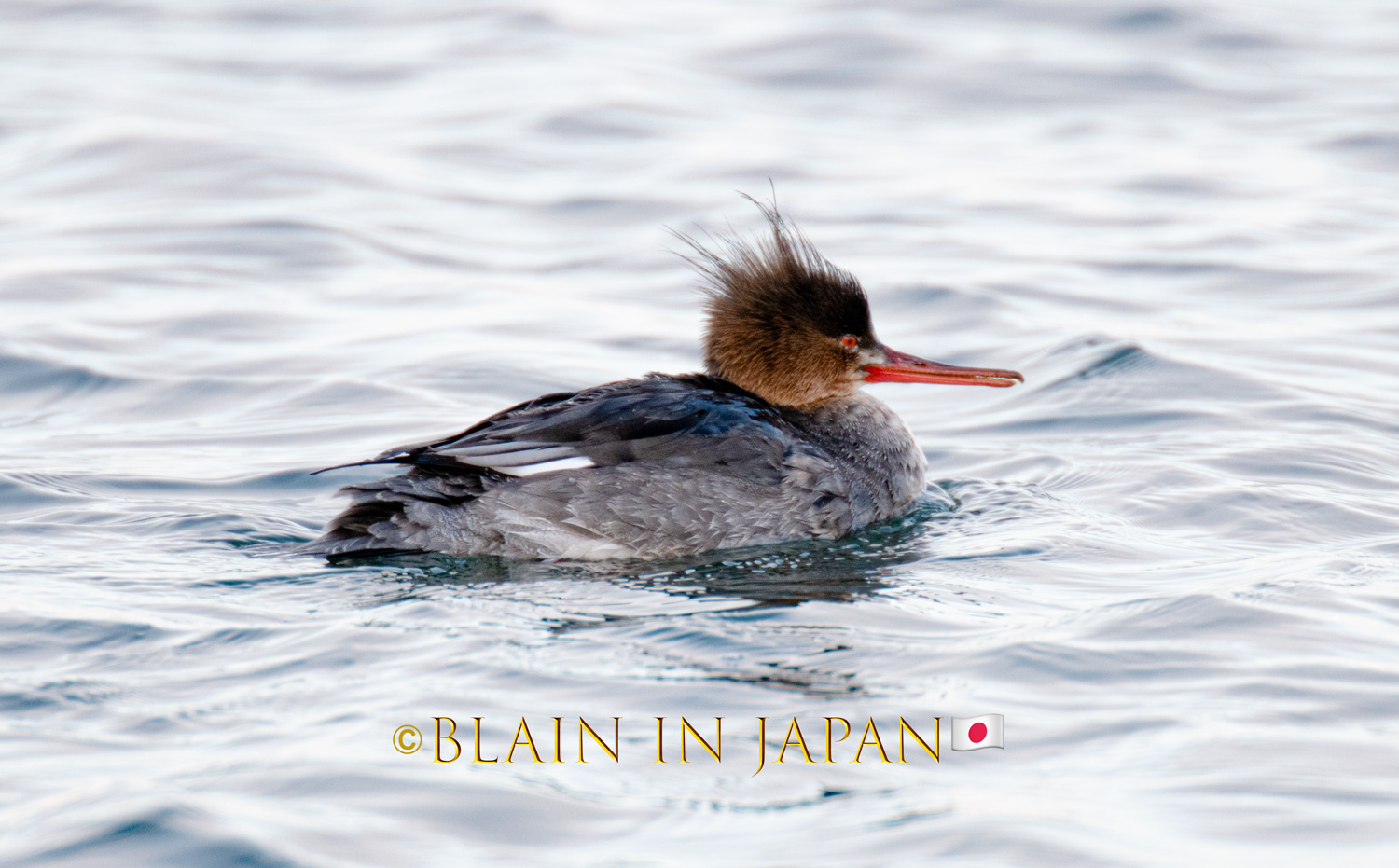 The Red-Breasted Merganser is in my top favorite birds of all time. This Sawbill is a sea duck and is the fastest of all ducks; it has been recorded at flying at speeds of160KM/h. The birds are 51–62 cm (20–24 in) long with a 70–86 cm (28–34 in) wingspan. It has a spiky crest and long thin red bill with serrated edges. The male has a dark head with a green sheen, a white neck with a rusty breast, a black back, and white underparts. Adult females have a rusty head and a greyish body. The juvenile is like the female, but lacks the white-collar and has a smaller white wing patch. Their female call is a rasping prrak prrak, while the male gives a feeble hiccup-and-sneeze display call. I photographed this one while leading my annual Hokkaido photo tour; I used the Nikon D850 camera, my lens the Nikon 800mm f/5.6E FL ED VR.
The Red-Breasted Merganser is in my top favorite birds of all time. This Sawbill is a sea duck and is the fastest of all ducks; it has been recorded at flying at speeds of160KM/h. The birds are 51–62 cm (20–24 in) long with a 70–86 cm (28–34 in) wingspan. It has a spiky crest and long thin red bill with serrated edges. The male has a dark head with a green sheen, a white neck with a rusty breast, a black back, and white underparts. Adult females have a rusty head and a greyish body. The juvenile is like the female, but lacks the white-collar and has a smaller white wing patch. Their female call is a rasping prrak prrak, while the male gives a feeble hiccup-and-sneeze display call. I photographed this one while leading my annual Hokkaido photo tour; I used the Nikon D850 camera, my lens the Nikon 800mm f/5.6E FL ED VR.
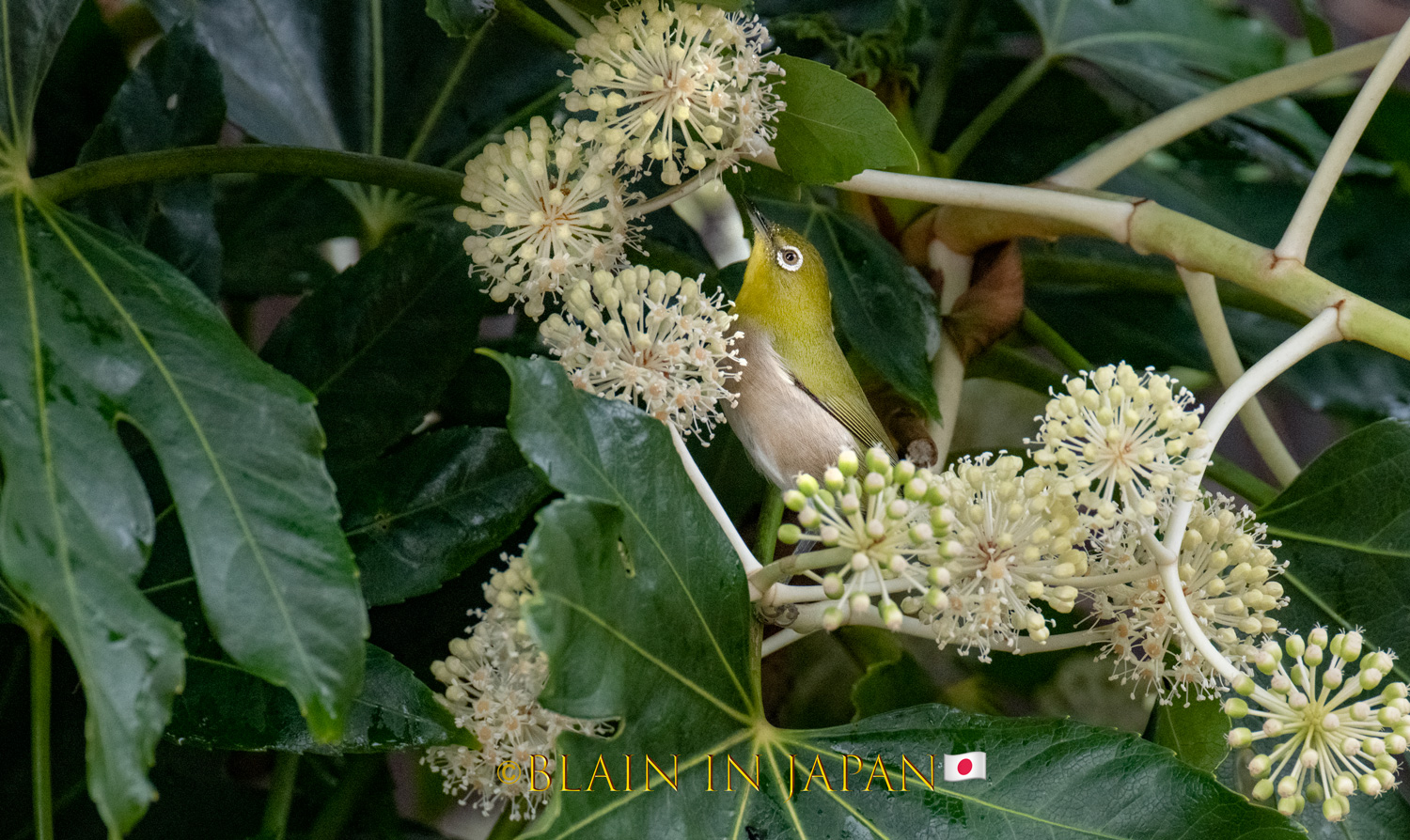 Fatsia Japonica is also known as the glossy-leaf fatsia paper plant or Japanese Aralia. It is a species of flowering plant in the family Araliaceae and is native to Central and Southern Japan, including Taiwan and Korea. It is an evergreen shrub that grows 1-3 meters or about 3ft to 10ft tall, with stout, sparsely branched stems. The leaves are spirally arranged and large, 20-40cm or about 7 - 16 inches in width, and on a petiole up to 50 cm or 20 inches in length, leathery, palmately lobed, and have 7-9 board lobes divided half or two-thirds of the way to the base of the leaf; the lobes are edged with coarse, blunt teeth. The flowers are small and beautifully grow in a ball; they bloom in late autumn or early winter. I know the flower has sweet nectar because the Warbling white-eye or Mejiro Japanese white-eye love slurping the nectar when these flowers bloom. I photographed these Meijiro and Fatsia Japonica from my kitchen window in Niigata, Japan. I used a Nikon D850, lens Sigma 120-300 mm Sport with a x2 teleconverter giving me 600mm. My camera's settings were ISO 6400 f/11 1/500s, and I had the Optical Stabilizer (OS) on, giving me the advantage of using a slower shutter speed. I would have liked a faster shutter speed, double or preferably triple, but with the birds feasting inside the shrub where light is low, I was already pushing the ISO, in my opinion.
Fatsia Japonica is also known as the glossy-leaf fatsia paper plant or Japanese Aralia. It is a species of flowering plant in the family Araliaceae and is native to Central and Southern Japan, including Taiwan and Korea. It is an evergreen shrub that grows 1-3 meters or about 3ft to 10ft tall, with stout, sparsely branched stems. The leaves are spirally arranged and large, 20-40cm or about 7 - 16 inches in width, and on a petiole up to 50 cm or 20 inches in length, leathery, palmately lobed, and have 7-9 board lobes divided half or two-thirds of the way to the base of the leaf; the lobes are edged with coarse, blunt teeth. The flowers are small and beautifully grow in a ball; they bloom in late autumn or early winter. I know the flower has sweet nectar because the Warbling white-eye or Mejiro Japanese white-eye love slurping the nectar when these flowers bloom. I photographed these Meijiro and Fatsia Japonica from my kitchen window in Niigata, Japan. I used a Nikon D850, lens Sigma 120-300 mm Sport with a x2 teleconverter giving me 600mm. My camera's settings were ISO 6400 f/11 1/500s, and I had the Optical Stabilizer (OS) on, giving me the advantage of using a slower shutter speed. I would have liked a faster shutter speed, double or preferably triple, but with the birds feasting inside the shrub where light is low, I was already pushing the ISO, in my opinion.
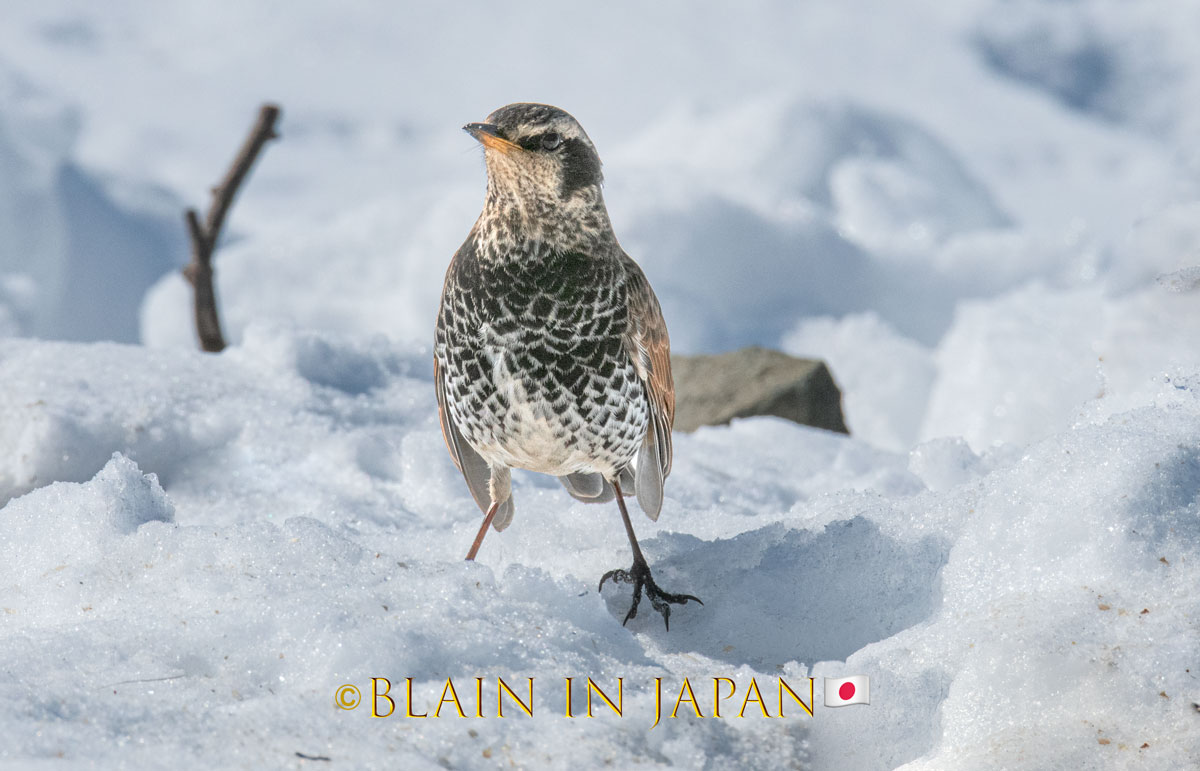 The Dusky Thrush (Turdus eunomus) is a remember of the thrush family and is closely related to the more southerly breeding Naumann’s thrush both of them have been often regarded as conspecific. They are between double and triple the size of the common tree sparrow. The Dusky Thrush breeds in eastern Siberia to Kamchatka and winters over in Hokkaido, Japan, and some other parts of Asia. I photographed this Dusky Thrush while leading my annual Validates Day Hokkaido Photography Tour.
The Dusky Thrush (Turdus eunomus) is a remember of the thrush family and is closely related to the more southerly breeding Naumann’s thrush both of them have been often regarded as conspecific. They are between double and triple the size of the common tree sparrow. The Dusky Thrush breeds in eastern Siberia to Kamchatka and winters over in Hokkaido, Japan, and some other parts of Asia. I photographed this Dusky Thrush while leading my annual Validates Day Hokkaido Photography Tour.
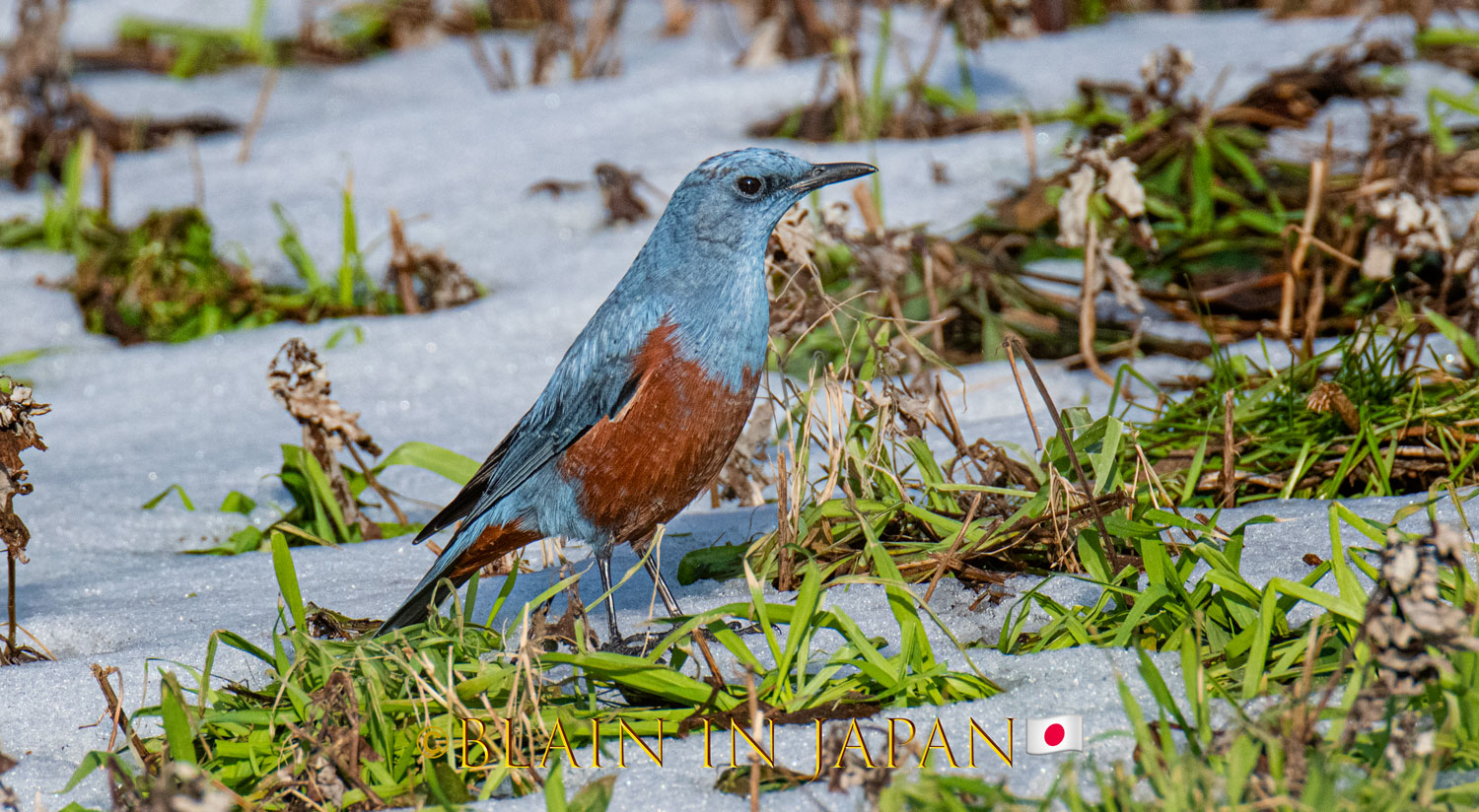 The Blue rock thrush (Monticola solitarius - M.s. Philippensis) is unmistakably beautiful with its blue plumage and rusty brown belly onto its vent. Females and immatures are less prominent, with dark brown upperparts and paler brown scaly underparts. The blue rock thrush is 21–23 cm (8.3–9.1 in) in length and is a starling-sized bird. These birds are residents of Japan and occur in South East Asia, Europe, North Africa; most of Asia's populations are migratory wintering in sub-Saharan Africa or India and other southeastern parts of Asia. This bonnie of a bird was formerly placed in the family Turdidae. Still, studies have shown that the species is more closely related to the Old World Flycatcher family Muscicapidae. I photographed this Blue Rock Thrush while leading a Niigata Japan Birding Tour.
The Blue rock thrush (Monticola solitarius - M.s. Philippensis) is unmistakably beautiful with its blue plumage and rusty brown belly onto its vent. Females and immatures are less prominent, with dark brown upperparts and paler brown scaly underparts. The blue rock thrush is 21–23 cm (8.3–9.1 in) in length and is a starling-sized bird. These birds are residents of Japan and occur in South East Asia, Europe, North Africa; most of Asia's populations are migratory wintering in sub-Saharan Africa or India and other southeastern parts of Asia. This bonnie of a bird was formerly placed in the family Turdidae. Still, studies have shown that the species is more closely related to the Old World Flycatcher family Muscicapidae. I photographed this Blue Rock Thrush while leading a Niigata Japan Birding Tour.
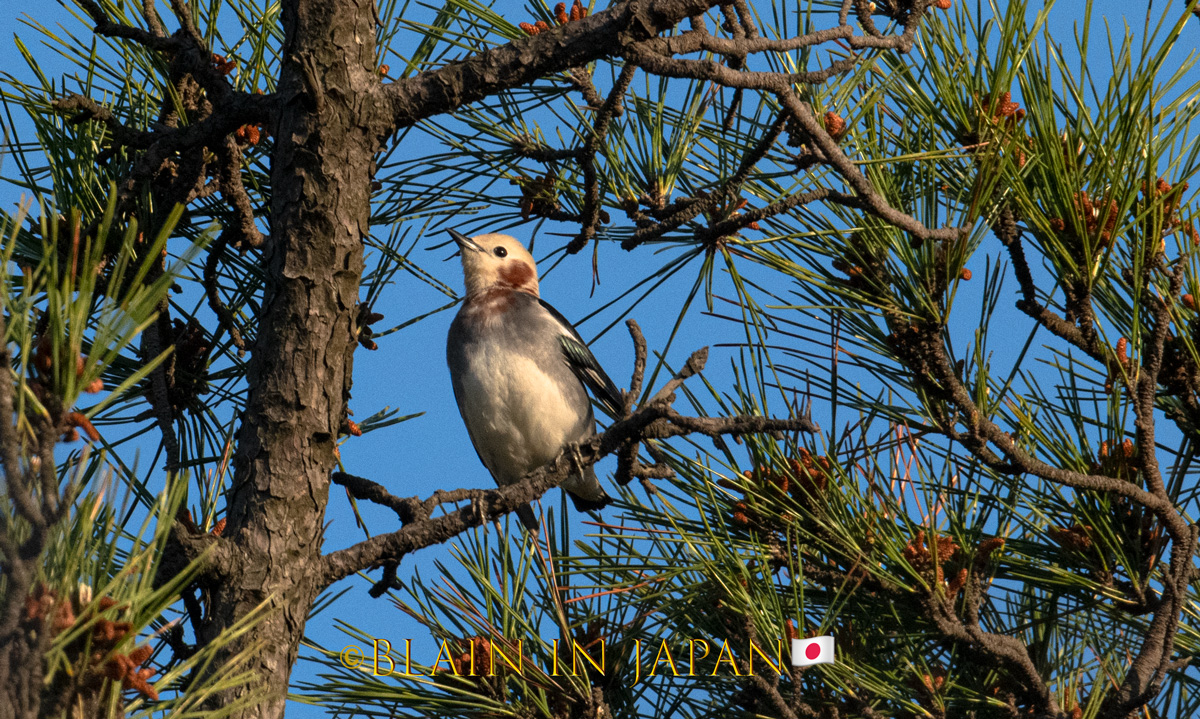 The Chestnut-Cheeked starling (Agropsar philippensis) is a species of starling in the family Sturnidae. They are migratory, spending the Spring and summer in Niigata, Japan, and elsewhere along the sea of Japan to Hokkaido from mid-Apri and make their return migration to either the Island of Borneo or the Philippines sometime in September. These Starlings stop-over in Kyushu, Japan, for roughly a week or more to rest and feed upon their arrival to Japan and departure. Their breeding and ecology have been intensively analyzed and studied, and we know what effect climate change has on their breeding season. However, migration due to climate change is still a question mark, as it is with most species migrations. Birders and the Ornithological Society of Japan are working together to answer this question. In Japan, over Six hundred bird species have been recorded to date. The majority, more than 60%, are migratory. Approximately 60 species are endemic or sub-regional endemic. Japan is latitudinally long at over 3,000 kilometers and has 6,852 islands Japan’s flora and fauna are divided by two ecological lines, the Blakiston’s Line, which is between Hokkaido and Honshu, and the Watase Line, which is just below Kyushu. Certain wildlife species are found only north of the Blakiston’s Line, while certain other species are only found South of it. I photographed this Chestnut-Cheked Starling while leading a Japan Birding Tour.
The Chestnut-Cheeked starling (Agropsar philippensis) is a species of starling in the family Sturnidae. They are migratory, spending the Spring and summer in Niigata, Japan, and elsewhere along the sea of Japan to Hokkaido from mid-Apri and make their return migration to either the Island of Borneo or the Philippines sometime in September. These Starlings stop-over in Kyushu, Japan, for roughly a week or more to rest and feed upon their arrival to Japan and departure. Their breeding and ecology have been intensively analyzed and studied, and we know what effect climate change has on their breeding season. However, migration due to climate change is still a question mark, as it is with most species migrations. Birders and the Ornithological Society of Japan are working together to answer this question. In Japan, over Six hundred bird species have been recorded to date. The majority, more than 60%, are migratory. Approximately 60 species are endemic or sub-regional endemic. Japan is latitudinally long at over 3,000 kilometers and has 6,852 islands Japan’s flora and fauna are divided by two ecological lines, the Blakiston’s Line, which is between Hokkaido and Honshu, and the Watase Line, which is just below Kyushu. Certain wildlife species are found only north of the Blakiston’s Line, while certain other species are only found South of it. I photographed this Chestnut-Cheked Starling while leading a Japan Birding Tour.
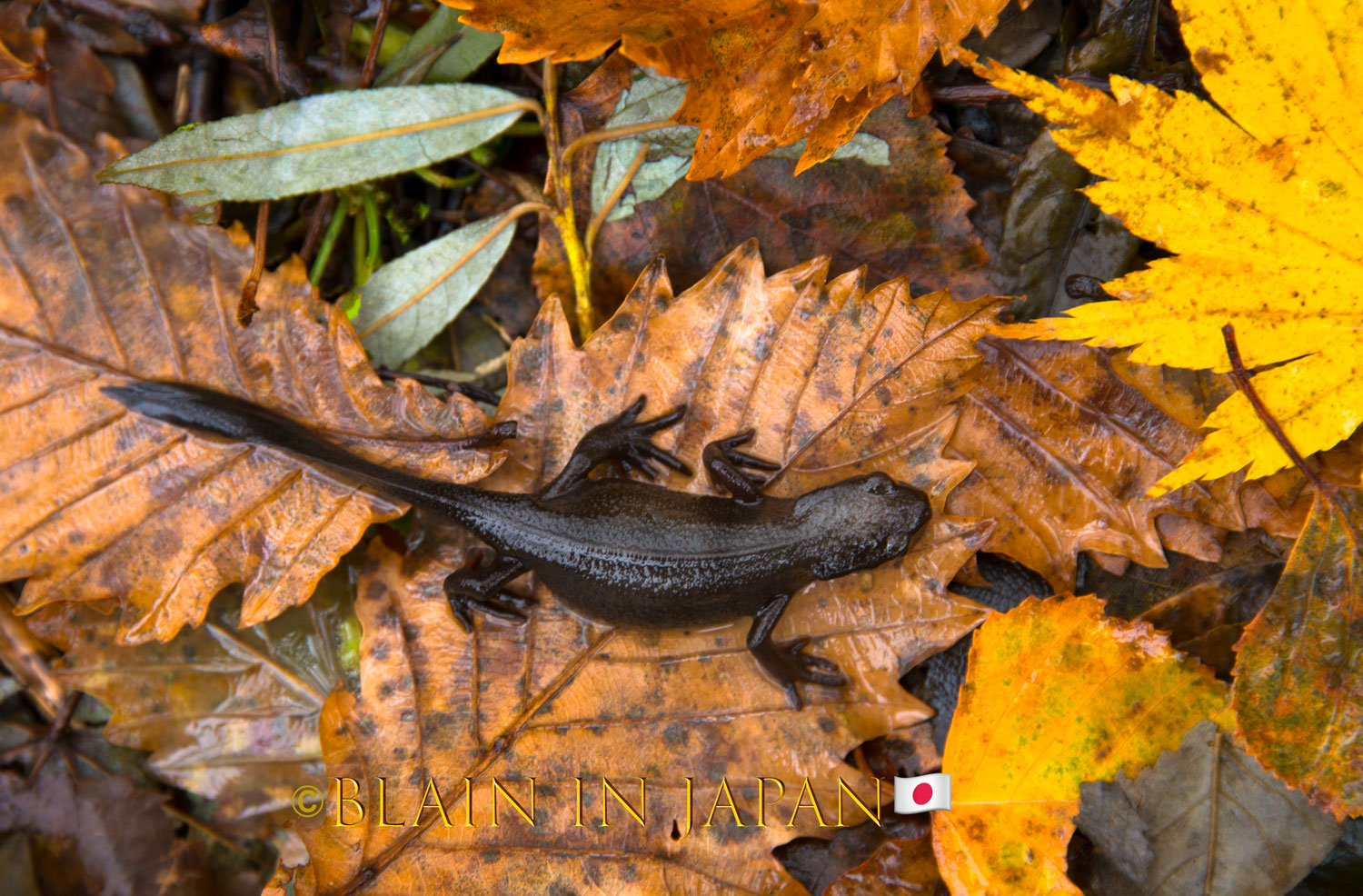 The Japanese giant salamander (Andrias japonicus) is a species of salamander in the family Cryptobranchidae. The species is endemic to Japan, and locally is known as Ōsanshōuo (オオサンショウウオ/大山椒魚), meaning (giant pepper fish). They grow up to 5 feet (1.5 m); there are currently only five known family members Cryptobranchidae: the Japanese, Chinese, and South China giant salamanders, an undescribed Andrias species from eastern China, and the hellbender (Cryptobranchus alleganiensis). I photographed this tiny Salamander while leading my annual authentic Japan autumn leaves tour, following an ancient essence of Japan pilgrimage route.
The Japanese giant salamander (Andrias japonicus) is a species of salamander in the family Cryptobranchidae. The species is endemic to Japan, and locally is known as Ōsanshōuo (オオサンショウウオ/大山椒魚), meaning (giant pepper fish). They grow up to 5 feet (1.5 m); there are currently only five known family members Cryptobranchidae: the Japanese, Chinese, and South China giant salamanders, an undescribed Andrias species from eastern China, and the hellbender (Cryptobranchus alleganiensis). I photographed this tiny Salamander while leading my annual authentic Japan autumn leaves tour, following an ancient essence of Japan pilgrimage route.
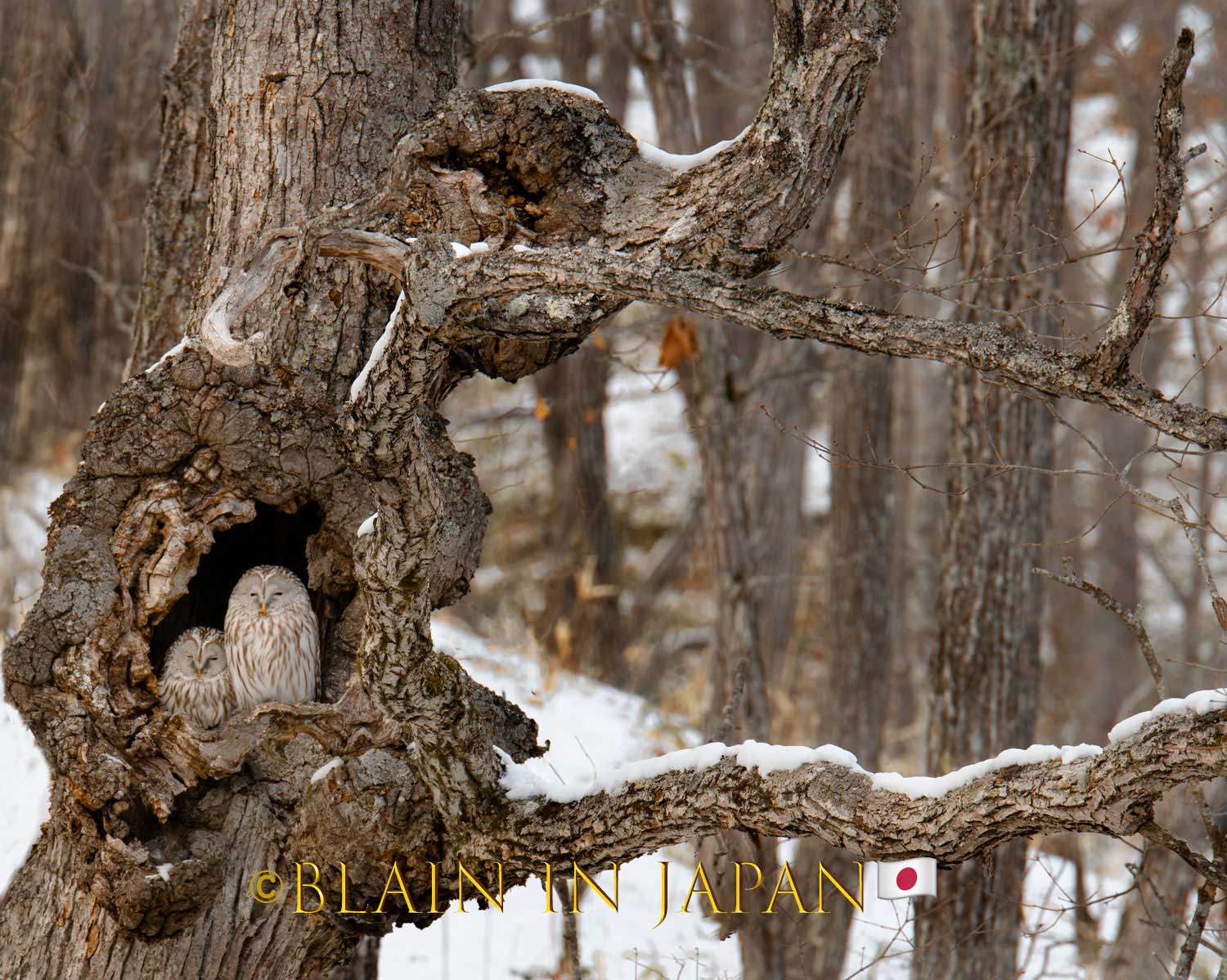 The Ural owl (Strix uralensis) is a rather large species and is a nocturnal owl. It is a member of the Strigidae family. I photographed this mating pair while leading my annual Japan Hokkaido Wildlife Tour - Japan photography workshop. The Ural has a broad, rounded head with a round facial disc, barring a v-shaped indentation. They are not colorful and tend to be a plain pale greying brown to whitish overall. Mature owls length from 50 to 64 cm (20 to 25 in) their wingspan is 110 to 134 cm (3 ft 7 to 4 ft 5 in). Their breeding season is from February to July; the clutch amount of eggs is generally 3 but can be up to 6. Their range includes Japan, Russia, Belarus, Latvia, Estonia, Finland, Sweeden, Norway, Denmark, and can be found in Alpine regions of Europe.
The Ural owl (Strix uralensis) is a rather large species and is a nocturnal owl. It is a member of the Strigidae family. I photographed this mating pair while leading my annual Japan Hokkaido Wildlife Tour - Japan photography workshop. The Ural has a broad, rounded head with a round facial disc, barring a v-shaped indentation. They are not colorful and tend to be a plain pale greying brown to whitish overall. Mature owls length from 50 to 64 cm (20 to 25 in) their wingspan is 110 to 134 cm (3 ft 7 to 4 ft 5 in). Their breeding season is from February to July; the clutch amount of eggs is generally 3 but can be up to 6. Their range includes Japan, Russia, Belarus, Latvia, Estonia, Finland, Sweeden, Norway, Denmark, and can be found in Alpine regions of Europe.
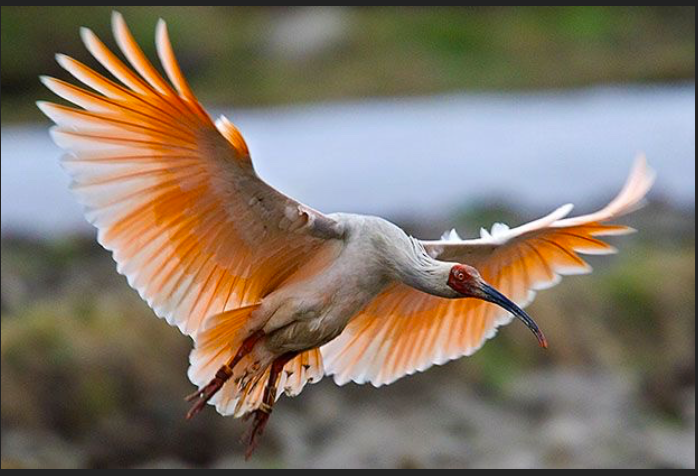
The Crested Ibis, known as the Japanese crested ibis or Toki, is a much rarer bird than the red-crowned crane that has had a fantastic comeback in northern Japan and a bird species I adore spotting and photographing on my annual Hokkaido photo tour. The Crested Ibis (Nipponia Nippon) is a large white plumaged wading bird with a wingspan on average of 140CM and a length of 80CM weighing about a kilogram. Their population is on the comeback, and Sado Island, Japan, is where I photograph them. I hope in the near future I will gain permission to lead photography workshops for international birders to spot and photograph these rare and beautiful birds.
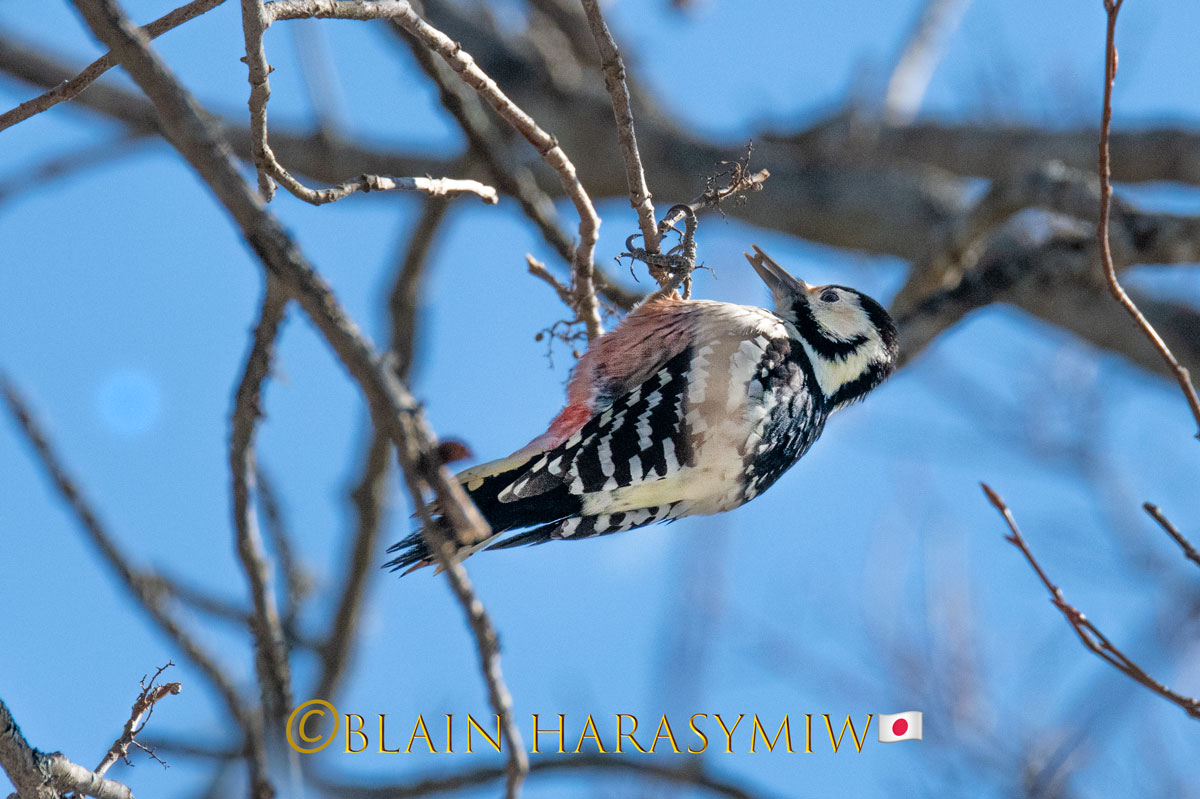 The White-backed Woodpecker (Dendrocopos leucotos) is endemic to Japan and parts of Eurasia. The great spotted woodpecker is similar in color, but the white-backed woodpecker is larger, has a longer bill, underparts are streaked. I photographed this female white-backed woodpecker while leading my annual Hokkaido Photo tour.
The White-backed Woodpecker (Dendrocopos leucotos) is endemic to Japan and parts of Eurasia. The great spotted woodpecker is similar in color, but the white-backed woodpecker is larger, has a longer bill, underparts are streaked. I photographed this female white-backed woodpecker while leading my annual Hokkaido Photo tour.
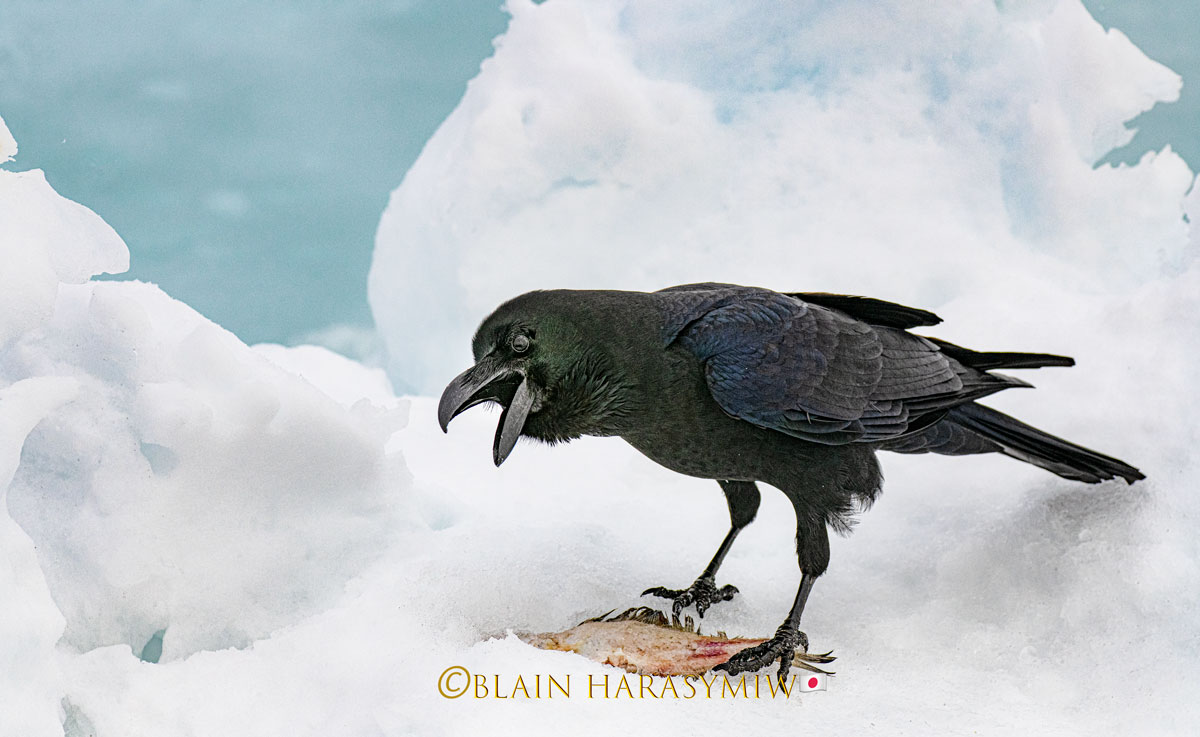
Kamtschaticus the Kamchatkan Raven or Hokkaido Raven (Corvus Corax), is the largest of all passerine birds. And one of the most intelligent birds on our planet. I have seen these birds on pack-ice squawk back at the Steller's Sea Eagles and take a stand but smartly quickly back off. In my 30 years Leading Hokkaido photo tour, I have never seen a Steller's sea eagle catching and eating a Raven, but I have seen the Steller's Sea eagle, an ice age relic that has survived three ice ages without the need to evolve, catch seagulls when the fishing is slow. I took this image while leading my annual Hokkaido photo tour.
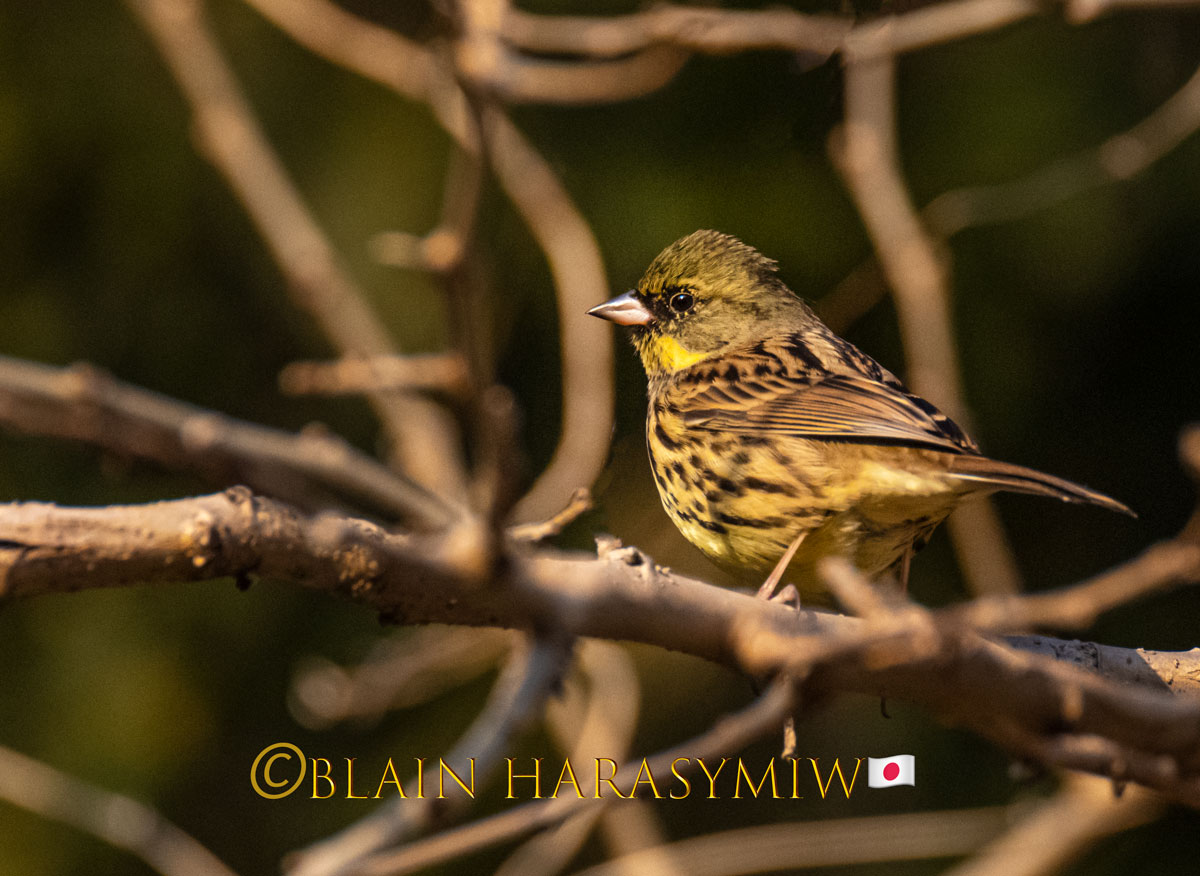
Blackーfaced bunting (アオジ) (Emberiza spodocephala) is a passerine bird in the bunting family. They bread in Hokkaido Japan, where I photograph them on my annual Hokkaido photo tour in spring and summer, and they also breed in Southern Siberia and northern China. They are migratory and winter over in Kanagawa, Tokyo, Kanto region Japan. They can also be found wintering over in India, Southern China, and other parts of South-East Asia. Buntings are small birds about 16cm long. Breeding males have a dark gray head with a mix of yellow-green and black between the bill and eye; their upper parts are brown and heavily streaked dark in color, upper parts are yellowish with some white and brown flank streaks. Females and juveniles have a lighter head appearance, with olive-grey cheeks and a creamy white supercilious. Their underparts are yellow with heavily streaked dark browns. I photographed this beautiful songbird black-faced bunting while photographing in the backcountry of Kanagawa, about an hour's hike from my home just outside of Tokyo. Camera Nikon Z9, ISO 2000, F/10, 1/2000s, lens 120-300 F2.8 DG OS HSM/Sports, with a X2 teleconverter at 600mm.
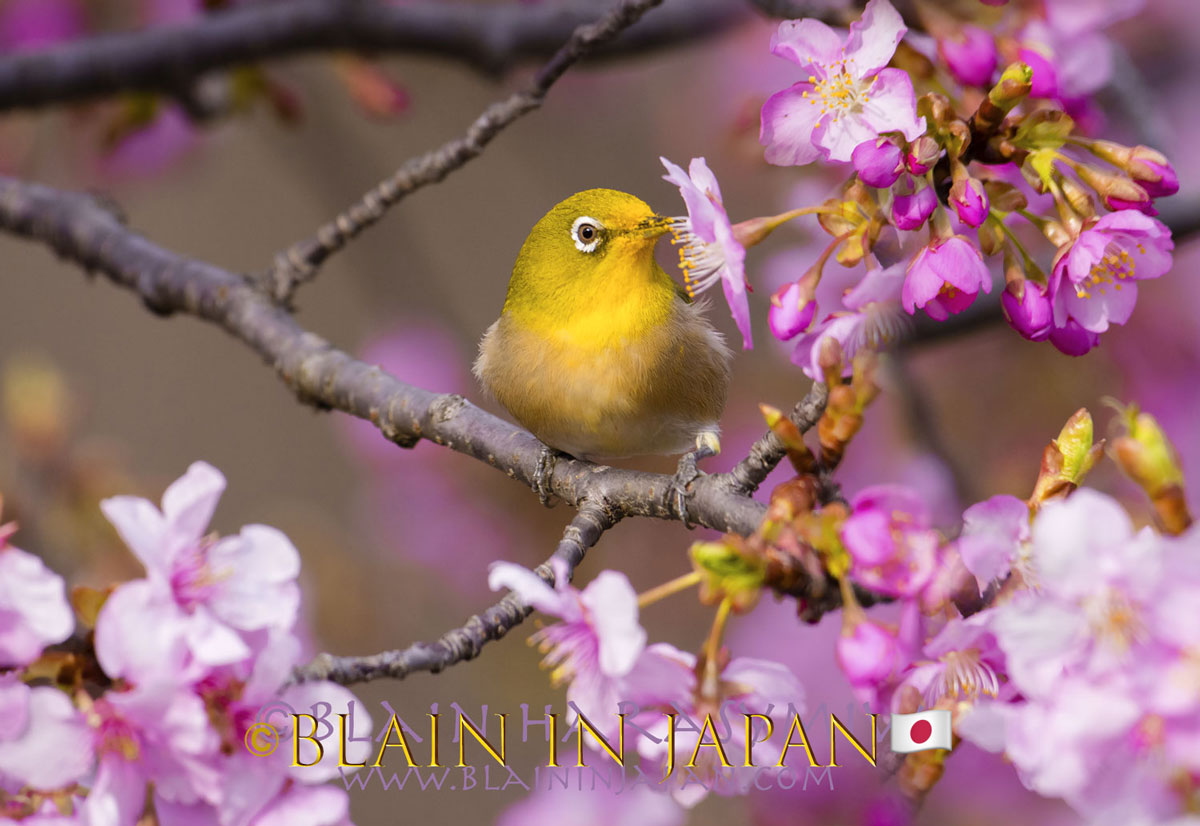
Kawazu Sakura (Cerasus lannesiana) 桜 bloom in February and across the Kanto region and in Kyushu, Japan. They are named after a small village in Kawazu Shizuoka, Japan, since their discovery in the region in the 1950s. Today they have an annual festival in the town of Kawazu with a lighting event after sunset(河津桜祭り), But they have been planted across Japan. One can enjoy (Hanami, flower viewsing) them from Kyushu to Hokkaido. They have become more and more popular due to their stunning deep dark vivid colors VS other species of cherry blossom flowering trees. Flowering cherry blossom trees do not grow eatable fruit; they are ornamental. I have even photographed these stunning vivid pink pebbles on my Hokkaido photo tour in spring. And don’t forget anytime you spot a flowering tree or shrub, you can expect birds to be there slurping the sweet, nourishing nectar. I took this image after my annual winter birding Hokkaido photo tour in February.

Somei Yoshino or Yoshino cherry 染井吉野 ソメイヨシノ (Prunus yedoensis), this tree is a hybrid from Japan, and it is the most popular, widely planted Cherry blossoming tree in Japan and around the world. Even during my annual Hokkaido photo tour, I can spot and photograph these celestial, zen, calming sakura as part of a blended photography and shinrin-yoku, or forest bathing experience. Somei Yoshino is a clone from a single tree and is propagated by grafting. Somei village, as it was known in the Edo period, is now known as Toshima and is the birthplace of the Somei Yoshino cherry blossom tree, which is a village located in Oshima sub-prefecture Tokyo. During the Edo period, Somei village was a center for plant nurseries; today, the region is one of eight central wards of the Tokyo metropolitan area. In the Kanto region, excessive pesticides are used to deal with the caterpillars and other insects that infest the trees. As a result of the pesticide use, the Eurasian Tree sparrow population has declined by 90% in urban and metropolitan areas. Along the Sea of Japan, from Niigata to Hokkaido going north, the pesticide is not as heavily used, so less than half the sparrow population has been affected. The sparrows can be found in large numbers eating the insect and insect larvae as well as indulging in the sweet, succulent nectar of the sakura bloom. The Somei Yoshino cherry blossom tree is a small, deciduous tree that grows to be 5 to 12 meters (16 – 39 ft) (rarely 15 meters (49 ft)) tall at maturity. It grows well in hardiness zones 5 – 8, which encompasses most of Japan, and does well in full sun and moist but well-drained soil; the cherry blossom trees are often bronze-toned when newly emerged, becoming dark green by summer. I have one of the Somei Yoshino trees in my backyard, and it measures 15 meters, a rare tree indeed.
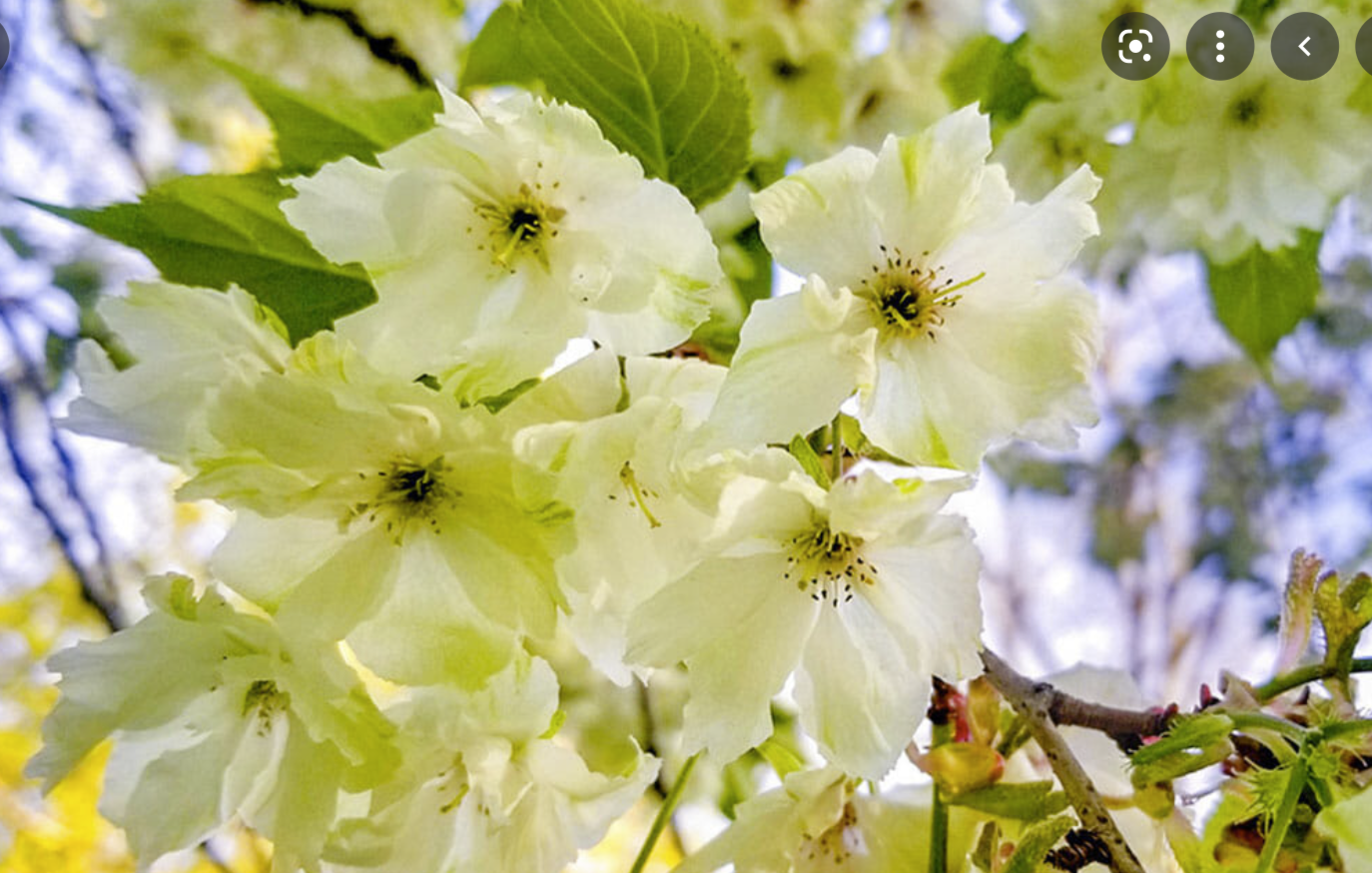 Ukon (ウコン) cherry blossom (Cerasus Sato-zakura Group 'Grandiflora' A. Wagner). Ukon is the Japanese name for turmeric, and the yellow-green and green flowers are why the name was chosen for this particular cultivar. The Ukon cherry blossom tree commonly takes on the shape of a sake cup, narrow at the base and slowly expanding until reaching the apex of tree. The blossoms themselves are yaezakura (double-blossom) which means the petals usually number between 15 to 20 per flower, and the light brown leaves encircling the blossoms, which are 5 - 8 centimeters long with fine, pointed tips and are almost jagged in appearance, add a subtle contrast to the ukon sakura. The diameter of the flower ranges from 3.5 to 4 centimeters, and the trees range in height from 3 - 5 meters. In the Tokyo area, the Ukon usually reaches full bloom in Mid-April, on my Hokkaido photo tour they can be photographed in May.
Ukon (ウコン) cherry blossom (Cerasus Sato-zakura Group 'Grandiflora' A. Wagner). Ukon is the Japanese name for turmeric, and the yellow-green and green flowers are why the name was chosen for this particular cultivar. The Ukon cherry blossom tree commonly takes on the shape of a sake cup, narrow at the base and slowly expanding until reaching the apex of tree. The blossoms themselves are yaezakura (double-blossom) which means the petals usually number between 15 to 20 per flower, and the light brown leaves encircling the blossoms, which are 5 - 8 centimeters long with fine, pointed tips and are almost jagged in appearance, add a subtle contrast to the ukon sakura. The diameter of the flower ranges from 3.5 to 4 centimeters, and the trees range in height from 3 - 5 meters. In the Tokyo area, the Ukon usually reaches full bloom in Mid-April, on my Hokkaido photo tour they can be photographed in May.
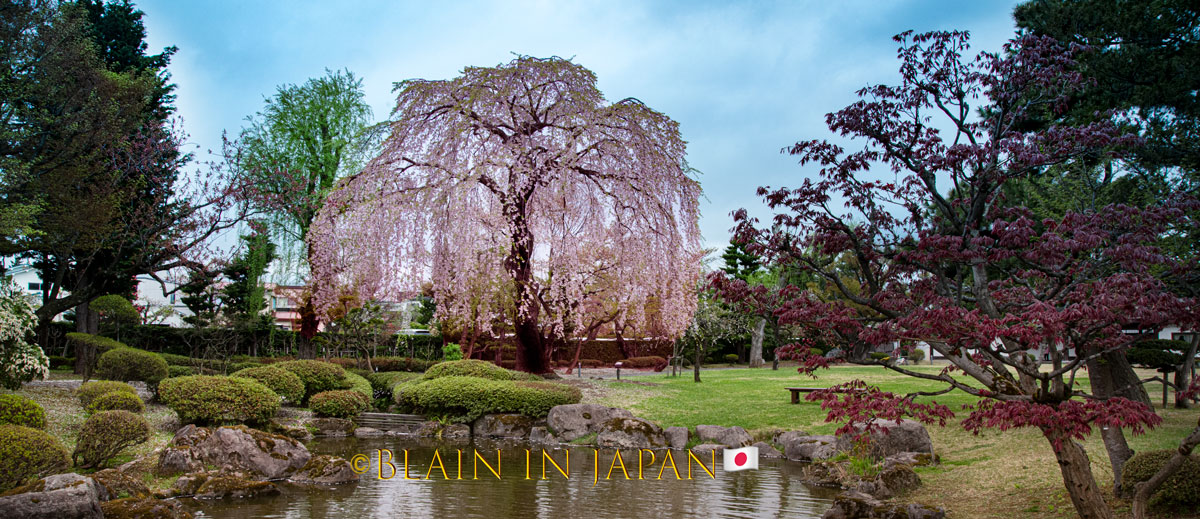 Japan’s weeping cherry blossom (Prunus subhirtella) 枝垂れ桜 is a catchall term for several subspecies of weeping cherry blossoms which were derived from the wild species, Edohigan. The weeping cherry blossom is the oldest cultivar among all the confirmed cultivars which are currently recognized in Japan. The wild species of the weeping cherry blossom can exceed 30 m (~100 ft). The leaves are commonly oval-shaped and 5 - 10 cm (2 - 4 in) long, having five petals with white or a creamy pink appearance. In the wild, the weeping variety only blooms once it has reached 10 m (33 ft) in height. The domesticated varieties tended to in shrines, and temple grounds are much smaller compared to their wild species, reaching approximately 5 m (16.5 ft) tall and bloom much more rapidly than their wild counterparts. The weeping cherry blossom variety is resistant to cold temperatures and damage caused by snow. The shidare sakura grows slower than other cultivars, but it has a sturdy trunk, leading to many trees exceeding 1,000 years in age. For example, the Jinda-zakura is more than 2,000 years old, the Usuzumi-zakura is 1,500 years old, and the Daigo-zakkura is more than a century old. The weeping cherry blossom is considered sacred by some and has become a landmark for many Shinto shrines across Japan. Annually I visit and photograph the most sacred weeping cherry blossom trees from my cherry blossom photo tour Tokyo to my Hokkaido photo tour in May.
Japan’s weeping cherry blossom (Prunus subhirtella) 枝垂れ桜 is a catchall term for several subspecies of weeping cherry blossoms which were derived from the wild species, Edohigan. The weeping cherry blossom is the oldest cultivar among all the confirmed cultivars which are currently recognized in Japan. The wild species of the weeping cherry blossom can exceed 30 m (~100 ft). The leaves are commonly oval-shaped and 5 - 10 cm (2 - 4 in) long, having five petals with white or a creamy pink appearance. In the wild, the weeping variety only blooms once it has reached 10 m (33 ft) in height. The domesticated varieties tended to in shrines, and temple grounds are much smaller compared to their wild species, reaching approximately 5 m (16.5 ft) tall and bloom much more rapidly than their wild counterparts. The weeping cherry blossom variety is resistant to cold temperatures and damage caused by snow. The shidare sakura grows slower than other cultivars, but it has a sturdy trunk, leading to many trees exceeding 1,000 years in age. For example, the Jinda-zakura is more than 2,000 years old, the Usuzumi-zakura is 1,500 years old, and the Daigo-zakkura is more than a century old. The weeping cherry blossom is considered sacred by some and has become a landmark for many Shinto shrines across Japan. Annually I visit and photograph the most sacred weeping cherry blossom trees from my cherry blossom photo tour Tokyo to my Hokkaido photo tour in May.
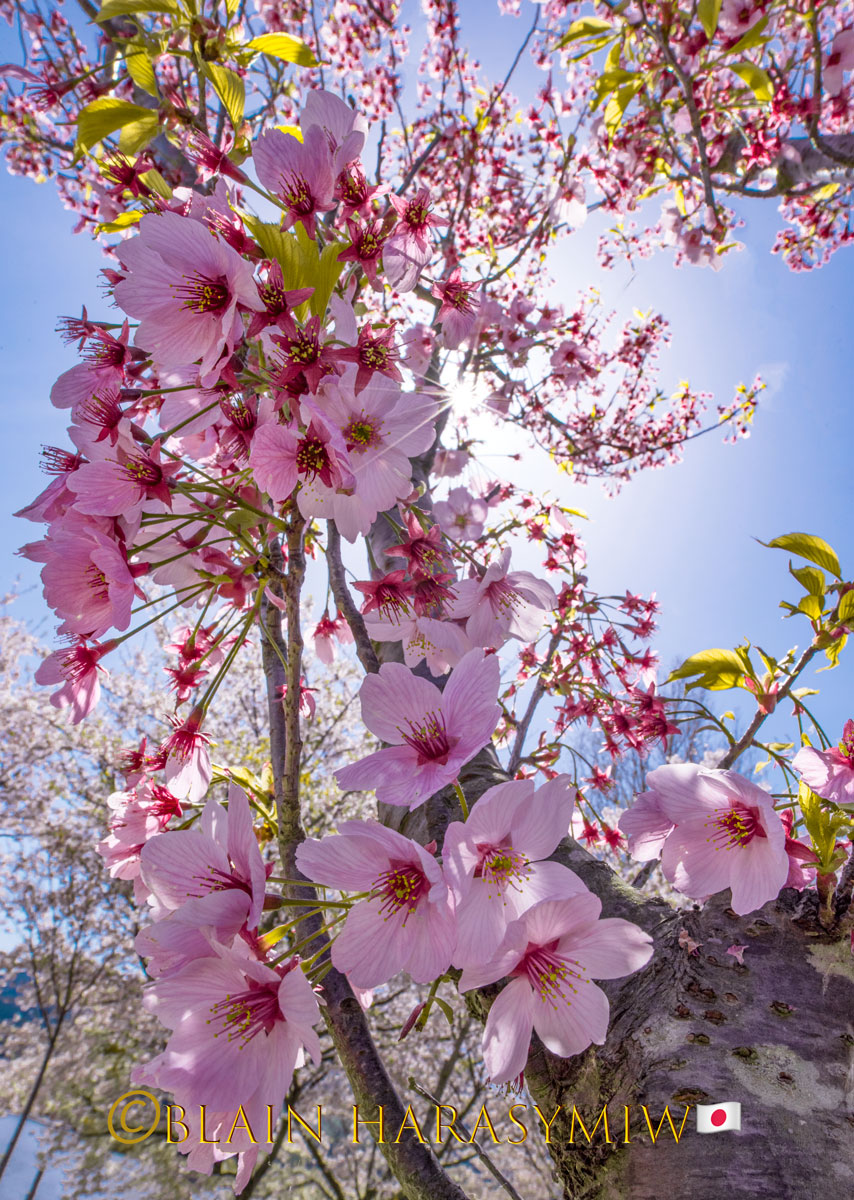 Yamazakura (山桜), or mountain cherry blossom, (Prunus jamasakura) is endemic to Japan and is distributed throughout most of Japan, but tends to be more prevalent in the warmer regions. But I also, have photographed one or two hybrids on my annual Hokkaido photo tour and in Honshu, Shikoku, and Kyushu all have identified representatives of the yamazakura tree. The usual northern limit of Yamazakura is generally Miyagi prefecture on the side of Japan facing the Pacific Ocean and Niigata on the Sea of Japan side of Honshu, the main island of Japan. The usual blooming period is from late March to the middle of April, but even trees in the same area tend to bloom at slightly different times, so it is possible to observe full bloom sakura weeks before and weeks after. The average Yamazakura trees themselves are deciduous broad-leaved trees and reach heights taller than 20 m (more than 65 ft) and have an umbrella shape, but for a Yamazakura tree to flower, it could take five years in warmer climates to as many as 10 in colder ones. The cherry blossoms commonly develop with the reddish leaf bud sprouts, and the blossoms are often tinged with pink and have five petals. This flowering behavior further distinguishes them from the Somei Yoshino cherry blossom variety. Yama-zakura trees have been found to live longer than 500 years, and one tree, the Kariyado no Gebazakura (狩宿の下馬桜) in Shizuoka prefecture is a natural monument and a national natural treasure. This tree is over 800 years old and has reached a peak height of 35 m (114 ft).
Yamazakura (山桜), or mountain cherry blossom, (Prunus jamasakura) is endemic to Japan and is distributed throughout most of Japan, but tends to be more prevalent in the warmer regions. But I also, have photographed one or two hybrids on my annual Hokkaido photo tour and in Honshu, Shikoku, and Kyushu all have identified representatives of the yamazakura tree. The usual northern limit of Yamazakura is generally Miyagi prefecture on the side of Japan facing the Pacific Ocean and Niigata on the Sea of Japan side of Honshu, the main island of Japan. The usual blooming period is from late March to the middle of April, but even trees in the same area tend to bloom at slightly different times, so it is possible to observe full bloom sakura weeks before and weeks after. The average Yamazakura trees themselves are deciduous broad-leaved trees and reach heights taller than 20 m (more than 65 ft) and have an umbrella shape, but for a Yamazakura tree to flower, it could take five years in warmer climates to as many as 10 in colder ones. The cherry blossoms commonly develop with the reddish leaf bud sprouts, and the blossoms are often tinged with pink and have five petals. This flowering behavior further distinguishes them from the Somei Yoshino cherry blossom variety. Yama-zakura trees have been found to live longer than 500 years, and one tree, the Kariyado no Gebazakura (狩宿の下馬桜) in Shizuoka prefecture is a natural monument and a national natural treasure. This tree is over 800 years old and has reached a peak height of 35 m (114 ft).
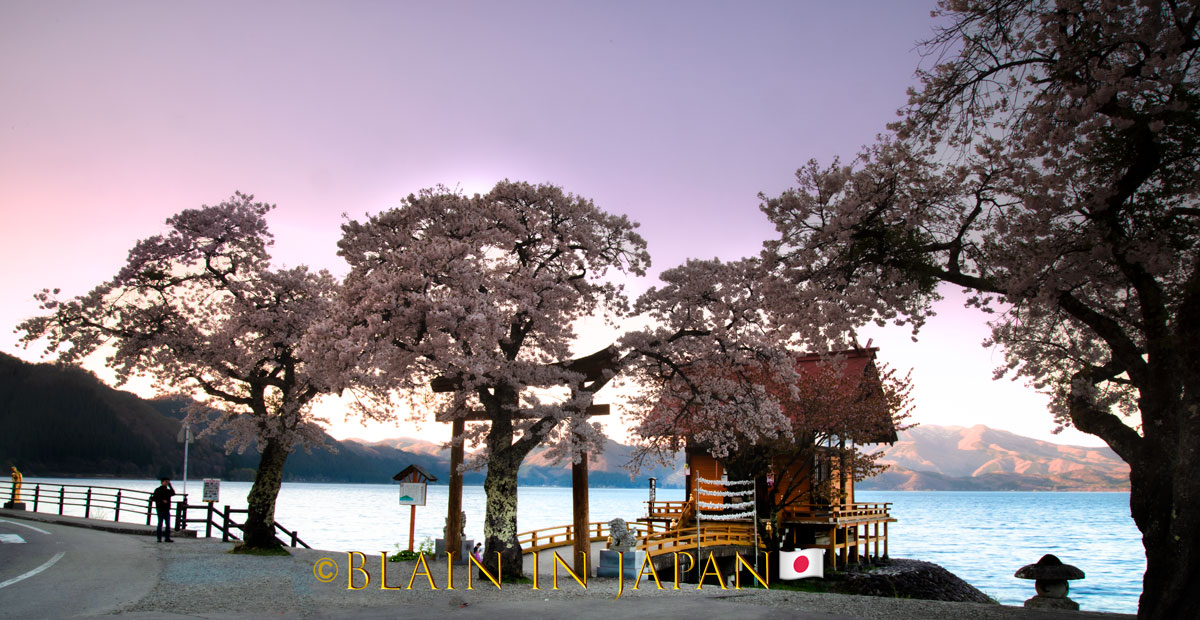 The Edo Higan (江戸彼岸) Cherry Tree (Prunus subhirtella) is so widespread throughout Japan that it is commonly a part of my annual Cherry Blossom photo workshops as well as my annual Hokkaido photo tour. The trees have the name ‘Edo’ for a previously used name for Japan’s capital, Tokyo, and’ higan’ in Japanese, which means ‘solstice’ because they typically bloom close to the spring equinox every year. The species was, of course, first found in the wild and is considered the ‘traditional’ Japanese cherry blossom tree, but several cultivars have been developed from the original wild species. Depending on the cultivar, the tree can be a more upright and elegant form, or if the weeping cultivar, a more rounded, sweeping branch and tree appearance. The tree’s height and spread vary depending on the cultivar, but the original Edo Higan is medium-sized, reaching 20 - 30 ft (6 - 9 m) tall and 15 - 30 ft (4 - 9 m) when the tree is fully matured. The blossoms themselves start with an intense pink, turning pale and then almost white as snow before they flutter into the wind creating a snow-like appearance at the end of cherry blossom season every year. The blossoms are not considered yaezakura or double blossoming sakura; instead, they are classified as semi-double, with commonly 10 petals per bloom. The original Edo higan cherry blossoms carry a round, swollen calyx, and the hybrids and following cultivars have essentially the same shape.
The Edo Higan (江戸彼岸) Cherry Tree (Prunus subhirtella) is so widespread throughout Japan that it is commonly a part of my annual Cherry Blossom photo workshops as well as my annual Hokkaido photo tour. The trees have the name ‘Edo’ for a previously used name for Japan’s capital, Tokyo, and’ higan’ in Japanese, which means ‘solstice’ because they typically bloom close to the spring equinox every year. The species was, of course, first found in the wild and is considered the ‘traditional’ Japanese cherry blossom tree, but several cultivars have been developed from the original wild species. Depending on the cultivar, the tree can be a more upright and elegant form, or if the weeping cultivar, a more rounded, sweeping branch and tree appearance. The tree’s height and spread vary depending on the cultivar, but the original Edo Higan is medium-sized, reaching 20 - 30 ft (6 - 9 m) tall and 15 - 30 ft (4 - 9 m) when the tree is fully matured. The blossoms themselves start with an intense pink, turning pale and then almost white as snow before they flutter into the wind creating a snow-like appearance at the end of cherry blossom season every year. The blossoms are not considered yaezakura or double blossoming sakura; instead, they are classified as semi-double, with commonly 10 petals per bloom. The original Edo higan cherry blossoms carry a round, swollen calyx, and the hybrids and following cultivars have essentially the same shape.
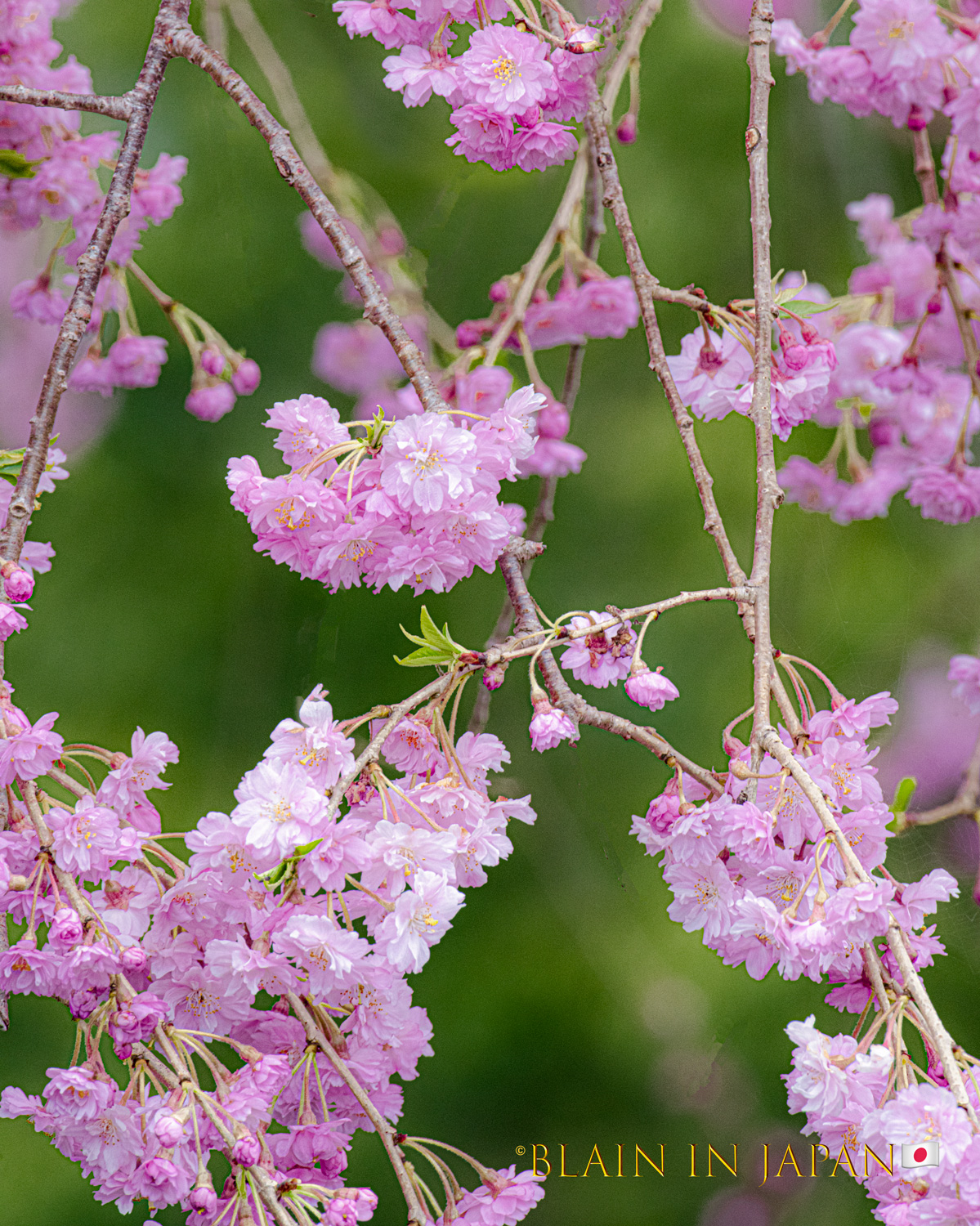 The kikuzakura (Cerasus serrulata ‘Chrysantemoides’) or キクザクラ 菊桜 is one of the many varieties of sakura I enjoy showing to my participants on my annual Hokkaido photo tour. The flower’s name translates to ‘chrysanthemum cherry blossom’ because of how closely the yaezakura blossom resembles the Kiku or chrysanthemum flower, the flower associated with the royal family of Japan. Each kikuzakura blossom has between 80 to 130 petals that come to a slightly sharp point. When the blossoms first open, the flowers are crimson, but as the blossoms age on the tree, their colors become a soft pink. The flowers range from 3.5 - 4 cm (1.4 - 1.6 in). An interesting attribute of the kikuzakura is that the sakura flower blooms in two stages. First, the outer flowers of the blossom open, and then the inner flowers shortly after. When fully opened, the flowers become spherical, and the blossom’s calyx becomes obscured by the flowers for all intents and purposes invisible. The kikuzakura trees range from 5 - 10 m (16 - 33 ft) in height. Kikuzakura in the Tokyo area tends to bloom later in the seasons than other varieties, starting in mid-April and sometimes lasting early into May. Recently, I scouted a recently designated natural moment kikuzakura tree. This tree is exceptional in every respect. In Japanese, it’s called the 入善乙女キクザクラ, or ‘Nyuzen Maiden Kikuzakura’ in English. The height of the tree is 11 m (36 ft), and the sakura tree was discovered growing from a dead Cedar tree. The tree’s blossoms almost always have more than 100 petals per flower, and rather than a crimson to pink transformation, the blossoms slowly deepen from white to pink after they flower, hence the ‘maiden’ appellation. Furthermore, the maiden kikuzakura sakura petals are considerably thinner than the main blooming variety, but the full-bloom window is approximately the same.
The kikuzakura (Cerasus serrulata ‘Chrysantemoides’) or キクザクラ 菊桜 is one of the many varieties of sakura I enjoy showing to my participants on my annual Hokkaido photo tour. The flower’s name translates to ‘chrysanthemum cherry blossom’ because of how closely the yaezakura blossom resembles the Kiku or chrysanthemum flower, the flower associated with the royal family of Japan. Each kikuzakura blossom has between 80 to 130 petals that come to a slightly sharp point. When the blossoms first open, the flowers are crimson, but as the blossoms age on the tree, their colors become a soft pink. The flowers range from 3.5 - 4 cm (1.4 - 1.6 in). An interesting attribute of the kikuzakura is that the sakura flower blooms in two stages. First, the outer flowers of the blossom open, and then the inner flowers shortly after. When fully opened, the flowers become spherical, and the blossom’s calyx becomes obscured by the flowers for all intents and purposes invisible. The kikuzakura trees range from 5 - 10 m (16 - 33 ft) in height. Kikuzakura in the Tokyo area tends to bloom later in the seasons than other varieties, starting in mid-April and sometimes lasting early into May. Recently, I scouted a recently designated natural moment kikuzakura tree. This tree is exceptional in every respect. In Japanese, it’s called the 入善乙女キクザクラ, or ‘Nyuzen Maiden Kikuzakura’ in English. The height of the tree is 11 m (36 ft), and the sakura tree was discovered growing from a dead Cedar tree. The tree’s blossoms almost always have more than 100 petals per flower, and rather than a crimson to pink transformation, the blossoms slowly deepen from white to pink after they flower, hence the ‘maiden’ appellation. Furthermore, the maiden kikuzakura sakura petals are considerably thinner than the main blooming variety, but the full-bloom window is approximately the same.
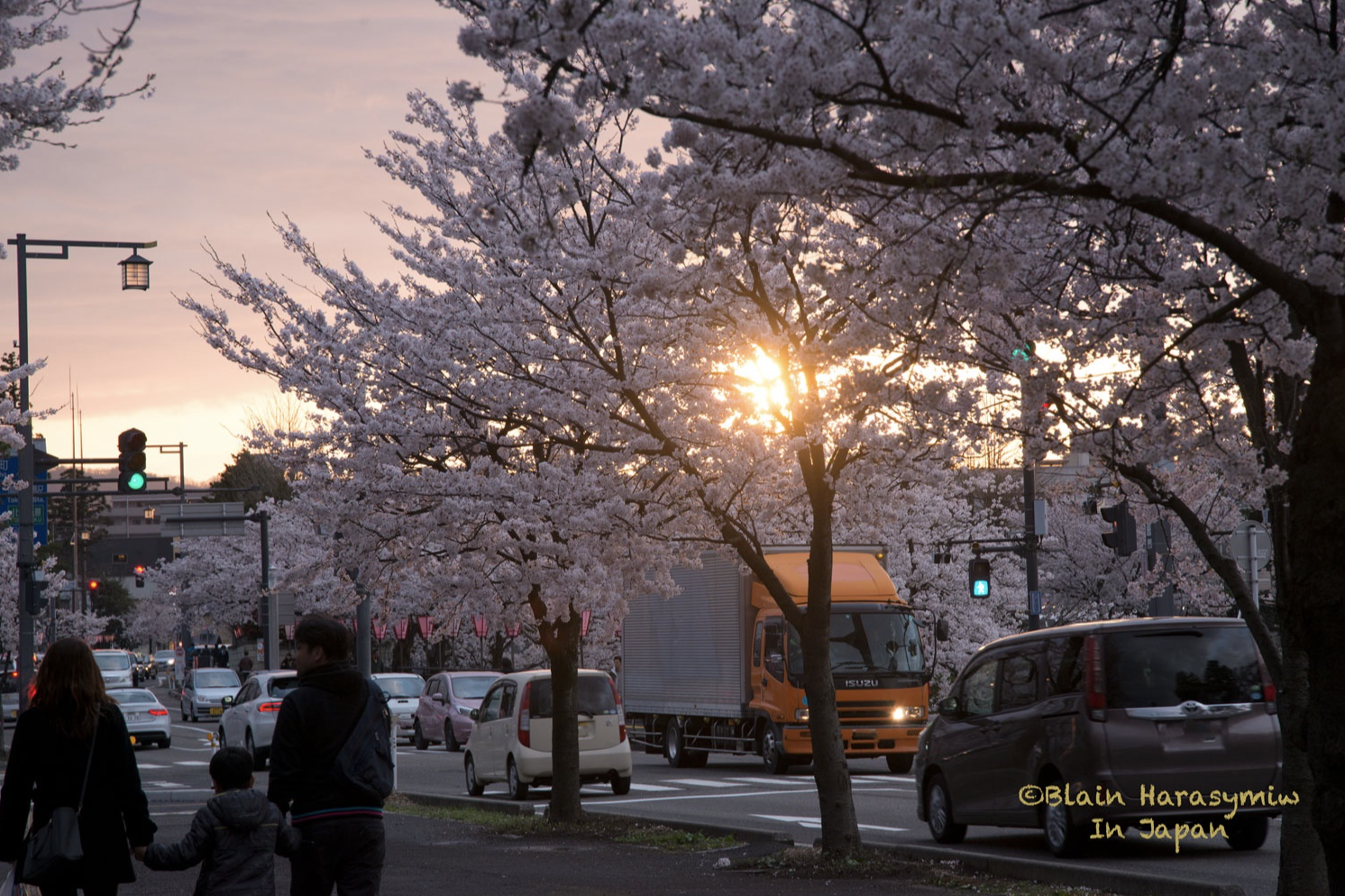 The Fugenzo Cherry Blossom (Cerasus lannesiana ‘Albo-rosea' Makino) is one of the Oshima Satozakura cherry blossom cultivars that my participants can enjoy during my annual Hokkaido Photo Tour. An agriculturally engineered cultivar, it is thought to have been initially created during the Muromachi period (1336-1573). The name 普賢象 (Fugenzo) for this sakura variety contains the kanji characters 普賢 (Fugen), which are the Japanese equivalent of Samantabhadra, a bodhisattva in Buddhism associated with practice and meditation, who rides on a white elephant, what the (象) character represents. A prevailing theory is that the voluminous white petals have the shape of an elephant’s ears. The Fugenzo blossom’s elongated pistil is said to represent an elephant’s trunk, and I encourage all my participants to inspect the blossoms up close to see the variations among the blossoms while photographing them. The variety of pistils and petals is as varied as the elephants themselves. Fugenzo blossoms are similar to the Kanzan and Ichiyo varieties as yaezakura or double blossoms because of the amount of petals each blossoms possesses, 20 to 50 petals, and the overall diameter is close to 5 cm (2 in). The petals are white on the inside but give way to pink on the outside, so their overall appearance is a pale pink. As the blossoms remain on the trees, the pink slowly fades, and they become almost entirely white in appearance. Some rarer varieties are called Shiro Fugen (白普賢 ) which have exclusively white blossoms. The Fugenzo cherry blossom trees are relatively cold-resistant, so they are more common in areas below the Tohoku region of Japan. Blooming later than the more prevalent Somei Yoshino variety, the Fugenzo sakura blossoms from mid-April to early May.
The Fugenzo Cherry Blossom (Cerasus lannesiana ‘Albo-rosea' Makino) is one of the Oshima Satozakura cherry blossom cultivars that my participants can enjoy during my annual Hokkaido Photo Tour. An agriculturally engineered cultivar, it is thought to have been initially created during the Muromachi period (1336-1573). The name 普賢象 (Fugenzo) for this sakura variety contains the kanji characters 普賢 (Fugen), which are the Japanese equivalent of Samantabhadra, a bodhisattva in Buddhism associated with practice and meditation, who rides on a white elephant, what the (象) character represents. A prevailing theory is that the voluminous white petals have the shape of an elephant’s ears. The Fugenzo blossom’s elongated pistil is said to represent an elephant’s trunk, and I encourage all my participants to inspect the blossoms up close to see the variations among the blossoms while photographing them. The variety of pistils and petals is as varied as the elephants themselves. Fugenzo blossoms are similar to the Kanzan and Ichiyo varieties as yaezakura or double blossoms because of the amount of petals each blossoms possesses, 20 to 50 petals, and the overall diameter is close to 5 cm (2 in). The petals are white on the inside but give way to pink on the outside, so their overall appearance is a pale pink. As the blossoms remain on the trees, the pink slowly fades, and they become almost entirely white in appearance. Some rarer varieties are called Shiro Fugen (白普賢 ) which have exclusively white blossoms. The Fugenzo cherry blossom trees are relatively cold-resistant, so they are more common in areas below the Tohoku region of Japan. Blooming later than the more prevalent Somei Yoshino variety, the Fugenzo sakura blossoms from mid-April to early May.
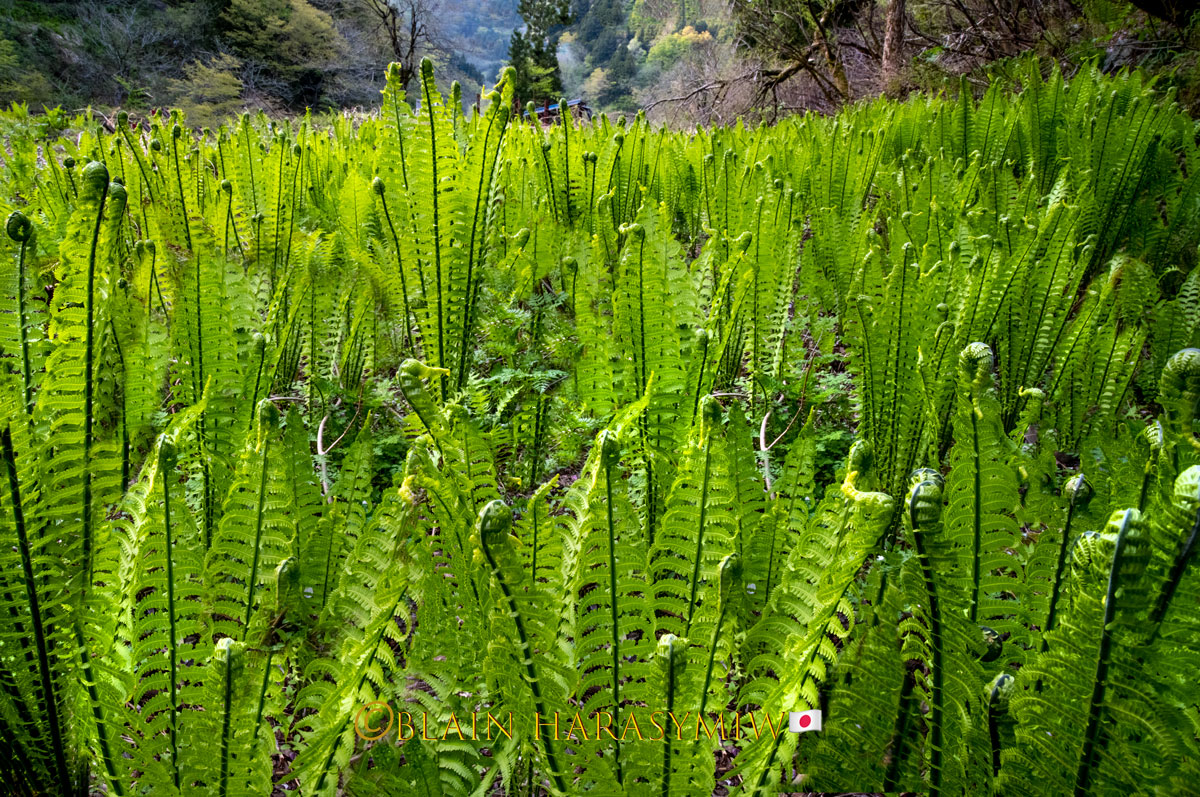
Matteuccia ostrich fern in Japanese kogomi (strouthíōn). In Spring across Japan, thousands of people pick dozens of species of eatable mountain vegetables. My family and I pick them in spring while camping or hiking; we even grow a few varieties in our home garden, and we pick bushels of them on our annual spring Hokkaido photo tour. Mountain vegetable in Japanese is (Sansai) and covers over a dozen types of eatable natural vegetable species. Ostrich ferns are best eaten steamed or boiled, and some eat them deep-fried; I prefer them steamed. They are best eaten when they just sprout and before they uncoil; the ostrich ferns in this photo are too big to eat, in my opinion. People worldwide eat mountain vegetables all year round, and it's nice to know what vegetables to eat in the wild, especially when on an extended wilderness expedition. But please buy a field book, or take a wilderness course to learn which are eatable and which are not, live safe and healthy. Namaste, Blain in Japan🇯🇵
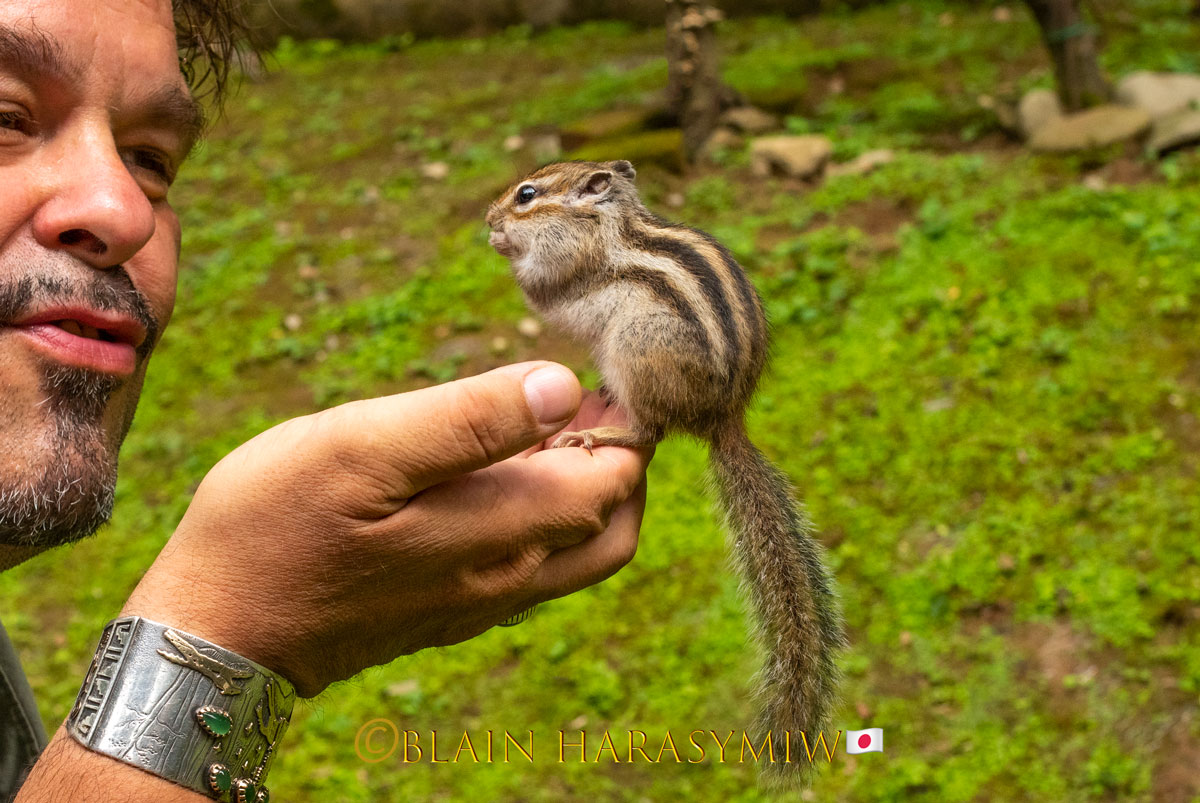 The Ezo Chipmunk (Tamias sibiricus lineatus) is a subspecies of the Siberian Chipmunk (Tamias sibiricus barberi) found mainly on Hokkaido, a species that I often encounter while leading my annual Hokkaido birding Tour. The Ezo Chipmunk has an average measurement of 12–15 centimeters (4.7–5.9 in) from the tip of its nose to the base of its tail, which extends a further 11–12 centimeters (4.3–4.7 in) and weighs 71–116 grams (2.5–4.1 oz). As you can see from the photo, its fur is a chestnut brown with five blackish stripes running down the entirety of its back.The Ezo Chipmunk is found on Hokkaido, and the neighboring islands of Rebun, Rishiri, Teuri, Sakhalin, Etorofu, Kunashiri, and Yagashiri. An exhaustive study of its full distribution has not been completed; however, there has been one confirmed cluster of Ezo Chipmunks in the Karuizawa region of Japan’s main island, Honshu. The expansion of the Ezo Chipmunks beyond Hokkaido may be due to them being captured and kept as pets in the 1960s and 1970s but then freed into the wild.Ezo Chipmunks eat various seeds, fruit, flowers, and leaves, and their diet varies depending on the season. During the spring, the chipmunk’s feast on sasa, or broad bamboo leaves and Japanese maple leaves, but later in the year, their diet changes to seeds, cones, and pine nuts, and, of course, acorns, specifically Mongolian oak acorns. When chipmunks are rearing their young, this largely vegetarian species supplements their diet with spiders, cicadas, snails, larvae, and even Japanese bushtit or Shima enaga eggs. The Ezo Chipmunk is just one of the dozens of species participants spot and photograph on my annual Hokkaido birding wildlife tour; other popular species are the Ezo Red Fox, the red-crowned cranes, the Steller’s Sea Eagle, and the White-tailed Eagle, Blakiston’s Fish Owl among others. The photo of this ezo chipmunk and me was taken by my wife Manami during my annual Hokkaido cherry blossom tour.
The Ezo Chipmunk (Tamias sibiricus lineatus) is a subspecies of the Siberian Chipmunk (Tamias sibiricus barberi) found mainly on Hokkaido, a species that I often encounter while leading my annual Hokkaido birding Tour. The Ezo Chipmunk has an average measurement of 12–15 centimeters (4.7–5.9 in) from the tip of its nose to the base of its tail, which extends a further 11–12 centimeters (4.3–4.7 in) and weighs 71–116 grams (2.5–4.1 oz). As you can see from the photo, its fur is a chestnut brown with five blackish stripes running down the entirety of its back.The Ezo Chipmunk is found on Hokkaido, and the neighboring islands of Rebun, Rishiri, Teuri, Sakhalin, Etorofu, Kunashiri, and Yagashiri. An exhaustive study of its full distribution has not been completed; however, there has been one confirmed cluster of Ezo Chipmunks in the Karuizawa region of Japan’s main island, Honshu. The expansion of the Ezo Chipmunks beyond Hokkaido may be due to them being captured and kept as pets in the 1960s and 1970s but then freed into the wild.Ezo Chipmunks eat various seeds, fruit, flowers, and leaves, and their diet varies depending on the season. During the spring, the chipmunk’s feast on sasa, or broad bamboo leaves and Japanese maple leaves, but later in the year, their diet changes to seeds, cones, and pine nuts, and, of course, acorns, specifically Mongolian oak acorns. When chipmunks are rearing their young, this largely vegetarian species supplements their diet with spiders, cicadas, snails, larvae, and even Japanese bushtit or Shima enaga eggs. The Ezo Chipmunk is just one of the dozens of species participants spot and photograph on my annual Hokkaido birding wildlife tour; other popular species are the Ezo Red Fox, the red-crowned cranes, the Steller’s Sea Eagle, and the White-tailed Eagle, Blakiston’s Fish Owl among others. The photo of this ezo chipmunk and me was taken by my wife Manami during my annual Hokkaido cherry blossom tour.
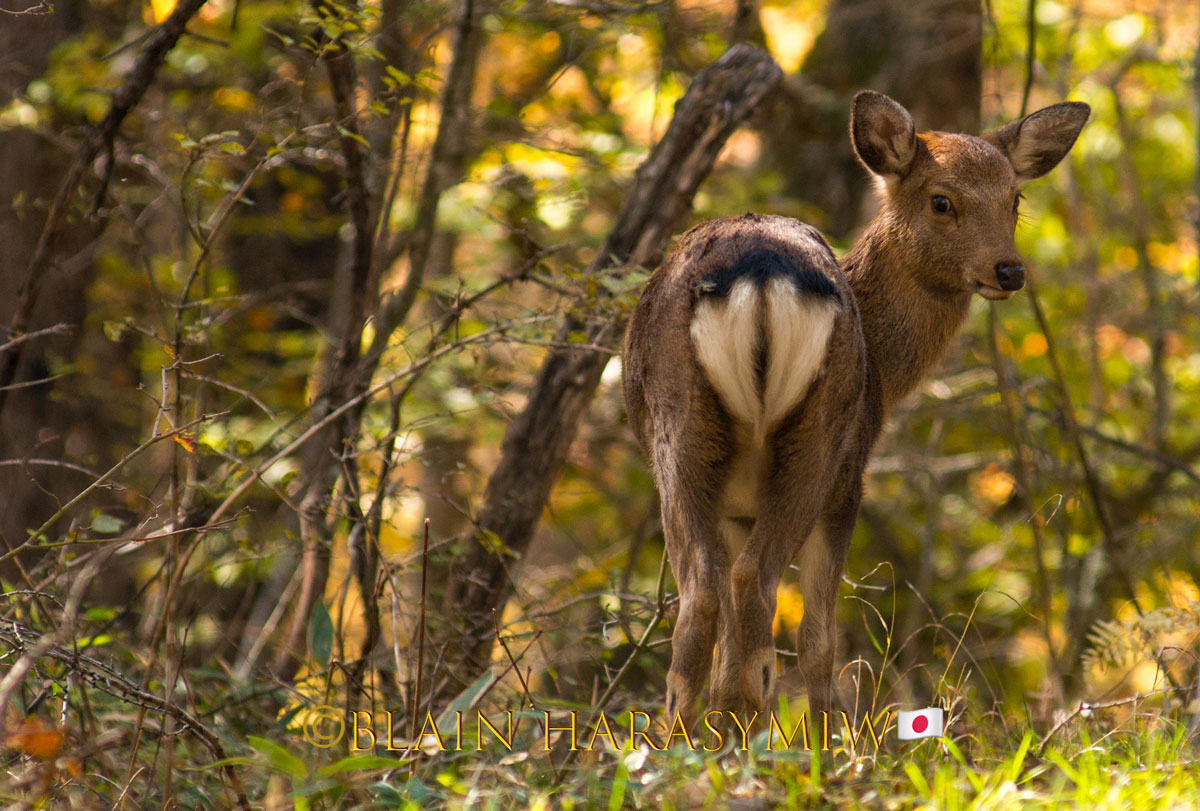 Sika deer (Cervus Nippon Nippon) on Japan’s Main Island - Deer with Heart. During my annual Hokkaido Wildlife tour, Yezo Sika deer (Cervus Nippon yesoensis) are always part of my itinerary. As a species, males are much larger than females, and they can vary from 50 to 110 cm (20 to 45 in) tall at the shoulder and from 95 to 180 cm (35 to 70 in) in head-and-body length. The tail measures about 7.5–13 cm (3–5 in) long. However, their height and weight vary widely across all of their subspecies. For example, the subspecies I encountered while leading my annual cherry blossom Mt. Fuji tour are Sika deer, but a subspecies (Cervus Nippon Nippon). They are the smallest Sika deer subspecies, males weigh 40–70 kg (90–150 lb), and females weigh 30–40 kg (70–90 lb). But another feature stuck out for me, literally, the deer’s heart-shaped behind. In the photo attached to this entry, the deer’s coat is more of what the Yezo Sika deer of Hokkaido looks like during the winter, shaggier with less pronounced, sometimes imperceptible spots. I took this photo in the spring during my Japan Mt. Fuji cherry blossom tour instead of winter, so it’s clear that the sika deer I spotted was of a different subspecies.
Sika deer (Cervus Nippon Nippon) on Japan’s Main Island - Deer with Heart. During my annual Hokkaido Wildlife tour, Yezo Sika deer (Cervus Nippon yesoensis) are always part of my itinerary. As a species, males are much larger than females, and they can vary from 50 to 110 cm (20 to 45 in) tall at the shoulder and from 95 to 180 cm (35 to 70 in) in head-and-body length. The tail measures about 7.5–13 cm (3–5 in) long. However, their height and weight vary widely across all of their subspecies. For example, the subspecies I encountered while leading my annual cherry blossom Mt. Fuji tour are Sika deer, but a subspecies (Cervus Nippon Nippon). They are the smallest Sika deer subspecies, males weigh 40–70 kg (90–150 lb), and females weigh 30–40 kg (70–90 lb). But another feature stuck out for me, literally, the deer’s heart-shaped behind. In the photo attached to this entry, the deer’s coat is more of what the Yezo Sika deer of Hokkaido looks like during the winter, shaggier with less pronounced, sometimes imperceptible spots. I took this photo in the spring during my Japan Mt. Fuji cherry blossom tour instead of winter, so it’s clear that the sika deer I spotted was of a different subspecies.
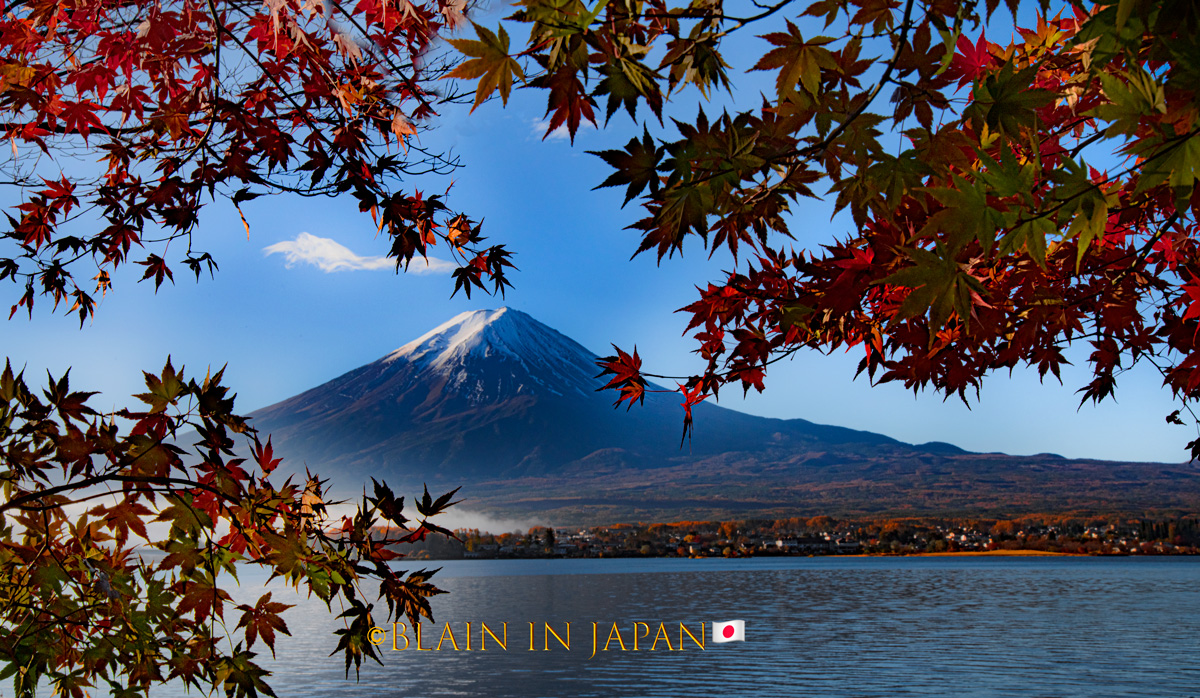 The Japanese maple (Acer palmatum), which is grown as either a deciduous shrub or small tree and most often grows to 6 to 10 meters (20 to 33 ft) in height, on rare occasions, reaches 16 meters (52 ft). During my annual Hokkaido birding Tour, Hokkaido songbirds can be found singing away in these majestic trees with their spell-bounding zen calming song, and even some birds nest in these Maple trees. International and Hokkaido birding photographers flock to photograph these birds; most often, the canopy of the Japanese maple grows into a dome-like shape, especially when the tree has reached full maturity. From my experience scouting and hosting Autumn leaves photo tours, there are huge variations among the hundreds of cultivars of Japanese maple trees. Factors such as leaf size, shape, and color can all wildly vary, and I have seen both the weeping variety, similar to the shidarezakura or weeping cherry blossom, as well as the upright cultivars on my Cross-country Japan photo workshops. The Japanese maple tree has been cultivated locally for centuries in the more temperate regions of Japan since the 1800s, and the first specimen was exported to Britain in 1820. Maples are commonly used to create bonsais and have also been depicted in art both in Japan and abroad. Most commonly, the Japanese maple prefers partial shade when growing, but at higher altitudes can tolerate full sun. Beyond the main species, there are three recognized sure species: Acer palmatum subsp. palmatum, which is most commonly cultivated in central to south Japan; Acer palmatum subsp, amoenum, which is grown at higher altitudes in Japan and South Korea; and finally, Acer palmatum subsp. Matsumurae, which is the prevailing subspecies at higher altitudes in Japan. I felt Mt. Fuji, Japan's most sacred mountain, was the perfect spot to show a variety of Japanese maples; I took the image during my annual Autumn leaves Mt. fuji tour.
The Japanese maple (Acer palmatum), which is grown as either a deciduous shrub or small tree and most often grows to 6 to 10 meters (20 to 33 ft) in height, on rare occasions, reaches 16 meters (52 ft). During my annual Hokkaido birding Tour, Hokkaido songbirds can be found singing away in these majestic trees with their spell-bounding zen calming song, and even some birds nest in these Maple trees. International and Hokkaido birding photographers flock to photograph these birds; most often, the canopy of the Japanese maple grows into a dome-like shape, especially when the tree has reached full maturity. From my experience scouting and hosting Autumn leaves photo tours, there are huge variations among the hundreds of cultivars of Japanese maple trees. Factors such as leaf size, shape, and color can all wildly vary, and I have seen both the weeping variety, similar to the shidarezakura or weeping cherry blossom, as well as the upright cultivars on my Cross-country Japan photo workshops. The Japanese maple tree has been cultivated locally for centuries in the more temperate regions of Japan since the 1800s, and the first specimen was exported to Britain in 1820. Maples are commonly used to create bonsais and have also been depicted in art both in Japan and abroad. Most commonly, the Japanese maple prefers partial shade when growing, but at higher altitudes can tolerate full sun. Beyond the main species, there are three recognized sure species: Acer palmatum subsp. palmatum, which is most commonly cultivated in central to south Japan; Acer palmatum subsp, amoenum, which is grown at higher altitudes in Japan and South Korea; and finally, Acer palmatum subsp. Matsumurae, which is the prevailing subspecies at higher altitudes in Japan. I felt Mt. Fuji, Japan's most sacred mountain, was the perfect spot to show a variety of Japanese maples; I took the image during my annual Autumn leaves Mt. fuji tour.
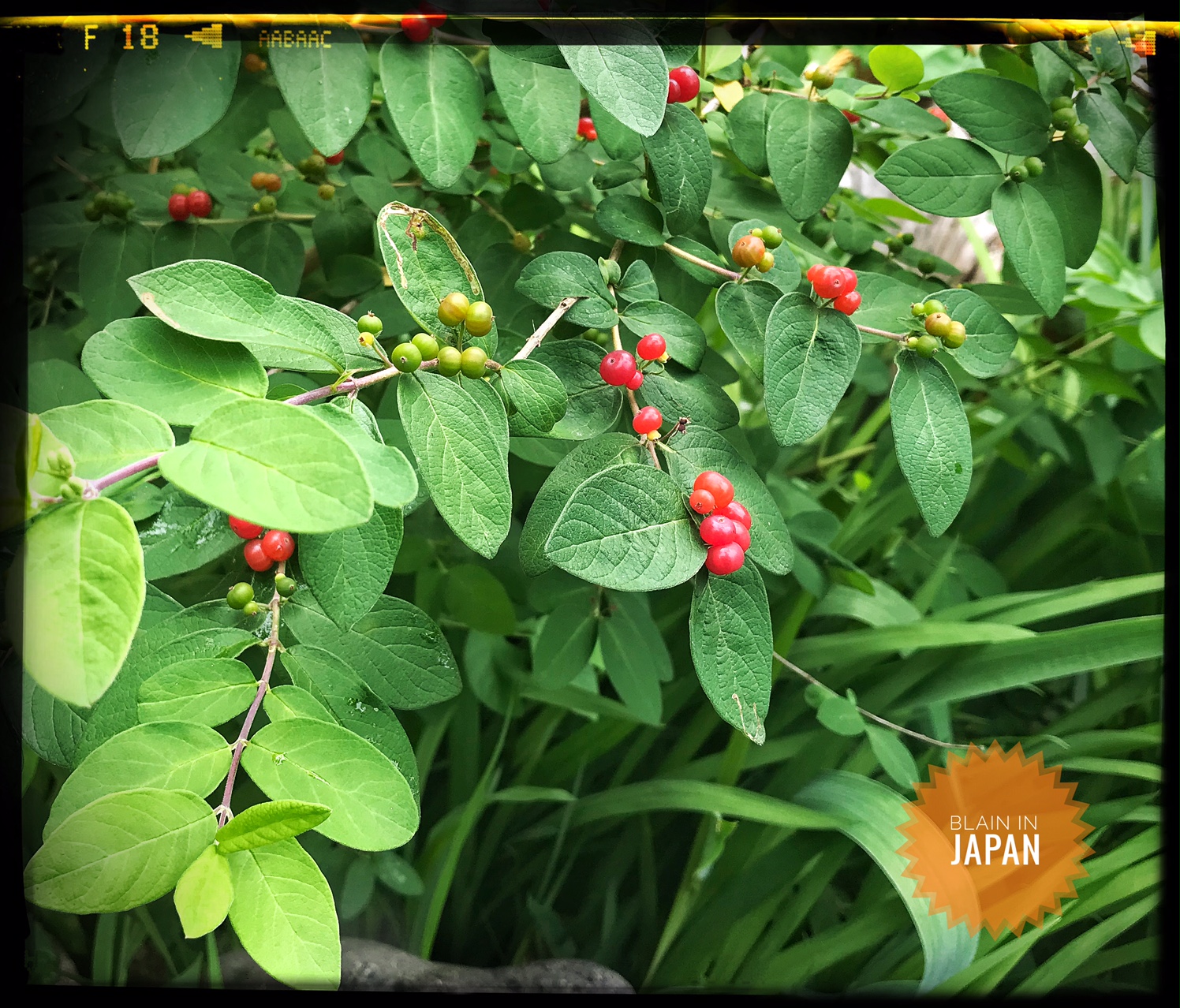
Species of Japan - Lonicera tschonoskii Lonicera tschonoskii (オオヒョウタンボク) is a deciduous tree that belongs to the Honeysuckle family, and I see this shrub as well as its Hokkaido cousin the Chishima gourd tree (Lonicera chamissoi ) during my annual Hokkaido birding tour in summer, seeing the fruits of the tree almost ripe. I don’t touch the fruits or eat them though because they are highly toxic. The berries are red and fully ripen in September and are about 8 mm in diameter. The tree itself stands between 1 - 2 meters in height with hairless limbs and leaves that are between 4 - 10 cm long, 2 - 5 cm wide and oval shaped. The Lonicera tschonoskii is endemic to Japan and is found mainly subalpine to alpine zones of Honshu, but it has been spotted as far north as Hokkaido. It grows wild in my garden in Niigata and is considered a stable regional plant, but in Yamanashi prefecture it is on the International Union for the Conservation of Nature’s (IUCN) Red List as endangered. It has also been designated as a protected plant in Joshinetsu Kogen National Park, Chubu Mountain National Park, and Yatsugatake Chubu Kogen National Park.
 The Zinnia flower (Zinnia elegans) originated in the Americas, and a specific variety called the Profusion has both a single or double-flowered zinnia and is cultivated by Sakata of Japan, and it is a variety I often come across during my annual hanami Hokkaido nature tour. The zinnia flowers widely vary in range from 10 to 100 cm (4 - 40 inches) tall. The leaves on the zinnia flowers are either linear or ovate in shape, and their coloration is pale to a medium green. The flowers themselves can be white, chartreuse, yellow, orange, red, purple, or lilac in color. Zinnia flowers carry many different meanings, but the ones I find the most significant that pertain most to my experiences during my annual Hokkaido wildlife tour are the following: friendship, endurance, daily remembrance, and lasting affection. These are some of the same attributes I associate with The First Nations people of Japan, the Ainu, who decorate their Ainu Kotan, their homestead, with these flowers, another symbol of their continued dedication to striking a balance with their natural surroundings and their resilience as a First Nations people.
The Zinnia flower (Zinnia elegans) originated in the Americas, and a specific variety called the Profusion has both a single or double-flowered zinnia and is cultivated by Sakata of Japan, and it is a variety I often come across during my annual hanami Hokkaido nature tour. The zinnia flowers widely vary in range from 10 to 100 cm (4 - 40 inches) tall. The leaves on the zinnia flowers are either linear or ovate in shape, and their coloration is pale to a medium green. The flowers themselves can be white, chartreuse, yellow, orange, red, purple, or lilac in color. Zinnia flowers carry many different meanings, but the ones I find the most significant that pertain most to my experiences during my annual Hokkaido wildlife tour are the following: friendship, endurance, daily remembrance, and lasting affection. These are some of the same attributes I associate with The First Nations people of Japan, the Ainu, who decorate their Ainu Kotan, their homestead, with these flowers, another symbol of their continued dedication to striking a balance with their natural surroundings and their resilience as a First Nations people.
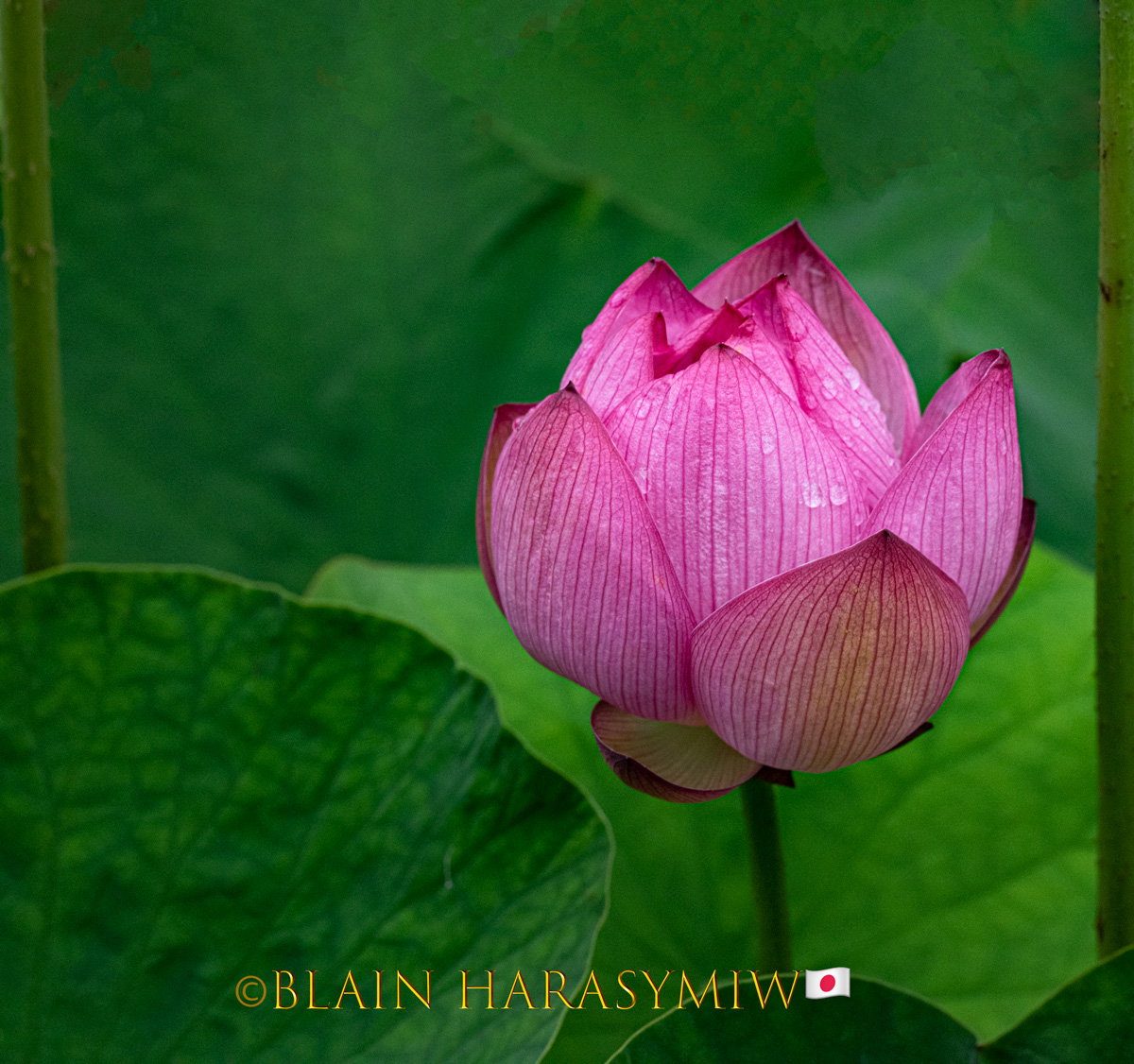 The Lotus Flower (Nelumbo nucifera), or 蓮 ハス (hasu) in Japanese, can be enjoyed nationwide during the summer, and even on Japans most northern Island Hokkaido where I photograph them on my summer Hokkaido nature tour. To view them in their full glory, you must arrive in the early am, because the Lotus blooms in the morning. The Lotus is a symbol of purity, love, and eloquence. Hokkaido’s Red-crowned cranes also carry the same love and fidelity symbolism as they mate for life, and their expertly choreographed mating dances have earned them the name snow ballerinas, the best time to spot them is in winter during my annual Hokkaido photo tour. The Lotus roots are planted in soil at the bottom of a pond or river, and the leaf stalks (petioles) can reach 200 cm (6 ft 7 in) in height, and the lotus blossom leaves reach diameters of 80 cm (31 in). The flowers can be up to 30 cm (12 in) in diameter, but there have been particularly robust flower specimens reaching up to 35 cm (14 in). The flowers bloom in pink, red, or white, but a rare variation of Lotus (Nymphaea nouchali var. caerulea) can be found in Africa along the Nile river.
The Lotus Flower (Nelumbo nucifera), or 蓮 ハス (hasu) in Japanese, can be enjoyed nationwide during the summer, and even on Japans most northern Island Hokkaido where I photograph them on my summer Hokkaido nature tour. To view them in their full glory, you must arrive in the early am, because the Lotus blooms in the morning. The Lotus is a symbol of purity, love, and eloquence. Hokkaido’s Red-crowned cranes also carry the same love and fidelity symbolism as they mate for life, and their expertly choreographed mating dances have earned them the name snow ballerinas, the best time to spot them is in winter during my annual Hokkaido photo tour. The Lotus roots are planted in soil at the bottom of a pond or river, and the leaf stalks (petioles) can reach 200 cm (6 ft 7 in) in height, and the lotus blossom leaves reach diameters of 80 cm (31 in). The flowers can be up to 30 cm (12 in) in diameter, but there have been particularly robust flower specimens reaching up to 35 cm (14 in). The flowers bloom in pink, red, or white, but a rare variation of Lotus (Nymphaea nouchali var. caerulea) can be found in Africa along the Nile river.
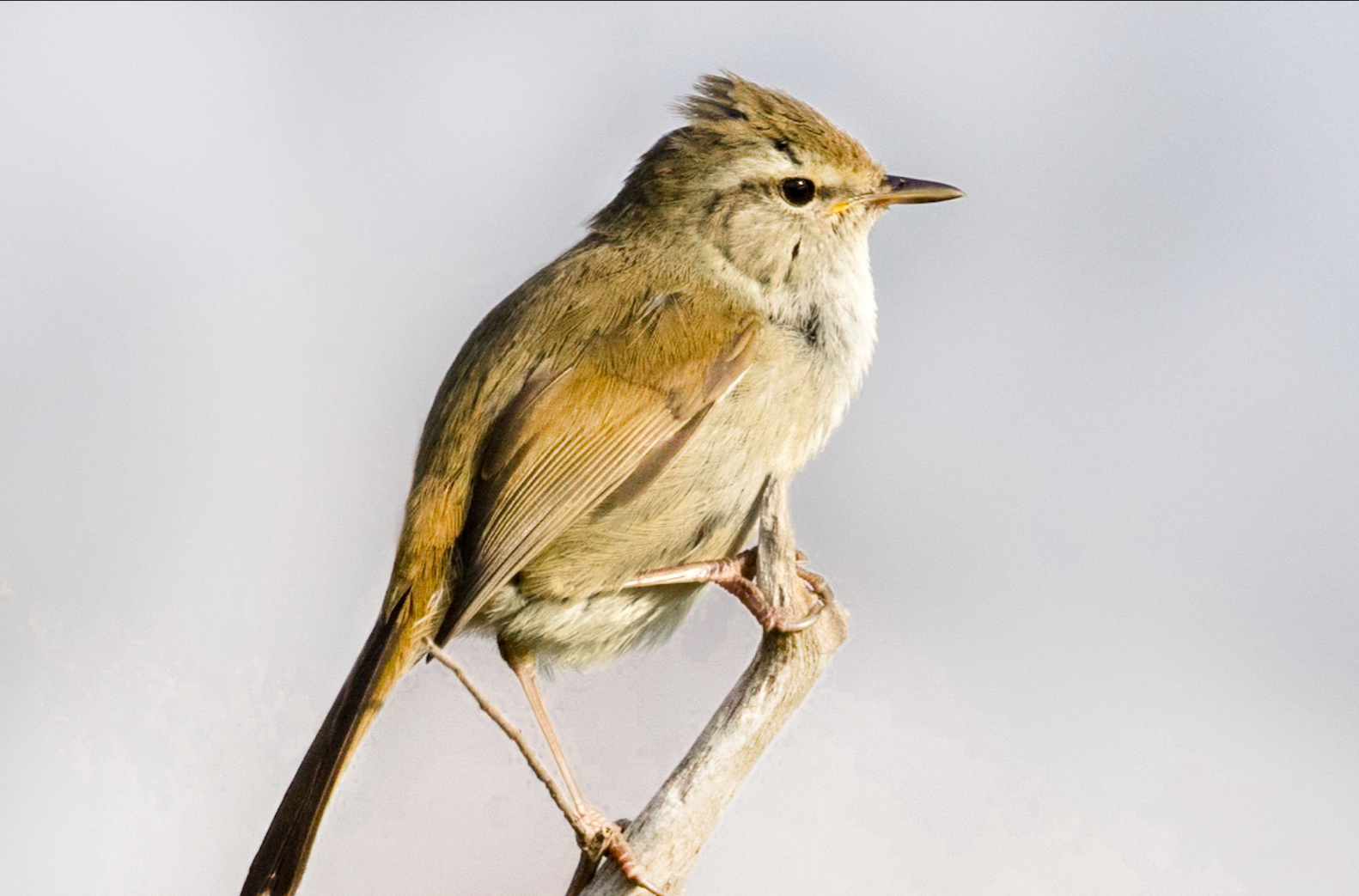 The Japanese bush warbler (Horornis diphone) also referred to as (Cettia diphone), ウグイス (uguisu) in Japanese is year round resident, but it prefers more temperate climates during winter, so for my Hokkaido nature tours, I can enjoy them in every season except winter. They are distributed throughout northeastern China, Russia’s far east, and the Korean peninsula beyond the Japanese population. The Japanese bush warbler is a passerine bird, and is typically ranges in length from 14 - 15.5 cm (5.5 - 6.1 in). The males of the species are larger than the females weighing between 14.8 - 22. 3 g (0.5 - 0.8 oz) while the females are 10 - 13.7 g (0.35 - 0.48 oz). Males and females exhibit olive brown upper parts and beige underparts. Both have cream colored superciliaries. During my may adventures across Japan and other parts of Asia, I have witnessed variations in plumage among the different subspecies depending on where I find myself conducting a photo workshop. The most widely distributed sub species is C. d. cantans. The International Union for Conservation of Nature (IUCN) classifies them as in the group of Least Concern, so during all of my Japan photo tour workshops, I can photograph them across Japan.
The Japanese bush warbler (Horornis diphone) also referred to as (Cettia diphone), ウグイス (uguisu) in Japanese is year round resident, but it prefers more temperate climates during winter, so for my Hokkaido nature tours, I can enjoy them in every season except winter. They are distributed throughout northeastern China, Russia’s far east, and the Korean peninsula beyond the Japanese population. The Japanese bush warbler is a passerine bird, and is typically ranges in length from 14 - 15.5 cm (5.5 - 6.1 in). The males of the species are larger than the females weighing between 14.8 - 22. 3 g (0.5 - 0.8 oz) while the females are 10 - 13.7 g (0.35 - 0.48 oz). Males and females exhibit olive brown upper parts and beige underparts. Both have cream colored superciliaries. During my may adventures across Japan and other parts of Asia, I have witnessed variations in plumage among the different subspecies depending on where I find myself conducting a photo workshop. The most widely distributed sub species is C. d. cantans. The International Union for Conservation of Nature (IUCN) classifies them as in the group of Least Concern, so during all of my Japan photo tour workshops, I can photograph them across Japan.
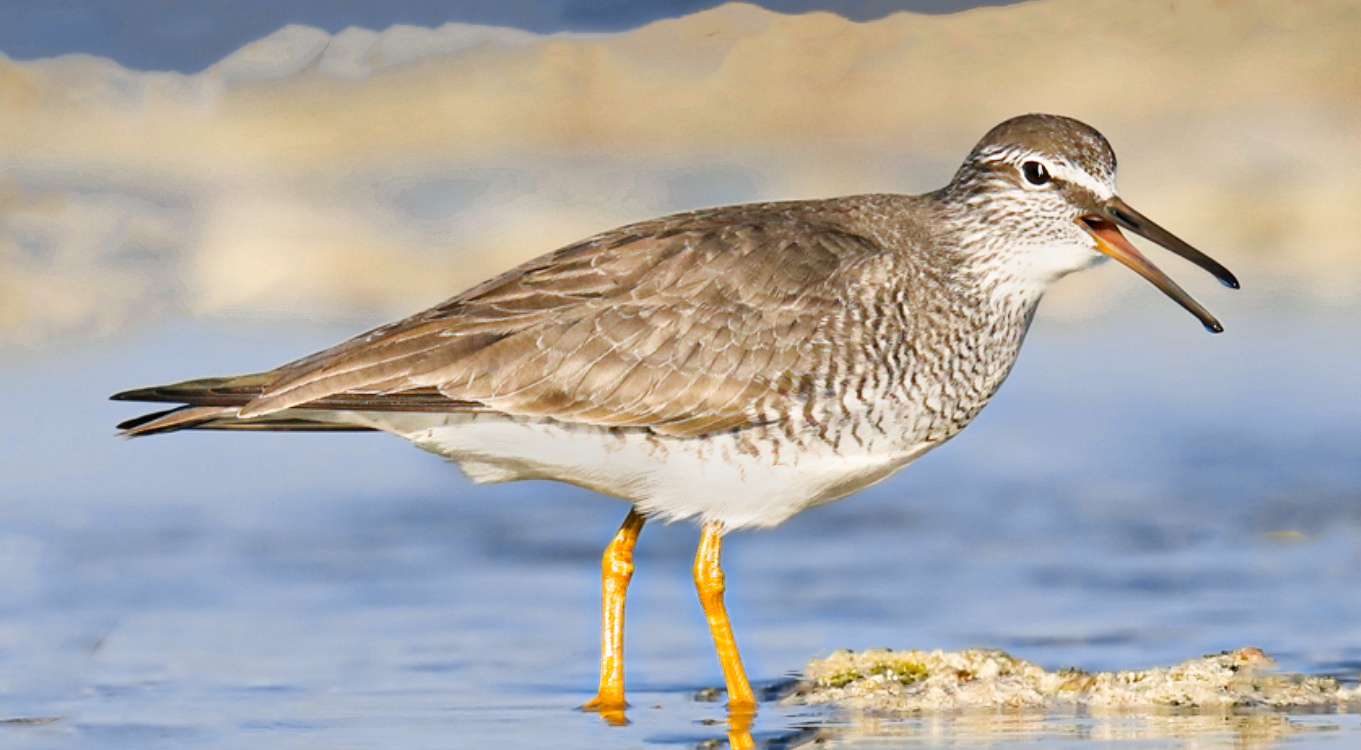 The Grey-tailed Tattler or Polynesian tattler, Tringa brevipes (formerly Heteroscelus brevipes), キアシシギ in Japanese, is a migratory shorebird that I have spotted while leading my Hokkaido nature tours. These birds winter over on sandy coasts from southeast Asia all the way down to Australia. However, similar to the Steller’s Sea Eagles that visit from the Kamchatka Peninsula during the winter season, the Grey-tailed Tattler calls Russia its home for breeding. It has an average length of 25 cm (10 in), a wingspan (20 in), and have an average weight of 125 g (4.4 oz). The upper parts, underwings, face and neck are grey, and the their bellies are white. During breeding season, they wings and back feathers take on a white-speckled appearance, otherwise, the Grey-tailed Tattler maintains its mostly grey coloration. They have the name ‘Tattler’ because of their rather noisy call, a two-note ‘too-lee’, but if the bird is alarmed it cries out with a much higher trill. The International Union for Conservation of Nature (IUCN) has them classified as ‘Near Threatened’ due to a recent decline in their worldwide numbers brought about by a reduction in arable coastlines and undeveloped forested regions for their nesting and breeding.
The Grey-tailed Tattler or Polynesian tattler, Tringa brevipes (formerly Heteroscelus brevipes), キアシシギ in Japanese, is a migratory shorebird that I have spotted while leading my Hokkaido nature tours. These birds winter over on sandy coasts from southeast Asia all the way down to Australia. However, similar to the Steller’s Sea Eagles that visit from the Kamchatka Peninsula during the winter season, the Grey-tailed Tattler calls Russia its home for breeding. It has an average length of 25 cm (10 in), a wingspan (20 in), and have an average weight of 125 g (4.4 oz). The upper parts, underwings, face and neck are grey, and the their bellies are white. During breeding season, they wings and back feathers take on a white-speckled appearance, otherwise, the Grey-tailed Tattler maintains its mostly grey coloration. They have the name ‘Tattler’ because of their rather noisy call, a two-note ‘too-lee’, but if the bird is alarmed it cries out with a much higher trill. The International Union for Conservation of Nature (IUCN) has them classified as ‘Near Threatened’ due to a recent decline in their worldwide numbers brought about by a reduction in arable coastlines and undeveloped forested regions for their nesting and breeding.
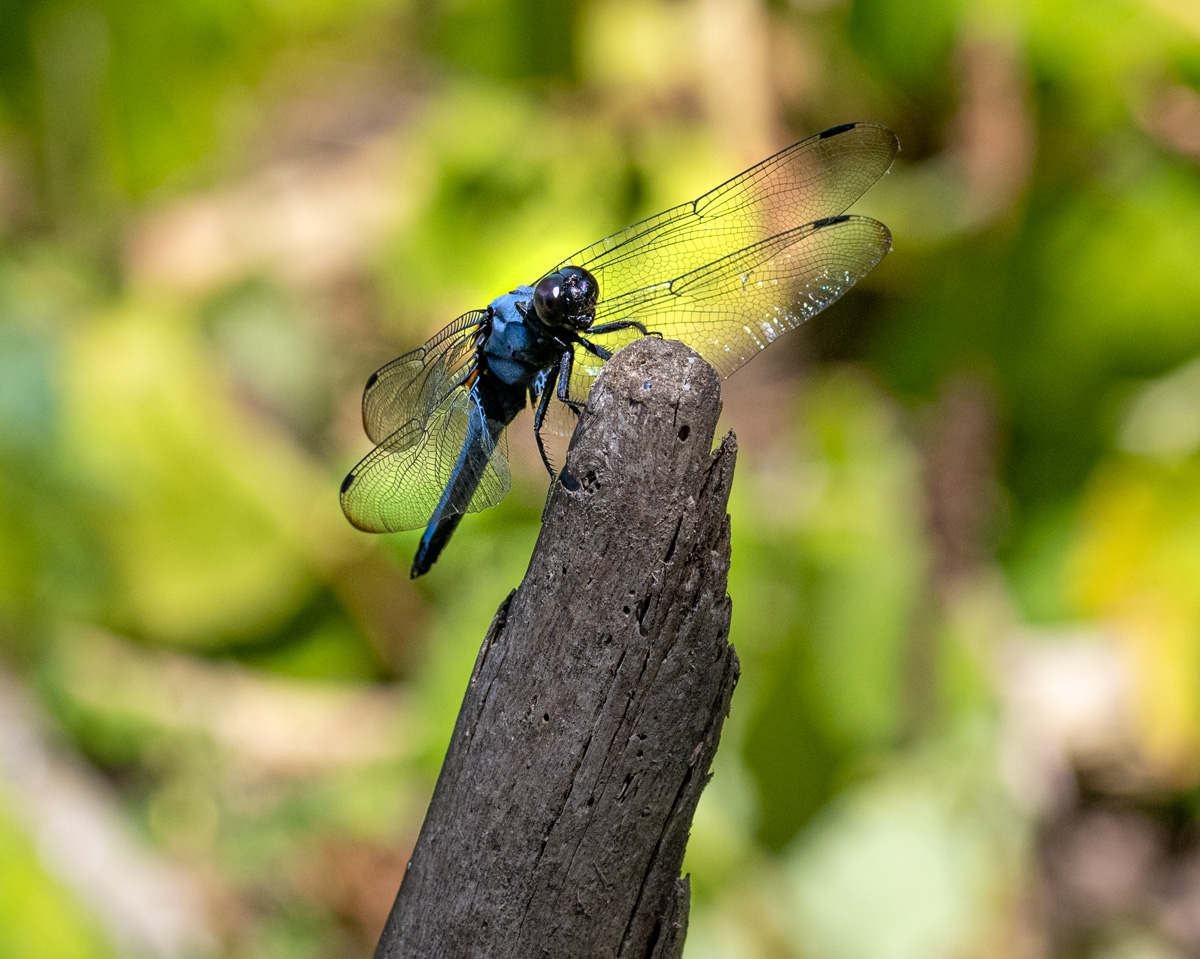 Dragonflies (order Odonata, infraorder Anisoptera), トンボ in Japanese, start their flight seasons as early as April or early May and are finished by mid-June, with a life cycle between 7 - 56 days, so I spot and photograph them with clients on my annual private Hokkaido nature photo tours during the spring and summer months. Dragonfly sizes vary greatly from 2.5 - 10 cm (1 - 4 in), and the colors of dragonflies vary greatly as well. Yellow, red, brown, blue, and many other colors are represented in dragonfly colorations. Fossil records suggest their species dates back as far as the Early Jurassic Period which spans 201.3 - 145.0 million years ago. More than 3,000 different dragonfly species exist as of 2010, and there is a possibility that there are far more. Japan’s history with the dragonfly goes back to the Kojiki, Japan’s oldest history book, published around 700 AD, when Japan was referred to as the Dragonfly island based on the mythical emperor Jimmu, who believed that shape of Japan resembled and アキツ ‘akitsu’ (an archaic name used for dragonflies). The dragonfly has also venerated for its samurai-like attributes. Dragonflies are predatory insects, and when they set their sights on prey, they strike following a straight line and never retreat. I took this image while leading a Hokkaido photo tour.
Dragonflies (order Odonata, infraorder Anisoptera), トンボ in Japanese, start their flight seasons as early as April or early May and are finished by mid-June, with a life cycle between 7 - 56 days, so I spot and photograph them with clients on my annual private Hokkaido nature photo tours during the spring and summer months. Dragonfly sizes vary greatly from 2.5 - 10 cm (1 - 4 in), and the colors of dragonflies vary greatly as well. Yellow, red, brown, blue, and many other colors are represented in dragonfly colorations. Fossil records suggest their species dates back as far as the Early Jurassic Period which spans 201.3 - 145.0 million years ago. More than 3,000 different dragonfly species exist as of 2010, and there is a possibility that there are far more. Japan’s history with the dragonfly goes back to the Kojiki, Japan’s oldest history book, published around 700 AD, when Japan was referred to as the Dragonfly island based on the mythical emperor Jimmu, who believed that shape of Japan resembled and アキツ ‘akitsu’ (an archaic name used for dragonflies). The dragonfly has also venerated for its samurai-like attributes. Dragonflies are predatory insects, and when they set their sights on prey, they strike following a straight line and never retreat. I took this image while leading a Hokkaido photo tour.
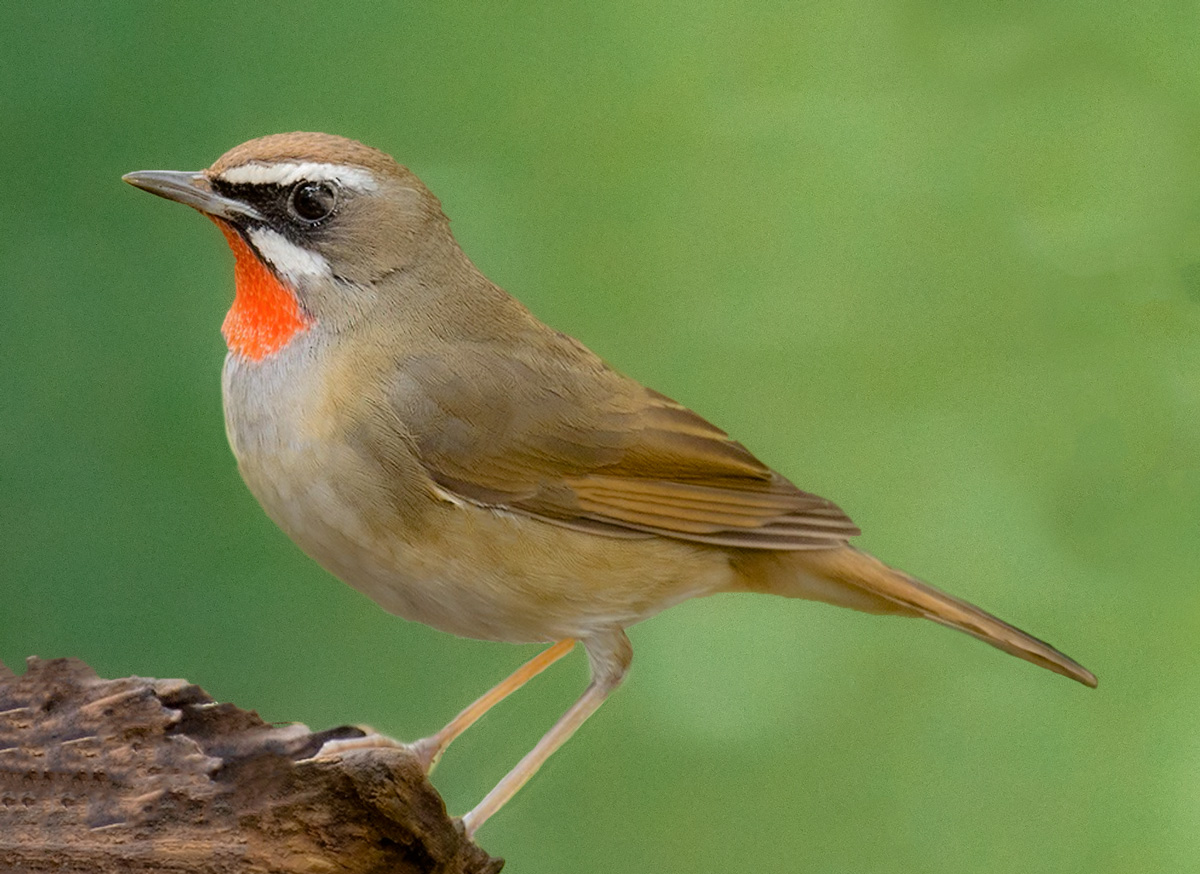 The Siberian rubythroat (Calliope calliope) is a small passerine bird that summers as far south as Hokkaido, so when leading private Hokkaido nature photo tours, I often spot them nesting in trees near the ground in the forests throughout Hokkaido. Their diet consists mainly of insects, but it also forages for worms and various berries in the wild. The Siberian Ruby Throat is slightly larger than the European robin (Erithacus rubecula) measuring an average length of 16 cm (6.3 in), and a wingspan of 25 cm (9.8 cm) and with a mass of between 16 - 29 g (.56 - 1 oz). The male and female of the species have a flat brown body, but the male has a red throat (hence the species name) with black at the edge, while the females of the species lack the bright coloration.
The Siberian rubythroat (Calliope calliope) is a small passerine bird that summers as far south as Hokkaido, so when leading private Hokkaido nature photo tours, I often spot them nesting in trees near the ground in the forests throughout Hokkaido. Their diet consists mainly of insects, but it also forages for worms and various berries in the wild. The Siberian Ruby Throat is slightly larger than the European robin (Erithacus rubecula) measuring an average length of 16 cm (6.3 in), and a wingspan of 25 cm (9.8 cm) and with a mass of between 16 - 29 g (.56 - 1 oz). The male and female of the species have a flat brown body, but the male has a red throat (hence the species name) with black at the edge, while the females of the species lack the bright coloration.
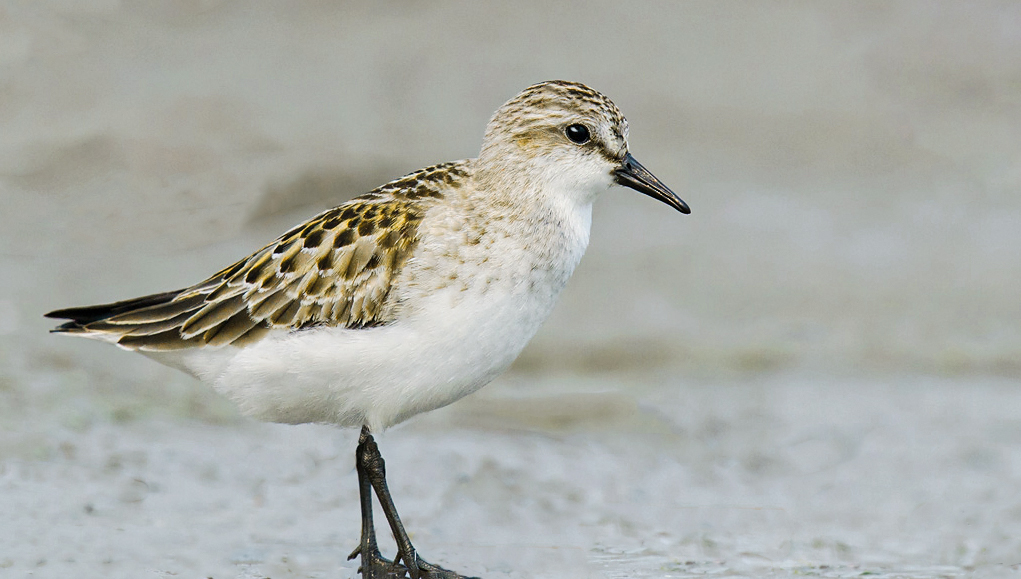 The Red-necked stint (Calidris ruficollis) is a small migratory wader with a wide distribution including Hokkaido, Japan. They are one of the rarer visitors to Japans most northern island, but while leading my annual Hokkaido Nature Tour, I have spotted and photographed them with participants. The Red-necked stint is strongly migratory and spends its breeding season in Eastern Eurasia with their non-breeding seasons in South East Asia and Australasia. The Red-necked stints are some of the smallest waders in the world measuring 13 - 17 cm (5.1 - 6.7 in) in length, with a 28 - 37 cm (11 - 15 in) wingspan and 21 - 51 g (0.74 - 1.8 oz) body mass. The bird’s plumage changes depending on whether they are breeding or non-breeding. Breeding adults have a bright orange head bordered by what seem like hand drawn dots of specks. The upper wing coverts are a brilliant orange with gold tones. Non-breeding adults are gray above and pale below. Red-necked stints are highly social birds and will form flocks with other waders during their non-breeding cycles. On the International Union for Conservation of Nature (IUCN), the Red-necked Stint is considered ‘Near Threatened’ due to the decrease in stop over sites in the Yellow Sea region. They are just one of the myriad wildlife such as Red-crowned cranes, Steller’s Sea Eagles, White-tailed eagles, Shima Enaga, and others that I spot and photograph on my seasonal Hokkaido photo tours.
The Red-necked stint (Calidris ruficollis) is a small migratory wader with a wide distribution including Hokkaido, Japan. They are one of the rarer visitors to Japans most northern island, but while leading my annual Hokkaido Nature Tour, I have spotted and photographed them with participants. The Red-necked stint is strongly migratory and spends its breeding season in Eastern Eurasia with their non-breeding seasons in South East Asia and Australasia. The Red-necked stints are some of the smallest waders in the world measuring 13 - 17 cm (5.1 - 6.7 in) in length, with a 28 - 37 cm (11 - 15 in) wingspan and 21 - 51 g (0.74 - 1.8 oz) body mass. The bird’s plumage changes depending on whether they are breeding or non-breeding. Breeding adults have a bright orange head bordered by what seem like hand drawn dots of specks. The upper wing coverts are a brilliant orange with gold tones. Non-breeding adults are gray above and pale below. Red-necked stints are highly social birds and will form flocks with other waders during their non-breeding cycles. On the International Union for Conservation of Nature (IUCN), the Red-necked Stint is considered ‘Near Threatened’ due to the decrease in stop over sites in the Yellow Sea region. They are just one of the myriad wildlife such as Red-crowned cranes, Steller’s Sea Eagles, White-tailed eagles, Shima Enaga, and others that I spot and photograph on my seasonal Hokkaido photo tours.
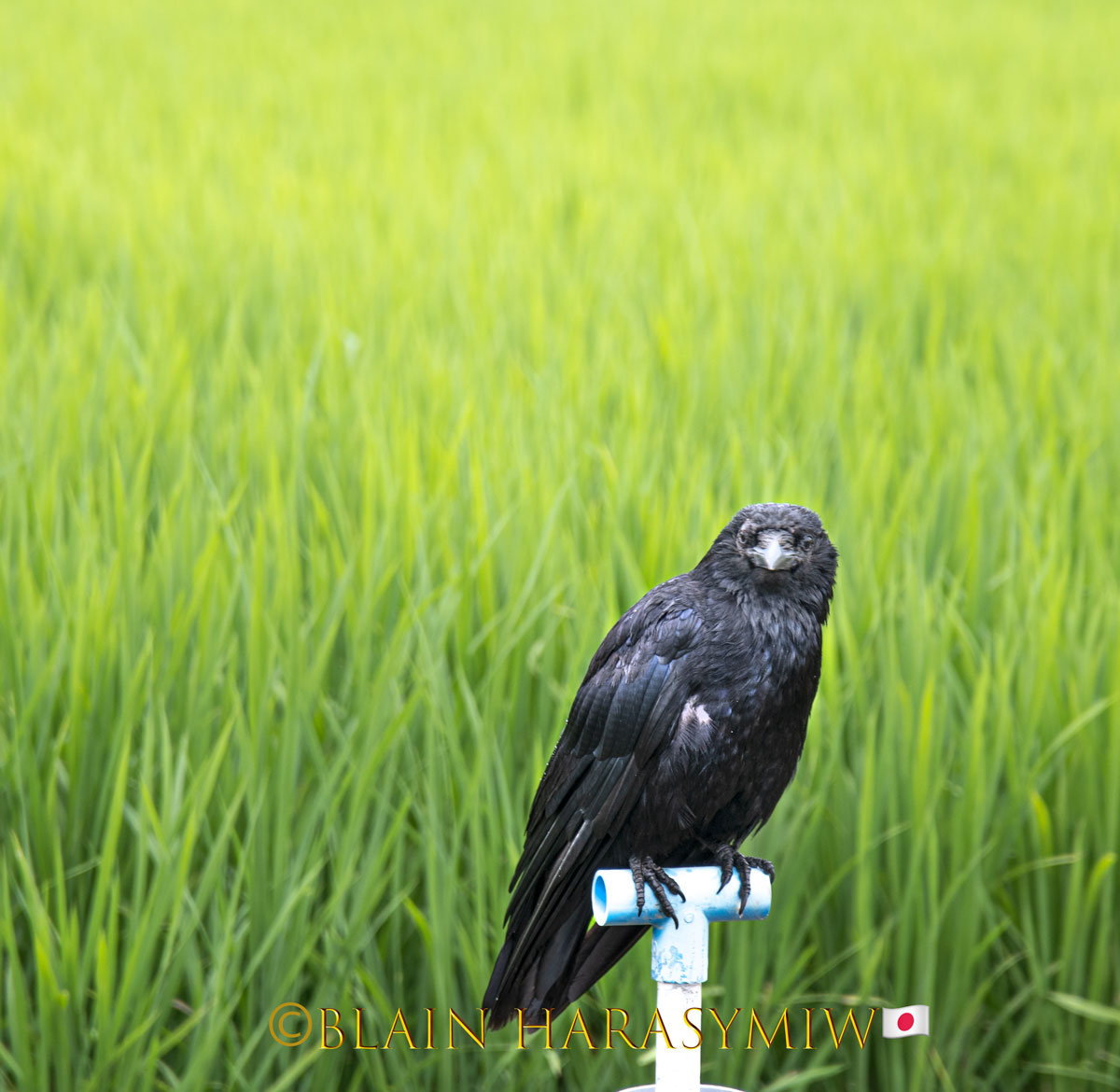 The Jungle Crow (Corvus macrorhynchos), カラス in Japanese, is specific to Southeast Asia, and most prevalent in Japan, so participants and I can spot and photograph them during my annual Hokkaido birding nature tour with camera in hand. The First Nations People of Japan, the Ainu, venerate the crow as one of their kamuy, or spiritual guides. The Jungle crow is distinguished by its huge beak and the blue-black sheen to its feathers. Its wingspan reaches 104 cm (41 in), a body length of up to 50 cm (20 in), and an average weight 650 g (23 oz). Their lifespan on average is twenty years. Their call has a slightly deeper pitch than the common crow (Corvus corax), and ever the jokester has been known to imitate the knocking of woodpeckers or the calls of other birds. I have even seen crows in Hokkaido squawk at Steller’s Sea Eagles (Haliaeetus pelagicus) during a Hokkaido nature photo workshop, but they are smart enough to make themselves scarce when the Steller’s Sea Eagle decides to interrupt its feeding to assert its dominance. The image you see this Jungle crow, I took in a rice field while it was raining, I was leading a Hokkaido photo tour.
The Jungle Crow (Corvus macrorhynchos), カラス in Japanese, is specific to Southeast Asia, and most prevalent in Japan, so participants and I can spot and photograph them during my annual Hokkaido birding nature tour with camera in hand. The First Nations People of Japan, the Ainu, venerate the crow as one of their kamuy, or spiritual guides. The Jungle crow is distinguished by its huge beak and the blue-black sheen to its feathers. Its wingspan reaches 104 cm (41 in), a body length of up to 50 cm (20 in), and an average weight 650 g (23 oz). Their lifespan on average is twenty years. Their call has a slightly deeper pitch than the common crow (Corvus corax), and ever the jokester has been known to imitate the knocking of woodpeckers or the calls of other birds. I have even seen crows in Hokkaido squawk at Steller’s Sea Eagles (Haliaeetus pelagicus) during a Hokkaido nature photo workshop, but they are smart enough to make themselves scarce when the Steller’s Sea Eagle decides to interrupt its feeding to assert its dominance. The image you see this Jungle crow, I took in a rice field while it was raining, I was leading a Hokkaido photo tour.
 The Yellow-breasted bunting (Emberiza aureola) is a member of the passerine bird family found across the Boreal and East Palearctic, and when I am leading my annual Hokkaido nature tour workshop with camera in hand, participants and I sometimes spot and photograph them wintering over on Japan most northern Island Hokkaido. Yellow-breasted buntings are also seen in Western Europe, but these sightings are exceedingly rare. It has even been spotted in the Aleutian Islands and Canada. The Yellow-breasted bunting is a rather large and stocky member of the passerine bird family, ranging from 14 to 16 cm (5.5 to 6.3 in) in length and weighing 17 to 26 g (0.6 to 0.9 oz). The male has bright yellow underparts with black flank streaks, brown upperparts, a black face and throat bar, and a pink lower mandible. While the female has a streaked grey-brown back and less striking yellow underparts. The female’s face is whiter with a dark crown, eye and cheek stripes. Due to its species favoring cultivated areas such as rice fields and grasslands, the decline in those areas in their wintering areas in Hokkaido have lead to them to be reclassified on the International Union for Conservation of Nature (IUCN) from least concern in 2004 all the way to critically endangered. They are a rare sight on my Hokkaido birding nature tours, but when passing rice fields or grasslands in Hokkaido, I am always on the lookout to spot a pair or flock of Yellow-breasted buntings wintering over in Japan.
The Yellow-breasted bunting (Emberiza aureola) is a member of the passerine bird family found across the Boreal and East Palearctic, and when I am leading my annual Hokkaido nature tour workshop with camera in hand, participants and I sometimes spot and photograph them wintering over on Japan most northern Island Hokkaido. Yellow-breasted buntings are also seen in Western Europe, but these sightings are exceedingly rare. It has even been spotted in the Aleutian Islands and Canada. The Yellow-breasted bunting is a rather large and stocky member of the passerine bird family, ranging from 14 to 16 cm (5.5 to 6.3 in) in length and weighing 17 to 26 g (0.6 to 0.9 oz). The male has bright yellow underparts with black flank streaks, brown upperparts, a black face and throat bar, and a pink lower mandible. While the female has a streaked grey-brown back and less striking yellow underparts. The female’s face is whiter with a dark crown, eye and cheek stripes. Due to its species favoring cultivated areas such as rice fields and grasslands, the decline in those areas in their wintering areas in Hokkaido have lead to them to be reclassified on the International Union for Conservation of Nature (IUCN) from least concern in 2004 all the way to critically endangered. They are a rare sight on my Hokkaido birding nature tours, but when passing rice fields or grasslands in Hokkaido, I am always on the lookout to spot a pair or flock of Yellow-breasted buntings wintering over in Japan.
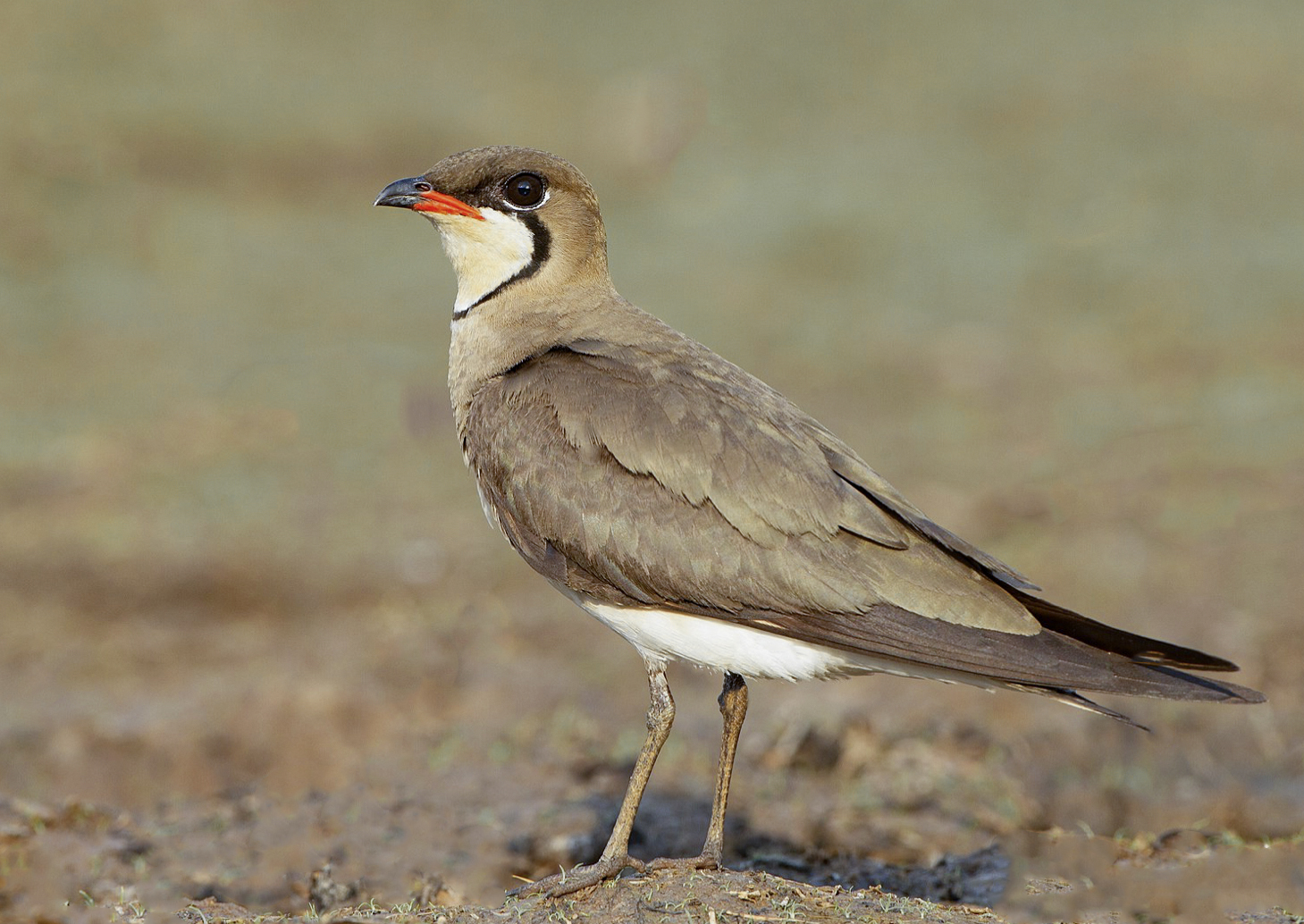 The Oriental Pratincole (Glareola maldivarum) also known as the grasshopper-bird or swallow-plover, ツバメチドリ in Japanese, has a migratory pattern that makes them a very rare sight on my annual Hokkaido nature birding tour, but I have spotted in Japan. The Oriental Pratincole is a medium-sized 23–24 cm (9 - 9.5 in) in total length and weighing approximately 75 g (2.6 oz), tern-like shorebird with long, pointed wings and a forked tail. Adults are brown overall with an elegant black necklace and pale yellow throat. When in flight, it’s easy to notice their dark flight feathers, chestnut underwing coverts, and the stark white trailing edge to their wings. Juveniles are a muddled gray-brown above and lack the adult's necklace. When nesting, there are 2-3 eggs laid on nests built up from the ground. The Oriental Pratincole hunts insects similar to swallows, but in the evening, they can be seen poking and prodding for their next insects.
The Oriental Pratincole (Glareola maldivarum) also known as the grasshopper-bird or swallow-plover, ツバメチドリ in Japanese, has a migratory pattern that makes them a very rare sight on my annual Hokkaido nature birding tour, but I have spotted in Japan. The Oriental Pratincole is a medium-sized 23–24 cm (9 - 9.5 in) in total length and weighing approximately 75 g (2.6 oz), tern-like shorebird with long, pointed wings and a forked tail. Adults are brown overall with an elegant black necklace and pale yellow throat. When in flight, it’s easy to notice their dark flight feathers, chestnut underwing coverts, and the stark white trailing edge to their wings. Juveniles are a muddled gray-brown above and lack the adult's necklace. When nesting, there are 2-3 eggs laid on nests built up from the ground. The Oriental Pratincole hunts insects similar to swallows, but in the evening, they can be seen poking and prodding for their next insects.
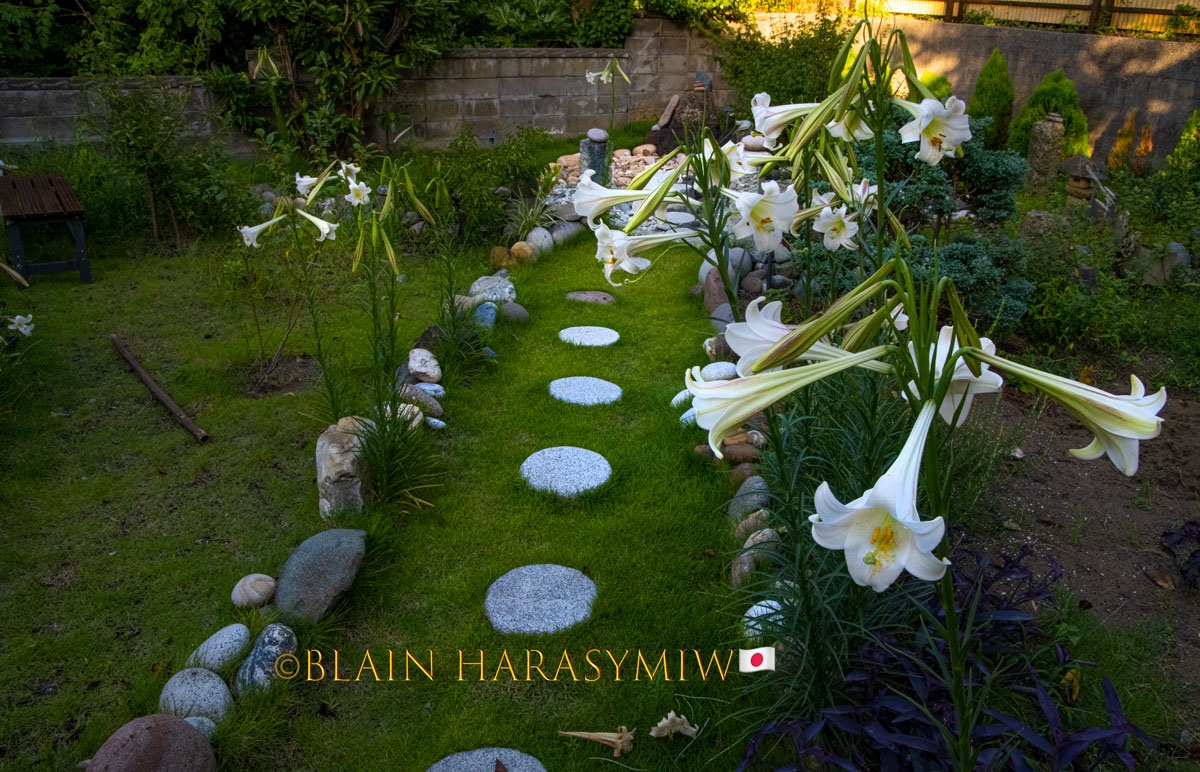 At my 100 year old traditional Japanese home, a kominka in Niigata, Japan. The first lily variety in my garden is the Lilium longiflorum (Japanese: テッポウユリ, Teppōyuri), often called the Easter lily, which is a plant endemic to both Japan and Taiwan. The second is Lilium formosanum, also known as the Formosa lily or Taiwanese lily, which is a plant species in the lily family, endemic to Taiwan. It is closely related to the Easter Lilly found in the Ryukyu Islands of Japan, eastern and northern Taiwan. Originally cultivated and photographed only on the Ryukyu Islands, the Easter lily has been distributed nationwide, as far north as Hokkaido, when I see them during their flowering season on my Hokkaido nature photo tours. Both species are cultivated for their showy, trumpet-shaped flowers. Lilium formosanum has become naturalized in scattered locations in Africa, Australia and in the Americas.
At my 100 year old traditional Japanese home, a kominka in Niigata, Japan. The first lily variety in my garden is the Lilium longiflorum (Japanese: テッポウユリ, Teppōyuri), often called the Easter lily, which is a plant endemic to both Japan and Taiwan. The second is Lilium formosanum, also known as the Formosa lily or Taiwanese lily, which is a plant species in the lily family, endemic to Taiwan. It is closely related to the Easter Lilly found in the Ryukyu Islands of Japan, eastern and northern Taiwan. Originally cultivated and photographed only on the Ryukyu Islands, the Easter lily has been distributed nationwide, as far north as Hokkaido, when I see them during their flowering season on my Hokkaido nature photo tours. Both species are cultivated for their showy, trumpet-shaped flowers. Lilium formosanum has become naturalized in scattered locations in Africa, Australia and in the Americas.
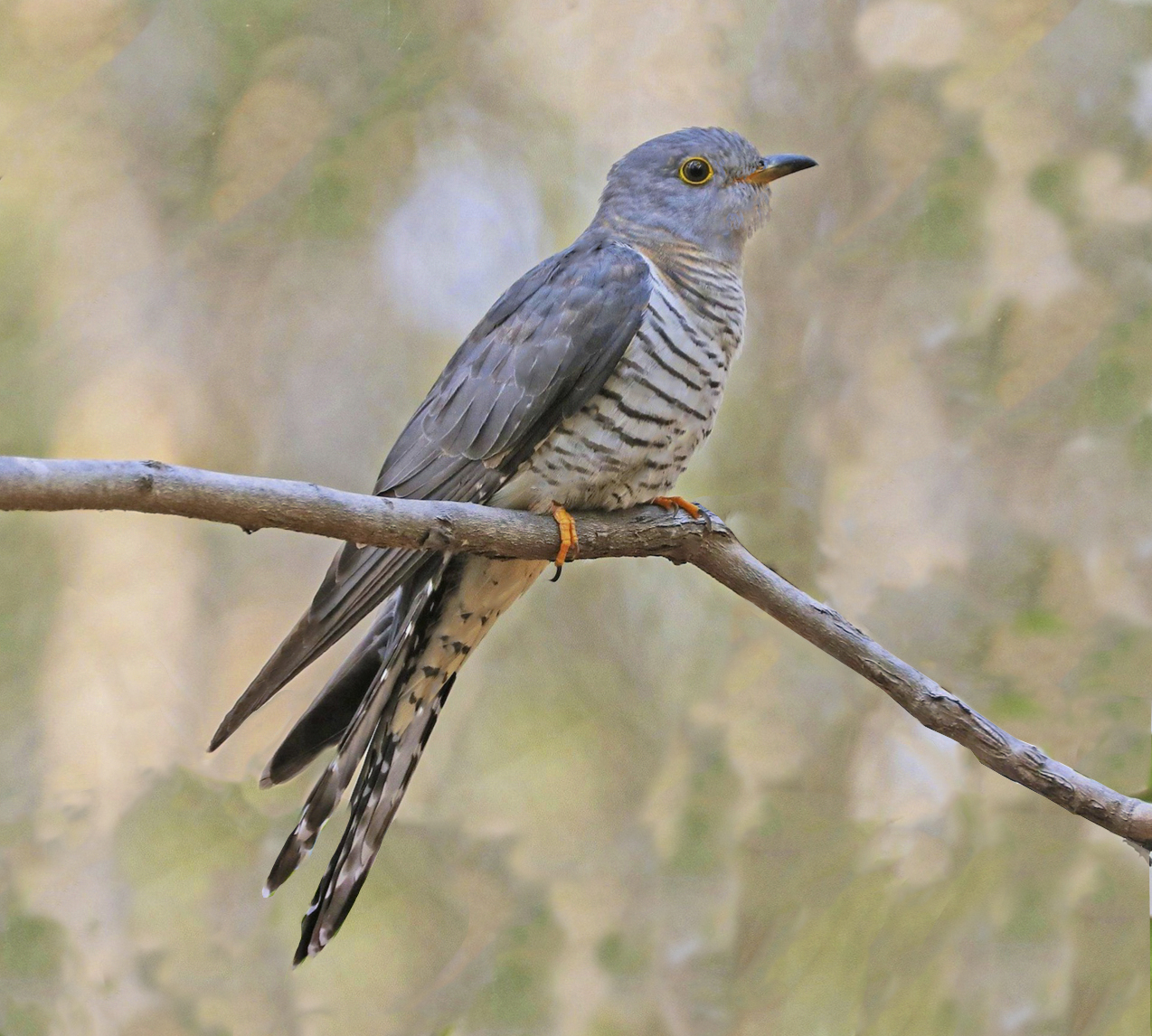 The Oriental cuckoo or Horsfield’s cuckoo (Cuculus optatus) was formerly classified as a subspecies of the Himalayan cuckoo (C. saturatus), but with it’s bewildering domain of distribution, I often spot them in trees or foraging along the ground in Hokkaido’s many forests while leading my annual Hokkaido nature birding photography workshop tour. The name 'Oriental cuckoo' is used for the combined species, both Horsefield’s and the Himalayan cuckoo because of the relative similarity in their appearances. The Oriental cuckoo is between 30 - 32 cm (11.8 - 12.6 in) in length with a wingspan of 51 - 57 cm (19.7 - 22.4 in) weighing in at between 73 - 156 g (2.6 - 5.5 oz). Adult males have grey heads, breasts, and upper parts. They carry a distinct yellow ring around their eyes. The main difference between the Himalayan cuckoo and the Oriental cuckoo is the Himalayan species is slightly smaller and has shorter wings. It’s breeding range is large including northern Eurasia, and, of course, China, Korea, and Japan, where I spot and photograph them during my Hokkaido nature tour and expeditions.
The Oriental cuckoo or Horsfield’s cuckoo (Cuculus optatus) was formerly classified as a subspecies of the Himalayan cuckoo (C. saturatus), but with it’s bewildering domain of distribution, I often spot them in trees or foraging along the ground in Hokkaido’s many forests while leading my annual Hokkaido nature birding photography workshop tour. The name 'Oriental cuckoo' is used for the combined species, both Horsefield’s and the Himalayan cuckoo because of the relative similarity in their appearances. The Oriental cuckoo is between 30 - 32 cm (11.8 - 12.6 in) in length with a wingspan of 51 - 57 cm (19.7 - 22.4 in) weighing in at between 73 - 156 g (2.6 - 5.5 oz). Adult males have grey heads, breasts, and upper parts. They carry a distinct yellow ring around their eyes. The main difference between the Himalayan cuckoo and the Oriental cuckoo is the Himalayan species is slightly smaller and has shorter wings. It’s breeding range is large including northern Eurasia, and, of course, China, Korea, and Japan, where I spot and photograph them during my Hokkaido nature tour and expeditions.
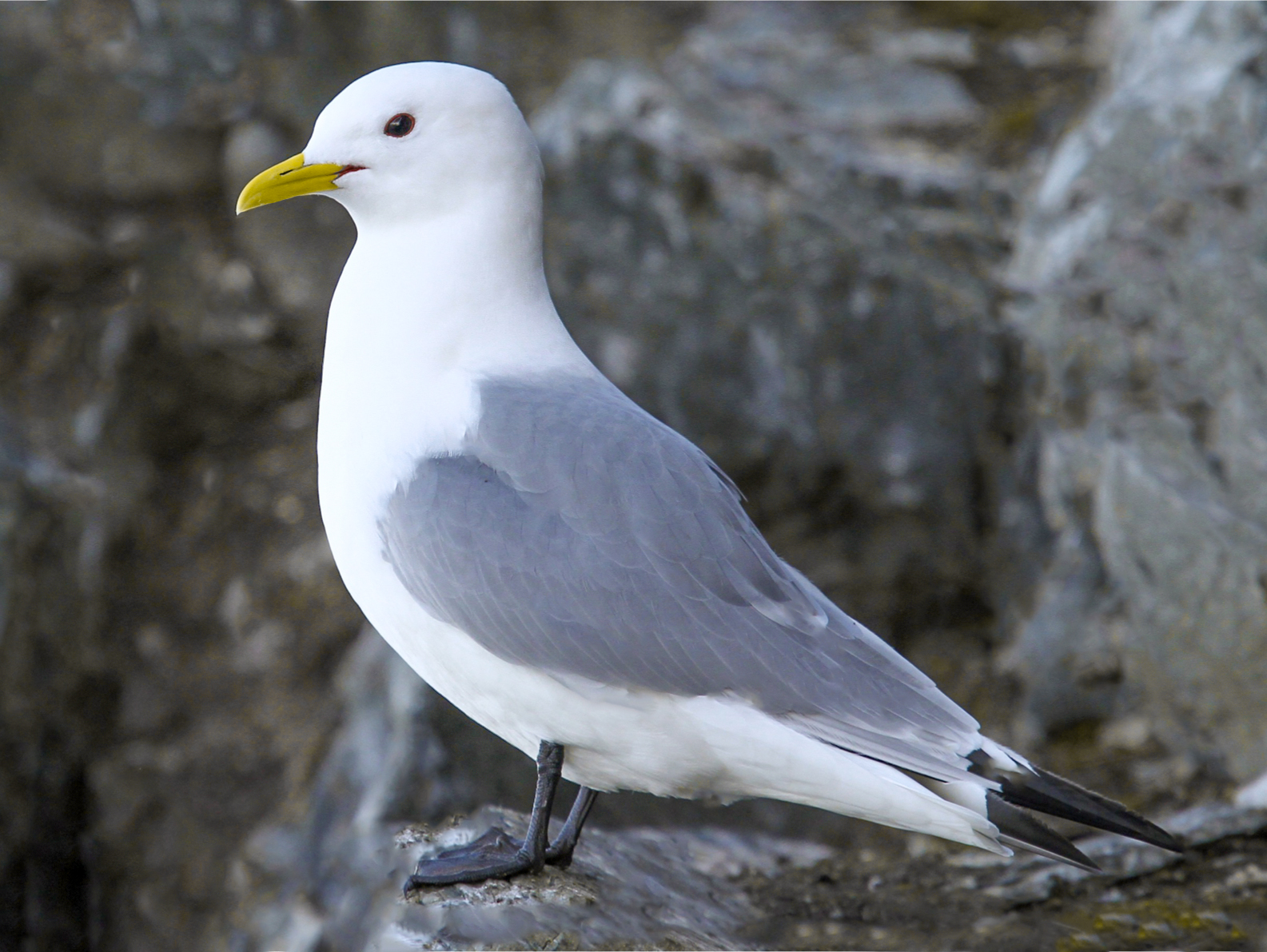 The black-legged kittiwake (Rissa tridactyla) is a seabird species in the gull family Laridae that occasionally winters over on the south eastern part of Hokkaido, so I have spotted and photographed them during my annual Hokkaido nature birding workshop tours on several occasions sometimes initially mixing them up with the Glaucous Gulls (Larus hyperboreus) until I see their black legs. Their average measurements are 41 - 46 cm (16 - 18 in), weighing 400 g (14 oz), with a wingspan of 91 cm (36 in), however there are some standouts far beyond the average. Adult Black-legged Kittiwake’s have white heads and bodies with grey wings with solid black tipped wings, black legs, and a yellow bill. It is a coastal breeding bird that builds its nests on high cliffs on the seaside. Both parents evenly share the incubation responsibilities, and monogamous bird pairs only reproduce once per year with a clutch size of 1 - 2 eggs. The International Union of Conservation of Nature has classified them as vulnerable. Their diets consist almost exclusively of fish, so they frequent the high yield fishing areas of Hokkaido when they visit the region.
The black-legged kittiwake (Rissa tridactyla) is a seabird species in the gull family Laridae that occasionally winters over on the south eastern part of Hokkaido, so I have spotted and photographed them during my annual Hokkaido nature birding workshop tours on several occasions sometimes initially mixing them up with the Glaucous Gulls (Larus hyperboreus) until I see their black legs. Their average measurements are 41 - 46 cm (16 - 18 in), weighing 400 g (14 oz), with a wingspan of 91 cm (36 in), however there are some standouts far beyond the average. Adult Black-legged Kittiwake’s have white heads and bodies with grey wings with solid black tipped wings, black legs, and a yellow bill. It is a coastal breeding bird that builds its nests on high cliffs on the seaside. Both parents evenly share the incubation responsibilities, and monogamous bird pairs only reproduce once per year with a clutch size of 1 - 2 eggs. The International Union of Conservation of Nature has classified them as vulnerable. Their diets consist almost exclusively of fish, so they frequent the high yield fishing areas of Hokkaido when they visit the region.
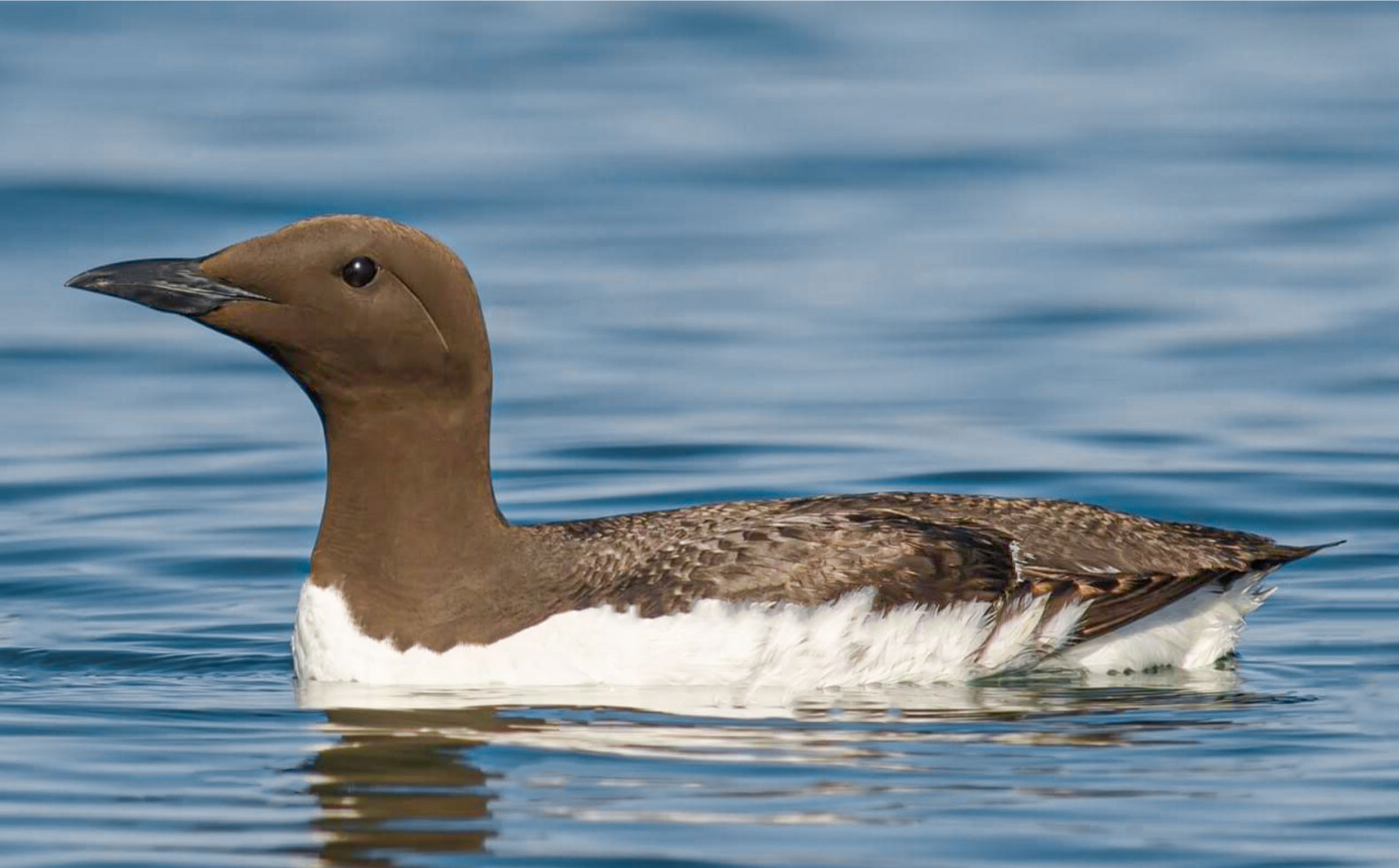 The Common Murre or Guillemot (Uria aalge inornata), in Japanese ウミガラス, is a member of the auk family of birds and has a circumpolar distribution, so there are small yet dense populations in Japan, and I usually know where to spot and photograph them on my annual Hokkaido nature tour. They are not exceedingly agile birds, more renowned for their diving to hunt, reaching depths of up to 180 m (590 ft) in pursuit of their prey. A common murre is 38 - 46 cm (15 - 18 in) in length with a 61 - 73 cm (24 - 29 in) wingspan, and a weight range from 775 - 1,250 g (1 lb 11.5 - 2 lb 12 oz). Males and females are nearly identical. The main subspecies has a black head, back, and wings with white underparts during the breeding season. The common murre mainly eats small schooling fish such as polar cod, capelin, sand lances, sprats, sandals, Atlantic cod and herring. Due to its being mainly a seafaring bird, who live in colonies, I mostly spot and photograph them on ocean stacks or small islands in Hokkaido, or while off the coast of Japan while leading a Hokkaido birding photography workshop tour while on the deck of a chartered vessel or zodiac boat while navigating pack ice, to photograph the Steller’s sea eagle (Haliaeetus pelagicus).
The Common Murre or Guillemot (Uria aalge inornata), in Japanese ウミガラス, is a member of the auk family of birds and has a circumpolar distribution, so there are small yet dense populations in Japan, and I usually know where to spot and photograph them on my annual Hokkaido nature tour. They are not exceedingly agile birds, more renowned for their diving to hunt, reaching depths of up to 180 m (590 ft) in pursuit of their prey. A common murre is 38 - 46 cm (15 - 18 in) in length with a 61 - 73 cm (24 - 29 in) wingspan, and a weight range from 775 - 1,250 g (1 lb 11.5 - 2 lb 12 oz). Males and females are nearly identical. The main subspecies has a black head, back, and wings with white underparts during the breeding season. The common murre mainly eats small schooling fish such as polar cod, capelin, sand lances, sprats, sandals, Atlantic cod and herring. Due to its being mainly a seafaring bird, who live in colonies, I mostly spot and photograph them on ocean stacks or small islands in Hokkaido, or while off the coast of Japan while leading a Hokkaido birding photography workshop tour while on the deck of a chartered vessel or zodiac boat while navigating pack ice, to photograph the Steller’s sea eagle (Haliaeetus pelagicus).
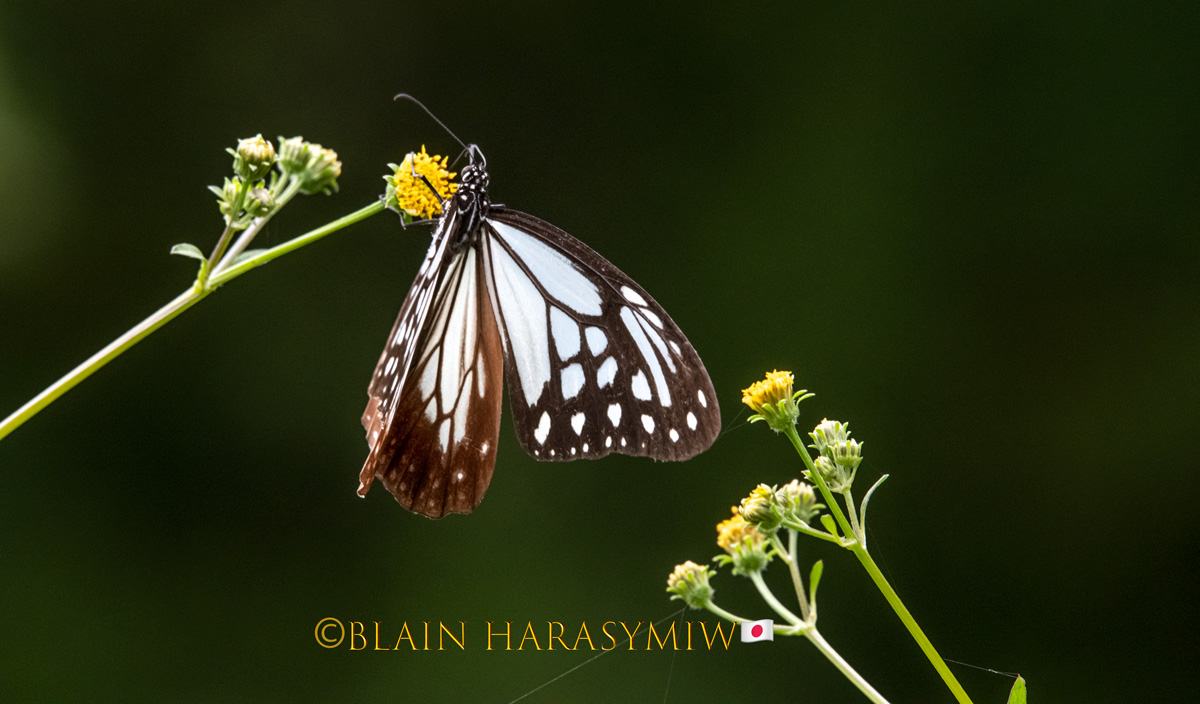 The Chestnut tiger butterfly (Parantica sita) is found in Japan and across most of Asia, and I also, spot them on my Hokkaido photo tour and throughout Japan they belong to the crows and tigers of danaid group of the brush footed butterfly family. Their wings are elogate, their upper side is black or fuliginous black, with bluish-white subhyaline markings. They have a streak from the base in intersapce, and very broad streaks thoughout the basal interspace, and the entire cell they have five large quadrate discal spots, two long preapical streaks, and three shorter streaks above them, plus a sup terminal serieas of more rounded spots. Their Hingwings are chestnut red, with subhyaline streaks and spots. They can be found in mountain the foothills around Japan from spring to Autumn.
The Chestnut tiger butterfly (Parantica sita) is found in Japan and across most of Asia, and I also, spot them on my Hokkaido photo tour and throughout Japan they belong to the crows and tigers of danaid group of the brush footed butterfly family. Their wings are elogate, their upper side is black or fuliginous black, with bluish-white subhyaline markings. They have a streak from the base in intersapce, and very broad streaks thoughout the basal interspace, and the entire cell they have five large quadrate discal spots, two long preapical streaks, and three shorter streaks above them, plus a sup terminal serieas of more rounded spots. Their Hingwings are chestnut red, with subhyaline streaks and spots. They can be found in mountain the foothills around Japan from spring to Autumn.
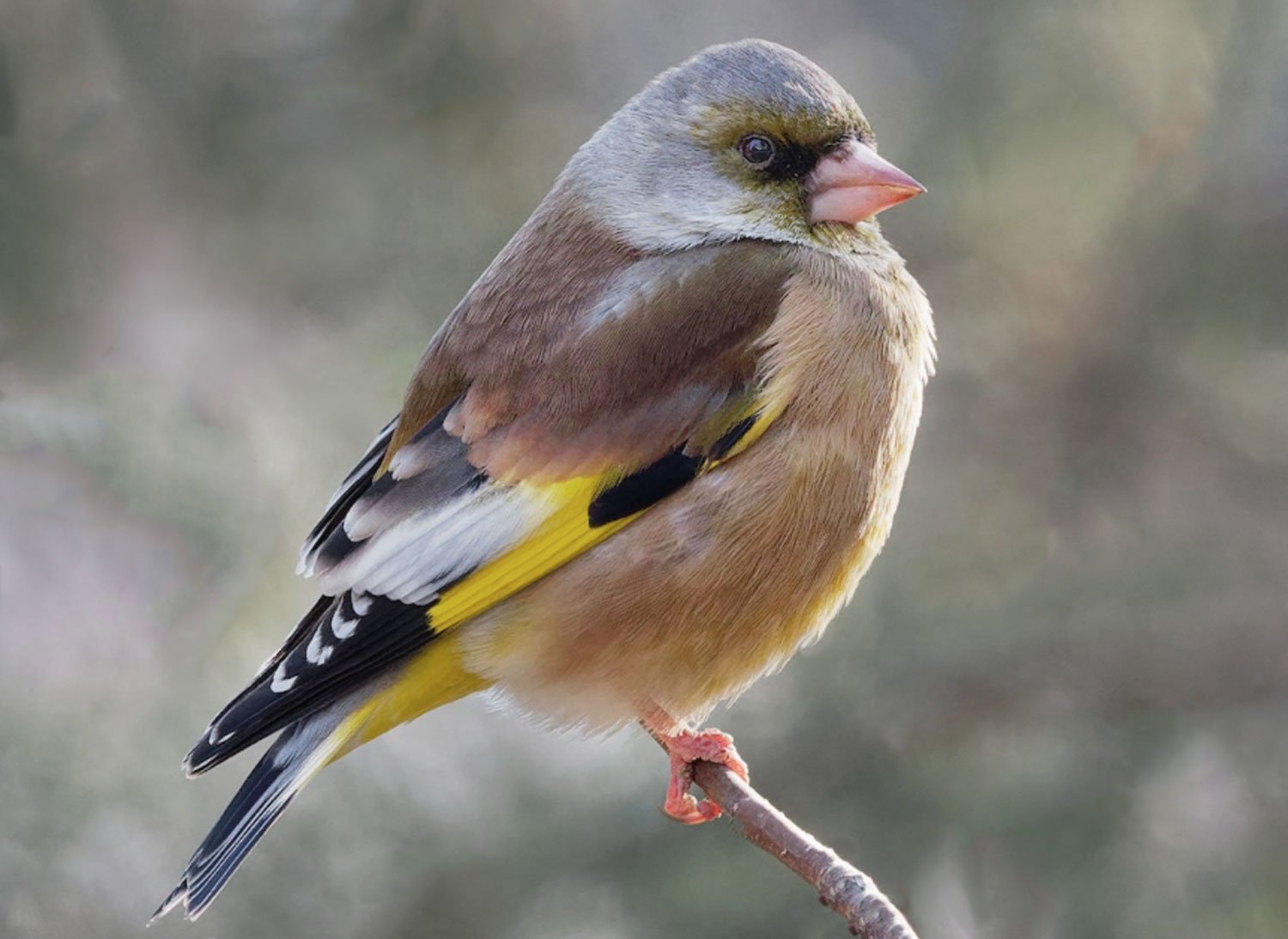
Spotted and photographed the Oriental Greenfinch (Chloris sinica) during my Hokkaido birding photography workshop tour, their distribution includes the Kamchatka Peninsula of Russia, the three main islands of Japan, North and South Korea, eastern and southern China as well as Vietnam. Their average length is 15 cm (6 inches) with a wingspan averaging 23.5 cm (9.25 inches). When I spotted them in Hokkaido, while resting in the branches of the poplar trees, they were nearly perfectly camouflaged, their lower mantle being a mahogany brown, where the upper mantle hovers between olive green to Xanadu grey. The upper rump is paler by comparison, a fusion of buff and brown, and the lower rump is either yellow or a tawny yellow. And their beak was an opal like brilliant rose color, almost fluorescent. They feed primarily on seeds and grains but will also feed on insects, spiders, and other small invertebrates. I look forward to photographing them again next year on my annual Hokkaido birding photo adventure.
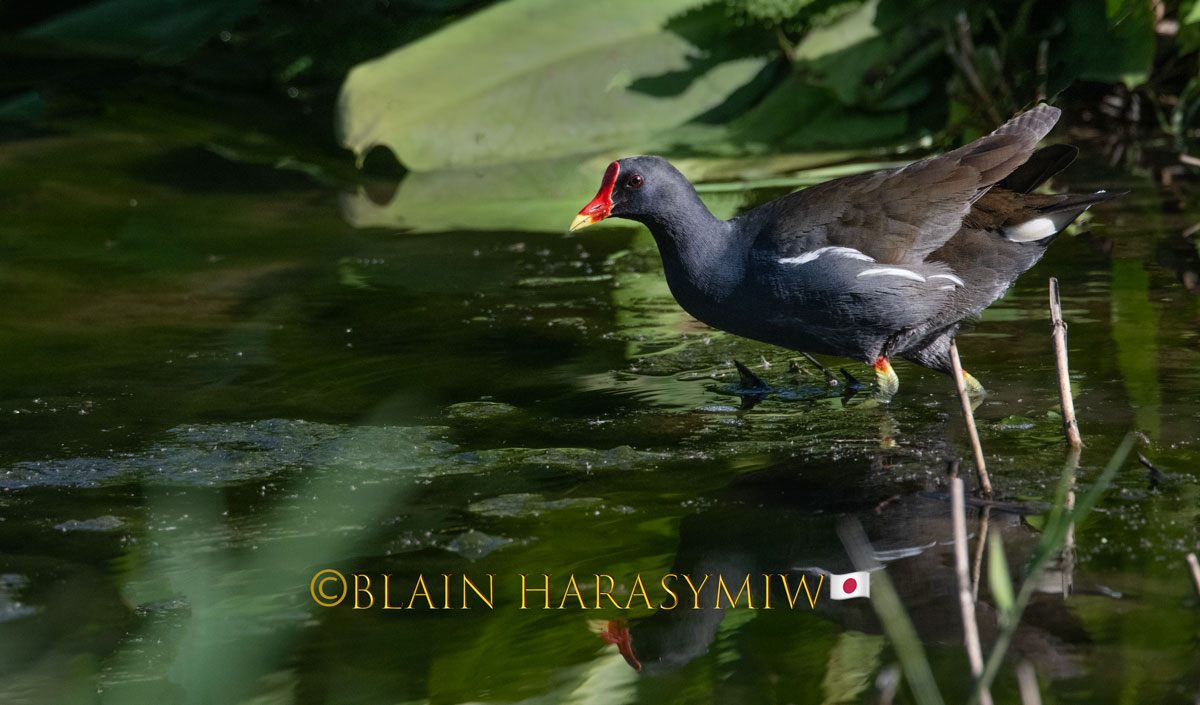 One of the rarer finds on my Hokkaido birding photo workshop tour expedition is the Common moorhen (Gallinule chloropus). It is sometimes referred to as the waterhen or swamp chicken. Part of the reason Hokkaido is such a haven for this bird is the fact that Common moorhens inhabit marshes, ponds, canals, and other wetlands, similar to the preferences of the Red-crowned crane (Grus japonensis). The Common moorhen has predominantly black and brown plumage with marked exception of a white under-tail and white streaks on the flanks. It is related to the common gallinule (Gallinule galeata) or the Americas. It has what is referred to as a gargling call but will hiss when threatened by predators. It ranges from 30 to 38 cm (12-15 in) in length with a wingspan of 50 to 62 cm (20-24 in). Its body mass is between 192 to 500 g (6.8-17.6 oz). Blain in Japan Hokkaido photo tours offer the very best Hokkaido birding opportunities.
One of the rarer finds on my Hokkaido birding photo workshop tour expedition is the Common moorhen (Gallinule chloropus). It is sometimes referred to as the waterhen or swamp chicken. Part of the reason Hokkaido is such a haven for this bird is the fact that Common moorhens inhabit marshes, ponds, canals, and other wetlands, similar to the preferences of the Red-crowned crane (Grus japonensis). The Common moorhen has predominantly black and brown plumage with marked exception of a white under-tail and white streaks on the flanks. It is related to the common gallinule (Gallinule galeata) or the Americas. It has what is referred to as a gargling call but will hiss when threatened by predators. It ranges from 30 to 38 cm (12-15 in) in length with a wingspan of 50 to 62 cm (20-24 in). Its body mass is between 192 to 500 g (6.8-17.6 oz). Blain in Japan Hokkaido photo tours offer the very best Hokkaido birding opportunities.
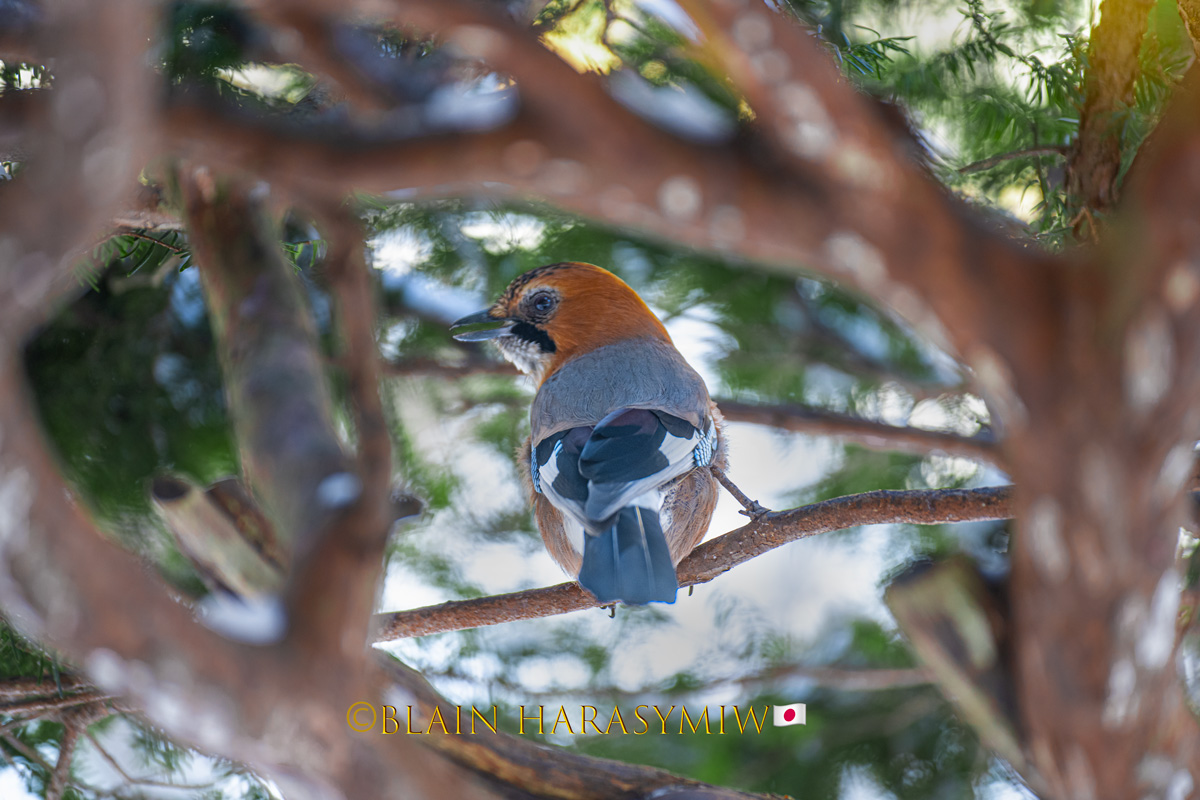
The Eurasian jay (Garrulus glandarius) is another member of Hokkaido’s rich avian wildlife menagerie that I see every year on my annual Hokkaido birding photo workshop. It is a species of passerine bird in the crow family Corvidae. The bird usually has pinkish brown plumage with a black stripe on each side of a whitish throat with a blue panel on the upper wing and a black tail, but the subspecies specific to Siberia and northern Japan (Garrulus glandarius brandtii) has a streaked crown, a reddish head, dark iris and grey mantle. Its overall length ranges from 34-35 cm (13-14 in) with a wingspan of 52-58 cm (20-23 in). Hokkaido’s national forests consist of the Eurasian Jay’s favorite tree to inhabit, oak, and the bird is characterized as an acorn hoarder. Eurasian Jays survive mainly on acorns and seeds but also take in a wide variety of invertebrates as well as many insects. Thankfully the International Union for the Conservation of Nature has them listed as a species of least concern, and I’m looking forward to spotting and photographing them with clients during my Hokkaido birding wildlife photography workshop tour.
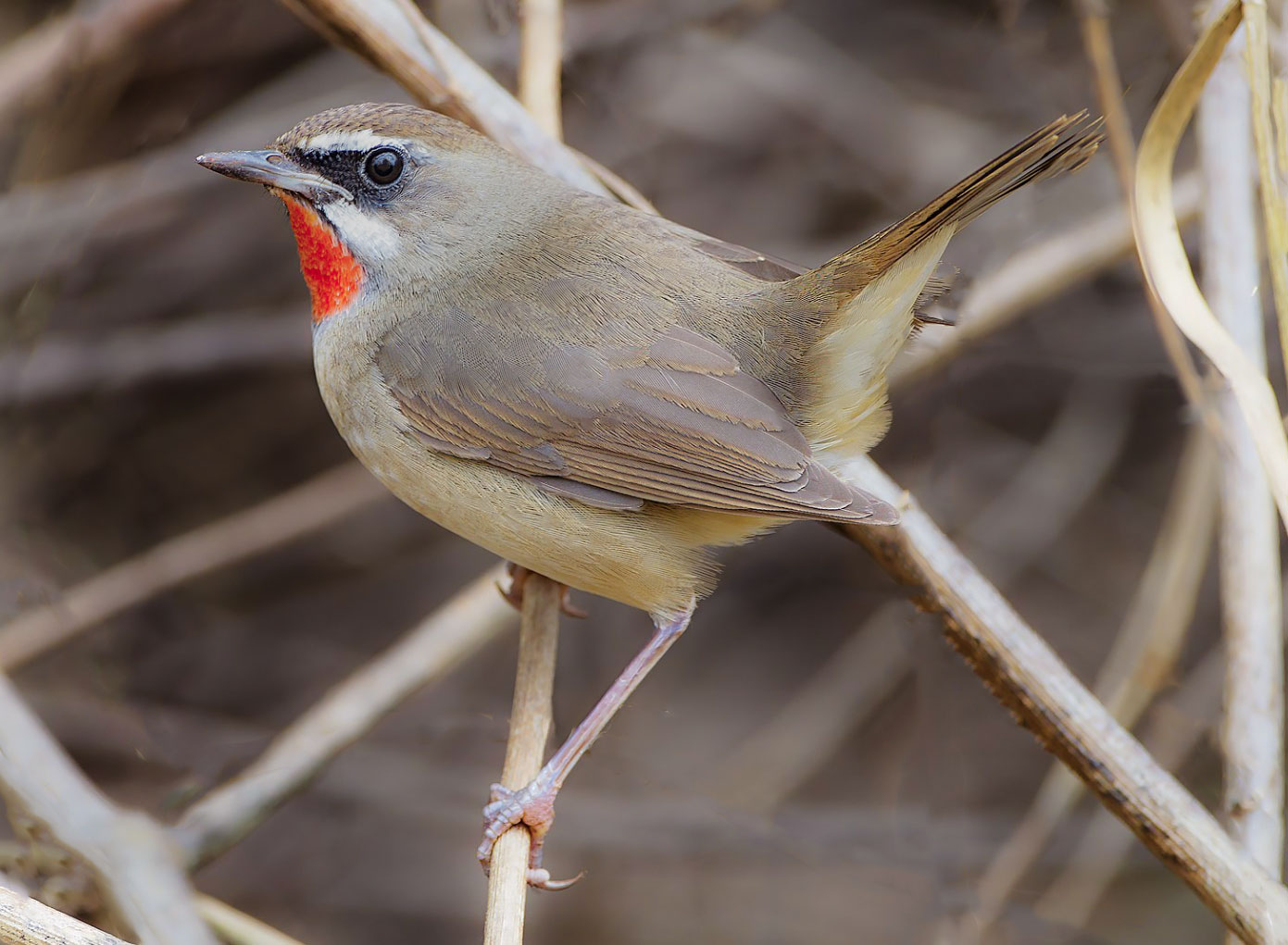 The Siberian rubythroat (Calliope calliope) is a small passerine bird. Formerly in the classification as a member of the thrush family. Today it is widely known to be an Old World flycatcher of the family Muscicapidae. They are migratory, breeding in Hokkaido and and Siberia. They winter over in southern Japan, Taiwan, and across Asia. I often photograph them during a Hokkaido photo tour, and an Okinawa Private photo tour.
The Siberian rubythroat (Calliope calliope) is a small passerine bird. Formerly in the classification as a member of the thrush family. Today it is widely known to be an Old World flycatcher of the family Muscicapidae. They are migratory, breeding in Hokkaido and and Siberia. They winter over in southern Japan, Taiwan, and across Asia. I often photograph them during a Hokkaido photo tour, and an Okinawa Private photo tour.
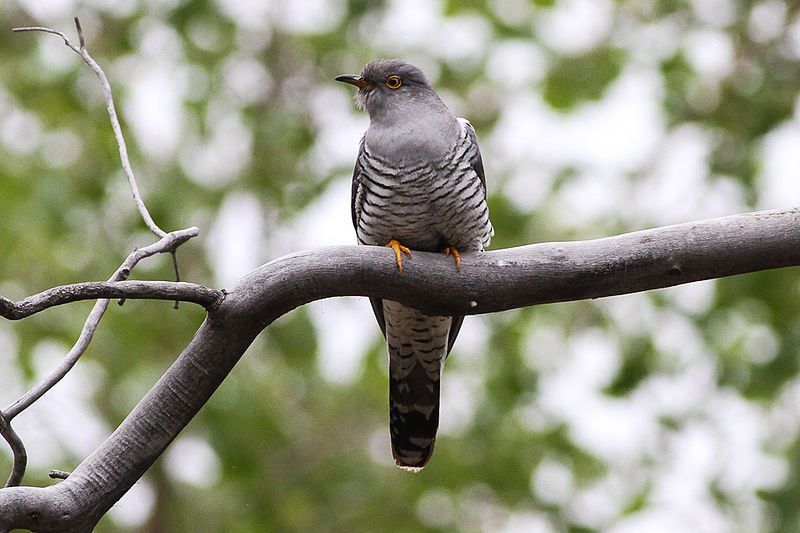 The common Cuckoo (Calculus canorus) is a member of the cuckoo bird family Cuculiformes, wich includes the roadrunners, the anis and coucals. Can be found throughout Europe, Asia and Africa. This birds is a brood parasite, in which they use other bird species nests to lay eggs, they like the nests of reed warblers, meadow pipits and a few other species of similar size. common cuckoo is 32–34 centimetres (13–13 in) long from bill to tail, with a tail of 13–15 centimetres (5.1–5.9 in) and a wingspan of 55–60 centimetres (22–24 in.) These birds have a greyish, slender body, long tail, similar to a sparrowhawk. Infrequently females display routs color polymorphism, but this mostly occurs in juveniles. Males adults are state grey, with grey throat which extends down the breast with clear defined bared underparts. They have a yellow ring around their eyes as well as on the tip of their bill and feet. I often photograph these birds during my annual Autumn leaves photo tour, cherry blossom photo tour, Hokkaido photo tour, Nikko photo tour, and on my Niigata photo tour.
The common Cuckoo (Calculus canorus) is a member of the cuckoo bird family Cuculiformes, wich includes the roadrunners, the anis and coucals. Can be found throughout Europe, Asia and Africa. This birds is a brood parasite, in which they use other bird species nests to lay eggs, they like the nests of reed warblers, meadow pipits and a few other species of similar size. common cuckoo is 32–34 centimetres (13–13 in) long from bill to tail, with a tail of 13–15 centimetres (5.1–5.9 in) and a wingspan of 55–60 centimetres (22–24 in.) These birds have a greyish, slender body, long tail, similar to a sparrowhawk. Infrequently females display routs color polymorphism, but this mostly occurs in juveniles. Males adults are state grey, with grey throat which extends down the breast with clear defined bared underparts. They have a yellow ring around their eyes as well as on the tip of their bill and feet. I often photograph these birds during my annual Autumn leaves photo tour, cherry blossom photo tour, Hokkaido photo tour, Nikko photo tour, and on my Niigata photo tour.
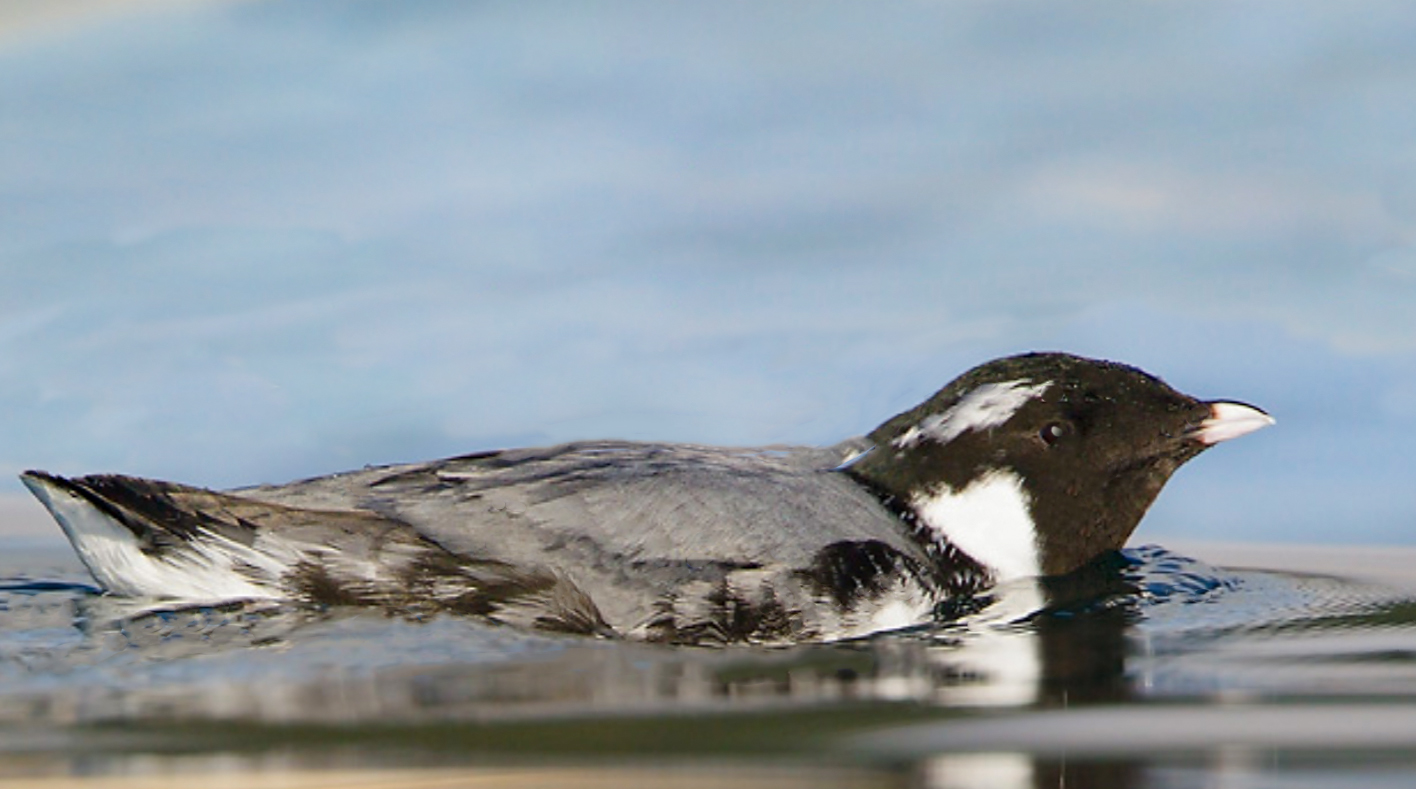
The ancient Murrelet (Synthliboramphus antiquus). This is a small bird with a small black head, their throat and back of neck is grayish, their underparts are white. Their bill is a yellowish but appears white in direct sunlight. These birds nest in colonies I often spot and photograph them on Islands around Hokkaido while leading my annual Hokkaido Photo tour.
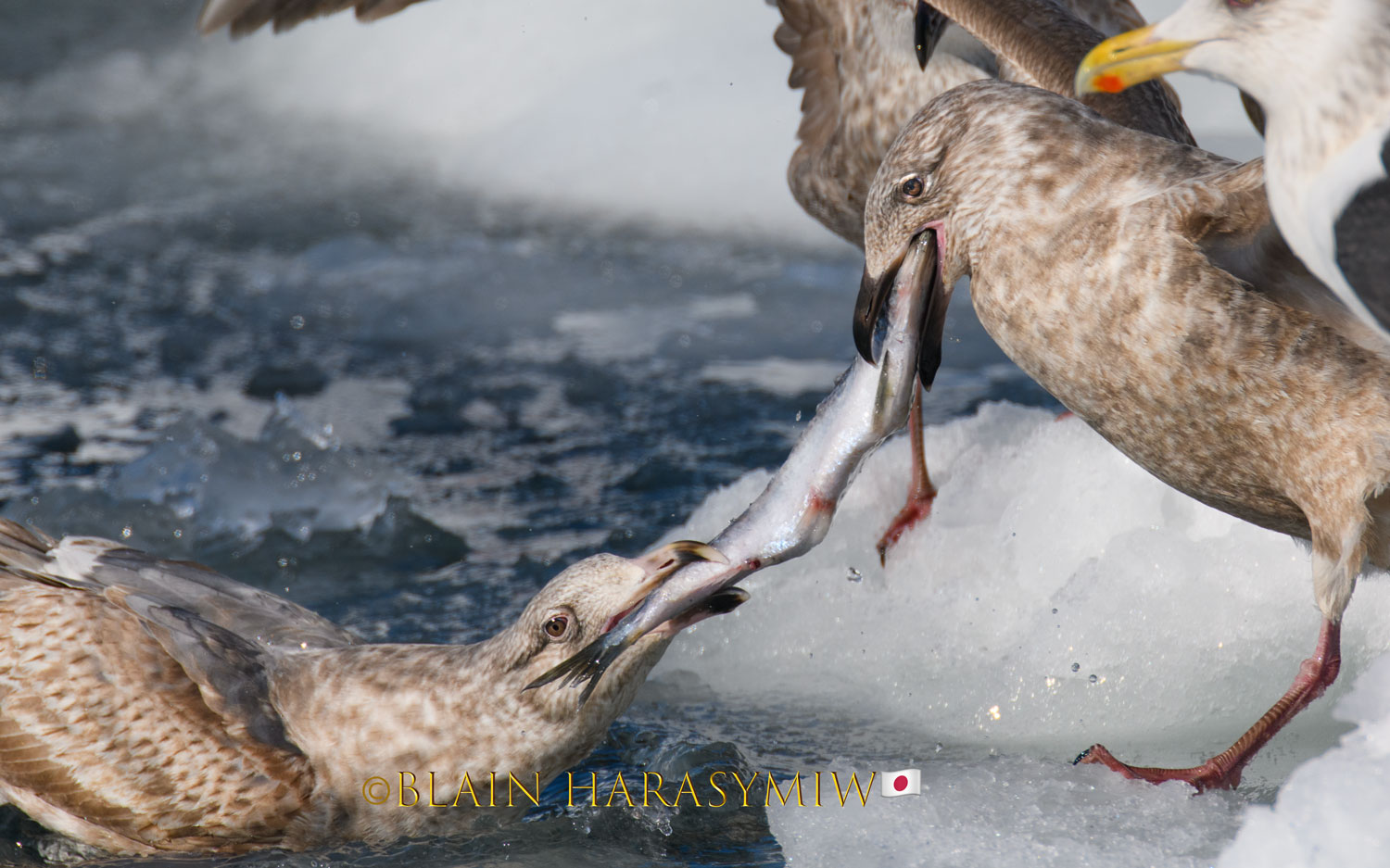
Two Juvenile Slaty-backed Gull (Larus schistisagus) having a Tug of war for a fresh fish, while a mature slaty-backed gull looks on. In the end of the tub of war gravity is the winner for the top gull. First winter plumage can be tricky to identify between Glacous-winged gulls and Slaty-backed gulls. Slaty-backed mostly look less massive then the Glaucous-winged and have shorter pink legs. The Slaty-backed gull is native to Japan and coastal Far East Asia. I took this image while leading my annual Hokkaido Japan Birding Photography Tour, on pack ice to photograph the Steller’s sea eagles, and White-tailed eagles, but I am always on the lookout spotting and photographing other bird species. This image of gulls hangs in my gallery, as no bird is common in my opinion.
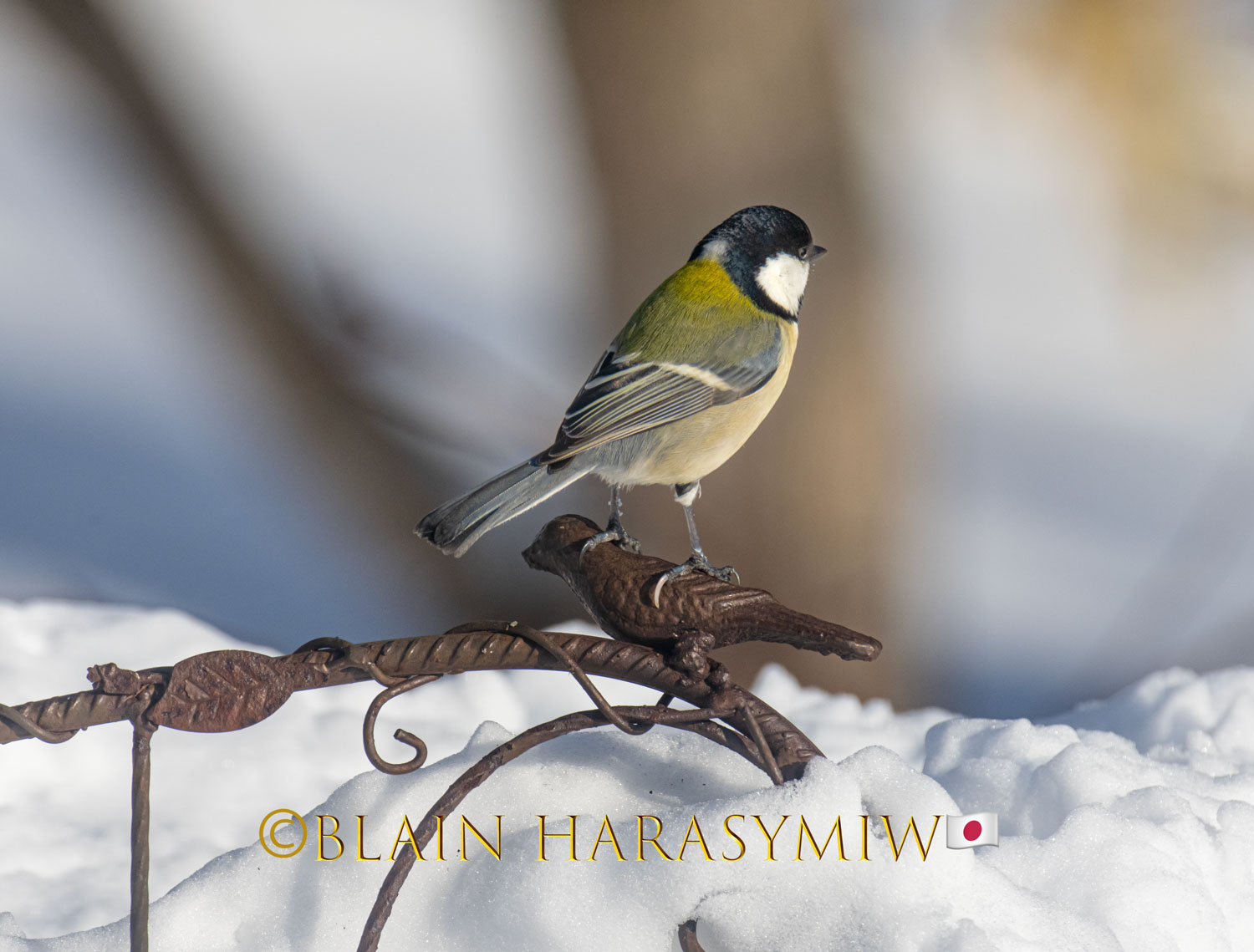 The Japanese tit (Parus minor), known as the Oriental tit or Great Eastern tit, they are a passerine bird which occur in Japan and the Russian far East, included are the disputed Japanese Kuri Islands that Russia holds. This species was considered a subspecies of the Great tit, also known as Western great tit (Parus major), studies have shown that the two species coexist in Japan and Russia without intermingling and without frequent hybridization. I took the image of a Japanese tit while leading a Hokkaido Photography Tour.
The Japanese tit (Parus minor), known as the Oriental tit or Great Eastern tit, they are a passerine bird which occur in Japan and the Russian far East, included are the disputed Japanese Kuri Islands that Russia holds. This species was considered a subspecies of the Great tit, also known as Western great tit (Parus major), studies have shown that the two species coexist in Japan and Russia without intermingling and without frequent hybridization. I took the image of a Japanese tit while leading a Hokkaido Photography Tour.
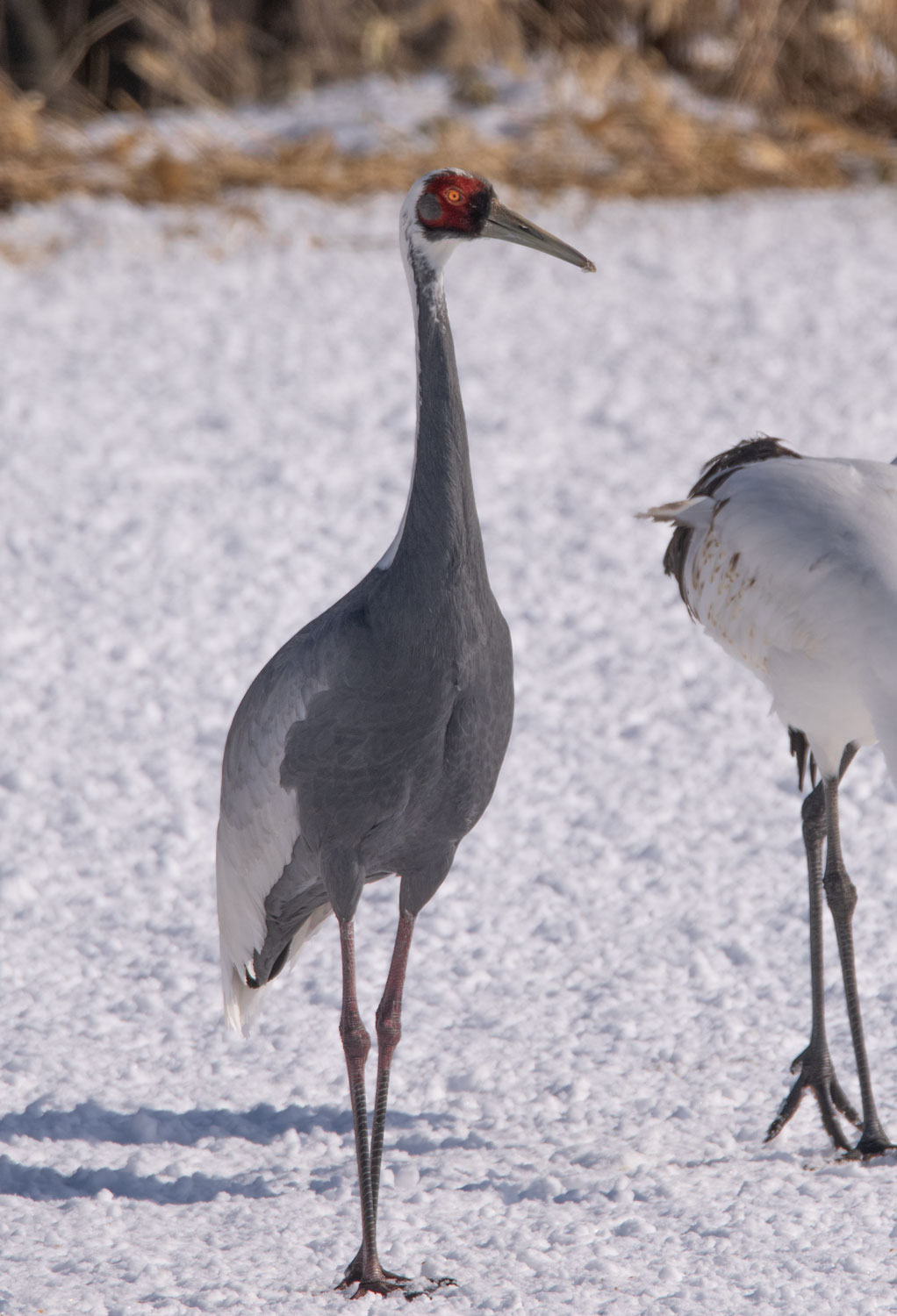 The White-naped crane (Antigone vipio) is in the crane family. As with all cranes they are a large bird the white-napes are 112-125cm (44-49 inches) long, and around 130cm (4.3ft) tall, they weight about 5.7kg (12lbs), they have pinkish legs, grey and white striped nice with a red face patch. These birds breed in northeastern Mongolia, northeastern China and parts of Russia. During winter they normally migrate to the Yangtze River, the Korean Demilitarized Zone, Kyushu Japan, Kazakhstan and Taiwan. There are under 5000 remaining in the wild and are listed as a Threatened Species. South Korea has designated them as a natural monument. I photographed this White-naped crane way off course mingling with the Red-crowned cranes (Grus japonensis) during my Hokkaido winter photography workshop tour, WOW!
The White-naped crane (Antigone vipio) is in the crane family. As with all cranes they are a large bird the white-napes are 112-125cm (44-49 inches) long, and around 130cm (4.3ft) tall, they weight about 5.7kg (12lbs), they have pinkish legs, grey and white striped nice with a red face patch. These birds breed in northeastern Mongolia, northeastern China and parts of Russia. During winter they normally migrate to the Yangtze River, the Korean Demilitarized Zone, Kyushu Japan, Kazakhstan and Taiwan. There are under 5000 remaining in the wild and are listed as a Threatened Species. South Korea has designated them as a natural monument. I photographed this White-naped crane way off course mingling with the Red-crowned cranes (Grus japonensis) during my Hokkaido winter photography workshop tour, WOW!
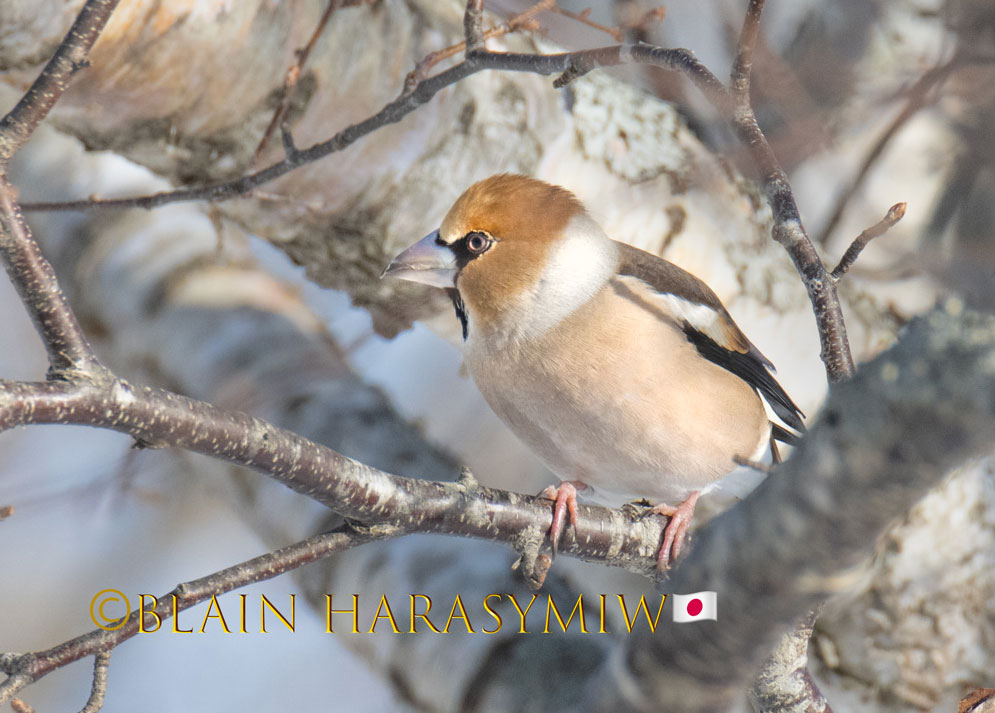 The hawfinch (Coccothraustes coccothraustes) is a passerine bird in the finch family Fringillidae. It’s the only species placed in the genus Coccothraustes. And is the closest living relatives to the Japanese grosbeak (Eophona personata) and Chinese grosbeak (Eophona migratoria) and of East Asia, and the evening grosbeak (Hesperiphona vespertina) and hooded grosbeak (Hesperiphona abeillei) of North America. They breed across Europe and Asia (Palearctic). They mainly reside in Europe, but many Asian birds migrate further south in the winter. It is a rare vagrant to Alaska. They are found in deciduous or mixed woodland, including parkland, with large trees – especially hornbeam. The hawfinch builds its nest in a bush or tree, and lays 2–7 eggs. The food is mainly seeds and fruit kernels, especially those of cherries, which it cracks with its powerful bill. This large finch species is usually seen in a pair or small group. The 16.5–18 cm hawfinch is a bulky bull-headed bird, which appears very short-tailed in flight. Its head is orange-brown with a black eyestripe and bib, and a massive bill, which is black in summer but paler in winter. The upper parts are dark brown and the underparts orange. The white wing bars and tail tip are striking in flight. The sexes are similar. Their call is a hard chick, which is unobtrusive. I photographed this bird while leading my annual Hokkaido photo tour.
The hawfinch (Coccothraustes coccothraustes) is a passerine bird in the finch family Fringillidae. It’s the only species placed in the genus Coccothraustes. And is the closest living relatives to the Japanese grosbeak (Eophona personata) and Chinese grosbeak (Eophona migratoria) and of East Asia, and the evening grosbeak (Hesperiphona vespertina) and hooded grosbeak (Hesperiphona abeillei) of North America. They breed across Europe and Asia (Palearctic). They mainly reside in Europe, but many Asian birds migrate further south in the winter. It is a rare vagrant to Alaska. They are found in deciduous or mixed woodland, including parkland, with large trees – especially hornbeam. The hawfinch builds its nest in a bush or tree, and lays 2–7 eggs. The food is mainly seeds and fruit kernels, especially those of cherries, which it cracks with its powerful bill. This large finch species is usually seen in a pair or small group. The 16.5–18 cm hawfinch is a bulky bull-headed bird, which appears very short-tailed in flight. Its head is orange-brown with a black eyestripe and bib, and a massive bill, which is black in summer but paler in winter. The upper parts are dark brown and the underparts orange. The white wing bars and tail tip are striking in flight. The sexes are similar. Their call is a hard chick, which is unobtrusive. I photographed this bird while leading my annual Hokkaido photo tour.
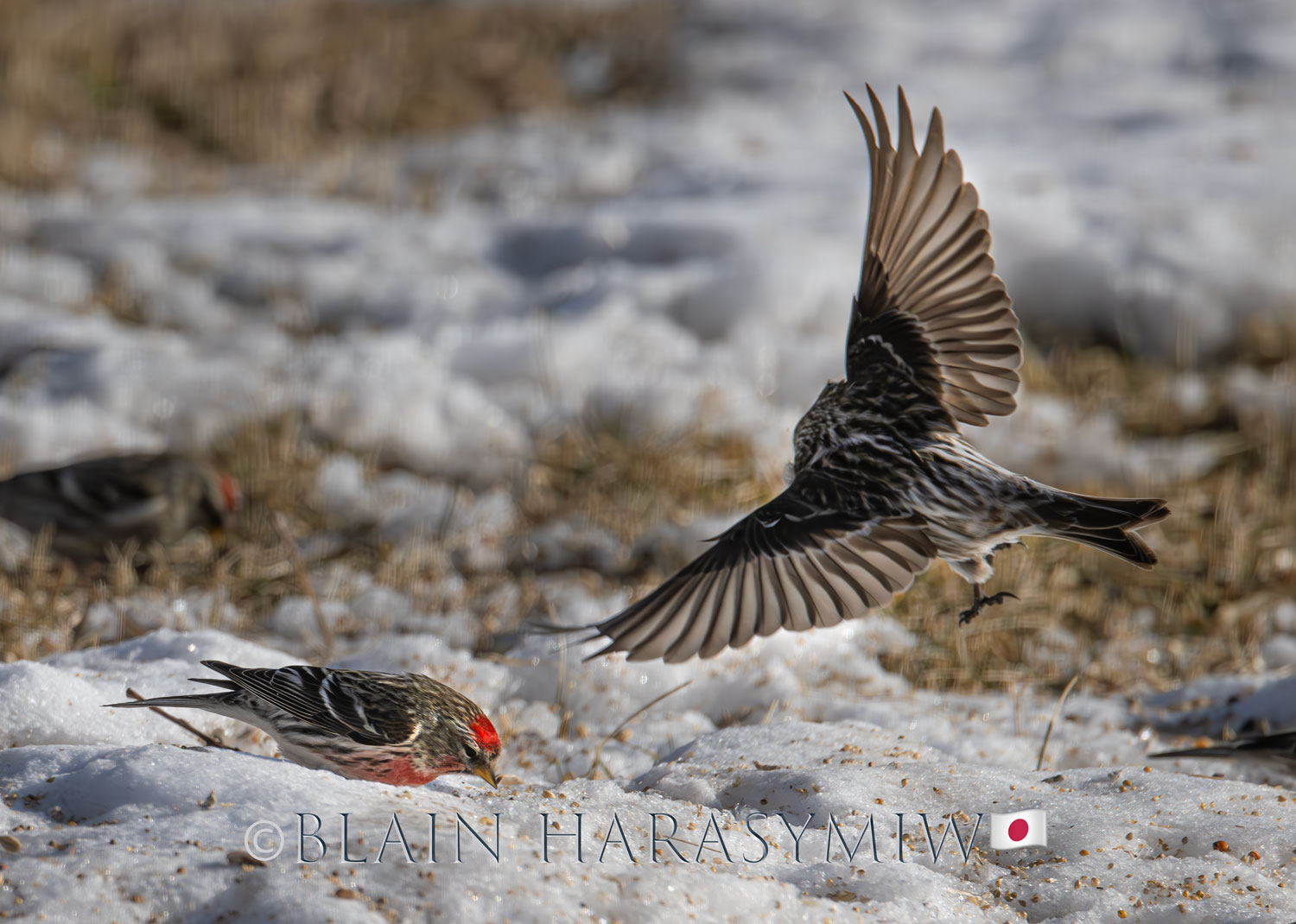 The Common Redpoll (Acanthis flammea) is a species of bird in the finch family. These birds can handle remarkably cold templates and winter homes are driven by availability of food. There are several subspecies of this bird found in Asia, North America, Greenland and Baffin Island which are called the Greenland redpoll. The common redpoll is a small brownish grey finch with dark streaks and a bright red path on it’s forehead, with a black big pale stripes on the wings. Males often have their breasts suffered with red. The common redpoll is smaller browned and more streaked than the Arctic redpoll, adults are 11.5 and 14 centimetres (4.5 and 5.5 in) in length and weighing between 12 and 16 grams (0.42 and 0.56 oz). Wingspan ranges from 7.5 to 8.7 in (19-22 cm). Their rump is streaked and there is a broad dark brown streak across the vent. It has brown legs, dark-tipped yellowish bills and dark brown irises. I took this image while leading my annual winter Hokkaido photo tour workshop.
The Common Redpoll (Acanthis flammea) is a species of bird in the finch family. These birds can handle remarkably cold templates and winter homes are driven by availability of food. There are several subspecies of this bird found in Asia, North America, Greenland and Baffin Island which are called the Greenland redpoll. The common redpoll is a small brownish grey finch with dark streaks and a bright red path on it’s forehead, with a black big pale stripes on the wings. Males often have their breasts suffered with red. The common redpoll is smaller browned and more streaked than the Arctic redpoll, adults are 11.5 and 14 centimetres (4.5 and 5.5 in) in length and weighing between 12 and 16 grams (0.42 and 0.56 oz). Wingspan ranges from 7.5 to 8.7 in (19-22 cm). Their rump is streaked and there is a broad dark brown streak across the vent. It has brown legs, dark-tipped yellowish bills and dark brown irises. I took this image while leading my annual winter Hokkaido photo tour workshop.
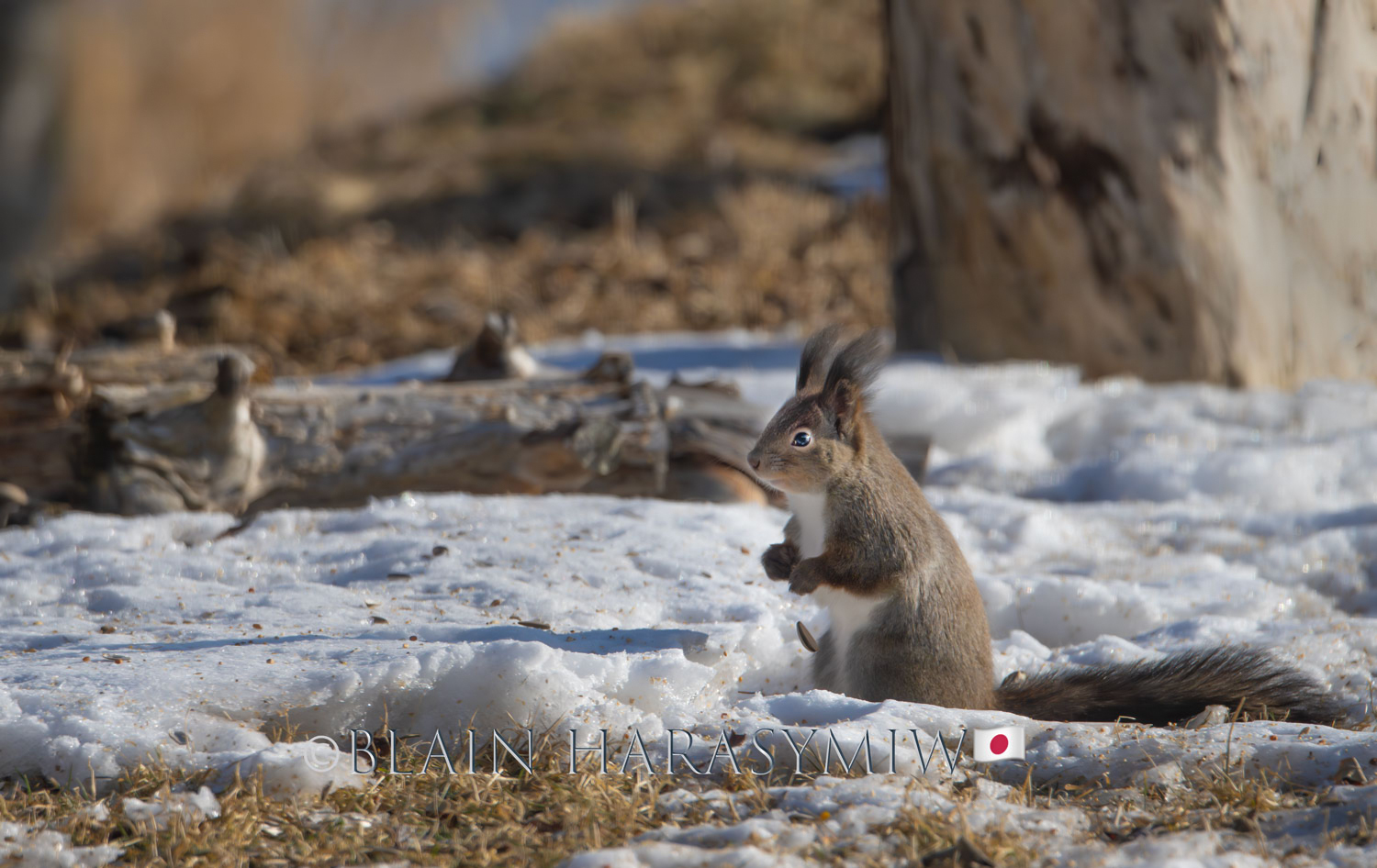 Hokkaido Red Squirrel is a subspecies of the Eurasian red Squirrel (Sciurus vulgaris) in Japanese (Ezo Risu). When spotted in Hokkaido, they are easily distinguished by their distinctive "hairstyle" around their ears. This is a juvenile adult Hokkaido Squirrel. They can grow to be the size of house cats and bigger. The red squirrel sheds its coat twice a year, transitioning from a thin summer coat to a thick winter coat, characterized by cool-looking, long, and large ear tufts. Their coat matches their environment, allowing them to camouflage themselves from predators. These squirrels do not hibernate during winter; they can be spotted and photographed running and playing about in their winter coat. They mainly eat seeds of trees such as conifer cones, fungi, nuts such as hazelnuts, beech nuts, chestnuts, acorns, they also eat berries, vegetables, flowers, tree sap and young shoots, they may also eat birds' eggs. They store their food in caches called “middens, which are either buried or in holes in trees, and they eat this when food is scarce. They are mainly active during morning and late afternoon to evening; they avoid midday, due to heat and birds of prey. They are relatively common, but finding them at a location where they can be photographed is not easy, so it's best to have a local help you spot and photograph them. I took this image of a Hokkaido Red Squirrel with participants while I was leading my annual Hokkaido photo tour.
Hokkaido Red Squirrel is a subspecies of the Eurasian red Squirrel (Sciurus vulgaris) in Japanese (Ezo Risu). When spotted in Hokkaido, they are easily distinguished by their distinctive "hairstyle" around their ears. This is a juvenile adult Hokkaido Squirrel. They can grow to be the size of house cats and bigger. The red squirrel sheds its coat twice a year, transitioning from a thin summer coat to a thick winter coat, characterized by cool-looking, long, and large ear tufts. Their coat matches their environment, allowing them to camouflage themselves from predators. These squirrels do not hibernate during winter; they can be spotted and photographed running and playing about in their winter coat. They mainly eat seeds of trees such as conifer cones, fungi, nuts such as hazelnuts, beech nuts, chestnuts, acorns, they also eat berries, vegetables, flowers, tree sap and young shoots, they may also eat birds' eggs. They store their food in caches called “middens, which are either buried or in holes in trees, and they eat this when food is scarce. They are mainly active during morning and late afternoon to evening; they avoid midday, due to heat and birds of prey. They are relatively common, but finding them at a location where they can be photographed is not easy, so it's best to have a local help you spot and photograph them. I took this image of a Hokkaido Red Squirrel with participants while I was leading my annual Hokkaido photo tour.
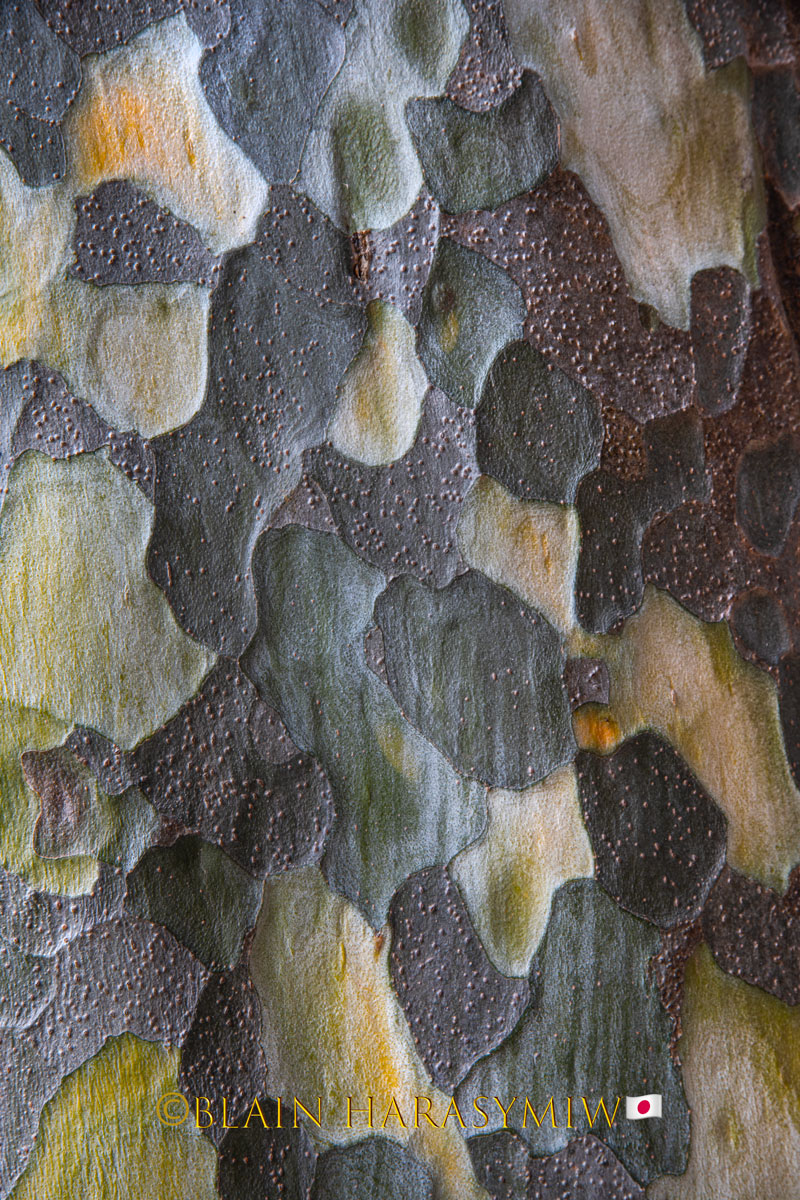
Lacebark pine (Pinus bungeana) in Japanese シロマツ, is an eye-catching mottled and multi-colored tree bark, these pine trees have green needled throughout the year, and with its multi coloured beautifully patterned bark its a very photogenic tree. Lacebark pine love sun, and are often planet at Buddhist temple sanctuaries and Shinto shrines across Japan. These trees prefer to grow in the mid to highlands, and do not do so well at sea level, they also prefer acidic soil. During my annual Hokkaido photo tour, and my Essence of Autumn photo tour, plus my annual Essence of Cherry Blossom Japan Photo Tour, I always stop at an ancient Buddhist sanctuary way off the beaten path and introduce participants to these lovely trees, and an authentic Japanese Zen Buddhist Sanctuary.
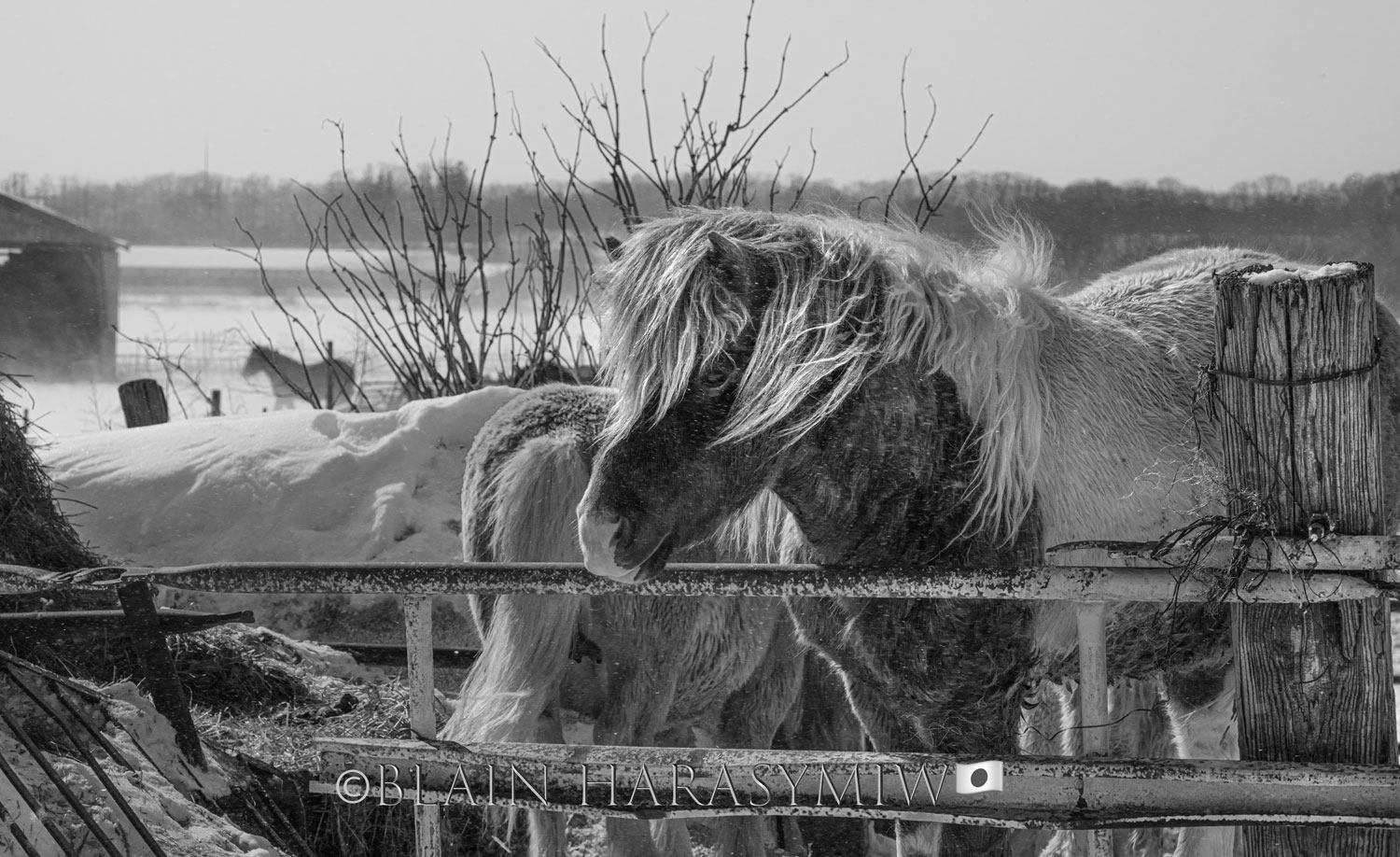 Hokkaido Pony (Do-San-Ko) (Equus caballus) is an old breed of horse. They were brought to Hokkaido by fishermen during the Edo period and left to fend for themselves in the harsh winters. The fishermen would return in the spring with fresh horses and would also use the ones that survived for work horses and travelling. Today, the Hokkaido pony population stands at just over 1,000, making them a rare breed. Now they are mainly used as pleasure mounts, as they are great for beginners, being extremely mild-tempered and kind. They are also used for Yabusame (流鏑馬), the art of archery from horseback, which was common during Samurai battles. The Mongolian horse is a close descendant of the Hokkaido horse; they are similar in height, with 12 to 14 HH (48-56 inches or 122cm to 142 cm). They weigh between 500 and 600 pounds and can be used as workhorses for up to twenty years; their average lifespan is 40 years. Their diet in Hokkaido has not changed since the Edo period; they mainly eat bamboo grass. This image of the Hokkaido Pony was taken while I was leading my annual Hokkaido photo tour.
Hokkaido Pony (Do-San-Ko) (Equus caballus) is an old breed of horse. They were brought to Hokkaido by fishermen during the Edo period and left to fend for themselves in the harsh winters. The fishermen would return in the spring with fresh horses and would also use the ones that survived for work horses and travelling. Today, the Hokkaido pony population stands at just over 1,000, making them a rare breed. Now they are mainly used as pleasure mounts, as they are great for beginners, being extremely mild-tempered and kind. They are also used for Yabusame (流鏑馬), the art of archery from horseback, which was common during Samurai battles. The Mongolian horse is a close descendant of the Hokkaido horse; they are similar in height, with 12 to 14 HH (48-56 inches or 122cm to 142 cm). They weigh between 500 and 600 pounds and can be used as workhorses for up to twenty years; their average lifespan is 40 years. Their diet in Hokkaido has not changed since the Edo period; they mainly eat bamboo grass. This image of the Hokkaido Pony was taken while I was leading my annual Hokkaido photo tour.
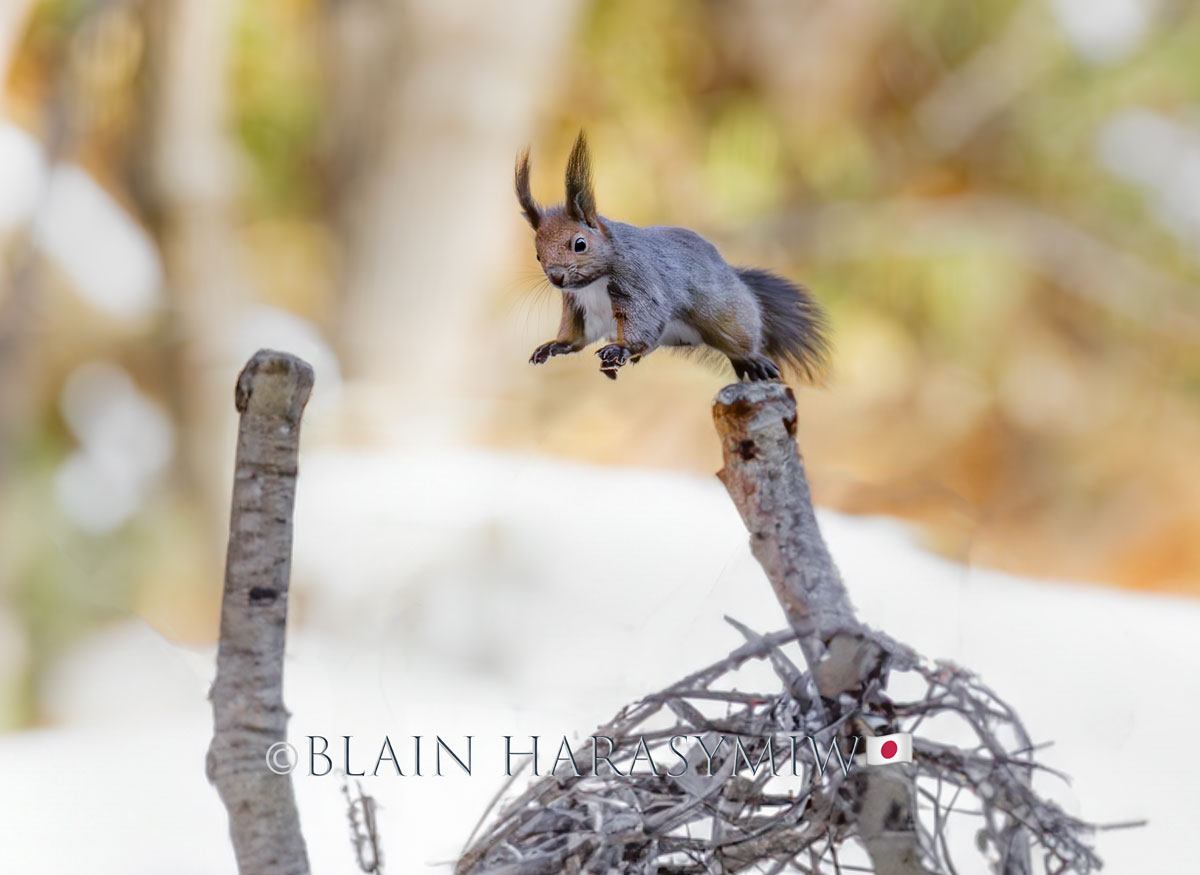
Hokkaido Red Squirrel is a subspecies of the Eurasian red Squirrel (Sciurus vulgaris) in Japanese (Ezo Risu). To date there have been over 40 described subspecies of the red squirrel, but there is much debate of the actual number. When spotting a Hokkaido red squirrel they are easily distinguished due to their wild "hairstyle" around their ears, Japanese folklore mentions the adult Hokkaido red Squirrel can grow to be the size of house cats, but I believe they have mistaken the red squirrel for the Japanese giant flying squirrel, or musasabi (Petaurista leucogenys), but I could be wrong, as I have seen squirrels from a distance in Hokkaido the size of cats, with similar ears to the red squirrel, this year and for the next few years I plan on spending weeks to spot and photograph the Japanese giant flying squirrel, and Hokkaido red squirrel, and see if there is any truth to folklore. The red squirrel sheds its coat two times a year, from a thin summer coat to a thick winter coat with cool looking long big ear-tufts. Their coat matches their environment to camouflage them from predators. These squirrels do not hibernate durning winter they can be spotted and photographed running and playing about in their winter coat. They mainly eat seeds of trees such as conifer cones, fungi, nuts such as hazelnuts, beechnuts, chestnuts, acorns, they also eat berries, vegetables, flowers tree sap and young shoots, they may also eat birds eggs. They store their foods in caches called “middens, which are either buried or in holes in trees and they eat this when food is scarce. They are mainly active during morning and late afternoon to evening, they avoid mid day, due to heat and birds of prey. They are fairly common but fining them at a location where they can be photographed is not easy, so its best to have a local help you spot and photograph them. I took this image of a Hokkaido Red Squirrel while leading my annual Hokkaido photography workshop tour.

The Eurasian ermine, Stoat (Mustela erminea) are native to Japan, Eurasia and northern North America. They are similar to the Japanese weasel but smaller. The cute slender male stroat measures 15 - 35cm in body length including head, their tail is from 7 - 13cm. Males on average weigh 260g, while females weigh 190g the females body measurement is also smaller and this is how to tell them apart. There are over 30 subspecies known, and with its wide distribution they are listed as Least Concern on the UICN Red List. During winter they turn pure white and can be difficult to spot and photograph, but they are worth the effort. I took this image while leading my annual Hokkaido photography tour.
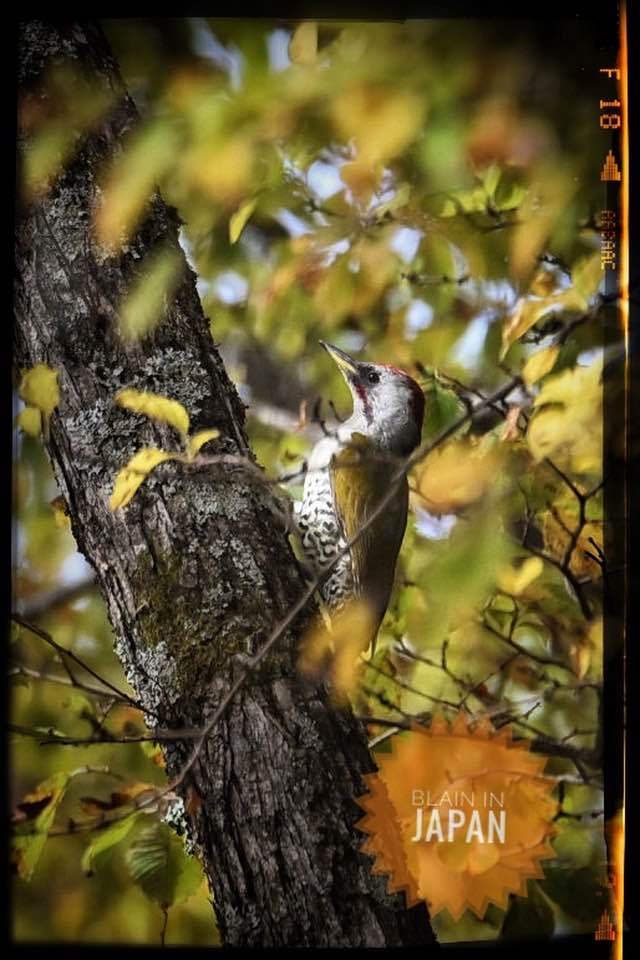 Japanese green woodpecker (Picus awokera) is the only green backed woodpecker found in Japan, they are closely related to the European green woodpecker but endemic to Japan. They reach about 30cm in length, they have bright green wings and tail, a red or black mustache and crown green underparts and neat spots on belly. Their call is pyo pyo and sometimes Kyo Kyo. I photographed this woodpecker in Akita Japan, while I was driving north to to lead my annual private Hokkaido autumn photography tour.
Japanese green woodpecker (Picus awokera) is the only green backed woodpecker found in Japan, they are closely related to the European green woodpecker but endemic to Japan. They reach about 30cm in length, they have bright green wings and tail, a red or black mustache and crown green underparts and neat spots on belly. Their call is pyo pyo and sometimes Kyo Kyo. I photographed this woodpecker in Akita Japan, while I was driving north to to lead my annual private Hokkaido autumn photography tour.
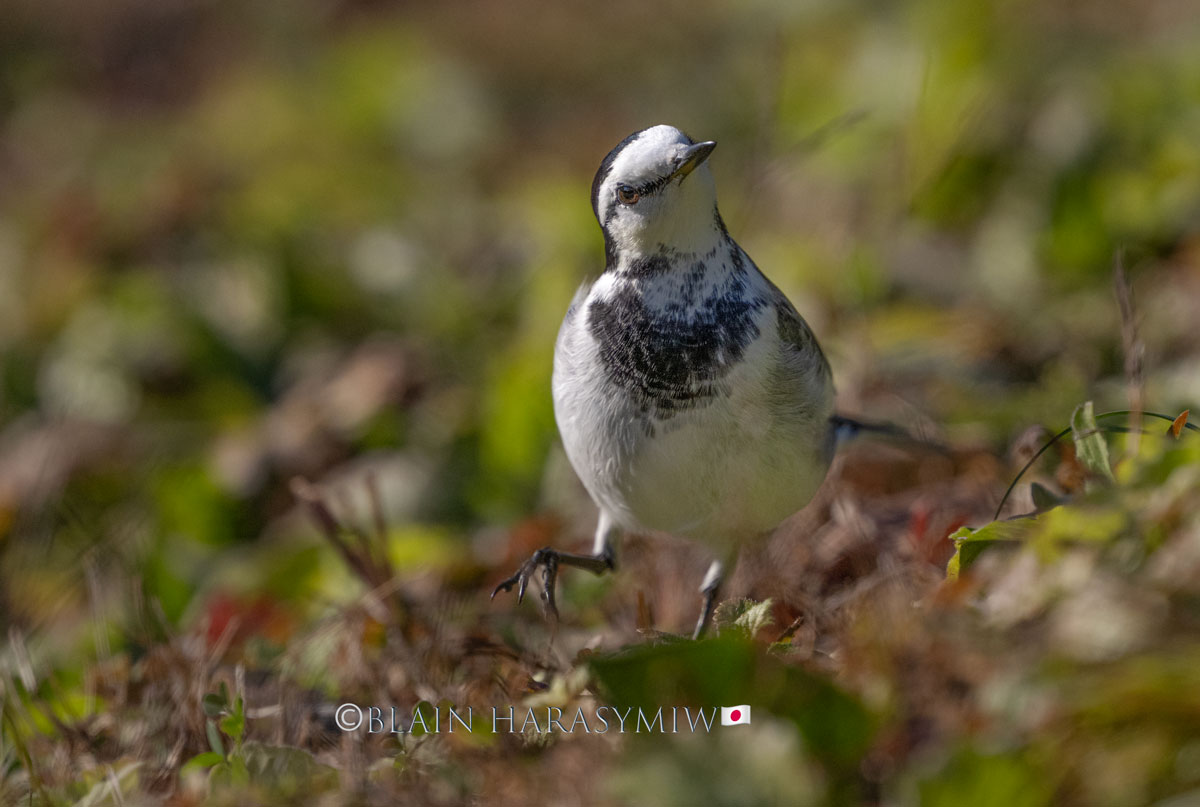 The White Wagtail (Black-backed) (Motacilla alba lugens) is a small passerine bird from the Motacillidae family. This species breeds in the Palaearctic zone, which includes most of Asia, Europe, and Africa. The Black-backed Wagtail is a slender bird, measuring between 16.5 and 21 cm (6.5 to 8.3 inches) in length, with an average weight of about 30 grams. It is an insectivorous bird often found near water, preferring bare areas for feeding where it can see and pursue its prey. I photographed this Black-backed Wagtail while leading a photography tour in Hokkaido.
The White Wagtail (Black-backed) (Motacilla alba lugens) is a small passerine bird from the Motacillidae family. This species breeds in the Palaearctic zone, which includes most of Asia, Europe, and Africa. The Black-backed Wagtail is a slender bird, measuring between 16.5 and 21 cm (6.5 to 8.3 inches) in length, with an average weight of about 30 grams. It is an insectivorous bird often found near water, preferring bare areas for feeding where it can see and pursue its prey. I photographed this Black-backed Wagtail while leading a photography tour in Hokkaido.
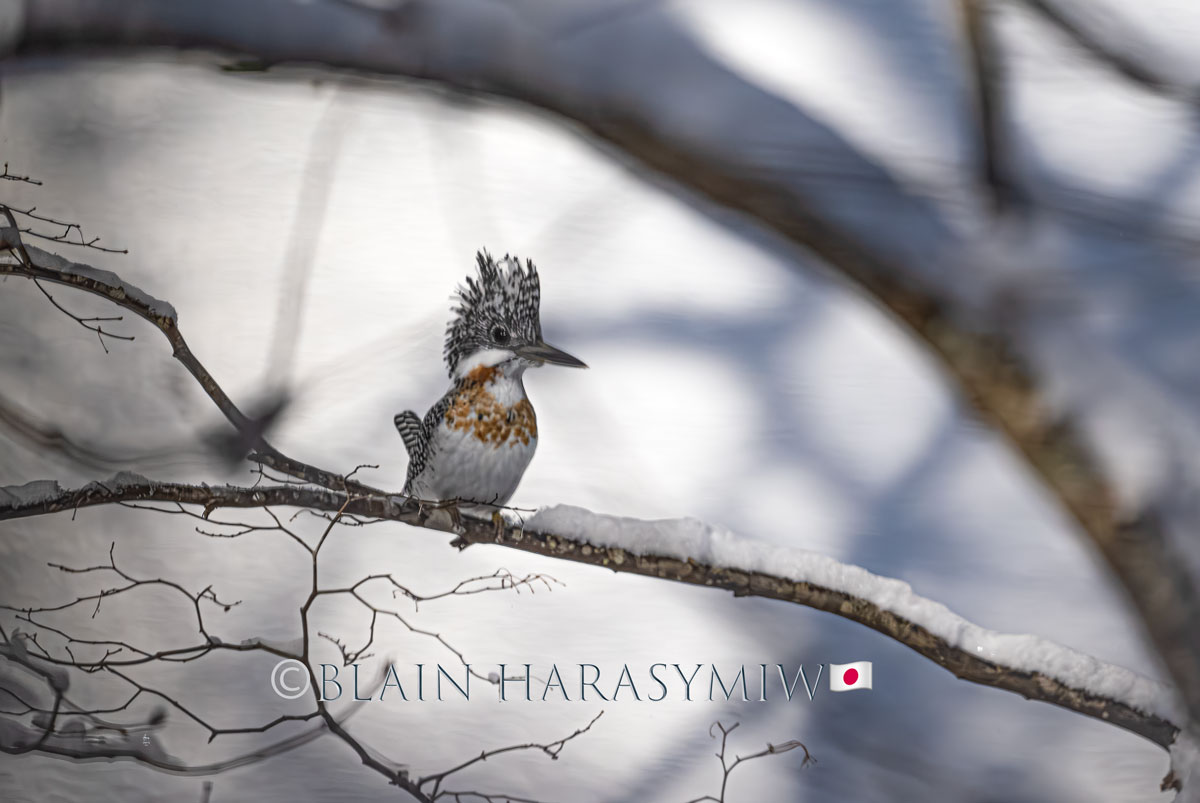 The crested kingfisher (Megaceryle lugubris) is a large species native to Japan and southern Asia. It belongs to the genus Megaceryle, which includes three other species: the giant kingfisher (Megaceryle maxima), the ringed kingfisher (Megaceryle torquata), and the belted kingfisher (Megaceryle alcyon). Together, these species form a species complex. The crested kingfisher is a stocky bird, between 38 and 43 cm (15 and 17 in) tall, weighing 230 and 280 g (8 and 10 oz). It has a large, pointed black bill with a yellowish-white tip and a large, shaggy black and white barred crest. It has finely barred black and white upperparts with flanks barred grey and white, while its belly is white with a black-speckled breastband. It has a white collar that starts at the bottom of the bill and goes to the back of the neck. The tail feathers are black with 6 to 8 white bars. Males and females are the same size but exhibit sexual dimorphism in their plumage. Females have bright pink-cinnamon underwing coverts washed with pale rufous, while males lack this and instead have rufus-orange feathers on the breastband. I photographed this Crested Kingfisher while leading my annual Hokkaido Photography Tour 2025.
The crested kingfisher (Megaceryle lugubris) is a large species native to Japan and southern Asia. It belongs to the genus Megaceryle, which includes three other species: the giant kingfisher (Megaceryle maxima), the ringed kingfisher (Megaceryle torquata), and the belted kingfisher (Megaceryle alcyon). Together, these species form a species complex. The crested kingfisher is a stocky bird, between 38 and 43 cm (15 and 17 in) tall, weighing 230 and 280 g (8 and 10 oz). It has a large, pointed black bill with a yellowish-white tip and a large, shaggy black and white barred crest. It has finely barred black and white upperparts with flanks barred grey and white, while its belly is white with a black-speckled breastband. It has a white collar that starts at the bottom of the bill and goes to the back of the neck. The tail feathers are black with 6 to 8 white bars. Males and females are the same size but exhibit sexual dimorphism in their plumage. Females have bright pink-cinnamon underwing coverts washed with pale rufous, while males lack this and instead have rufus-orange feathers on the breastband. I photographed this Crested Kingfisher while leading my annual Hokkaido Photography Tour 2025.
 The Japanese sparrowhawk (Tachyspiza gularis) is a bird of prey belonging to the family Accipitridae, which also includes many other diurnal raptors such as eagles, buzzards, and harriers. It was previously classified under the genus Accipiter. This Raptor is also known as the Japanese lesser sparrowhawk, Asiatic sparrowhawk, and Eastern sparrowhawk. The Japanese sparrowhawk has broader and rounder wings and a shorter tail. Its length ranges from 23 to 30 centimetres (9.1 to 11.8 inches). The bird features a dark back and a whitish underside with brown-grey barring, while males display red-brown colouring on their sides. In females, there is a heavier brown barring on the abdomen. Both sexes have a stripe across the throat, although it is more pronounced in females. Typically, the species is identified by its appearance, but it can also produce a chattering sound that resembles "kiki-kik-kik." The Japanese sparrowhawk primarily breeds in parts of Russia, Korea, Japan, and China. Three subspecies of this bird vary in distribution and appearance. While the species is listed globally as the least concern, it is classified as endangered in Japan and protected in China. I spotted and photographed this Japanese Sparrow Hawk while leading my annual group Hokkaido Photography Tour.
The Japanese sparrowhawk (Tachyspiza gularis) is a bird of prey belonging to the family Accipitridae, which also includes many other diurnal raptors such as eagles, buzzards, and harriers. It was previously classified under the genus Accipiter. This Raptor is also known as the Japanese lesser sparrowhawk, Asiatic sparrowhawk, and Eastern sparrowhawk. The Japanese sparrowhawk has broader and rounder wings and a shorter tail. Its length ranges from 23 to 30 centimetres (9.1 to 11.8 inches). The bird features a dark back and a whitish underside with brown-grey barring, while males display red-brown colouring on their sides. In females, there is a heavier brown barring on the abdomen. Both sexes have a stripe across the throat, although it is more pronounced in females. Typically, the species is identified by its appearance, but it can also produce a chattering sound that resembles "kiki-kik-kik." The Japanese sparrowhawk primarily breeds in parts of Russia, Korea, Japan, and China. Three subspecies of this bird vary in distribution and appearance. While the species is listed globally as the least concern, it is classified as endangered in Japan and protected in China. I spotted and photographed this Japanese Sparrow Hawk while leading my annual group Hokkaido Photography Tour.
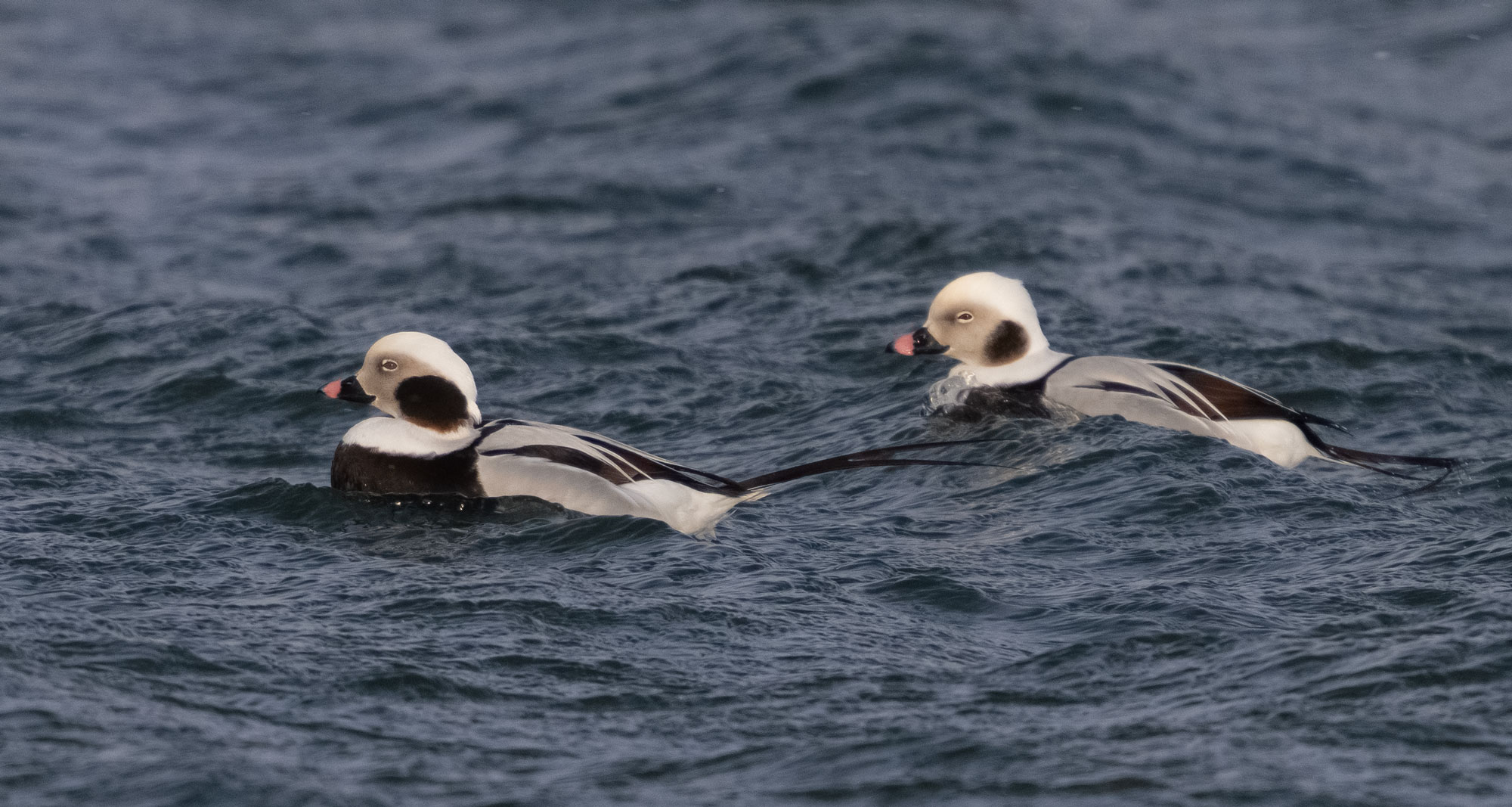 The long-tailed duck (Clangula hyemalis), also known as the coween, is a medium-sized sea duck and the only species in the genus Clangula, making it monotypic with no recognized subspecies. Adults have white underparts, while the rest of their plumage goes through a complex molting process. The male long-tailed duck features a long, pointed tail measuring 10 to 15 cm (3.9 to 5.9 in) and a dark grey bill with a pink band. In winter, the male sports a dark cheek patch on an otherwise white head and neck, along with a dark breast and a mostly white body. The male's plumage darkens on the head, neck, and back during the summer, with a distinctive white cheek patch. The female long-tailed duck has a brown back and a short, pointed tail. In winter, her head and neck are white with a dark crown, while her head turns dark in summer. Juveniles resemble adult females in their autumn plumage, but they have a lighter, less defined cheek patch. These ducks breed on tundra across northern Eurasia in Siberia, Kamchatka, Faroe Islands, Finland, Greenland, Iceland, Norway, Canada, and Alaska. In winter, they are found in seawater in Japan, in the North Pacific Ocean, the North Atlantic Ocean, Hudson Bay, and The Great Lakes, and some are found in the Missouri River. I photographed these two long-tailed ducks while leading my annual Hokkaido Photography Tour.
The long-tailed duck (Clangula hyemalis), also known as the coween, is a medium-sized sea duck and the only species in the genus Clangula, making it monotypic with no recognized subspecies. Adults have white underparts, while the rest of their plumage goes through a complex molting process. The male long-tailed duck features a long, pointed tail measuring 10 to 15 cm (3.9 to 5.9 in) and a dark grey bill with a pink band. In winter, the male sports a dark cheek patch on an otherwise white head and neck, along with a dark breast and a mostly white body. The male's plumage darkens on the head, neck, and back during the summer, with a distinctive white cheek patch. The female long-tailed duck has a brown back and a short, pointed tail. In winter, her head and neck are white with a dark crown, while her head turns dark in summer. Juveniles resemble adult females in their autumn plumage, but they have a lighter, less defined cheek patch. These ducks breed on tundra across northern Eurasia in Siberia, Kamchatka, Faroe Islands, Finland, Greenland, Iceland, Norway, Canada, and Alaska. In winter, they are found in seawater in Japan, in the North Pacific Ocean, the North Atlantic Ocean, Hudson Bay, and The Great Lakes, and some are found in the Missouri River. I photographed these two long-tailed ducks while leading my annual Hokkaido Photography Tour.
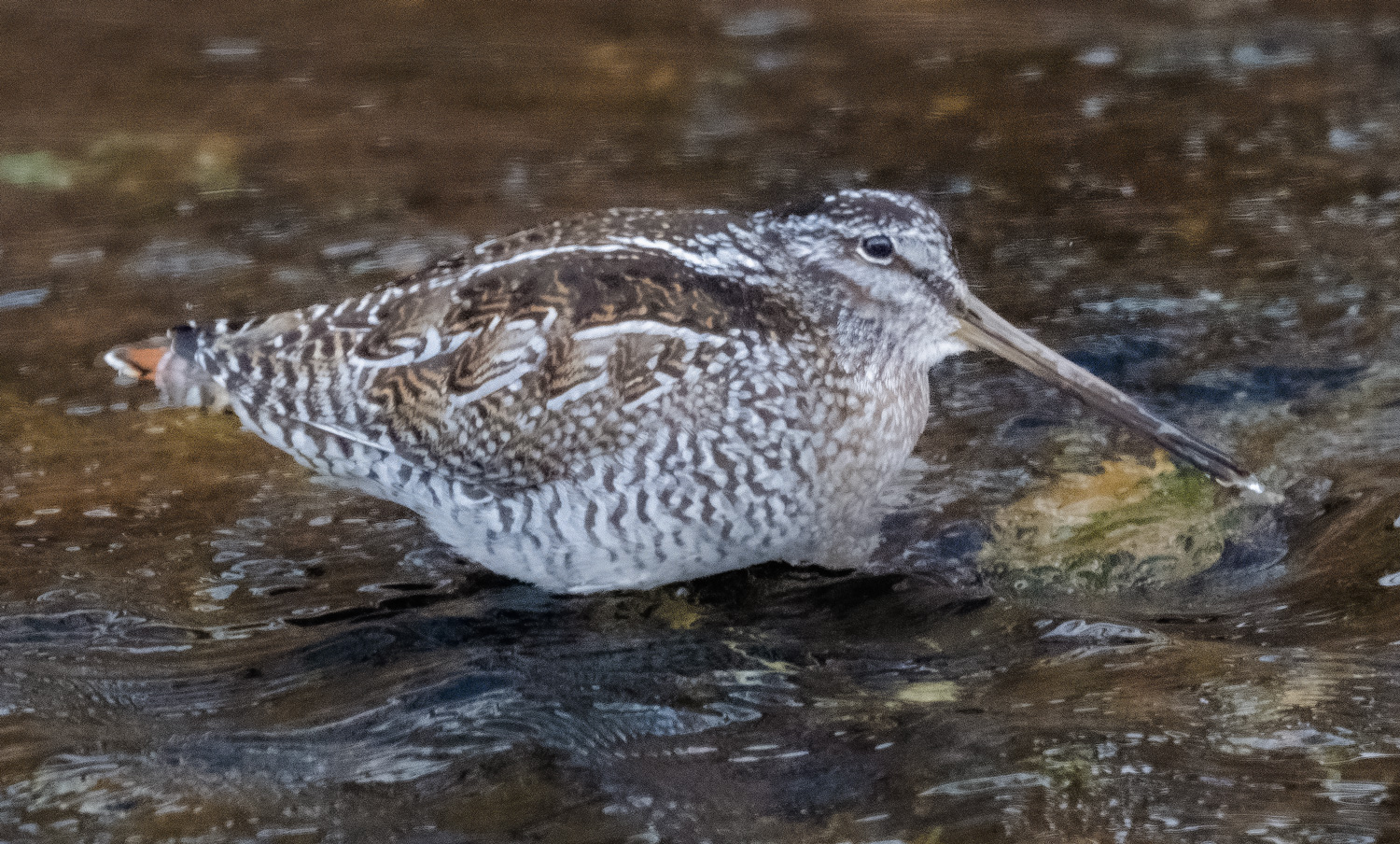 The solitary snipe (Gallinago solitaria) is a small wading bird found in the Palearctic region, stretching from Iran to Japan. These snipes measure between 30 and 32 cm (11 to 12 inches) in length and have a stocky body with relatively short legs, which is unusual for waders. The upper part of their heads is marked with medium brown stripes and has whitish edges, creating streaks that run down their backs. Their breasts are ginger brown, while their bellies are white with brown barring on the flanks. They possess long, straight bills; their legs and feet are olive to yellowish brown. All plumage variations are similar, although females tend to be more vividly marked. I photographed this solitary snipe while leading my annual photography tour in Hokkaido.
The solitary snipe (Gallinago solitaria) is a small wading bird found in the Palearctic region, stretching from Iran to Japan. These snipes measure between 30 and 32 cm (11 to 12 inches) in length and have a stocky body with relatively short legs, which is unusual for waders. The upper part of their heads is marked with medium brown stripes and has whitish edges, creating streaks that run down their backs. Their breasts are ginger brown, while their bellies are white with brown barring on the flanks. They possess long, straight bills; their legs and feet are olive to yellowish brown. All plumage variations are similar, although females tend to be more vividly marked. I photographed this solitary snipe while leading my annual photography tour in Hokkaido.
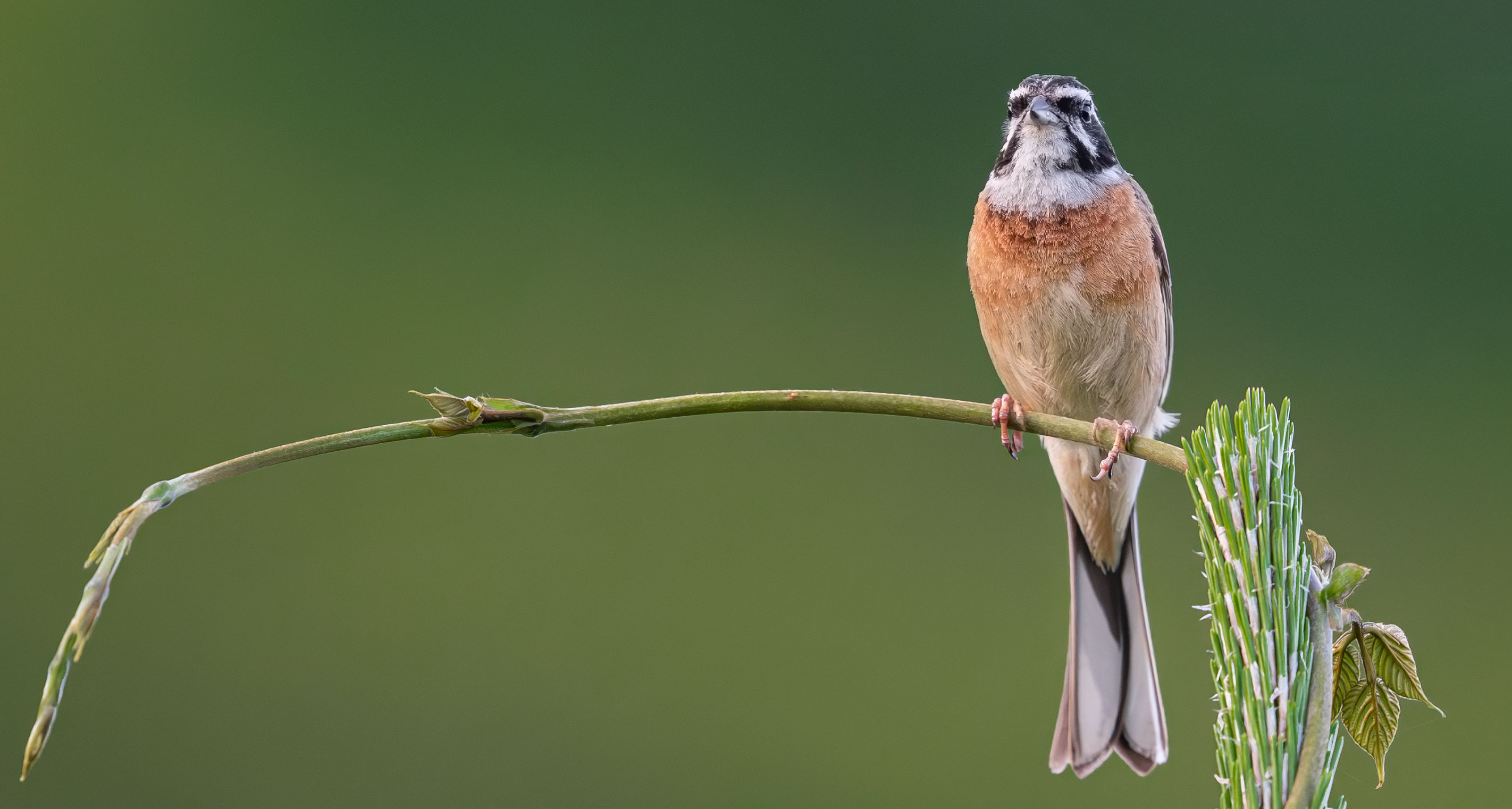 Meadow Bunting (Emberiza cioides) is a large bunting bird. The meadow bunting is 15 to 16.5 cm long, with distinctive face patterns: a dark black ear patch in Japan, and elsewhere across Asia, from Mongolia to Siberia, the patch is brown. These buntings are commonly found in open fields, farmlands, meadows, and forest edges. They are the only buntings in their range to give multiple call notes in a series instead of isolated chips. I photographed this specimen while leading a Niigata birding tour, and I often spot them when leading Hokkaido photo tours.
Meadow Bunting (Emberiza cioides) is a large bunting bird. The meadow bunting is 15 to 16.5 cm long, with distinctive face patterns: a dark black ear patch in Japan, and elsewhere across Asia, from Mongolia to Siberia, the patch is brown. These buntings are commonly found in open fields, farmlands, meadows, and forest edges. They are the only buntings in their range to give multiple call notes in a series instead of isolated chips. I photographed this specimen while leading a Niigata birding tour, and I often spot them when leading Hokkaido photo tours.
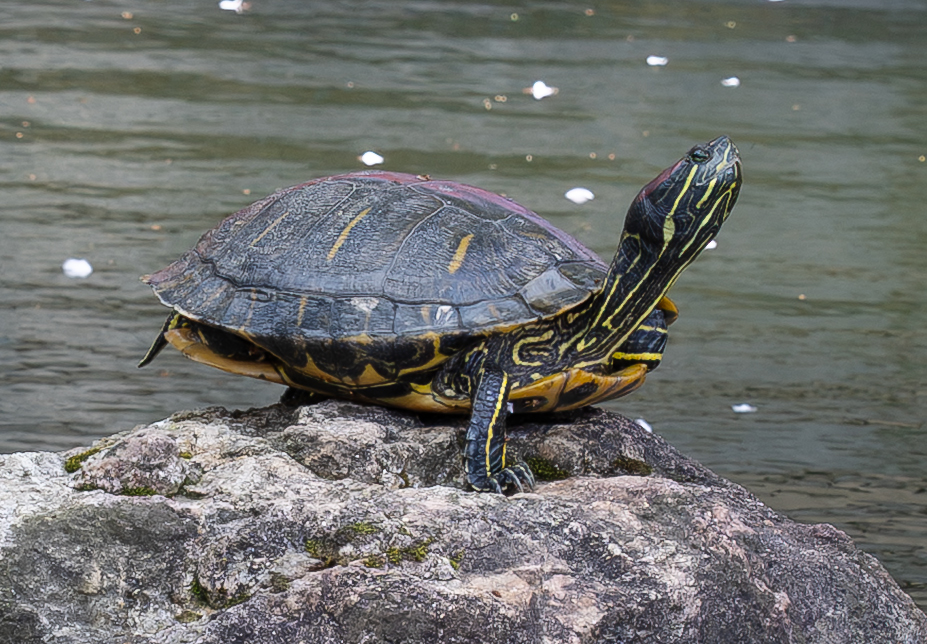 The Red-eared Slider (Trachemys scripta elegans) is an invasive species in Japan, introduced through the pet trade in the 1950s. It has become widespread, outnumbering native turtles by a significant margin, with estimates reaching eight million individuals. This turtle has adapted to various freshwater habitats, such as ponds, drainage ditches, and even rice paddies. This image was taken at an ancient Japanese Buddhist sanctuary pond, not in the wild while leading my annual Spring Photo Tour.
The Red-eared Slider (Trachemys scripta elegans) is an invasive species in Japan, introduced through the pet trade in the 1950s. It has become widespread, outnumbering native turtles by a significant margin, with estimates reaching eight million individuals. This turtle has adapted to various freshwater habitats, such as ponds, drainage ditches, and even rice paddies. This image was taken at an ancient Japanese Buddhist sanctuary pond, not in the wild while leading my annual Spring Photo Tour.
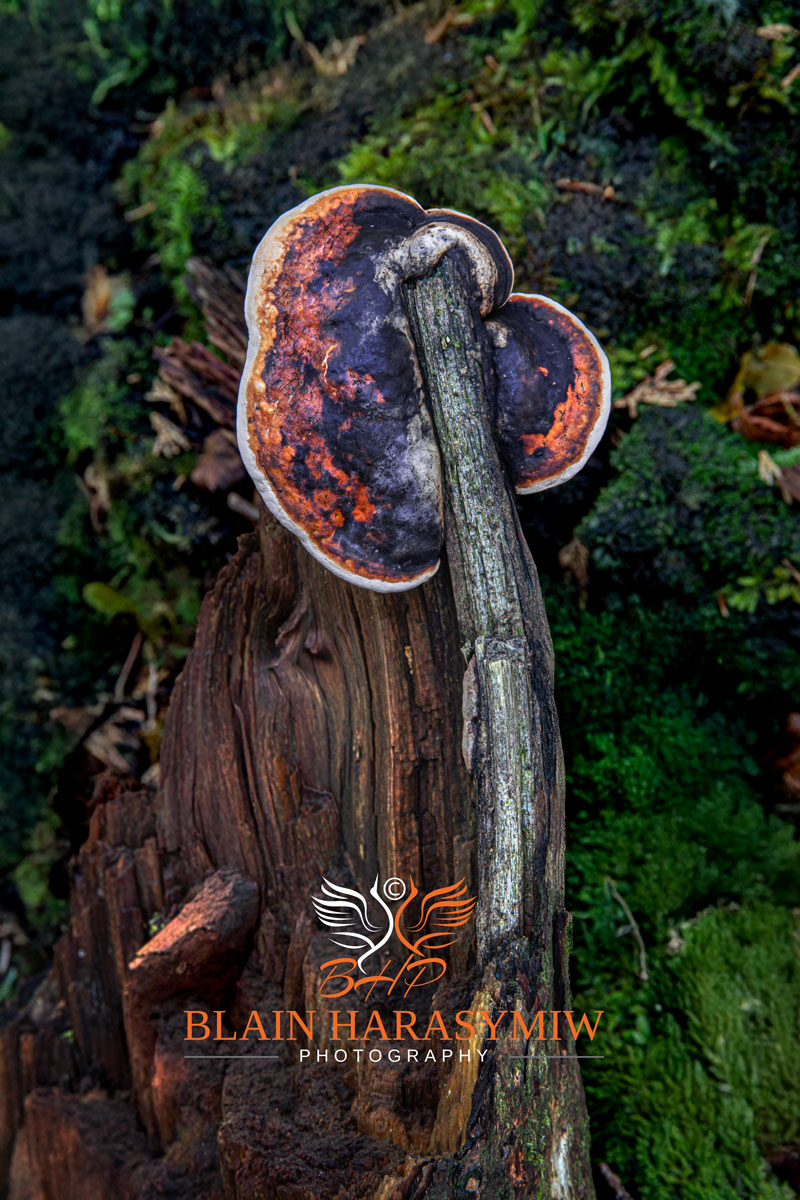 On my recent private photography tour of Mt. Fuji, I explored the Aokigahara forest, known as the Sea of Trees, and discovered the striking Fomitopsis pinicola, or red-belted conk. While this mushroom is visually appealing, it is generally inedible due to its tough texture and bitter taste. Known locally as Tsugasaruno-koshikake, it plays a significant role in Japan's forests and has applications in traditional medicine, with ongoing research into its potential for cancer treatments. The beauty of nature and its hidden wonders truly captivates!
On my recent private photography tour of Mt. Fuji, I explored the Aokigahara forest, known as the Sea of Trees, and discovered the striking Fomitopsis pinicola, or red-belted conk. While this mushroom is visually appealing, it is generally inedible due to its tough texture and bitter taste. Known locally as Tsugasaruno-koshikake, it plays a significant role in Japan's forests and has applications in traditional medicine, with ongoing research into its potential for cancer treatments. The beauty of nature and its hidden wonders truly captivates!
